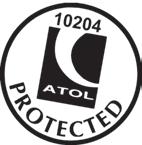ACE CULTURAL TOURS 2025 SUMMER BULLETIN





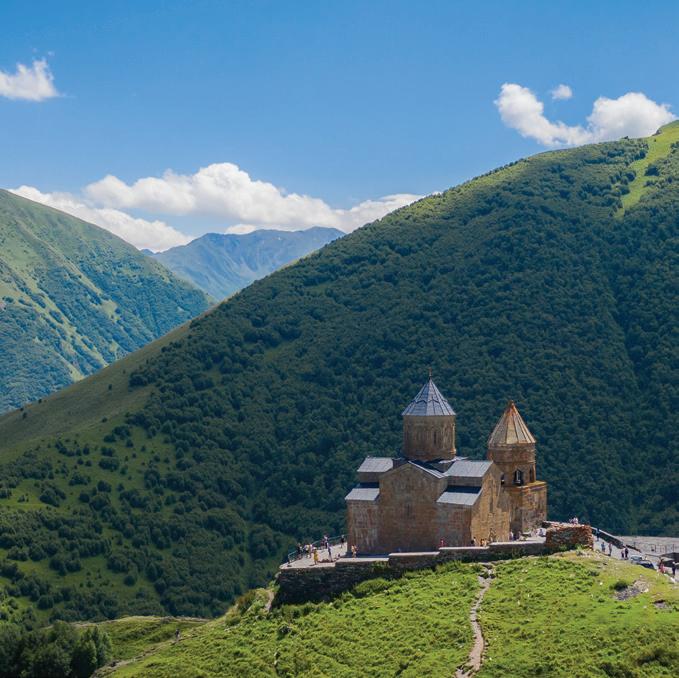
We are delighted to present our Summer Bulletin showcasing a selection of newly-released tours departing throughout 2025.
Our far-flung programme offers some particularly splendid adventures: travellers interested in exploring the cultural breadth and depth of Georgia can do no better than our new Wonders of Georgia tour, led by one of the most experienced specialists in the country’s history and archaeology, Ian Colvin. We will also return to Southeast Asia on a spectacular Mekong Cruise journeying from Ho Chi Minh City to the temples of Angkor. Sinologist Elizabeth Morrell looks forward to a revival of the Chinese Civilisation tour; while Steve Mastin will journey back to Kazakhstan to uncover its Silk Road connections and Norman Foster architecture.
2025 also promises to be a fantastic year for music, taking in some of the best opera houses and concert venues in the world, from Berlin’s Staatsoper Unter den Linden to New York’s iconic Met. The quality of the performances at the world-famous Mozart Festival in Salzburg cannot be bettered; while in sunlit Provence award-winning pianist Emilie Capulet will draw connections between art and music as we attend public performances and private recitals alongside gallery visits and wine tastings. Also exploring connections, the returning Danube Cruise will involve multiple Tour Directors in a feast of music, art, history and culture.
Closer to home, travellers can choose from an equally tempting line-up including a revival of our Shakespeare tour, brand new departures investigating rebellion in East Anglia and the Fenland abbeys, and itineraries taking in the art of Yorkshire, Suffolk and Scotland. 2025 will mark the 250th anniversary of Jane Austen’s birth, and a specially crafted tour led by historian Suzanne Fagence Cooper will take place in October, including a new exhibition dedicated to Jane’s life at The Arc in Winchester.
We begin with our archaeology collection, which whisks travellers to destinations in the UK, Europe and beyond, from Orkney and Hadrian’s Wall to Greece, Cyprus and Sicily. We hope you find your next cultural adventure within these pages, and look forward to welcoming you on tour in 2025.
The full schedule can be found on pages 100–102, and we invite you to register your interest in tours not yet on sale to receive the full details by email as soon as they are available. To register your interest, please complete the form on our website, contact the ACE Cultural Tours office on 01223 841055 or email sales@aceculturaltours.co.uk

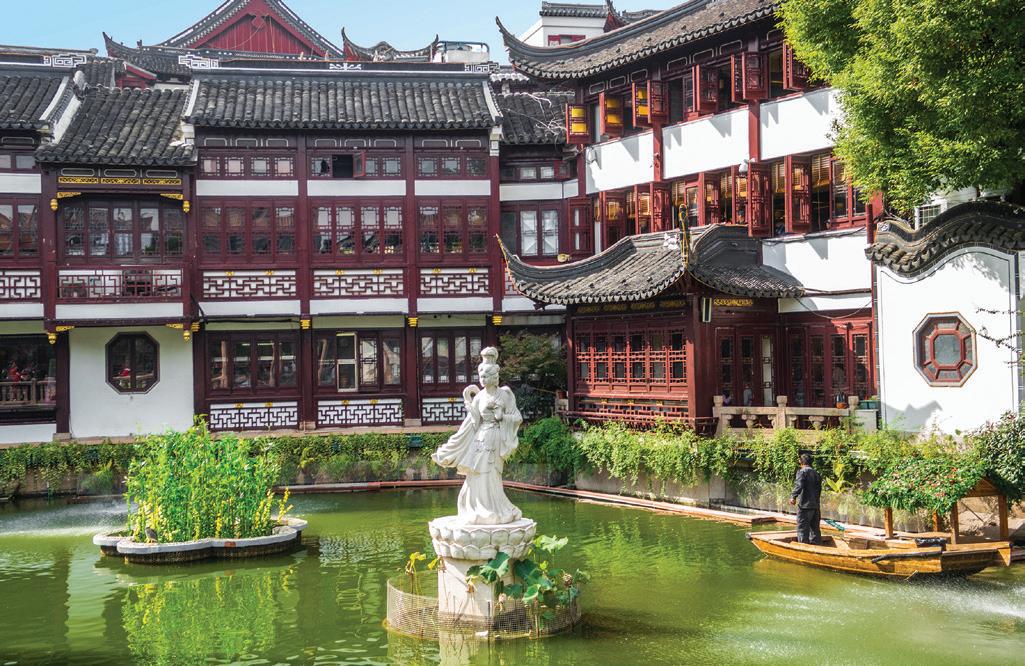
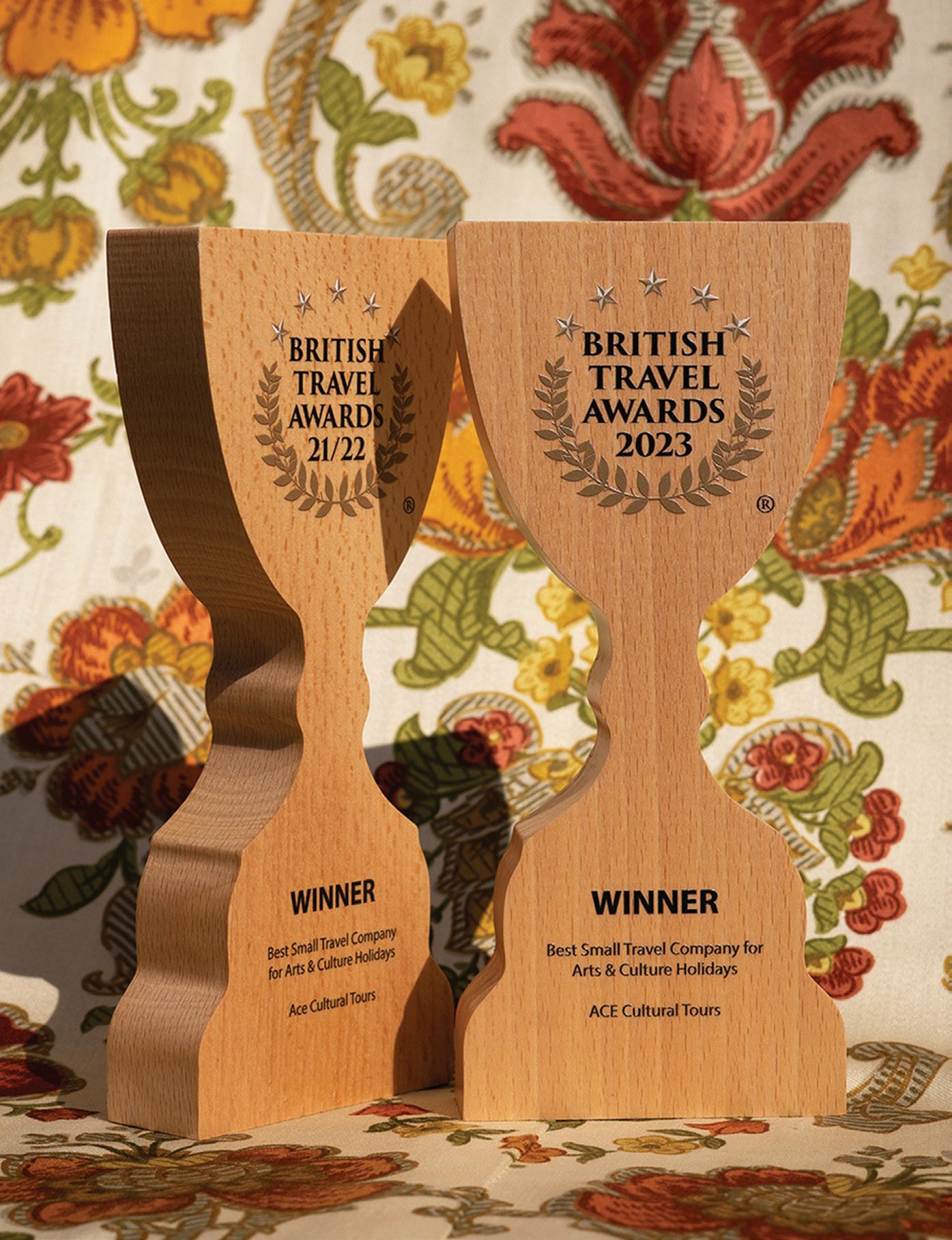
FEEFO
Earlier this year, ACE Cultural Tours once again received a Feefo Platinum Trusted Service Award for our customer service in 2023, having won the same badge in 2022. Feefo is an independent feedback platform which allows customers to publicly rate and review businesses based on the service and experience they received. To win the Platinum award, a company must achieve a Feefo service rating of at least 4.5 out of 5 for three consecutive years. We send an invitation to leave an online Feefo review to everyone
who joins one of our tours, and so we are enormously proud to have achieved such positive results. We are extremely grateful to those who have left us a review, and we continue to aim for an exceptional customer experience throughout our whole tour process – from the moment you make a booking, to the end of a tour.

The British Travel Awards is the UK’s largest awards programme in the travel business, where each year, customers vote for their favourite travel companies across a range of categories. ACE Cultural Tours is delighted to have won Gold at the British Travel Awards for the past two years running, in the category of ‘Best Small Travel Company for Arts & Culture Holidays’, and we are enormously grateful for all the support we received to achieve this accolade.
We are in the running again this year, and voting is now open. If you would like to vote for us, please visit our website for instructions at: aceculturaltours.co.uk/vote
Voting closes on October 1, 2024. Please note that voting can only be done online through the British Travel Awards website.
We would like to take this opportunity to thank you all sincerely for your continued interest in ACE Cultural Tours, and we very much look forward to welcoming you on your next tour.

“All administration was quick and efficient prior to departure. The ACE information pack is of high quality and well-presented. The planning of the programme of activities for the tour was well-thought out, varied and very impressive. The Tour Director and the Tour Manager could not have been bettered. This was my first experience of a tour abroad with ACE and I shall certainly be looking to book with ACE again... I feel that ACE, as a company, was genuinely trying to provide the best possible experience for their customers. I could not be more satisfied. Thank you”

Tucked away behind the studios in the stable block at Stapleford Granary (home to ACE Cultural Tours) is a small orchard with a big history.
Overlooking the Granary Brook, which is part of the River Granta chalk stream ecosystem, is our Heritage Orchard. Dating back to the 1930s, the fruit grown here was eaten at High Table at Corpus Christi College in the University of Cambridge, which used to own our site.
When The Association for Cultural Exchange acquired the site at Stapleford Granary from Corpus Christi College in 2009, some initial work was undertaken to manage the overgrown fruit trees in the orchard. Those that couldn’t be saved were cut down, and the wood left to decay to provide a home for frogs and insects. In 2014, some replacement fruit trees were planted, using old and/or local varieties with a view to recreating how the orchard might have been in the 1930s.
During the pandemic and the near total shutdown of Stapleford Granary, the orchard and the adjacent brook had
once again become overgrown. While on the one hand this was leaving the natural habitat undisturbed, much of the overgrowth was blocking light from the brook and stifling the vegetation that would best support the widest range of fauna and flora.
Over last winter 2023-24, we started a conservation project to manage the surviving trees in the orchard and to do
our bit to protect the rare chalk stream habitat which borders our land. Much recent publicity has focused on the threat to the chalk streams in the UK due to human intervention and climate change. We took advice from conservationists, environmentalists and commissioned a site survey from our local Wildlife Trust to ensure that our clearance work would have the most beneficial effect. By the time the bird nesting season began in the
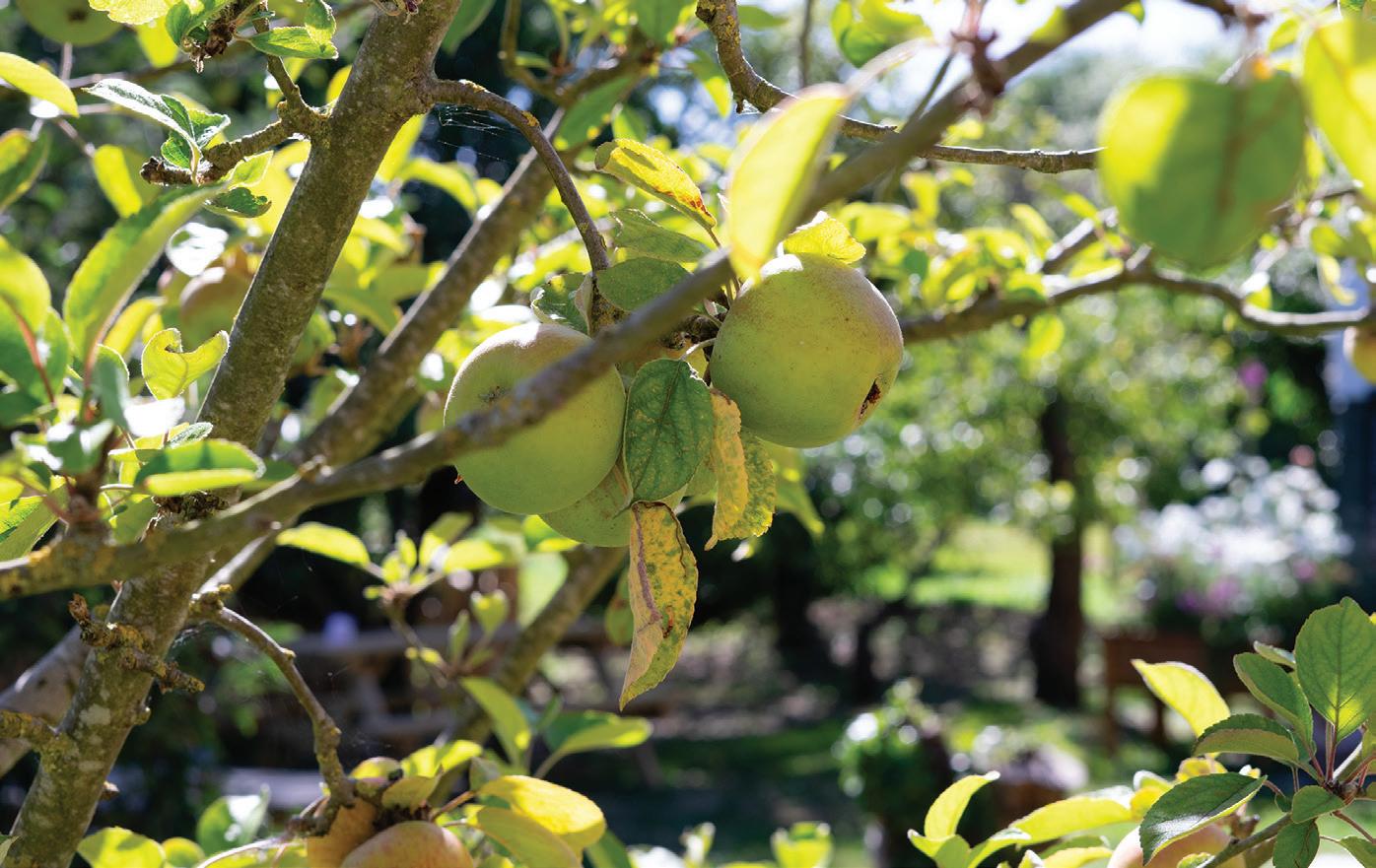

spring and work halted, we had managed to clear much of the Granary’s historic cart wash and also remove overgrowth from the bank of the brook. The heavy rain over the winter and spring meant that the water level in the brook was the highest recorded for many years.
Within the orchard, specialist fruit growers have helped to identify the heritage trees. Apple varieties include
D’Arcy Spice, which was first bred in Essex in the mid-18th century. It was highly valued for its long storage qualities that allowed it to develop a ‘sweet spice’ flavour. Chivers Delight was bred in Histon, just outside Cambridge, in the 1920s by jam-makers Chivers & Sons. This lovely, sweet apple was much in favour in the early part of the 20th century. It is still grown commercially today for apple sauce. We also have some elderly varieties of plum and pear trees and an old grape vine (variety Dusty Miller – very much in keeping with its Granary history).
Orchards might just be one of our most successful collaborations with nature. They never occur by accident; they are always cultivated by humans. They are of critical importance for encouraging biodiversity, but they are disappearing at a catastrophic rate. To encourage visitors to Stapleford Granary to take an interest in the natural world of our site, we opened the Heritage Orchard to the public during the summer. The continuing wet weather meant that, for once, the brook had not dried out to a boggy ditch. To avoid accidents, a wonderful artisanal picket fence was built for us from coppiced sweet chestnut trees. This natural timber is a genuinely renewable resource. The wood is untreated so there are no chemicals to leach into the fragile habitat of the brook.
Throughout the summer, visitors have been invited to pull out a rug, take a set at our picnic benches and enjoy refreshments from our beautifully restored horse box.
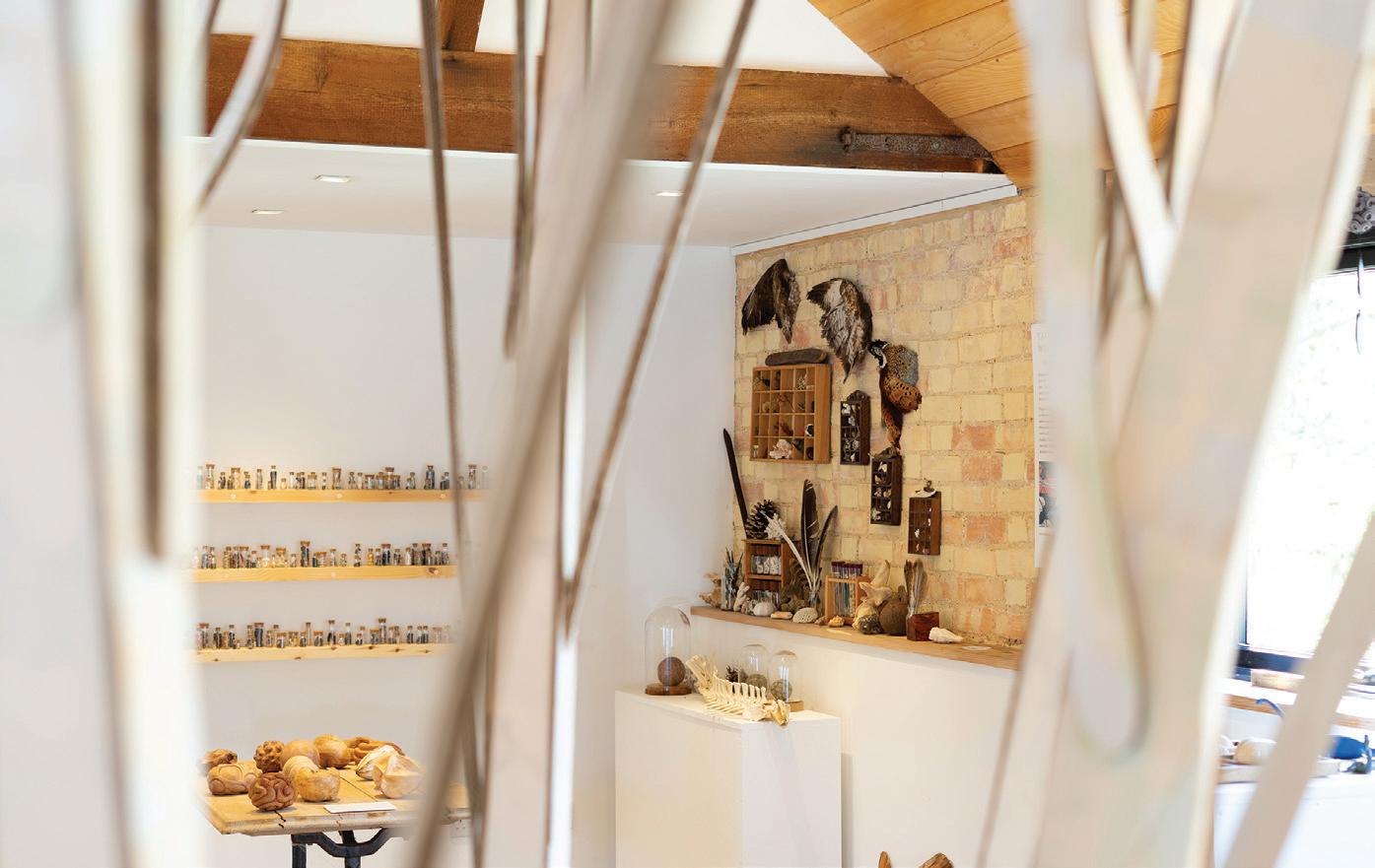
To coincide with the opening of the orchard, and to illustrate how art and nature intertwine, we created a Discovery Room. Our aim was to explain the landscape on our doorstep with interactive displays about the natural world.
Visitors have been able to listen to our Twittering Boxes before seeing if they can hear the same bird song outside in the orchard. Chloe Chapman is an emerging young artist who has made her passion for collecting into an extraordinary art form. ‘A Curious Collection’ is an exquisite exhibition of tiny glass vials containing natural finds, reminiscent of a Victorian cabinet of curiosities. It is shown alongside Chloe’s sculptural works in wood, clay and felt which reflect the natural forms in her collection.
The centrepiece of the Discovery Room is a multi-stemmed silver birch tree. It has been created by Peter Baldry, a professional cardboard artist who works mainly in museums and schools. Blending artistry, imagination and engineering, the model references the many silver birch trees growing at the Granary.
Cultivating cultural curiosity in natural history, conservation and the environment are among the charitable objectives of The Association for Cultural Exchange, the registered charity which owns and operates Stapleford Granary and wholly owns ACE Cultural Tours. While our cultural tourists visit destinations all over the world, we also believe that charity begins at home. We take seriously our responsibility to ensure that our environmental footprint is as small as possible and that we are properly conserving the natural world that we occupy.
For further information see our websites www.acecx.org and www.staplefordgranary.org.uk
MARK SANDERS Chair, Trustee Board
July 2024

“Archaeology holds the keys to understanding who we are and where we come from”
– Sarah Parcak, American archaeologist and Egyptologist
By definition, archaeology is the study of human history through the excavation of sites and the analysis of artefacts and human remains. It is the footprint and the stepping stones to understanding not only what was but how we, as cultures and people, developed from the earliest known primitive ancestors through to some of the greatest civilisations around the world.
Traces of our past are dotted across our landscapes, whether it is treading the boundaries of Hadrian’s Wall, the northernmost frontier of the Roman Empire in Britannia, or voyaging around the Mediterranean, home to some of the earliest societies in the west. In 2025 ACE groups will be able to engage with the questions of the past and stand in place of bygone eras while uncovering ancient stories with our collection of archaeology tours.
“It soon became obvious that we were but on the threshold of discovery”
– Howard Carter, British archaeologist and Egyptologist
Archaeology can be found everywhere. It can be found on the slopes and caverns of Britain and mainland Europe, the waters and deserts of the ‘Cradle of Civilisation’ in the Middle East and Africa, to further afield in the seas, rivers and mountains of the Americas and Asia.
ACE archaeology tours are carefully planned to enable participants the opportunity to experience recognised sites as well as more obscure areas of study. For example, we look forward to a comprehensive tour of Georgia, a country overflowing with historical gems and stunning landscapes, while, in Asia, ACE
will cruise along the Mekong Delta to gain unique insights into the archaeology and culture of Vietnam and Cambodia.
Turning our gaze to the Mediterranean, the Colosseum in Rome, the largest ancient amphitheatre ever built, and Luxor and Karnak in Egypt, the two primary temples on the east bank of Thebes, and Vergina, where Alexander the Great was crowned, illuminate how the remains of these unwieldy structures shaped modern society and formations.
Neolithic artefacts scattered around Britain and Ireland allow us to delve into the early past of the ancient world with celestial aligned megaliths, villages lost to time and inconspicuous tombs hidden beneath stunning landscapes and rolling hills.
History will tell you it is written by the victors. By the rulers and the educated. However, through ACE archaeological tours, participants will delve deeper into the lives of the average person – from the craftsmen and the slaves to the mothers, children and families that made up the backbones of their communities. When considering a site, it can be hard to imagine what once stood or how a rock in a field ever amounted to a great nation. With ACE you will be guided through terrains with experts to bring to life the narrative of the past.
“I remember going to the Pompeii laboratory and looking at some of the casts, and the staff at the laboratory – the people who are doing the reconstructions and the renovations – gave me the year-old baby to hold, the one found in the house of Fabius Rufus, I think… You’re holding not just a being, but you’re holding a whole narrative there.You’re holding the connection to the past, which I’m always looking for”
– Tour Director Eireann Marshall
May 6–20, 2025
Undertake a once-in-a-lifetime adventure journeying from Tbilisi to Batumi via Bolnisi, Mtskheta, Kutaisi and Mestia
Highlights will include the fascinating Ananuri Fortress Complex, the medieval Gelati Monastery and Nokalakevi archaeological site
Visit Ushguli, one of the highest continually inhabited settlements in Europe, surrounded by Georgia’s awe-inspiring landscape
In May 2025, ACE invites you to join our newly crafted cultural adventure exploring the breathtaking country of Georgia. Designed to give travellers the very best experience of this rich and wonderful land, there is no more comprehensive tour, which weaves together Georgia’s ancient history and archaeology, art and architecture, modern history and cultural and religious heritage – from gastronomy to music.
Spending our first five days in and around the capital, we will delve into

This tour will be led by Ian Colvin , an expert in the late Roman and Byzantine history of the Caucasus regions. Ian has extensive experience leading tours to Armenia, Georgia, Turkey and the southern Balkans. He trained as a historian and Byzantinist at Oxford in the 1990s, specialising in late Antiquity and the Roman Eastern Frontier. He later moved to the University of Cambridge to become a researcher with the Cambridge School Classics Project, before establishing an archaeological excavation at Nokalakevi in collaboration with the Georgian National Museum, which continues to this day.

Tbilisi’s fascinating historical quarters – from the ancient bathhouse district to Sameba (Holy Trinity) Cathedral, resplendent with traditionally-inspired decoration.
We will make a day trip to the Kakheti region for the Tsinandali Estate, nestled in Georgia’s wine-making country, an industry dating back over 8000 years. The Palace of King Erekle II served as the royal residence in the 17th and 18th centuries and now houses an impressive museum. Another day trip will take us to Bolnisi, home to the oldest dated Christian structure in Georgia as well as an excellent new museum showcasing the country’s ancient history from the Chalcolithic to the Middle Ages.
Our journey then takes us north to the village of Stepantsminda (Kazbegi), renowned for its stunning mountainous backdrop and 14th century Gergeti Trinity Church, which famously gazes out across the clouds and snow-capped Caucasus. Returning south, we will stop at the fascinating Ananuri Fortress Complex, a classic example of Georgian architecture located at the crossroads of trade routes, and the ancient rock-hewn town of Uplistsikhe.
Following an overnight stay at Nika Vacheishvili’s charming guest house and winery, we continue west to Kutaisi for Gelati Monastery – one of Georgia’s first monastic complexes, typifying the
‘Georgian Golden Age’ – and Bagrati Cathedral. We will also discover the archaeological site of Nokalakevi, occupied during the Hellenistic, Roman and Byzantine eras.
UNESCO-recognised Ushguli comprises several ancient villages and is surrounded by an astoundingly beautiful landscape. While in Mestia, in the country’s northwest, we also hope to experience an evening of Georgian polyphony performed by the Svan, an ethnic subgroup living mainly in this part of the country.
Our tour ends in Georgia’s second largest city of Batumi, with an excursion to the settlement of Gonio and its Roman fortress.
FITNESS / PRACTICALITIES: A very good level of fitness, mobility and stamina is required for this tour, and participants should meet ACE’s fitness criteria, as outlined in our Booking Terms & Conditions. Some visits will involve moderate amounts of time spent walking, including up steps and over uneven ground, including on our tour of Tbilisi and at the archaeological site of Uplistsikhe (although there is an option to remain in the museum if preferred). Customers should also be comfortable undertaking some long coach journeys and days spent travelling, including (but not limited to) the day excursion to Bolnisi, and riding in 4x4s for certain visits. The ACE office is happy to provide more detail if you wish.

Please note that the itinerary represents a guide to what we hope to offer, and some elements may be subject to change or confirmation nearer the time.
Day 1 Depart London Heathrow 0655 on Lufthansa via Munich, arriving Tbilisi 1710. Transfer to Tbilisi Marriott Hotel for five nights.
Day 2 Welcome and introductory lecture, followed by walking tour of Tbilisi including Metekhi, Abanotubani, Old Tbilisi, caravanserais, Sioni Cathedral, Bridge of Peace and Anchiskhati Basilica. Afternoon: Sameba Cathedral and private performance of Georgian polyphony.
Our Accommodation
Echoing the breadth and richness of the tour’s content, our itinerary includes six different hotel stays of a high quality and character. Opened in 1915, the Tbilisi Marriott Hotel is an outstanding five-star property with a beautiful façade, located next door to the National Gallery. In Kazbegi we will stay at Rooms Hotel, a luxurious four-star establishment offering wonderful views. Nika Vacheishvili’s Guest House in Didi Ateni, is tucked away between mountains and vineyards: this small family-run winery will make for a charming oasis for our overnight stay near Gori. We will stay in hotels of a four or five-star quality in our final three centres of Kutaisi, Mestia and Batumi.
Day 3 Morning visits in Tbilisi: Open Air Museum of Ethnography and Georgian National Museum (Simon Janashia Museum of Georgia). Free afternoon with option to visit the National Gallery. Evening: private classical concert at the Mose Toidze House Museum.
Day 4 Whole day excursion to the Kakheti region (via Gombori Pass): Tsinandali Estate (lunch and wine tasting) and Telavi for Palace of King Erekle II and History Museum.
Day 5 Whole day excursion to Bolnisi including basilica and museum. Afternoon visit to Betania Monastery (time permitting).
Day 6 Transfer to Kazbegi via Jvari Monastery and Mtskheta (Svetitskhoveli Cathedral and Samtavro Convent). Two nights at Rooms Hotel, Kazbegi.
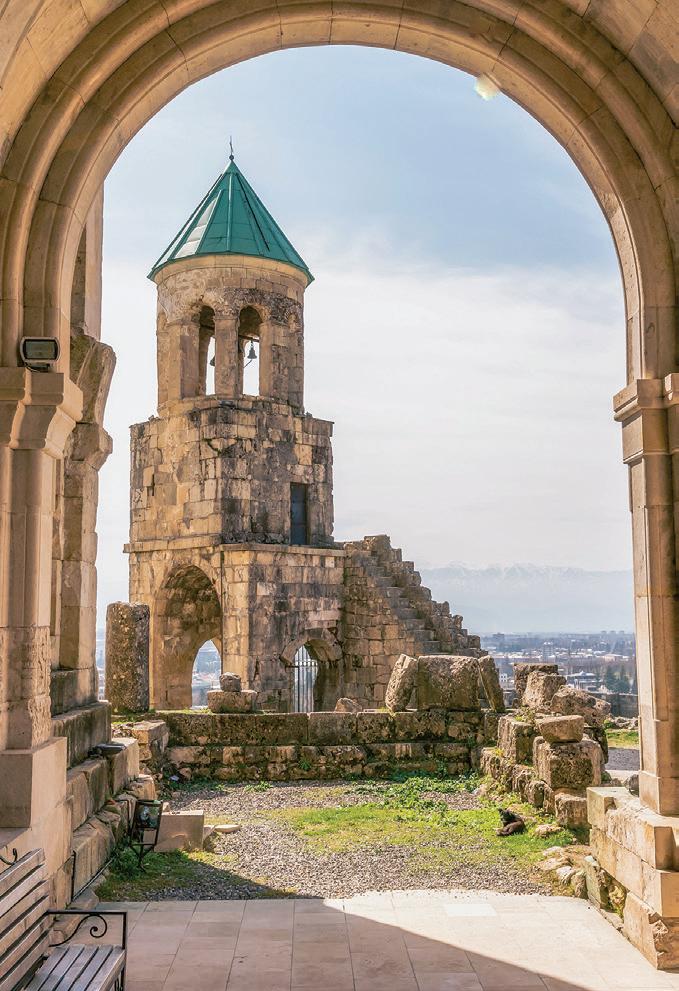
Day 7 Morning: Gergeti Trinity Church (by 4x4s). Afternoon: Darial Gorge and Sioni Church. Evening lecture: Georgia & the Eurasian Steppe.
Day 8 Ananuri Fortress Complex, Uplistsikhe and Stalin Museum, Gori. Overnight at Nika Vacheishvili’s Guest House.
Day 9 Visit to Ateni Church, followed by Kutaisi for Gelati Monastery and Bagrati Cathedral. Two nights at hotel in Kutaisi.
Day 10 Optional early morning walking tour of Kutaisi city centre and market, followed by visits to Vani Archaeological Museum and Nokalakevi.
Day 11 Transfer to Mestia via Enguri hydroelectric dam and Matskhvarishi Church, Lalati. Two nights at hotel in Mestia.
Day 12 Morning visit by 4x4s to Ushguli: Lamaria Church. Afternoon: Mestia Museum. Evening performance of Georgian polyphony by the Svan people (based in northwest Georgia).
Day 13 Transfer to Batumi via Dadiani Palace Museum, Zugdidi. Two nights at hotel in Batumi.
Day 14 Walking tour of Batumi followed by excursion to Gonio for Apsarus. Concluding lecture: 12 influences that made Georgia.
Day 15 Depart Batumi 1035 on Turkish Airlines via Istanbul, arriving Heathrow 1505.
Cost of £6795 includes: return airfare, accommodation based on sharing a twin or double bedded room, fourteen breakfasts, eleven lunches, fourteen dinners with water & coffee, excursions & admissions, gratuities & all taxes. Not included: travel insurance, double room for single use supplement £845. TOUR CODE: GEOR25
May 21–31, 2025 | October 30 – November 9, 2025
Delve into Cyprus’s fascinating ancient history with visits to an array of archaeological sites and museums
Examine the island’s historic role in the interaction between the cultures of Europe and the Middle East
Explore the UNESCO-listed southern sector sites of Paphos and Choirokoitia, whilst highlights of the northern sector include the mountaintop St Hilarion Castle and the ancient site of Salamis
From prehistoric times onwards, Cyprus has either been contested by invaders or influenced by traders from Anatolia, Greece, Syria, Phoenicia and Egypt. The activities of collectors and archaeologists have filled museums (both in Cyprus and elsewhere) with a rich array of artefacts that reflect the island’s diverse history.
During the classical period, the settlement of Cyprus was essentially
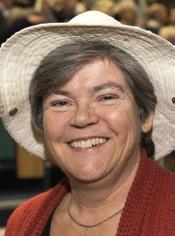
This tour will be led by Gillian Hovell , BA (Hons), an ancient historian and archaeologist with expertise spanning the Neolithic to Roman Britain and the Greek and Roman Mediterranean. Gillian actively digs at major sites in the UK and Europe, from Orkney to Pompeii, and is also an experienced tour leader and lecturer, regularly delivering talks for the Arts Society and at museums including the British Museum and the Ashmolean. An award-winning writer, she has given several TV, radio and podcast interviews and also runs online courses in archaeology, ancient history and Latin as ‘The Muddy Archaeologist’. Gillian is currently working on a guide to the archaeological sites of the Mediterranean.

“Extremely interesting tour”
– ACE customer on a previous archaeological tour to Cyprus
Greek in character, and so it remained throughout the Roman era. With the advent of Islam, Cyprus became a contested border zone, and today a wide range of archaeological sites, monuments and museum collections represent the island’s varied heritage.
Our journey will begin in the southern (Greek) sector, which holds some outstanding sites, including the exceptional classical remains at Kourion and Paphos, whose Roman mosaics are among the most impressive in the world. All of these are set against a beautiful landscape, including many sandy beaches.
From a base in Limassol, we will explore the site of Amathous, as well as the collections of the Limassol District Archaeological Museum, before making an excursion to Kalavasos-Tenta archaeological site and the neolithic settlement of Choirokoitia. Larnaca contains the Roman-style Ottoman Kamares aqueduct, and is home to the fascinating Kition archaeological site.
We will continue via the archaeological site of Tamassos to the divided capital
Nicosia, enclosed in its ring of 16th century walls, to explore both its monuments and its museums. As we venture further into the northern territories, we will discover the mountaintop St Hilarion Castle; the beautiful Bellapais Abbey, made famous by the writing of Lawrence Durrell; and the fortified Kyrenia Castle on the island’s northern seafront (which also houses the famous Kyrenia ship of c 300 BCE). A second excursion to the Turkish-occupied sector will take us to the impressive site of ancient Salamis.
Our first base will be in Paphos, at the four-star Hotel Aquamare, located close to the beachfront. We will then move to the four-star Poseidonia Beach Hotel in Limassol and the comfortable three-star Centrum Hotel in Nicosia.
FITNESS / PRACTICALITIES: Please note that this tour requires a good level of fitness, as it will involve a significant amount of walking and standing, including over uneven terrain at archaeological sites. Care must be taken at the sites, particularly when traversing staircases and steps – in particular, at St Hilarion Castle, where the ascent to the uppermost parts involves long, steep flights of steps which can be slippery and do not always have handrails available. Weather conditions may be warm, and some days have longer coach journeys. Furthermore, some interiors can be dimly lit. Please consult ACE’s usual fitness requirements in our Booking Terms & Conditions.

Please note that the itinerary represents a guide to what we hope to offer, and some elements may be subject to change or confirmation nearer the time.
Day 1 Depart London Heathrow 0905 on British Airways, arriving Larnaca 1545. Transfer to Paphos for three nights at Hotel Aquamare.
Day 2 Morning introductory lecture followed by visit to Paphos District Archaeological Museum. Afternoon: Archaeological Park in Paphos (Roman mosaics).
Day 3 Morning in Yeroskipou: Ethnographic Museum. Afternoon: Kouklia (Old Paphos) archaeological site including Sanctuary of Aphrodite and museum, followed by Hellenistic ‘Tombs of the Kings’ in Paphos. Evening lecture: Hellenistic/Roman Cyprus.
Day 4 Kourion archaeological site, Sanctuary of Apollo Hylates and stadium followed by Kolossi Castle (former headquarters of the Knights Hospitaller in Cyprus). Transfer to Limassol for three nights at the Poseidonia Beach Hotel.
Day 5 Morning: Amathous archaeological site. Afternoon: Limassol District Archaeological Museum. Evening lecture: Neolithic Cyprus.
Day 6 Morning: Kalavasos-Tenta archaeological site. Afternoon: Choirokoitia neolithic settlement (UNESCO World Heritage site).
Day 7 Transfer to Larnaca for District Archaeological Museum and Kition archaeological site. Afternoon: Tamassos archaeological site. Continue to Nicosia for four nights at Centrum Hotel.
Day 8 Visits in Nicosia: Cyprus Museum, Church of Agios Ioannis, House of Hadjigeorgakis
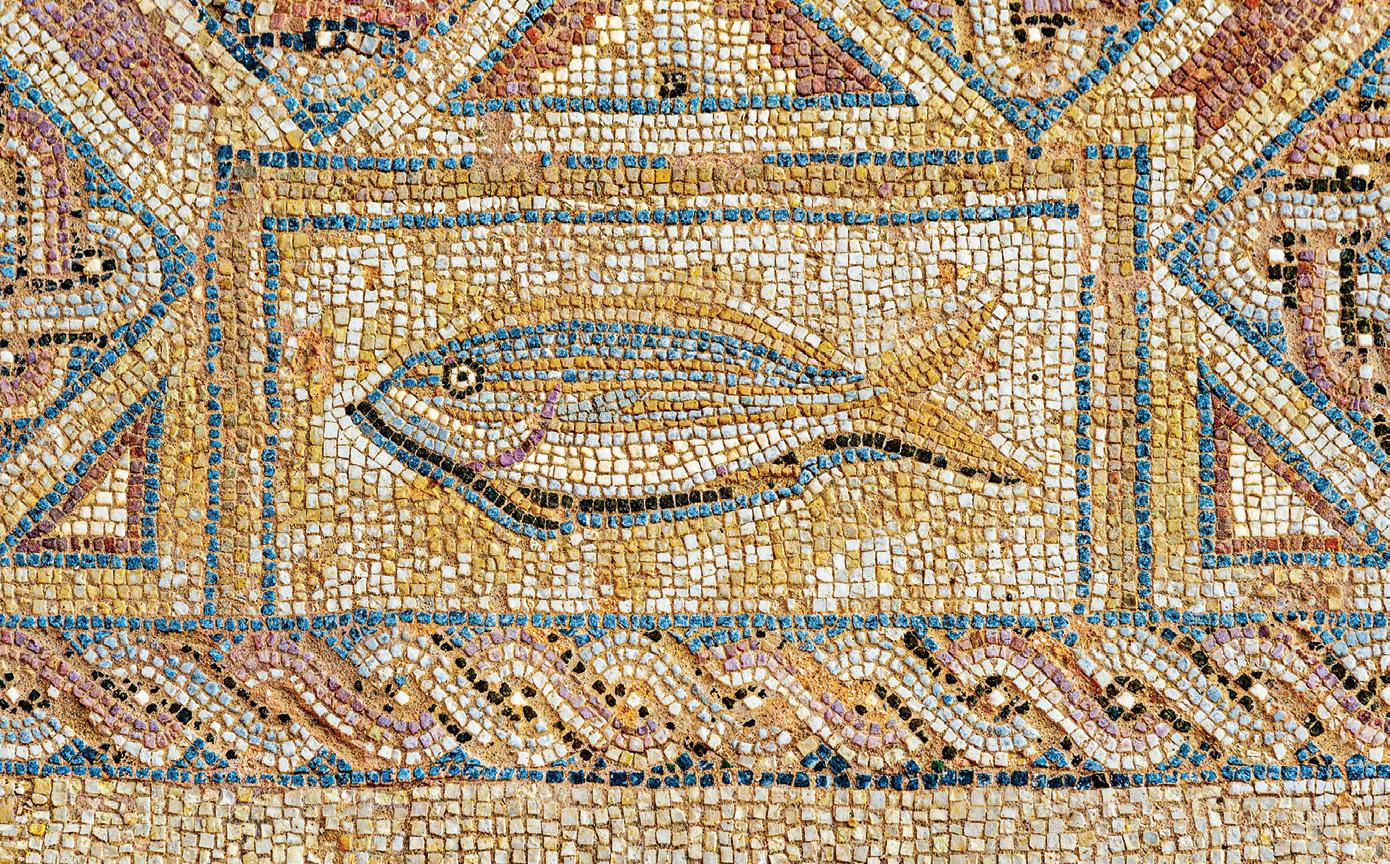
“Gillian’s engaging manner and profound knowledge of the subject she was sharing with us made it a fascinating and informative experience”
– Attendee at a lecture given by Gillian Hovell
Kornesios, Selimiye Mosque (formerly Cathedral of St Sophia – exterior; possible restricted view as under restoration), Bedesten (Church of St Nicholas – exterior) and Büyük Han (Ottoman caravanserai).
Day 9 Northern Cyprus: St Hilarion Castle (mountaintop fortress) and Bellapais Abbey (probably the finest surviving Gothic monument in Cyprus). Afternoon: Kyrenia (castle and shipwreck museum).
Day 10 Morning: ancient Greek city of Salamis. Afternoon: Enkomi ancient site.
Day 11 Morning: Pieredes Museum, Larnaca (exhibits ranging from the Bronze Age to Greek and Roman glassware – visit subject to final flight times). Depart Larnaca 1750, arriving Heathrow 2050.
Cost of May departure: £3395
Cost of October/November departure: £3495
Cost includes: return airfare, accommodation based on sharing a twin or double bedded room, ten breakfasts, eight lunches, ten dinners with wine, water & coffee, excursions & admissions, gratuities & all taxes.
Not included: travel insurance, double room for single use supplement £335. TOUR CODE: ACY125 / ACY225
June 9–21, 2025
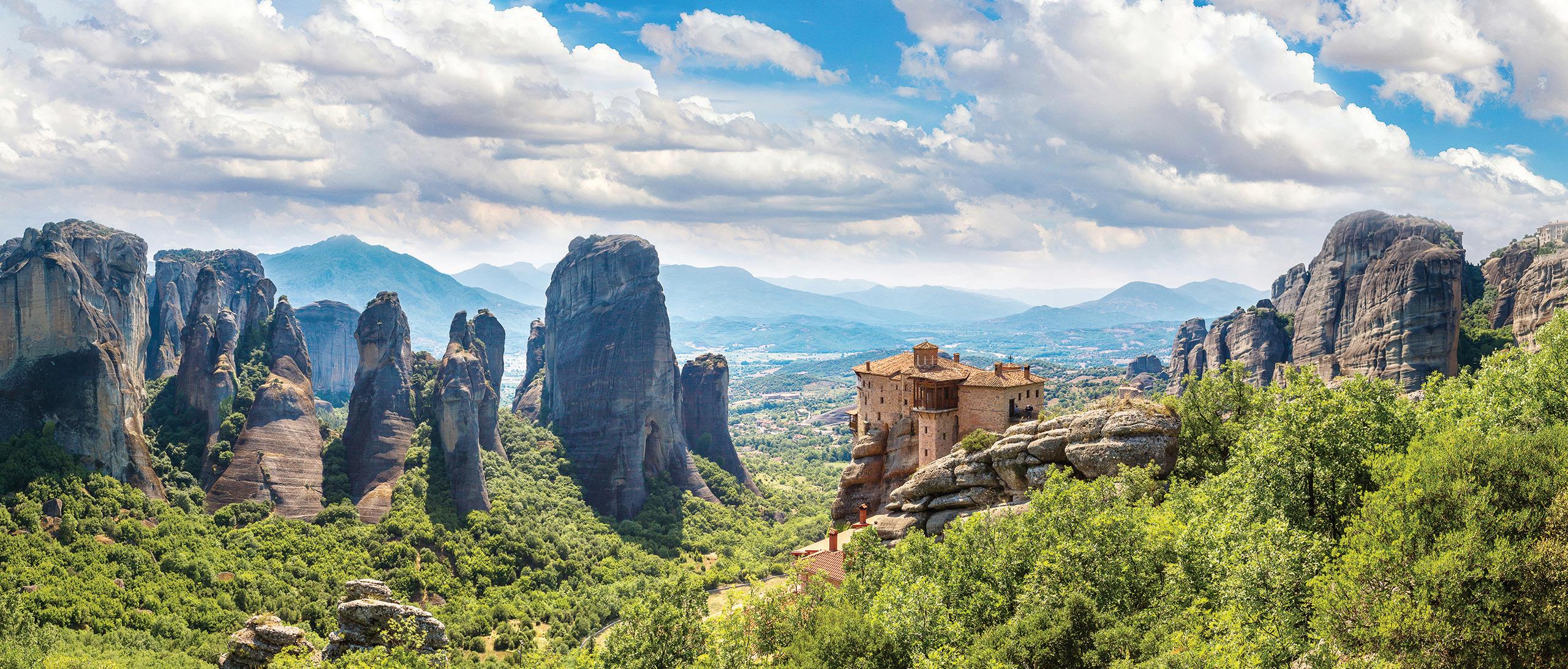
Explore the untamed landscape, history and fascinating architecture of northern Greece
Learn about the region through visits to Byzantine churches, sanctuaries and monasteries
Uncover the ancient treasures of Vergina, Macedonia’s first capital
Locked between the Ionian and Aegean Seas lie the untamed mountains of northern Greece. Ancient magic lingers where myth and history collide and gods, heroes and emperors once trod. It was here, too, that Philip of Macedon and his son, Alexander the Great, held an indomitable sway.
Our varied itinerary will touch both coastlines as we immerse ourselves in the histories as well as the natural landscape of Macedonia, Thessaly and Epirus.
Once thriving centres of Byzantine monasticism, Mount Athos and Thessaloniki mark the beginning of our journey. Consecrated as the ‘Garden for the Virgin Mary’, twenty grandiose monasteries dominate the slopes of Mount Athos, which we will view as we cruise down the western shore of the peninsula. Thessaloniki, meanwhile, is home to an unforgettable array of Byzantine churches, featuring important early Christian mosaics.
Continuing towards Pella, capital of Philip’s empire and birthplace of Alexander, we will walk in the footsteps
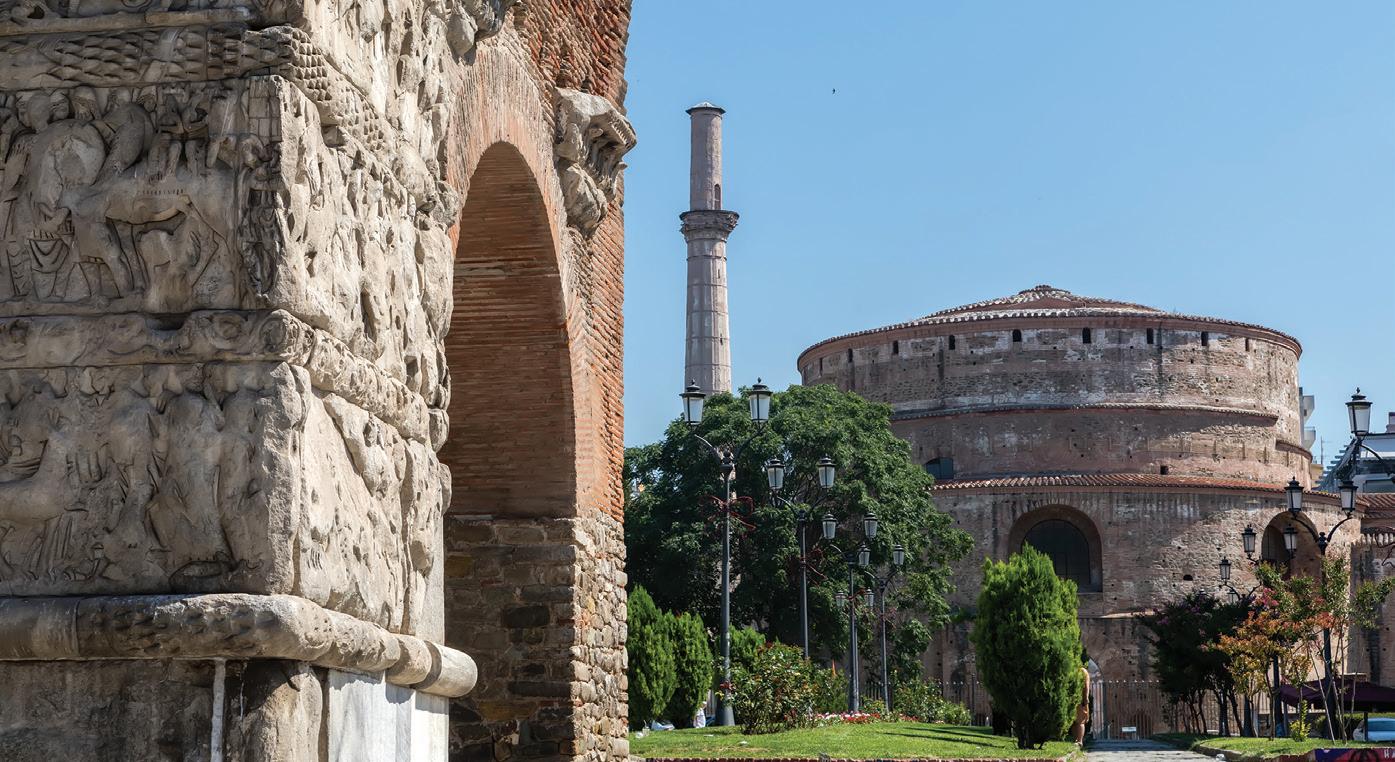
of emperors while revelling in the natural beauty of the northern Greek peninsula. Antiquities galore await discovery in Vergina, first capital of the kingdom of Macedonia and site of Philip of Macedon’s burial and Alexander’s coronation, and we will celebrate victory at Nikopolis, founded by Augustus after the Battle of Actium.
We will also join the realm of the gods as we marvel at the oracle site in Dodoni and the ancient village of Dion.
First inhabited in the 11th century, nature, history and architecture
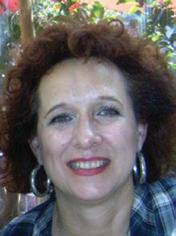
This tour will be led by Rita Roussos , PhD. Rita was born in Athens, and read Ancient Greek and Latin at the University of California, Berkeley, before gaining her PhD in History of Art at London’s prestigious Courtauld Institute of Art. Now based in London, Rita has worked on archaeological projects in the Peloponnese and has taught archaeology and art history at the American University of Athens. Rita’s research interests range from the place of women in Ancient Greece and Rome to 4th century BCE Greek sculpture.

“I learned a lot about a region that I knew little about”
“Dr Roussos as always was well-briefed, informed, helpful and happily shared her wealth of information with us”
– ACE customers on the 2024 Northern Greece tour with Rita Roussos
interweave at the frescoed monasteries of Meteora. From the Greek word meaning ‘suspended in air’, these enigmatic monasteries, perched on towering pillars of natural sandstone, unveil man’s desire to connect to the divine.
We will stay in comfortable hotels of three to four-star quality, chosen for their convenient and peaceful locations.
FITNESS / PRACTICALITIES: This tour is designed to make the most of our stay in northern Greece with a wide variety of visits. The itinerary contains some longer days with a significant amount of coach travel and walking, so participants should have a good overall level of fitness, mobility and stamina. At some sites the ground is uneven or hilly, and there are steps to navigate. Please note that some archaeological sites are exposed, and the weather will be warm. For ACE’s minimum fitness criteria, please see the Booking Terms & Conditions.
ITINERARY
Please note that the itinerary represents a guide to what we hope to offer, and certain visits may be subject to change or confirmation nearer the time. Some sites in Greece can close at short notice, so minor adjustments may be made, including to the order of visits.
Day 1 Depart London Heathrow 0715 on British Airways, arriving Thessaloniki 1235. Transfer to Hotel Royal for four nights. Welcome and introductory talk.
Day 2 Whole day cruise along western shore of Mt Athos peninsula (the Holy Mountain and spiritual home of the Orthodox Church). Evening lecture: Middle Byzantine Thessaloniki.
Day 3 Thessaloniki: visits including Byzantine Walls, Agios Dimitrios and the Archaeology Museum – some visits may be time permitting. Evening lecture: Roman Thessaloniki.
Day 4 Along Via Egnatia to Pella (capital of Philip of Macedon’s empire and birthplace of Alexander the Great): peristyle houses, huge palace complex and museum, followed by ancient sites of Edessa. Afternoon: Lefkadia to visit Macedonian tombs. Evening talk: Royal Drinking Parties.
Day 5 Morning: Vergina (former capital of Macedonian empire) for visits to the new museum and the royal tombs. Two nights at Hotel Chloe.
Day 6 Visits to Kastoria including churches, Byzantine Museum, Folk Museum.
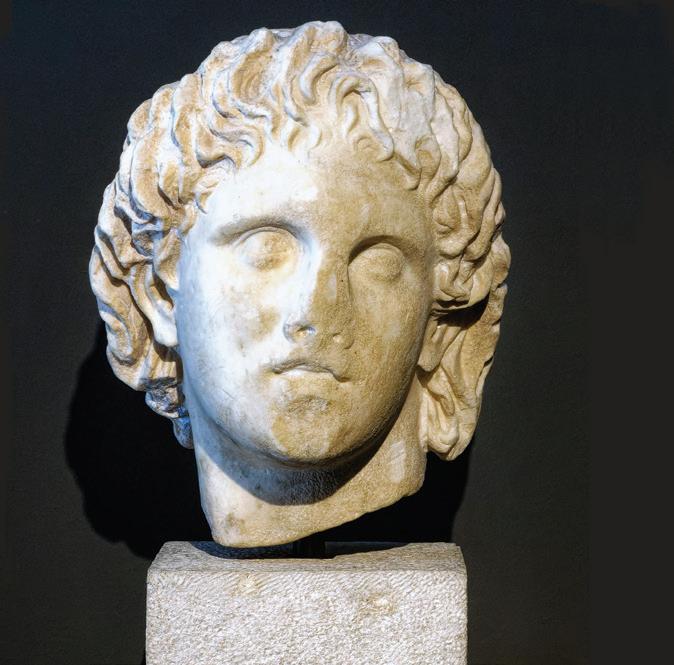
Day 7 Visits in Ioannina (major commercial and intellectual centre in Ottoman times) to the medieval castle, mosques and Silversmiths Museum – visits subject to confirmation. Four nights at Hotel du Lac, Ioannina.
Day 8 Whole day excursion to Kassopi (4th century BCE Hippodamian grid plan town), Nikopolis (built by Augustus to celebrate his victory at the Battle of Actium) and Roman aqueduct at Agios Georgios.
Day 9 Visits by boat to Nisaki (island monasteries), Monodendri (Byzantine monastery) and majestic Vikos Gorge. Evening lecture: Dodoni.
Day 10 Visit to Dodoni (sanctuary and theatre) followed by the Archaeological Museum, Ioannina. Free afternoon.
Day 11 Whole day at Meteora (‘monasteries in the air’, perched high on great detached pillars of rock, 16th century frescoes) via Metsovo. Transfer for overnight at Hotel Amalia, Kalambaka.
Day 12 Visits to Dion at the foot of Mt Olympus including sanctuaries of Isis and Demeter and museum. Transfer to Thessaloniki for overnight at Hotel City and visit to Museum of Byzantine Culture.
Day 13 Thessaloniki: Rotonda, Arch of Galerius and Agias Sophia (time permitting). Depart Thessaloniki 1545, arriving Heathrow 1720.
Cost of £4495 includes: return airfare, accommodation based on sharing a twin or double bedded room, twelve breakfasts, twelve dinners with wine, water & coffee, excursions & admissions, gratuities & all taxes.
Not included: travel insurance, single room supplement £595. TOUR CODE: NGRE25
June 25 – July 2, 2025
Explore Ross Castle and the ruggedly beautiful Innisfallen Island, with its 7th century monastery
Trace the famous Ring of Kerry, dotted with standing stones, medieval churches and monumental stone forts
Explore the early Christian monasteries, beehive huts and museums of the Dingle Peninsula
Scenically spectacular, the ancient Kingdom of Munster hides a treasure trove of sites extraordinarily rich in historical and cultural significance. Two of its undoubted jewels – the Dingle Peninsula and the Ring of Kerry – form the focus of this tour.
Overlooking Lough Leane, the largest of the three lakes of Killarney, perches the sentinel-like Ross Castle. The enchanting island of Innisfallen is home to ancient monastery ruins, a remarkable archeological survival of the early Christian period. In the narrow pass known as the Gap of Dunloe, which carves its way through the mountains west of Lough Leane, is the cottage of Kate Kearney, a 19th century beauty immortalised in song.
Muckross House and Gardens, situated on the shores of Muckross Lake, is one of Ireland’s largest stately homes. The 15th century Franciscan friary was continually occupied until the remaining monks were driven out by Cromwellians in 1652.
The world-renowned Ring of Kerry invites an appreciation of many prehistoric and early medieval sites, while
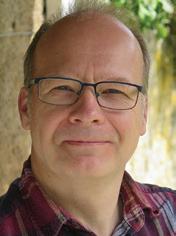
This tour will be led by Mike King , BA, MA, an experienced museum professional with a passion for Irish archaeology, Britain and Ireland’s early medieval culture, European pilgrimage and carved stones.
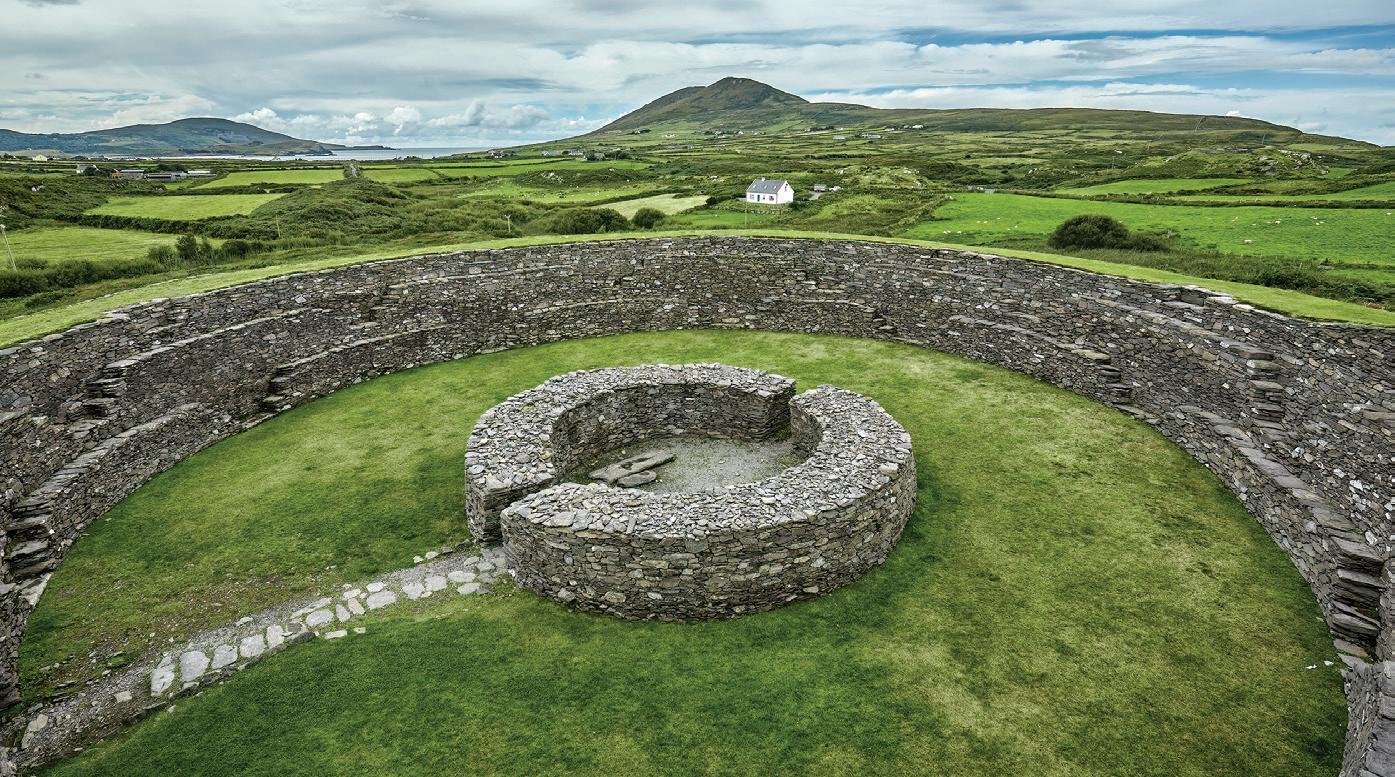
“Mike was exemplary – one of the best guides ever in all aspects”
– ACE customer on the 2024 Dingle & the Ring of Kerry tour
UNESCO-listed Skelligs invites you to discover the extraordinary history and wildlife of the island.
The beautiful Dingle Peninsula also richly rewards exploration, with its early Christian monasteries and churches, beehive huts, the famous boat-shaped oratory at Gallarus and ogham stones.
We will spend four nights at the characterful and tranquil four-star Loch Lein Country House Hotel, followed by three nights at Dingle Skellig Hotel, spectacularly situated on Europe’s westernmost peninsula.
FITNESS / PRACTICALITIES: This tour involves many visits to outdoor archaeological sites or ruins. Participants should therefore have a good level of overall fitness and mobility, and be comfortable navigating uneven and rugged ground, as well as occasional tracks or steep inclines to access sites. We advise participants to consult ACE’s minimum fitness requirements in our Booking Terms & Conditions.
Please note the itinerary represents a guide to what we hope to offer, and some elements, including the order of visits, may be subject to change or confirmation nearer the time, to best suit local conditions.
D ay 1 Depart London Heathrow 1350 on Aer Lingus, arriving Cork 1510. Transfer to Loch Lein Country House Hotel, near Killarney and
Lough Leane, for four nights. Welcome and introductory talk.
D ay 2 Morning: Aghadoe Cathedral, Dunloe ogham stones and Kate Kearney’s Cottage. Afternoon excursion to Ross Island and boat trip to Innisfallen Island.
D ay 3 Whole day exploration of the Ring of Kerry: Daniel O’Connell Memorial Church, Leacanabuaile and Cahergal stone forts, Skelligs visitor centre and Bray Head viewpoint, and Derrynane House & Garden (visit subject to reopening following restoration).
D ay 4 Morning: Muckross House, Farm & Gardens and Franciscan Friary. Afternoon: boat trip across lake to Meeting of the Waters, picturesque Torc Waterfall.
D ay 5 Morning: Ardfert (complex of churches), Kerry County Museum, Tralee and Minard Castle (exterior). Continue to Dingle Peninsula for three nights at Dingle Skellig Hotel. Evening talk.
D ay 6 Visits on Dingle Peninsula: Kilmalkedar church, alphabet stone, ancient sun-dial and ogham stone; boat-shaped oratory of Gallarus, with decorated stone and ‘saint’s bed’. Free afternoon.
D ay 7 Further visits on Dingle Peninsula: Dunbeg promontory fort, beehive huts of Glenfahan, Blasket Heritage Centre and West Kerry Museum. Return via Reask.
D ay 8 Transfer to Cork Airport via pilgrimage site dedicated to St Gobnait at Ballyvourney (time permitting). Depart Cork 1615, arriving Heathrow 1735.
Cost of £2995 includes: return airfare, accommodation based on sharing a twin or double bedded room, seven breakfasts, one lunch, seven dinners with water & coffee, excursions & admissions, gratuities & all taxes.
Not included: travel insurance, double room for single use supplement £695. TOUR CODE: DING25
June 30 – July 4, 2025
Consider how the Roman army and local tribes lived, worked and died on the Empire’s northernmost frontier
Explore the fascinating ancient forts, turrets and castles that line the wall and learn about its history and construction
Enter the settlement of Vindolanda, where ongoing excavations continue to reveal new archaeological insights
A UNESCO World Heritage site, Hadrian’s Wall is a formidable engineering achievement and spans over 70 miles of beautiful, often rugged countryside, sealing off ancient Britannia (modern day England and Wales) from ancient Caledonia (modern day Scotland). Whilst your first thoughts may stray to Pompeii or Herculaneum when considering preserved Rome, this wild northern outpost is home to astounding artefacts, and its remains illuminate much of Roman life in Britain.
Chesters, built to protect the passage of Hadrian’s Wall over the River Tyne, is Britain’s most imposing Roman cavalry fort and one of the most complete to survive today, with well-preserved baths, as well as a museum of Roman finds. Meanwhile, the ancient fort of Housesteads, perched high on a ridge overlooking wide expanses of Northumbrian moorland, is notable for its extensive barracks, granaries and hospital.
The garrison and civilian settlement at Vindolanda, where the eponymous wooden writing tablets were unearthed, is situated next to one of the best-preserved sections of the wall. Positioned on one of the longest stretches of the wall lies Birdoswald Roman Fort, where we will explore the on-site museum and wander the walls of bygone years.
As one of the earliest seats of Christianity, Hexham Abbey witnessed periods of turmoil and change. Its 7th century

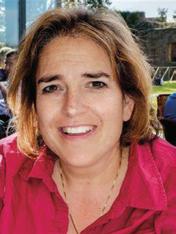
Our Tour Director is ancient historian Eireann Marshall , PhD, who was raised in the Veneto and educated at Barnard College, Columbia University and the universities of Birmingham and Exeter. She is a Research Associate and Associate Lecturer with the Open University, as well as an experienced tour leader, having led many tours throughout Europe and North Africa.
Anglo-Saxon crypt, constructed almost entirely out of salvaged Roman masonry, is one of the oldest surviving sections of St Wilfrid’s Benedictine Abbey, which was granted to the saint by Etheldreda, Queen of Northumbria, over 1300 years ago.
We will stay in the market town of Hexham, at the three-star Beaumont Hotel, a comfortable and welcoming establishment situated in a Victorian townhouse close to the Abbey.
FITNESS / PRACTICALITIES: This tour requires a good overall level of fitness, particularly for the visit to Housesteads. Participants should be comfortable walking outdoors for up to 1.5 miles at a time, often over rugged terrain that can be slippery if wet, and negotiating steps and occasionally steep inclines. Please consult our general fitness requirements in the Booking Terms & Conditions before booking.
“One
Please note that the below itinerary represents a guide to what we hope to offer, and some elements may be subject to change or confirmation nearer the time.
D ay 1 Tour assembles 1600 at Newcastle Station followed by 1700 at the Beaumont Hotel, Hexham, for four nights. Welcome and introductory talk.
D ay 2 Arbeia (Roman fort and museum), Chesters (fort, well-preserved bathhouse, sculptures, inscriptions and museum), Brunton Turret (built by men of the 20th Legion), Carrawburgh (Roman fort and 3rd century Temple of Mithras).
D ay 3 Housesteads (fort with museum, commandant’s house, headquarters, wellpreserved latrines), Vindolanda (ongoing excavations, museum with writing tablets).
D ay 4 Birdoswald (Roman fort situated on one of the longest stretches of Hadrian’s Wall, with exhibitions) followed by a walk along the wall.
D ay 5 Hexham Abbey (crypt) followed by the Roman town and military depot at Corbridge, including Lion of Corbridge (visit subject to confirmation). Tour disperses approx 1300 at the hotel followed by approx 1430 at Newcastle Station.
Cost of £1475 includes: accommodation based on sharing a twin or double bedded room, four breakfasts, four dinners with water & coffee, excursions & admissions, gratuities & all taxes. Not included: travel insurance, double room for single use supplement £220. TOUR CODE: HADW25
July 8–15, 2025
Enjoy the special Orcadian flora and fauna, from marine mammals and seabird ‘cities’ to the rare and delightful Scottish primrose
Explore some of the spectacular archaeological treasures of the Orkney Islands
Take ferries over to Rousay and other islands
Separated from the Scottish mainland by the stormy Pentland Firth, the Orkney Islands bristle with natural delights and UNESCO-listed Neolithic treasures. Chambered cairns, ceremonial stone circles and Neolithic villages scatter the peninsula while seabirds fly overhead and nest in rugged cliff edges.
While on the ‘Mainland’, we will visit a selection of cairns and Skara Brae. We will extend our reach to Scapa Flow, to learn about Orkney’s wartime heritage.
We will also take small ferries over to various islands, to understand some of the challenges in the extreme north of Britain, while exploring the fascinating wildlife and landscape – from lush marshlands to glacial erratics.
The waters around the islands are rich in marine life, supporting seals, cetaceans, and teeming seabird ‘cities’ of fulmars, puffins and guillemots. Inland, rich moorland and farmland are home to curlews and oystercatchers, as well as majestic birds of prey such as the rare hen harrier and short-eared owl. They also host one of the UK’s few endemic plants, the rare and delightful Scottish primrose.
We will stay at The Orkney Hotel in Kirkwall, ideally situated in the town centre. While the accommodation is of a
Please note travel to and from Orkney is not included in the cost of this tour as we find participants prefer a variety of different arrangements for travel. Advice can be provided on travelling by ship and air – please contact the ACE office for further information.

more basic standard, the hotel provides a comfortable base close to Kirkwall’s amenities.
FITNESS / PRACTICALITIES: At times this tour can be physically demanding and participants should have a good overall level of fitness, mobility and stamina. Please consult our Booking Terms & Conditions for general fitness guidance, and be prepared to pay careful attention to the guidance of the Tour Director. Conditions are often windy and some sites require walking on rough, often boggy ground, over slippery and/or broken paths, and near cliff edges, where care must be taken. Access to cairns can also be challenging. Please note The Orkney Hotel has no lift and all rooms are located on the 1st and 2nd floors, however staff will be on hand to help with luggage.
The itinerary represents a guide to what we hope to offer. Ferry timetables and tides can affect travel, so some elements may be subject to change or confirmation nearer the time. Wildlife can be unpredictable, and we cannot guarantee sightings of all species mentioned.
D ay 1 Check in to The Orkney Hotel, Kirkwall, for seven nights (tea and coffee available from 1600). Tour assembles 1815 at the hotel for welcome and introduction. Evening talk: Introduction to Orkney.
Wild & Ancient
This tour is part of ACE’s ‘Wild & Ancient’ series, unique products designed to showcase the many interwoven aspects of the landscapes we visit. These tours usually focus on natural history, interpreting the landscapes, their ecology and their conservation. As part of this wider exploration, they also shed light on an array of fascinating historical sites.
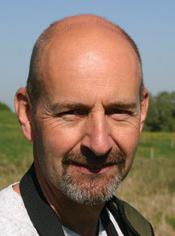
This tour will be led by Peter Exley, BSc, an ecologist, ornithologist and conservationist who works for the RSPB. He has led the communication and community elements of projects such as the reintroduction of cranes to Somerset.
D ay 2 Whole day tour of Neolithic Orkney: Stones of Stenness, Ring of Brodgar, Skara Brae, Yesnaby and Stromness.
D ay 3 By ferry to Westray for tour of the island and wildlife.
D ay 4 Rennibister Earth House, followed by ferry to small island of Rousay: Taversoe Tuick and Blackhammer, optional visit to Knowe of Yarso. Afternoon: Midhowe Broch and Midhowe Cairn. Evening lecture: Island Wildlife
D ay 5 Visits in Kirkwall: St Magnus Cathedral and Bishop’s Palace. Afternoon: Italian Chapel and Churchill Barriers followed by coastal walk to Deerness.
D ay 6 Iron Age Broch of Gurness, Marwick Head, Hillside, view of Earl’s Palace, Brough of Birsay and Kirbuster Farm Museum.
D ay 7 By ferry to Lyness, Hoy via Orphir Round Church. Morning visits to Dwarfie Stane and Rackwick dunes followed by afternoon visit to Scapa Flow Museum.
D ay 8 Tour disperses after breakfast at the hotel.
Cost of £2895 includes: accommodation based on sharing a twin or double bedded room, seven breakfasts, one lunch, seven dinners with water & coffee, excursions & admissions, gratuities & all taxes. Not included: return travel, travel insurance, twin/double room for single use supplement £395. TOUR CODE: ORKN25
July 20–26, 2025
Walk in the footsteps of gods and kings as we explore Ireland’s ancient landscapes
Discover the remarkable passage tombs of Newgrange, which predate the Pyramids of Giza
Visit evocative monastic sites, including Monasterboice with its exquisite high crosses
Our explorations will be based in the Boyne Valley and County Meath, the birthplace to Ireland’s ancient east. The region is home to a wealth of historical sites from prehistory to the modern era illuminating Ireland’s past.
The Hill of Tara was the neolithic political centre of ancient Ireland. Termed the ‘Mound of Hostages’ and the ‘Royal Seat’, Tara’s landscape hides a breadth of ritual, religious and ceremonial usage.
Ringed by megalithic carvings, the mastery of the Newgrange Passage Tomb’s architecture inspires both wonder and curiosity about its role in Irish history, folklore and legend. Part of the Brú na Bóinne UNESCO World Heritage site, archaeoastronomy enthusiasts will marvel at the tomb’s celestial alignment, as Newgrange is regarded as the oldest solar observatory.
The unassuming grounds of Monasterboice include three 10th century high crosses, among them Muiredach’s High Cross, richly decorated with biblical carvings and widely regarded as the finest monument of its kind in Ireland.
Clonmacnoise boasts the ruins of a cathedral, several churches, round tower and high crosses; while Old Mellifont Abbey was the first Cisterician abbey and example of Gothic ecclesiastical architecture built in Ireland. In Kells, we will linger at the evocative 10th century oratory named after St Columba.
In the later medieval period, we will explore the remains of Trim Castle,
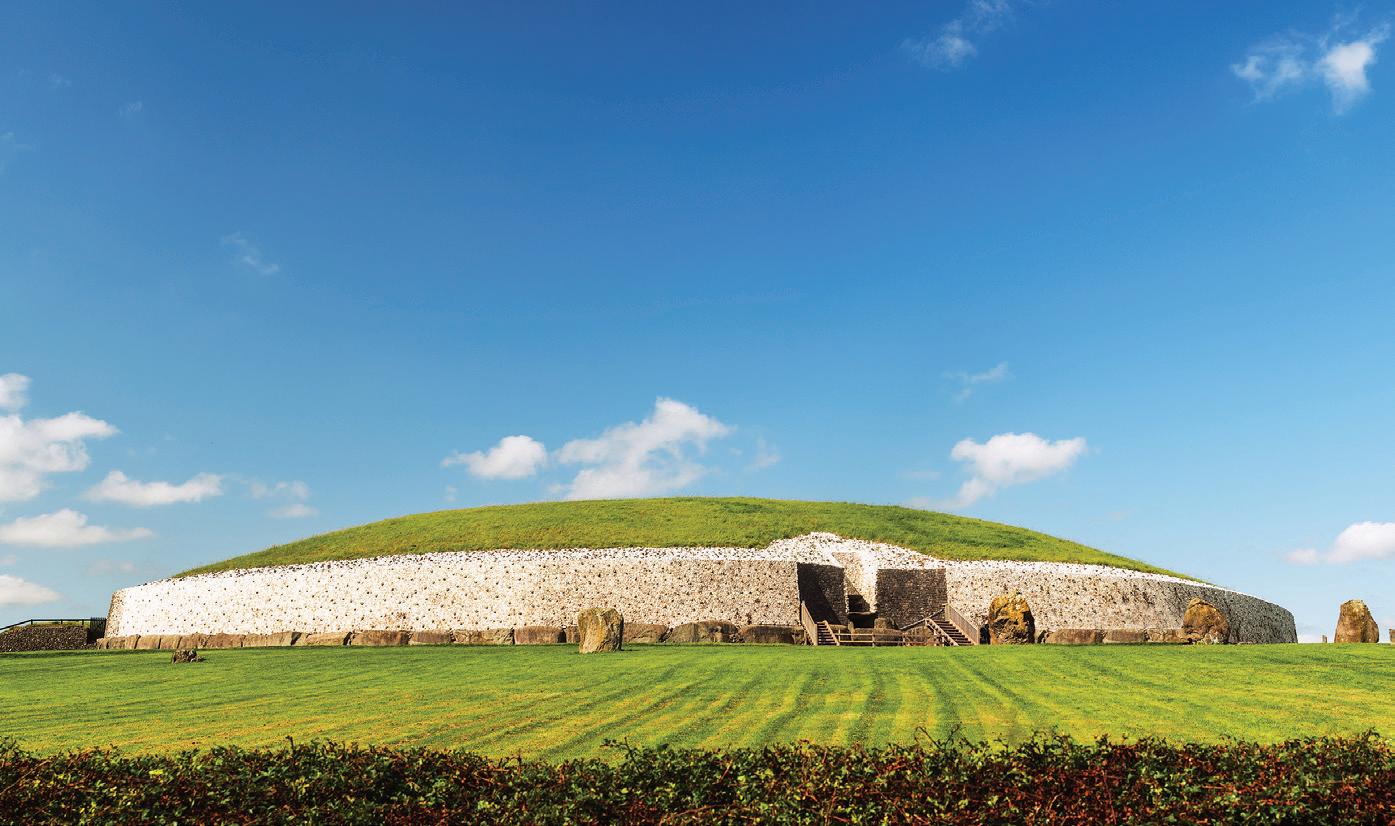
the largest Anglo-Norman castle in Ireland and once used as a centre for administration for the Lordship of Meath. We will also learn more about this region’s role in early modern Irish and British history at a museum dedicated to the Battle of the Boyne.
We will stay at the historical Headfort Arms Hotel in the heritage town of Kells, chosen for its proximity to sites, local charm and community feel.
FITNESS / PRACTICALITIES: This tour involves many visits to outdoor archaeological sites or ruins. Participants should therefore have a good level of overall fitness and mobility, and be comfortable navigating uneven and sometimes rugged ground. Some sites involve inclines to reach them. The interiors of the tombs are dimly lit, low and narrow; those who feel uncomfortable going inside have the option to remain outside. We advise participants consult our minimum fitness requirements in our Booking Terms & Conditions.
The itinerary represents a guide to what we hope to offer, and some elements may be subject to confirmation or reordering nearer the time.
D ay 1 Depart London Heathrow 1035 on British Airways, arriving Dublin 1200. Transfer to Kells for six nights at the Headfort Arms Hotel. En route visit to Hill of Slane including shrine, friary church and medieval college. Introductory lecture: Passage Tombs & the Prehistory of the Boyne Valley.
D ay 2 Morning: Hill of Tara. Afternoon: Brú na Bóinne Visitor Centre (exhibitions) and guided visit to Newgrange. Evening lecture: Art of the High Crosses.

This tour will be led by Mike King , BA, MA, a museum professional for over 30 years who has worked in both Northern Ireland and Scotland. Mike lectures, guides and publishes widely, and looks forward to introducing another ACE group to Ireland’s Ancient Heartland in 2025.
D ay 3 Visits to Monasterboice, Old Mellifont Abbey and Bective Abbey.
D ay 4 Morning: introduction to high crosses and exploration in Kells, including high crosses, round tower and St Columba’s House. Afternoon: Cavan County Museum. Evening talk: Irish Monasteries & Abbeys.
D ay 5 Morning: Fore Abbey. Afternoon: Clonmacnoise Monastery and optional visit to the Nun’s Church. Evening talk: Medieval to Early Modern Meath.
D ay 6 Morning: Trim Castle. Afternoon: Duleek including high crosses, and Battle of the Boyne Visitor Centre.
D ay 7 Morning visits to Trinity College, Dublin, to view the Book of Kells, and National Museum of Ireland (subject to final flight arrangements). Depart Dublin 1550, arriving Heathrow 1710.
Cost of £2275 includes: return airfare, accommodation based on sharing a twin or double bedded room, six breakfasts, one light lunch, six dinners with water & coffee, excursions & admissions, gratuities & all taxes.
Not included: travel insurance, double room for single use supplement £275 TOUR CODE: IRAH25
September 12–21, 2025
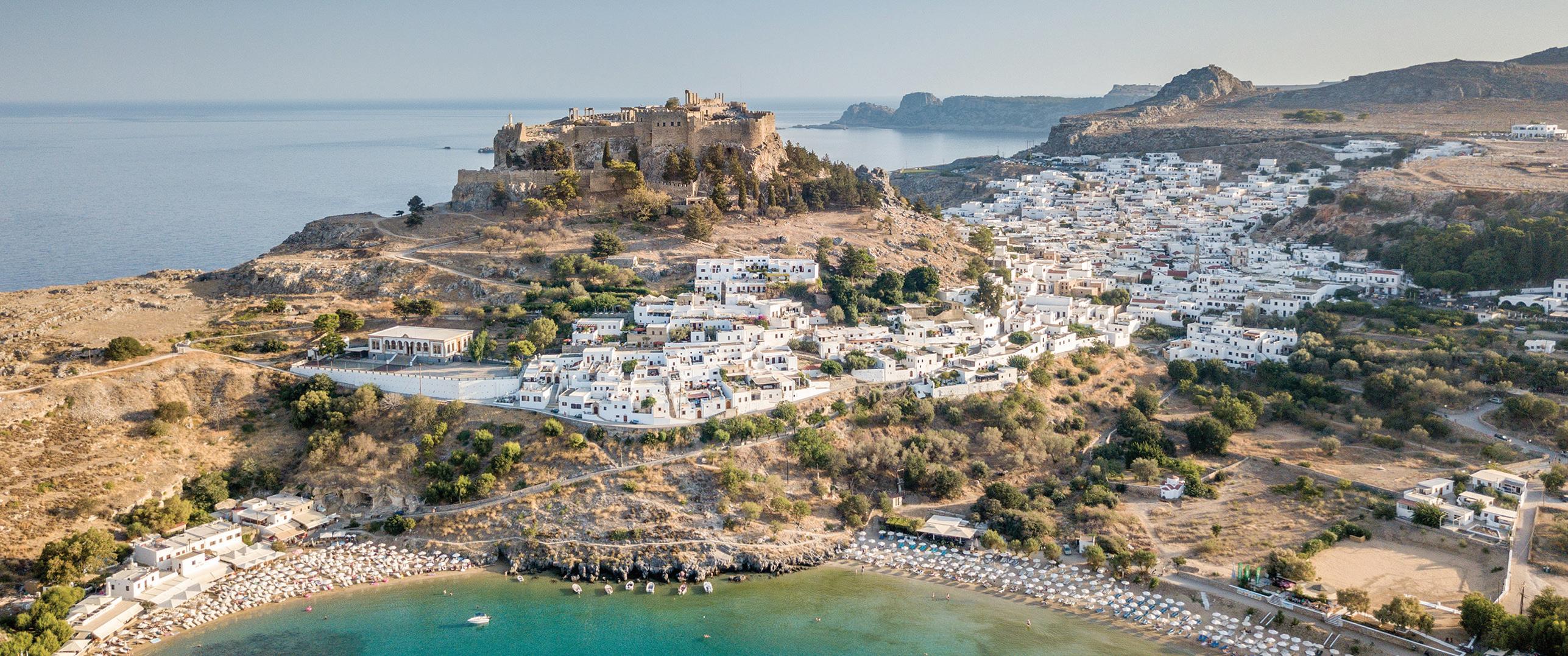
Become immersed in the history of the Dodecanese, taking in the islands of Kos and Rhodes as well as the lesser known Kalymnos, Nisyros and Symi
Navigate the stories of the Trojan War from Homeric epics and the Iliad
Discover Rhodes, where old and new blend, with visits to the ancient city of Kamiros and medieval Lindos
ancient medical centre built after the death of Hippocrates, who was born on Kos, dates from the 3rd century BCE. In Kos town, we will also explore the old town with its Ottoman mosques, and view the Art Deco buildings that speak of the island’s Italian occupation in the 20th century.
Away from the tourist path, the islands of Kalymnos and Nisyros parallel the history of the archipelago. Kalymnos –where myth and history collide – was occupied since early antiquity, and is characterised by its rugged beauty and rich history. Visits to Kalymnos’ famed The Dodecanese archipelago, located in the southern Aegean sea, encompasses a dozen large islands – with the term Dodecanese translating as ‘twelve islands’ – and many smaller ones. As a major trade and sailing route between Greece and the southern and western Mediterranean, their past is interwoven with stories of occupation by many cultures and nations, from ancient Greek Minoans, Mycenaeans and Dorians to the Byzantine and Ottomans Empires in the Middle Ages. Our tour will explore these histories and the array of important archaeological finds on Kos, Kalymnos, Nisyros, Symi and Rhodes.
Having been continuously inhabited since the early Helladic period, Kos, the third largest island and where we begin our journey, has a long and interesting history. The island’s Asklepieion, an

This tour will be led by Rita Roussos , PhD. Rita was born in Athens, and read Ancient Greek and Latin at the University of California, Berkeley, before gaining her PhD in History of Art at London’s prestigious Courtauld Institute of Art. Now based in London, Rita has worked on archaeological projects in the Peloponnese and has taught archaeology and art history at the American University of Athens. Rita’s research interests range from the place of women in Ancient Greece and Rome to 4th century BCE Greek sculpture.
‘Lady of Kalymnos’ at the archeological museum, a 3rd or 4th century BCE bronze statue depicting a garbed noble woman, as well as an exploration of monasteries and architecture, will illustrate this island’s place within the Aegean waters.
Nisyros, said to be formed during a war between the Olympian gods and the Titans, possesses a unique volcanic terrain. With obsidian trade helping the island thrive in antiquity, the stunning landscape and volcanological museum on this lesser known island capture how the geology of the Dodecanese has shaped their history and culture.
In Rhodes, we will delve into the old and medieval town as well as making excursions to discover the ancient sites of Ialysos and Kamiros. We will also visit Lindos: once one of the three most powerful cities of ancient Rhodes. As the largest of the islands, Rhodes was a centre for expansion and occupation within the Aegean and Mediterranean. Historically famous as the site for the Colossus of Rhodes, one of the seven ancient wonders of the world, it possesses extensive historical and cultural sites.
Symi is an enigma amongst the Dodecanese with little known about this island before the 14th century. With stunning mountains sloping into a scenic harbour village, we will be beguiled by the traditional stone houses painted in
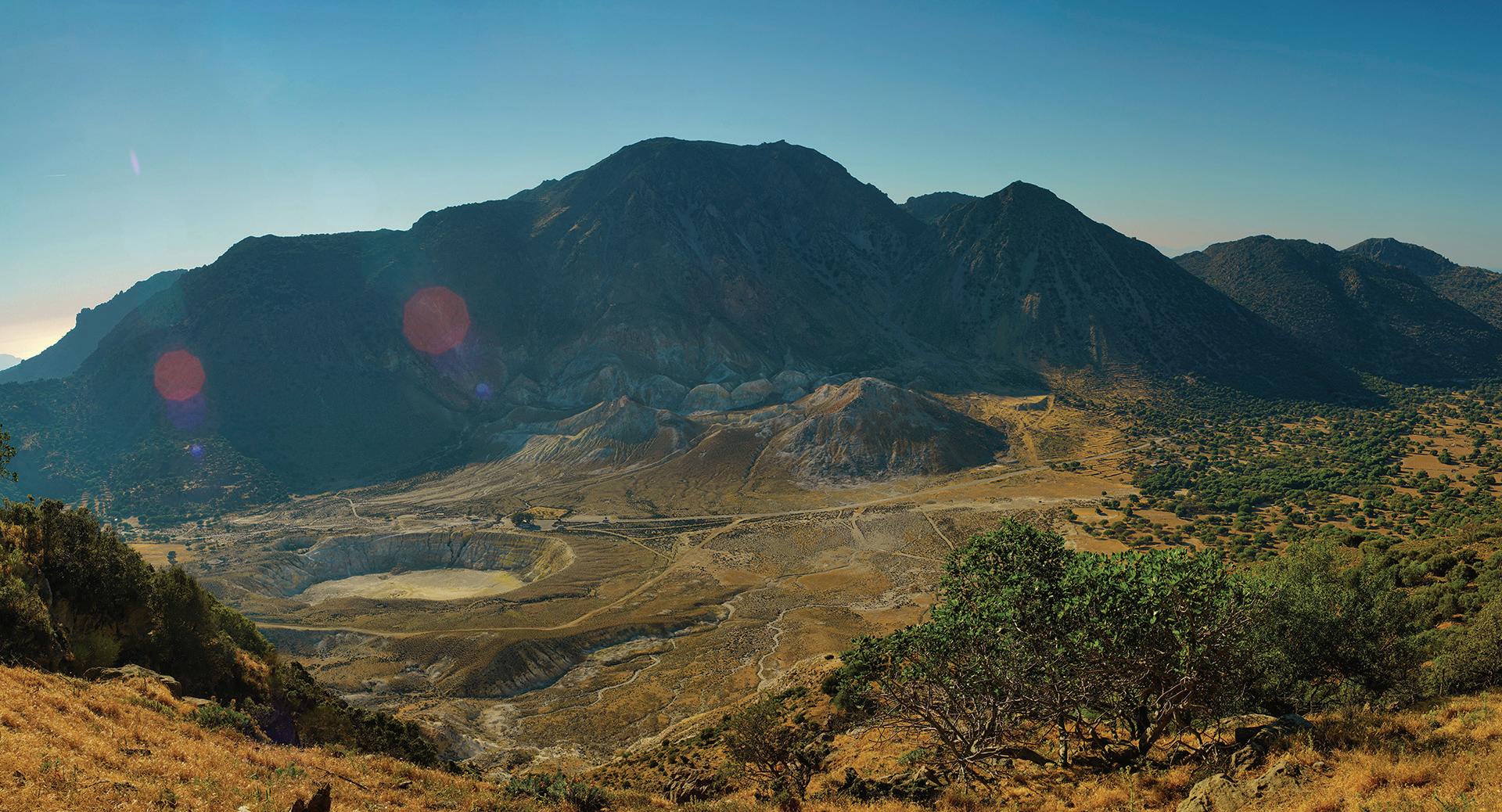
an abundance of colours and delight in the mystery awaiting on the shores of this hidden gem.
We will spend five nights at Hotel Alexandra on Kos and a further four nights at Hotel Mediterranean on Rhodes. These comfortable four-star hotels have been chosen for their convenient locations allowing for full exploration of the islands.
FITNESS / PRACTICALITIES: This tour involves substantial amounts of walking, including across rough, rugged and slippery ground as well as the occasional climb, for example at Lindos. Many of the islands have volcanic and mountainous terrain, which can be exposed, so suitable footwear must be worn as well as care taken when navigating through sites.
In recent years, many islands in the Dodecanese have suffered natural and economic disasters. Particularly on Kos, semi-regular, low magnitude earthquakes are common, as are forest fires in the height of summer. These events, whilst rarely
causing harm to people, have resulted in many sites needing to undergo restoration. Please be reassured that all visits are carefully risk assessed, and we will endeavour to deliver all visits as advertised, but some sites may therefore have varying opening hours and our itinerary may need to be adjusted on the ground.
Please note we also make several ferry transfers and that the hotels do not always offer porterage. Participants should therefore have a high overall level of fitness, mobility and stamina. Please consult our Booking Terms & Conditions for more details about our minimum fitness requirements.
ITINERARY
Please note the itinerary represents a guide to what we hope to offer, and some details, including the order of visits and ferry schedules, may be subject to change.
Day 1 Flight from London Gatwick to Kos for four nights. Transfer to Hotel Alexandra for five nights. Welcome and introductory talk.
Day 2 Depart by ferry for whole day excursion to island of Kalymnos: archaeological museum (‘Lady of Kalymnos’), Agios Savvas (hilltop monasteries), Early Christian Basilica of Christ
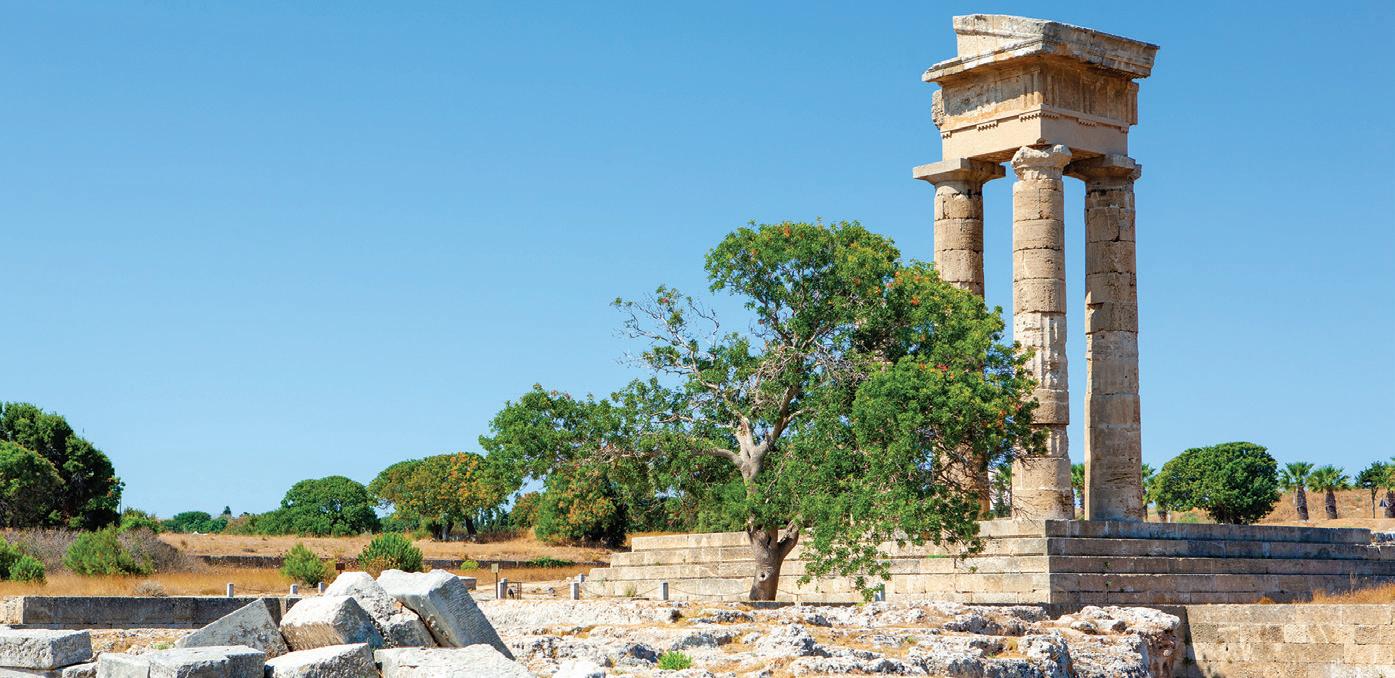
of Jerusalem and Sanctuary of Delion Apollo (exterior).
Day 3 Exploration of Kos town: views of Ottoman mosques, Art Deco buildings of the Italian occupation, Plane Tree of Hippocrates, archaeological museum and visit to Casa Romana. Evening lecture: Ancient Greek Medicine.
Day 4 Depart by ferry for whole day excursion to island of Nisyros: archaeological museum of Nisyros and Spiliani Monastery followed by tour of island including Stefanos Crater and volcanological museum.
Day 5 Tour of Kos island: Asklepieion, churches and monasteries. Evening lecture: Ancient Greek Pirates.
Day 6 Morning: Free time on Kos. By ferry for transfer to Rhodes for four nights at Hotel Mediterranean.
Day 7 Ancient Ialysos and Kamiros followed by Rhodes medieval town (archaeological museum). Evening informal talk: Rhodes & Demetrius Poliorketes.
Day 8 By ferry to Symi: archeological museum and Monastery of Panormitis.
Day 9 Lindos followed by further visits in Rhodes old town (Palace of the Grand Master, Ancient Acropolis Stadium and Temple of Apollo).
Day 10 Flight from Rhodes to Gatwick.
Cost of £4195 includes: return airfare, accommodation based on sharing a twin or double bedded room, nine breakfasts, nine dinners with wine, water & coffee, excursions & admissions, gratuities & all taxes.
Not included: travel insurance, double room for single use supplement £565. TOUR CODE: DODE25
September 30 – October 9, 2025
Become immersed in the richly diverse history of Sicily
Uncover remarkable architectural fusions, from William II’s NormanByzantine Cathedral of Monreale to the Palatine Chapel in Palermo
Engage with a wealth of cultural delights at Syracuse including the archaeological park with its Roman amphitheatre, Greek theatre and forbidding quarries
As the largest island in the Mediterranean and a strategic crossroad, Sicily’s narrative is marked by trade and invasion, resulting in a richly diverse culture, history and people.
Beginning in Palermo, which became Sicily’s capital after the Norman conquest, we will delight in and absorb the monumental magnificence of Sicily’s classical heritage – from the extraordinary Arabo-Norman architecture displayed in sites such as Palermo Cathedral to the UNESCO-listed Norman-Byzantine Cathedral of Monreale, built by William II.
Palermo, like Monreale, reveals a fusion of Islamic, Byzantine, Norman and Romanesque traditions. The city’s Palatine Chapel in the Palazzo dei Normanni is distinguished, above all, by its overwhelming Byzantine mosaics, rivalled by the golden masterpieces on display in the cathedral in Monreale.
Roaming through the ancient area of Magna Graecia, a term used to refer to the heavy Greek influence on regions of southern Italy and Sicily, we will explore a variety of world-class archaeological sites that will illuminate Sicily’s story –from its early history at Segesta, to signs of Greek and Roman occupation at Syracuse, Selinunte and Naxos.
The Temple of Olympian Zeus at Agrigento was amongst the largest in the entire Greek world, presenting an astonishing display of wealth and power, while the Roman Villa del Casale at
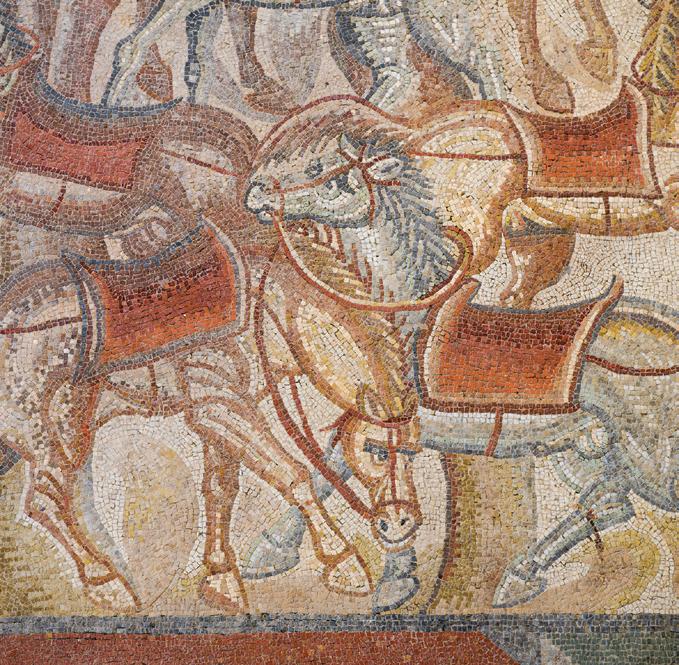
Piazza Armerina contains some of the finest mosaics in existence.
Syracuse, “the greatest Greek city and the most beautiful of them all” in the opinion of Cicero, conceals the Doric columns of the ancient Temple of Athena behind the Baroque façade of the cathedral. Its archeological park presents one of Sicily’s largest collections of antiquities.
We will stay in three four-star hotels throughout the tour, chosen for their beautiful and convenient locations.
FITNESS / PRACTICALITIES: This tour requires a good level of fitness, mobility and stamina as it involves a significant amount of walking and standing at archaeological sites, for up to three hours at a time. Please note that many sites are exposed and have steep, rough, uneven or loosely pebbled ground, or require walking through low-lying vegetation. In Palermo, some pavements are made from marble and can therefore be slippery even when dry. The tour involves coach journeys of up to three hours’ duration (with a stop en route). Please consult ACE’s fitness criteria in our Booking Terms & Conditions prior to booking.
Please note that the below itinerary represents a guide to what we hope to offer, and some elements may be subject to change or confirmation nearer the time. Some historical sites can close at short notice or for restoration works so some visits may concentrate on exterior architecture.
D ay 1 Flight from London Gatwick to Palermo.. Afternoon walking tour and introductory talk. Three nights at Hotel Principe di Villafranca, Palermo.
D ay 2 Morning: Palermo Cathedral and Palazzo dei Normanni (Palatine Chapel). Afternoon: continue to Monreale for visit to cathedral.

This tour will be led by Gillian Hovell , BA (Hons). Gillian is a specialist in the ancient world and archaeology, known professionally as ‘The Muddy Archaeologist’. She has excavated at internationally important sites from the Neolithic through to Roman times and lectures widely, including at York University.
D ay 3 Morning: churches of La Martorana and San Cataldo, Oratorio del Rosario di Santa Cita, Regional Archaeological Museum (subject to confirmation). Afternoon: Castello della Zisa and Duomo.
D ay 4 Morning: Segesta (including temple and theatre). Continue to Marinella for visit to Selinunte archaeological park. Transfer to San Leone for two nights at Hotel Costazzura Museum & Spa.
D ay 5 Visits in Agrigento: Temple Ridge, Archaeological Museum and adjoining excavation areas. Evening lecture.
D ay 6 Transfer to Piazza Armerina for Villa del Casale and Morgantina archaeological site. Continue to Syracuse for four nights at Hotel Palazzo Cavalieri. Free evening.
D ay 7 Morning: visit to Temple of Apollo followed by excursion to Noto (Sicilian Baroque architecture). Afternoon: Villa del Tellaro followed by free time. Evening: Sicilian puppet show (recognised by UNESCO as part of World Intangible Cultural Heritage).
D ay 8 Morning lecture followed by visits in Syracuse: Catacomb of San Giovanni, Paolo Orsi Archaeological Museum and Archaeological Park. Late afternoon walking tour of Ortygia including sacred spring of Arethusa and Piazza Duomo (Temple of Athena) followed by free evening.
D ay 9 Whole day excursion to ancient Naxos (early Greek colony) and Taormina (GrecoRoman theatre with superb coastal views).
D ay 10 Flight from Catania to Gatwick.
Cost of £4195 includes: return airfare, accommodation based on sharing a twin or double bedded room, nine breakfasts, two lunches, seven dinners with wine, water & coffee, excursions & admissions, gratuities & all taxes. Not included: travel insurance, double room for single use supplement £505. TOUR CODE: ANSI25
October 6–12, 2025
Gain unrivalled insights into day-today life in the Roman Empire
Discover Cumae, one of the most important Greek city-states in antiquity, alongside Pozzuoli with its impressive Roman amphitheatre
Explore Paestum with its Doric sanctuaries and the renowned Archaeological Museum in vibrant Naples
“Meanwhile on Mt Vesuvius broad sheets of fire and leaping flames blazed at several points, their bright glare emphasised by the darkness of night…” – so wrote Pliny of the sudden eruption of Vesuvius nearly 2000 years ago.
Pompeii and Herculaneum, destroyed yet preserved by the volcanic catastrophe, offer unrivalled insights into day-to-day life in the Roman Empire. Our tour offers the opportunity to explore the sites in depth, and we particularly look forward to viewing the House of the Vettii, recently reopened after extensive restoration works and years of closure. As well as investigating the ruins of Vesuvius’s twin victims, we will view the exceptional finds on display at the National Archaeological Museum in the ever-vibrant city of Naples.
Complementing these most famous sites, our comprehensive tour in and around the Bay of Naples will take in a wider array of ancient treasures, such as the vast villa complex at Oplontis. Adorned
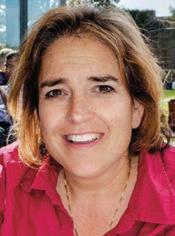
Tour Director Eireann Marshall , PhD, was raised in the Veneto and educated at Barnard College, Columbia University and the universities of Birmingham and Exeter. She is a Research Associate and Associate Lecturer with the Open University, as well as an experienced tour leader, having led many tours throughout Europe and North Africa.
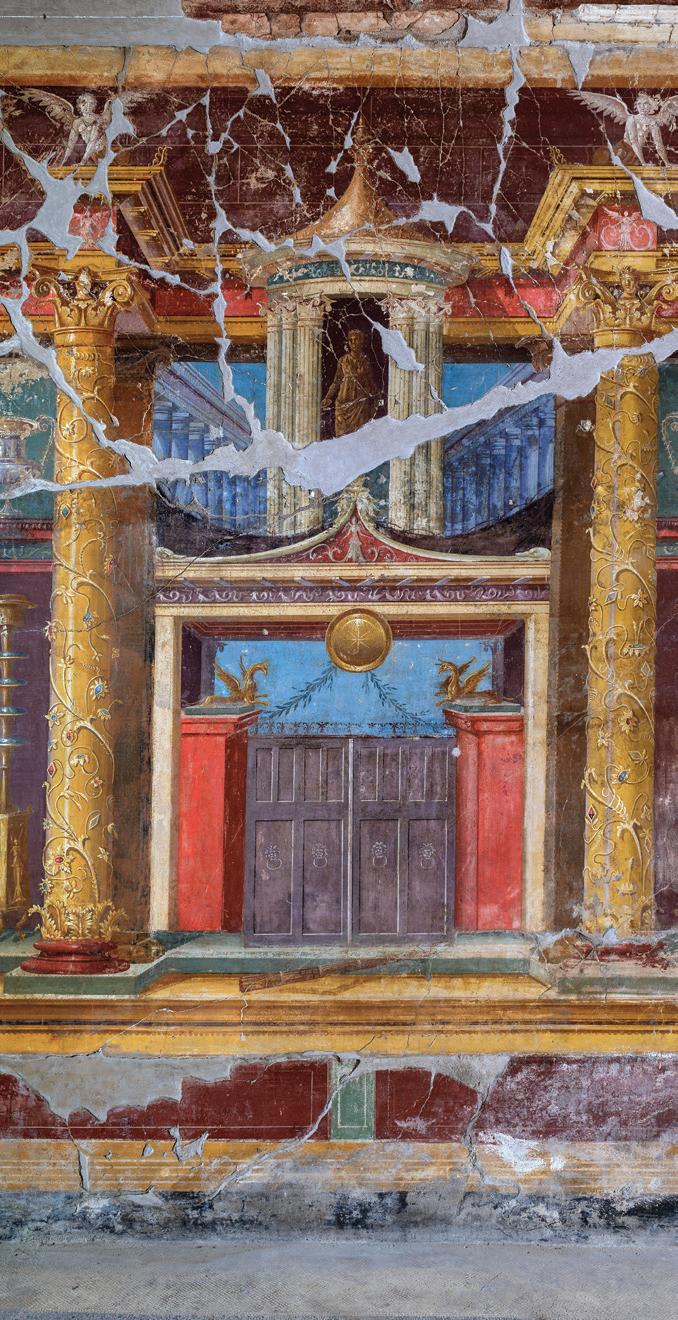
with sumptuous wall paintings that unveil the extravagant lifestyle enjoyed by the Roman elite, the villa is thought to have been Nero’s wedding present to his second wife, Poppaea.
Paestum, “inexpressibly grand” according to Shelley, was founded c 600 BCE by Greek colonists from Sybaris. Here we will pay particular attention to the Doric sanctuaries of Ceres, Hera and Neptune, which rank among the best-preserved Greek temples to be found anywhere in the ancient world.
Cumae, one of the most important Greek city-states in antiquity, is also on our itinerary together with Italy’s third largest Roman amphitheatre at Pozzuoli.
Cost of £2795 includes: return airfare, accommodation based on sharing a twin or double bedded room, six breakfasts, one lunch, six dinners with wine, water & coffee, excursions & admissions, gratuities & all taxes.
Not included: travel insurance, double room for single use supplement £395. TOUR CODE: POM225
ACE is pleased to be offering an additional departure of our Pompeii with Herculaneum tour from March 21-27, 2025, led by Steve Mastin. For more information, please visit the ACE website or contact the office.
We will stay at the four-star Hotel Forum in Pompeii, ideally located just a couple of minutes on foot from the Pompeii archaeological site.
FITNESS / PRACTICALITIES: A good level of fitness is required for this tour, and participants should be aware that the terrain at the archaeological sites can be uneven with slippery and rocky sections, and few opportunities to sit down. Please note that the optional ascent up Vesuvius involves a steep walk of around 30 minutes, and Cumae also includes an extended uphill walk. For more details on our minimum fitness requirements, please see our Booking Terms & Conditions.
Please note that the itinerary represents a guide to what we hope to offer, and some elements may be subject to change or confirmation nearer the time. Archaeological sites can close or change their opening times at short notice; therefore, some visits may be reordered.
D ay 1 Flight from London to Naples. Transfer to Hotel Forum, Pompeii, for six nights. Welcome and introduction.
D ay 2 Whole day in Pompeii: forum, shopping macellum, Villa of the Mysteries, baths, theatres and houses of the Faun, Venus and Vettii – the latter recently restored.
D ay 3 Morning visit to Naples Archaeological Museum (artefacts from Vesuvian sites), followed by lunch on the slopes of Mt Vesuvius. Continue the ascent by coach, followed by optional ascent to the crater (weather permitting; must be done on foot). Evening talk.
D ay 4 Herculaneum (panoramic villas, palaestra, baths, shops) followed by the Villa Poppaea, Oplontis (fine wall-paintings, huge piscina) and Villa Regina, Boscoreale. Evening talk.
D ay 5 Whole day excursion to Paestum: temples of Ceres, Hera and Neptune, museum (fine archaic reliefs). Evening talk.
D ay 6 Cumae (cave of the Sibyl, acropolis), Pozzuoli (amphitheatre) and Villa San Marco and Villa Arianna, Stabiae.
D ay 7 Excursion to Sorrento for independent exploration. Flight from Naples to London.
October 16–30, 2025
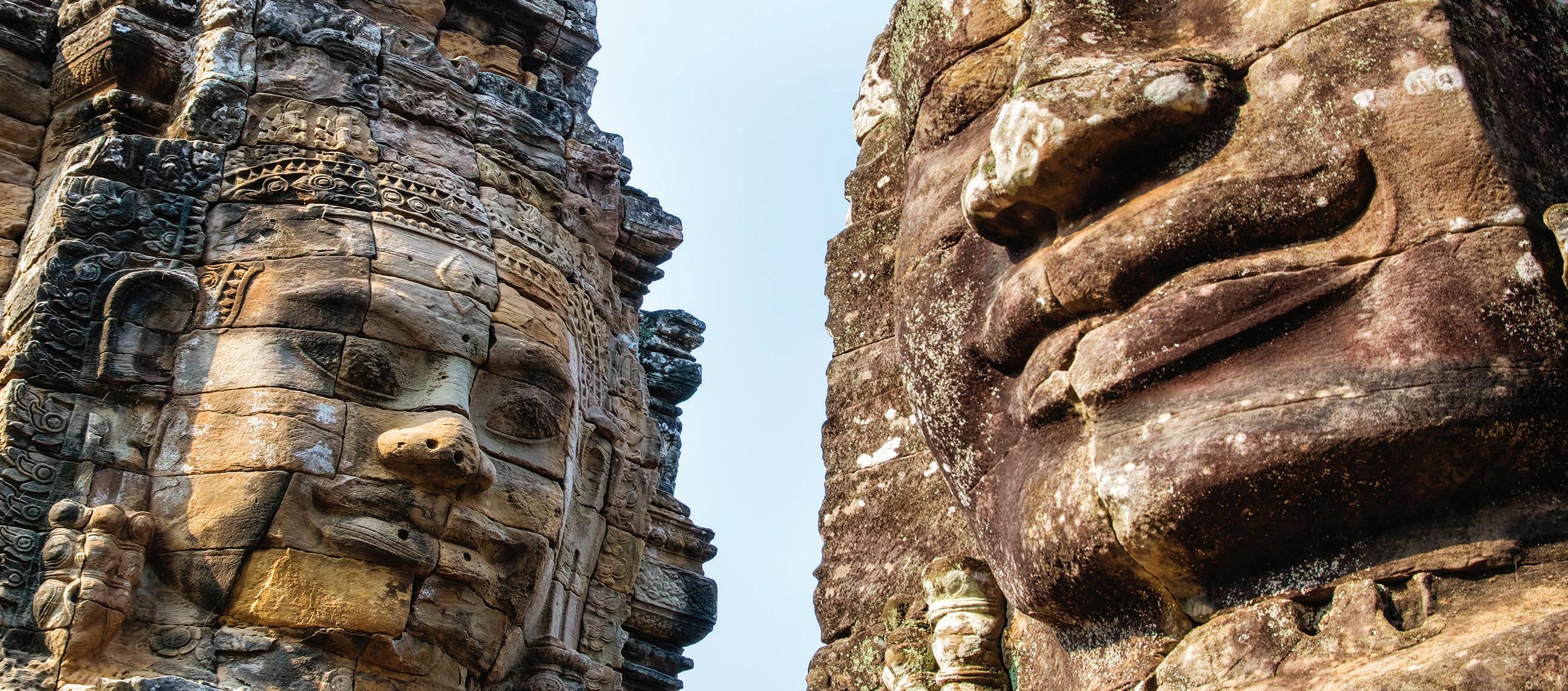
Join this brand new ACE cruise exploring the fascinating history and culture of the Mekong Delta
Travel from the vibrant urban hubs of Ho Chi Minh City and Phnom Penh along the lush Mekong to tranquil villages and the extraordinary temples of Angkor
Myriad themes, from archaeology, history and architecture to local customs and gastronomy, combine to create an in-depth impression of Southeast Asian culture
This exciting new cruise offers travellers unique insights into the cultural world of the Mekong Delta of Southern Vietnam and Cambodia.
Our tour begins in the lively city of Ho Chi Minh, before cruising towards My Tho and Cai Be along the magnificent
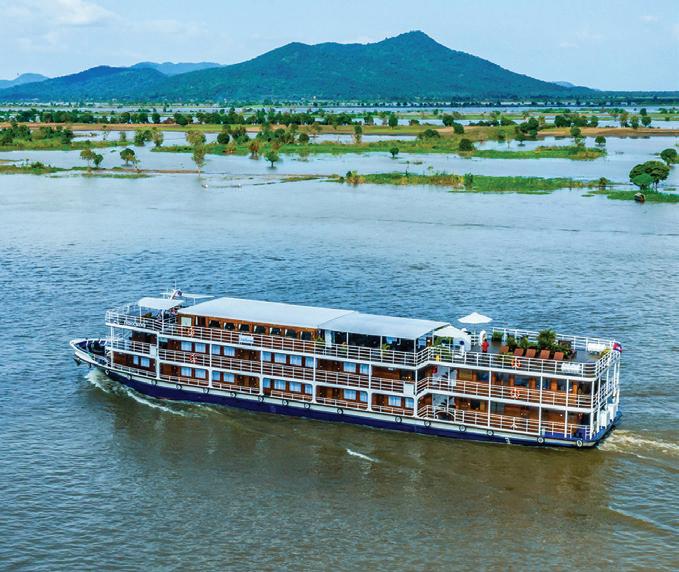
Cho Gao Canal, with an excursion by riverboat to Thoi Son Island, including a ride in sampans (traditional boats) along picturesque narrow waterways.
En route to the prosperous city of Chau Doc, where we will explore Ba Chua Xu Temple and the Tay An Pagoda, we will visit Tan Chau to experience the floating houses of a fishing farm on a special tour by boat.
A whole day will be dedicated to exploring Phnom Penh, including an opportunity to gain a greater understanding of its troubling recent past.
We will also visit the Royal Palace, built in 1866 under King Norodom, to experience Khmer architecture and the Silver Pagoda, named after its floor, which is covered with over 5000 silver tiles.
Traditional crafts and produce will form a focal point of our tour. Further
Our Vessel and Accommodation
Our vessel for the cruise will be the RV Indochine, measuring 51 metres long and housing 24 spacious (16 square metre) airconditioned cabins over two decks. Boasting beautiful wood panelling, the ship offers a restaurant on its upper deck, large picture windows and a sun deck with lounge and bar area. Either side of the cruise, we will stay at hotels in Ho Chi Minh City and Siem Reap of a luxurious five star quality.
highlights will include a cruise on Tonlé Sap Lake, and a visit to Kampong Chhnang, a region known for producing fine traditional pottery.
Banteay Srei was built in the late 10th century and dedicated to Shiva; its pink limestone walls contain what are arguably the best bas reliefs of any temple at Angkor. The site has recently been redeveloped with sustainability at the forefront.
Following the cruise, we will spend several additional days in Siem Reap, visiting Angkor Thom and the breathtaking Angkor Wat, built as the funeral temple for Suryavarman II, who ruled from 1112 to 1152.
Cuisine on board will be of an excellent standard and varied, showcasing both local and international dishes, and there will also be opportunities to enjoy cookery demonstrations.

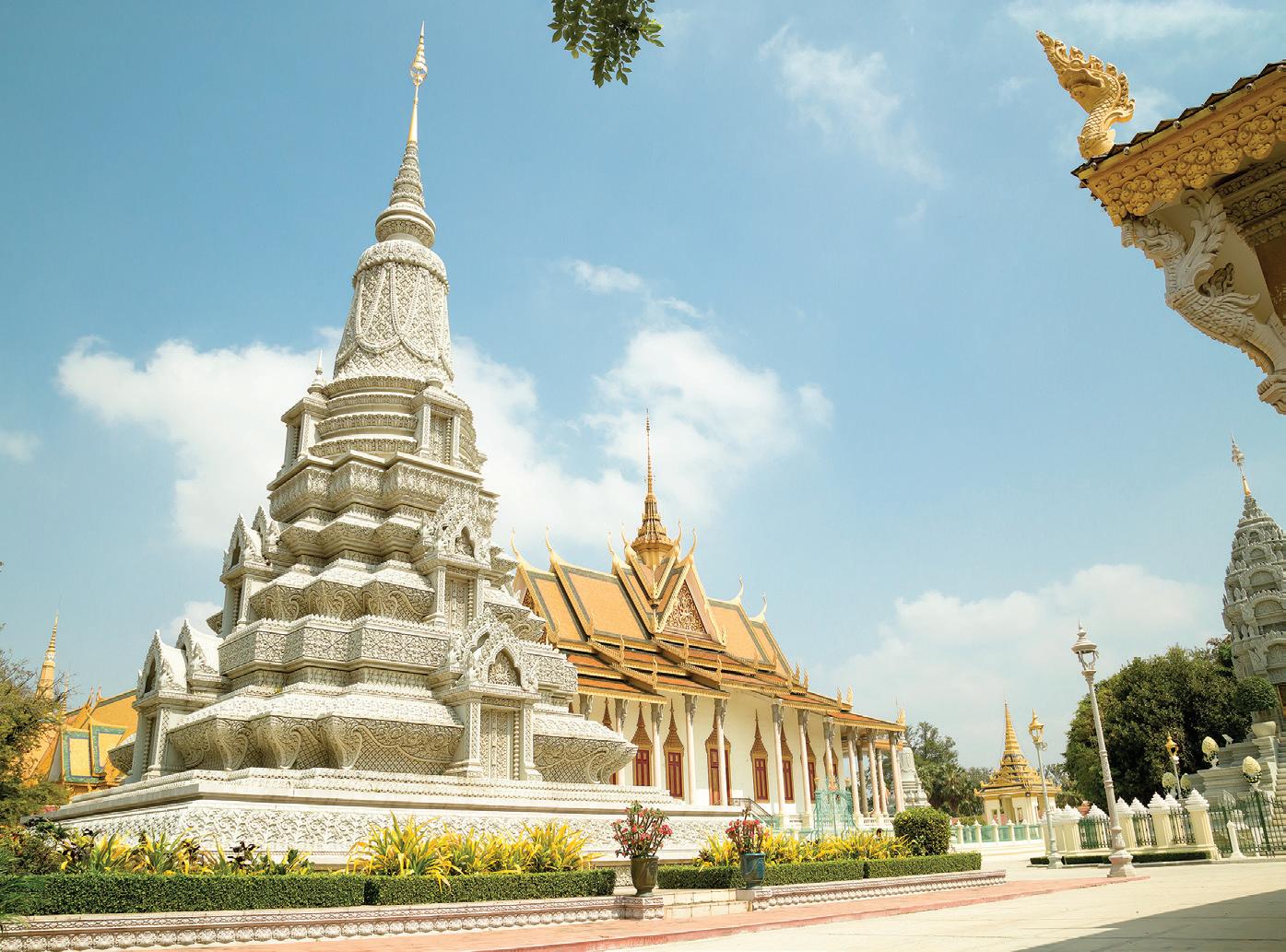
FITNESS / PRACTICALITIES: A very good level of fitness, mobility and stamina is required for this tour. Participants should be prepared to spend on their feet in hot weather, on walking tours and at archaeological sites. The most physically demanding element of the tour is at Angkor, where there are steep steps to access the top level, as well as uneven stone floors and rough ground with roots and fallen stones to navigate, so care must be taken. Participants
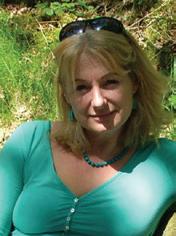
This tour will be led by Moira Tait , MA, FRAS, who read archaeology at the University of London before gaining an MA in the archaeology of Southeast Asia from SOAS. She excavated several Iron Age sites in Thailand, exploring the transition from prehistory to city states such as Angkor. Moira has led tours to destinations including Southeast Asia for many years, and undertook a research recce on the Mekong in 2023 to devise this new itinerary for ACE.

ACE Tour Director and wildlife expert Kevin Hand , MSc, MCIEEM, will join Moira, assisting primarily as Tour Manager while also contributing his knowledge on the landscape and wildlife where appropriate.
The group will also be joined by local guides along the way, who will share their own unique insights into local life.
should feel comfortable getting on and off the RV Indochine, riverboats and traditional sampans; depending on the tides, this can be challenging, so a good level of balance and agility is necessary, although staff will be on hand to help. There are no long overland journeys, but if water levels are too low towards the end of the cruise, the group will make the final journey to Siem Reap by coach (approx five hours, with two comfort stops en route). Visits and excursions will be balanced with some relaxed periods of cruising, and leisurely lunches on board. There will also be some options to take a morning or afternoon off to relax on board.
This tour features some upsetting and disturbing content, particularly our visits to Tuol Sleng Prison and Choeung Ek (‘killing fields’) in Phnom Penh. While very important for an understanding of Cambodian history, we appreciate that some customers may prefer to opt out of these visits. Some of our evening film screenings will also contain upsetting details – these will be highlighted ahead of time so customers can make the best choice about whether to attend.
Please note this group will comprise approximately 34 participants plus staff. Participants will be divided into smaller groups for many visits.
The itinerary represents a guide to what we hope to offer, and some elements, including our sailing schedule, may be subject to reordering or confirmation nearer the time, or dependent on local conditions on the day. Travellers should expect to be flexible about arrangements, and sites may close at short notice.
Day 1 Depart London Heathrow 2125 on Thai Airways via Bangkok.
Day 2 Arrive Ho Chi Minh City 1905. Transfer to Mai House Saigon Hotel for overnight.
Day 3 Ho Chi Minh City: Jade Emperor Pagoda, War Remnants Museum, Reunification Palace, Cholon and Ba Thien Hau Pagoda. Embark Indochine I for eight nights. Welcome and introductory talk.
Day 4 Excursion to Cu Chi Tunnels followed by Ho Chi Minh City: Notre Dame Cathedral, Central Post Office, Hotel de Ville, Opera House, Majestic Hotel, Caravelle Hotel and Hotel Continental (exteriors). Evening cruise towards My Tho.
Day 5 Morning talk as boat cruises along Cho Gao Canal. Afternoon excursion by riverboat to Thoi Son Island, including ride in sampans (traditional boats) along narrow waterways with visits to beekeeping centre and brick and pottery factory. Continue to Cai Be, located between two arms of the Mekong, for visit to a sugar factory and Bac Duc Ancient House (subject to final confirmation).
Day 6 Morning visit to Sa Dec to see the former house of Huynh Thuy Le and explore the lively market. Free afternoon cruising towards the prosperous city of Chau Doc on the border with Cambodia. Evening talk.
Day 7 Morning in Tan Chau: fishing farm tour by small boat. Continue by minibus to Chau Doc for Ba Chua Xu Temple and Tay An Pagoda. Afternoon cruise towards Phnom Penh with talk and optional cookery demonstration.
Day 8 Whole day coach tour of Phnom Penh: Tuol Sleng Prison, Choeung Ek, Royal Palace and National Museum.
Day 9 Morning: Koh Chen. Afternoon: Udong (base of mountain, optional walk of 500 steps to local temple). Cruise to Kampong Chhnang.
Day 10 Morning in Kampong Chhnang (subject to confirmation). Free afternoon on board while boat cruises on lake. Evening cocktail reception.
Day 11 Cross Tonlé Sap Lake. Disembark for afternoon visits to Lolei and Bakong (the latter subject to completion of restoration works).
Four nights at Treeline Urban Resort, Siem Reap. Evening talk.
Day 12 Morning: South Gate of Angkor Thom and temples of Bayon, Baphuon, Terrace of Elephants and Terrace of Leper King. Afternoon: Banteay Srei.
Day 13 Morning: Angkor Wat. Afternoon: Beng Mealea.
Day 14 Ta Prohm, Neak Poan, Angkor National Museum.
Day 15 Depart Siem Reap 0955 via Bangkok, arriving Heathrow 1935.
Cost of £5695 includes: return airfare, accommodation onboard RV Indochine based on sharing a main deck twin cabin, full board cruise (except one independent lunch on day 8 in Phnom Penh) with unlimited wine, beer, soft drinks, tea & coffee, four or five-star hotel accommodation for five nights including three lunches and five dinners with wine, water, tea & coffee, excursions & admissions, all gratuities & all taxes. Not included: travel insurance, visa, hotel & main deck twin cabin for single use supplement £1295, hotel & upper deck twin cabin for single use supplement £1795. Twin upper deck supplement of £395pp (based on sharing a cabin).
TOUR CODE: MEKO25
November 22 – December 3, 2025
Discover the delights of Marrakesh, including the 16th century El Badi Palace
Explore the citadel of the Chellah and the Kasbah des Oudaias in Rabat
Take an excursion into the High Atlas mountains with their snowcapped peaks
Located in the Maghreb “the West” region of north Africa, Morocco’s earliest recorded history begins with Phoenician occupation between the 8th and 6th centuries BCE. Establishing trade routes and commercial outposts, such as Lixus, on the Mediterranean coast allowed northwest expansion to counter the Levant.
Roman expansion into this vast landscape allowed extension of its authority and influence across the Mediterranean, establishing strategic centres at Volubilis and Chellah, a Roman city and fortified Muslim necropolis. The spread of Islam during the mid-7th century then gave birth in Morocco to an artistic and architectural legacy of enormous diversity.
This tour provides an in-depth exploration of the country’s fascinating archaeology and art, as well as opportunities to take in its breathtaking landscape, as we journey along the coast and into mountains exploring this unique terrain and history.
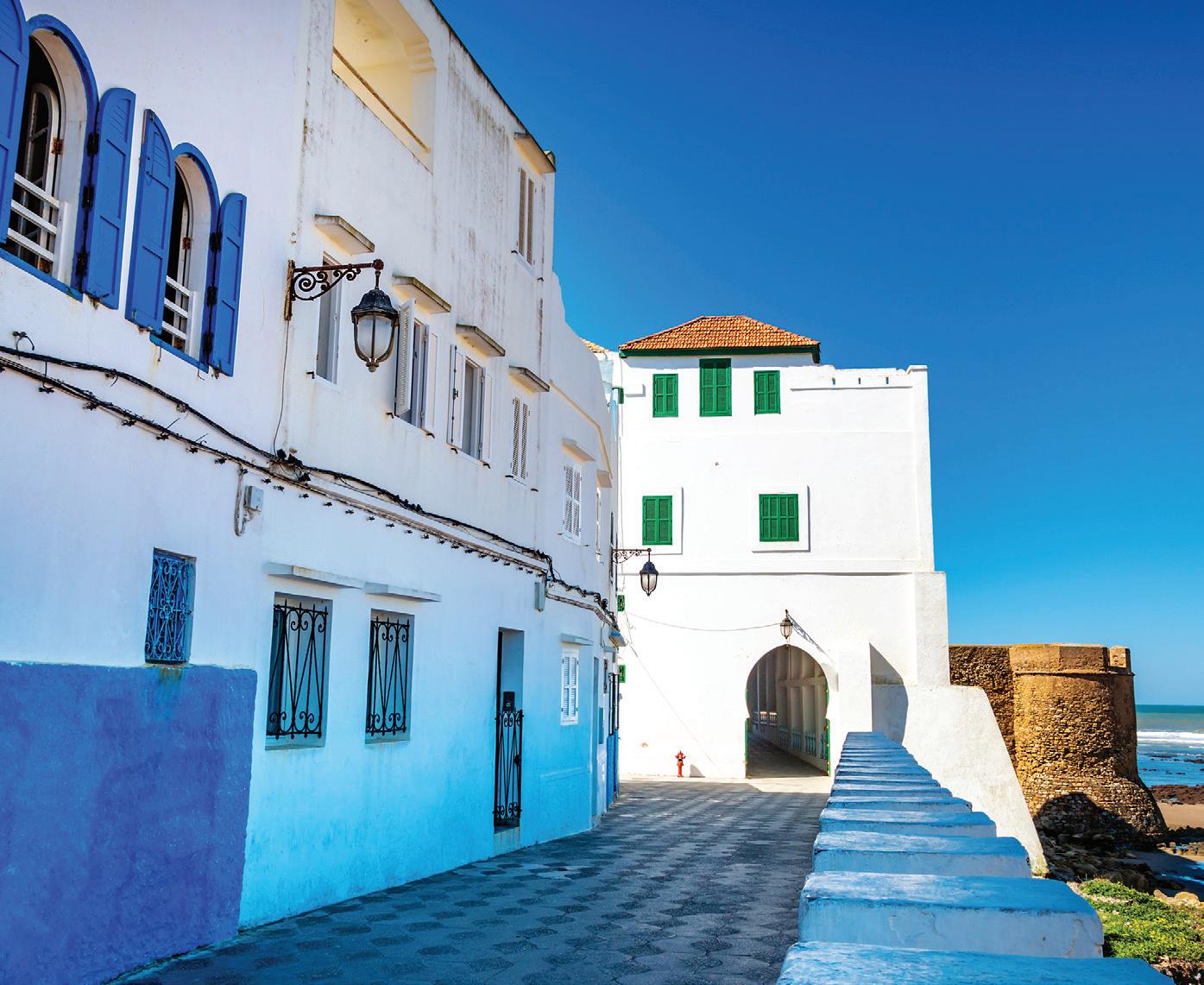
Rabat, a captivating mélange of influences and cultures, is home to a wealth of monuments. Recently reopened following a large restoration, the walled citadel of the Chellah, an abandoned ancient port that was transformed in the 14th century into a burial ground for the Marinid dynasty, forms one of Morocco’s most beautiful ruins. We will then enter the medina through the 17th century Andalusian walls, and walk to the Almohad citadel known as the Kasbah des Oudaias, with its impressive 12th century gate and enchanting Andalusianstyle gardens.
En route to Tangier, ‘Europe’s gateway to Africa’, we will visit Larache for
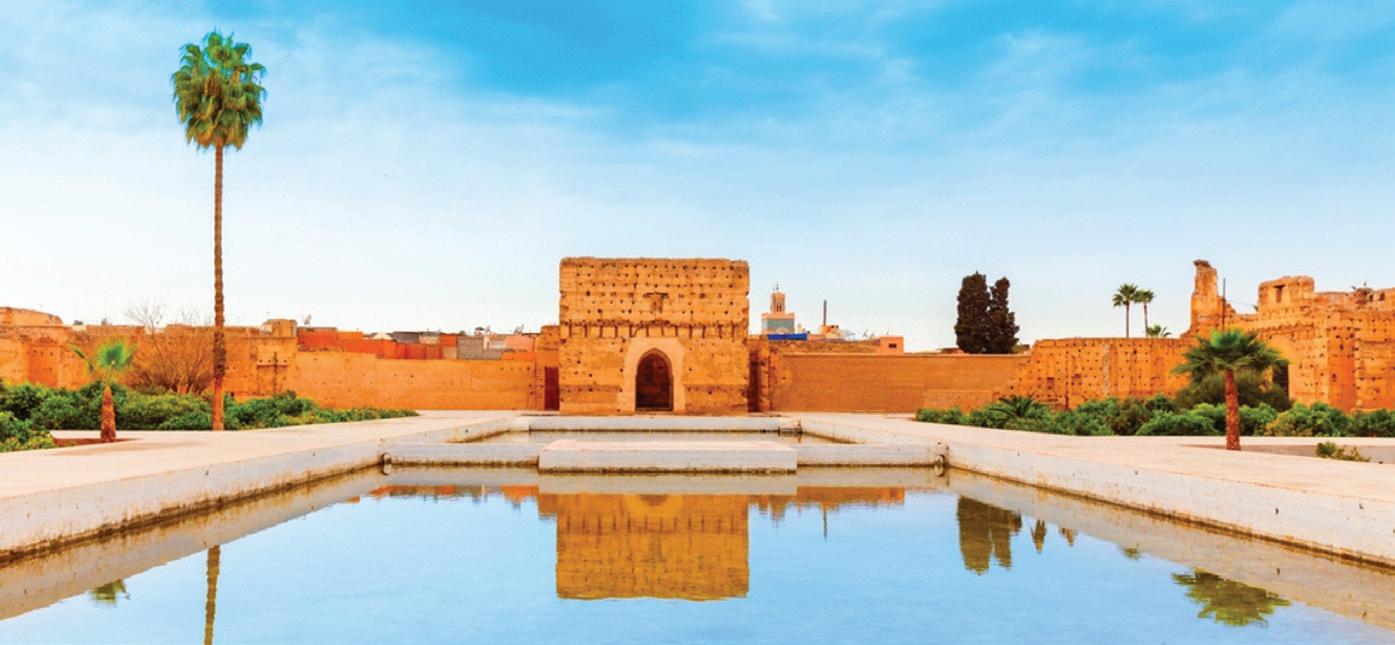
the ancient city of Lixus, site of the legendary Garden of Hesperides, dating back to prehistoric times and boasting interesting Roman remains. We will also take in Asilah, one of the most elegant of the old Portuguese Atlantic towns. Highlights in Tangier itself include the walled Kasbah and the small Museum of Moroccan Arts, with ceramics from Fez and Meknès.
Our tour includes an overnight stay in the spectacularly situated mountain town of Chefchaouen, where the medina has magnificent views of the Rif Mountains.
Founded in the 9th century and home to the world’s oldest university, Fez reached its zenith under the Marinids, as witnessed by the elaborate profusion of souks, madrasas, mosques and minarets that date from the 13th century.
Meknès, meanwhile, founded in the 11th century and revitalised by Sultan Moulay Ismaïl in the 18th, is an attractive example of the harmonious blend of Islamic and Spanish styles.
We will also unravel the mysteries of the beautiful Roman ruins of Volubilis, the capital of ancient Mauritania and one of the country’s most important ancient
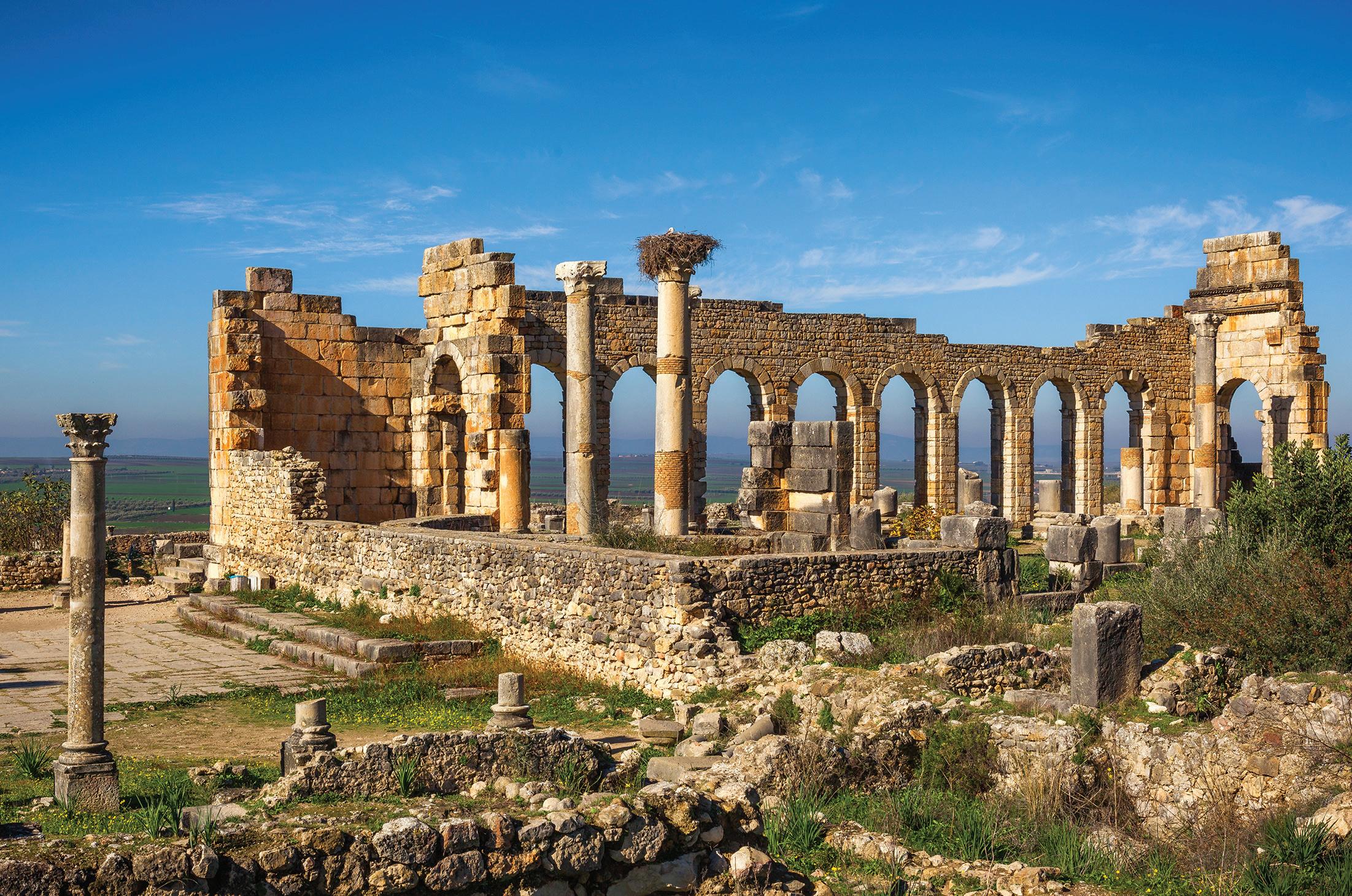
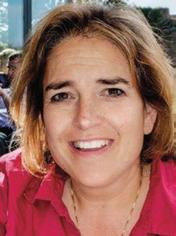
Our Tour Director is Eireann Marshall , PhD, a Research Associate and Associate Lecturer with the Open University. Educated at Barnard College, Columbia, and the universities of Birmingham and Exeter, Eireann is an expert in the classical and ancient worlds and has published several articles on Ancient North Africa. She has led many tours across Europe and North Africa.
sites, with extensive remains dating from the 2nd and 3rd centuries CE.
Marrakesh charms with its breathtakingly intricate 16th century Saadian tombs, the vast and eloquent ruins of the El Badi Palace, Majorelle Gardens and Yves Saint Laurent Museum. Meanwhile, the snow-capped High Atlas provides a stunning backdrop to understanding this boundless landscape.
We will stay in a variety of comfortable, well-situated hotels in Casablanca, Rabat, Tangier, Chefchaouen, Fez and Marrakesh.
FITNESS / PRACTICALITIES: A good level of fitness, mobility and stamina is required for this tour, as it involves a significant amount of travel and 6 different hotel stays, as well as time spent walking and standing at historical sites, where there are not always frequent opportunities to sit down. The longest coach journey is approximately 6 hours, with stops en route. Participants should be prepared for traversing uneven ground, steps and cobbles, as well as dimly lit interiors. Please consult ACE’s minimum fitness requirements in our Booking Terms & Conditions.
The itinerary represents a guide to what we hope to offer, and some elements may be subject to change or confirmation nearer the time, or adjusted on the ground to fit local conditions.
Day 1 Flight from London to Casablanca. Overnight in Casablanca.
Day 2 Casablanca: Art Deco architecture and Hassan II Mosque. Transfer to Rabat for two nights. Evening lecture.
Day 3 Morning in Rabat: esplanade of the Royal Palace, walled citadel of Chellah and Archaeology Museum. Afternoon: Medina with 17th century Andalusian walls, Kasbah des Oudaias, Andalusian-style gardens. Evening lecture.
Day 4 Via Larache for ancient Lixus and Asilah. Continue to Tangier for overnight.
Day 5 Tangier: walled kasbah, Museum of Moroccan Arts, reputed tomb of Ibn Battuta. Afternoon: depart for Chefchaouen for overnight.
Day 6 Morning in Chefchaouen: Kasbah, Medina. Transfer to Fez for three nights.
Day 7 Morning: Volubilis. Afternoon: Meknès (Bab el-Mansour gate, Bou Inania madrasa, Koubba, complex of barracks, granaries and stables built by Moulay Ismaïl).
Day 8 Fez: souks, madrasas, Andalusian Quarter and al-Qarawiyyin Library (subject to confirmation). Afternoon: optional visits to Jewish quarter in Fez el Jedid and traditional pottery studio.
Day 9 Via Rabat and Casablanca to Marrakesh (approx 6 hour journey) for three nights. Evening lecture.
Day 10 Marrakesh: Saadian tombs, Almohad gateway of Bab Agnaou, ruins of El Badi Palace, Museum of Moroccan Arts, Koubba, Almohad tower of Koutoubia Mosque (exterior).
Day 11 Morning excursion into High Atlas Mountains. Afternoon: Majorelle Gardens and Yves Saint Laurent Museum.
Day 12 Flight from Marrakesh to London.
Full details, including the cost and accommodation, will be released later in 2024. To register your interest, please visit the ACE website or contact the office.
TOUR CODE: MORO25
December 2025
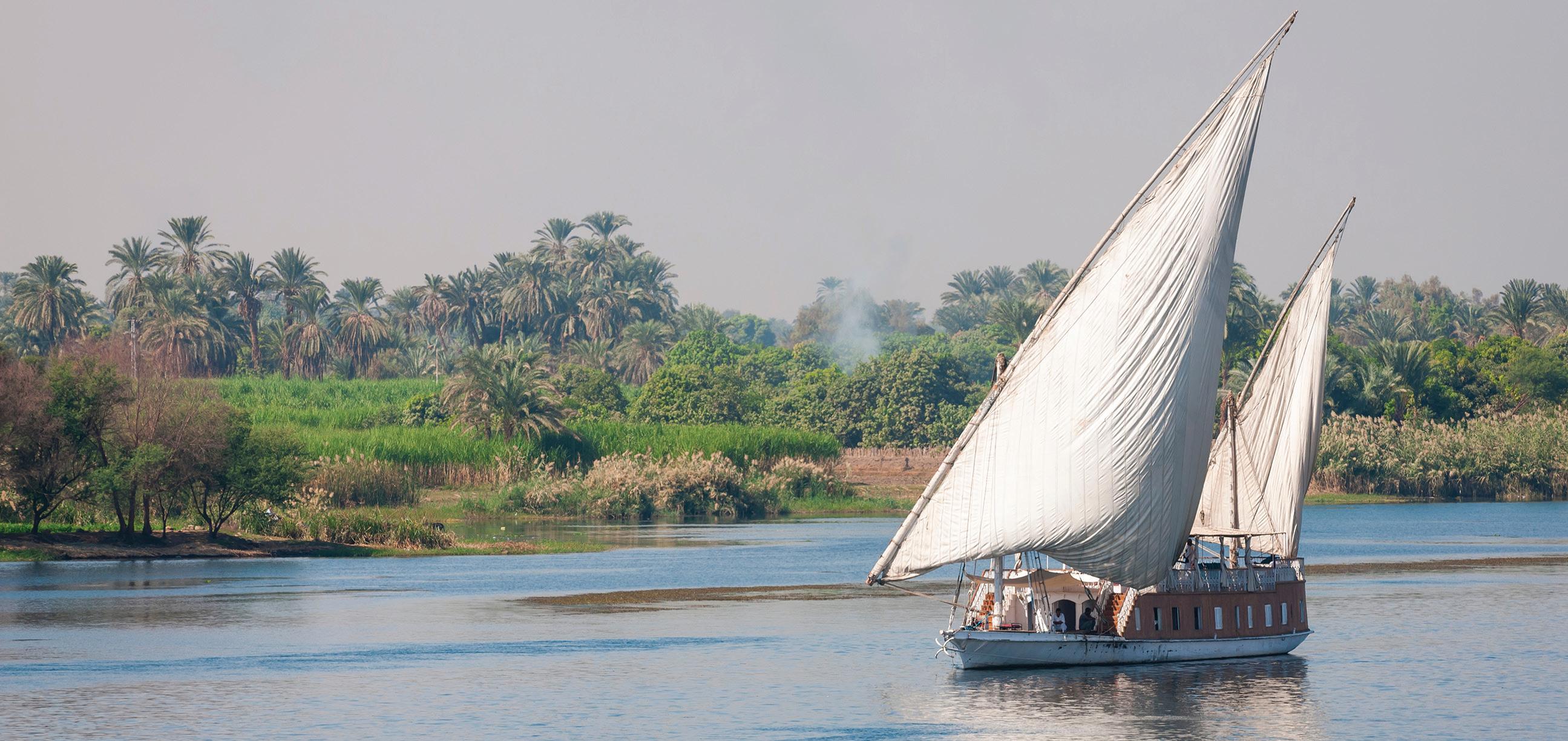
Enjoy three nights in Cairo and an exclusive cruise along the Nile in a traditional dahabiya
Explore the spectacular archaeological sites at Luxor, including the Temple of Karnak and the Valley of the Kings
Visit the newly opened Grand Egyptian Museum in Giza, the permanent home to the collection of treasures from Tutankhamun’s tomb
Join ACE on a wonderful journey along the Nile from the ‘open-air museum’ of Luxor, home to many of Egypt’s most glorious treasures, to laid-back Aswan, in the heart of ancient Nubia. This memorable cruise aboard a classic and comfortable dahabiya (exclusively chartered for this group) will be preceded by an exploration of the iconic historical wonders in and around Egypt’s thrilling capital, Cairo.
Our visits begin at the edge of the desert at Saqqara, once the cemetery for ancient Memphis and home to the proto-typical Step Pyramid. An in-depth tour of Giza – home to the pyramids and Great Sphinx – will follow, as well as a visit to the new Grand Egyptian Museum, set
to open in late 2024 after many years of construction. Expected to be the world’s largest archaeological museum, the site will house the collections of Pharaonic treasures from the tomb of Tutankhamun.
We then fly to Luxor to board a traditional dahabiya and discover the city’s peerless ancient attractions, including the the monumental ‘East Bank’ temples of Luxor and Karnak and the world-renowned ‘West Bank’ tombs and temples, including the necropolis of the pharaohs in the Valley of the Kings.
During the cruise, we will survey a range of fascinating temples and archaeological ruins. Esna, located some thirty miles south of Luxor, boasts the miraculously preserved Temple of Khnum, the ramheaded god revered by the Egyptians as the guardian of the source of the Nile. An international team has spent five years cleaning and restoring the temple’s ceiling.
At Edfu, the most complete of all Egypt’s temples, we may admire the vivid reliefs recounting the dramatic struggle for power between Horus and Set.
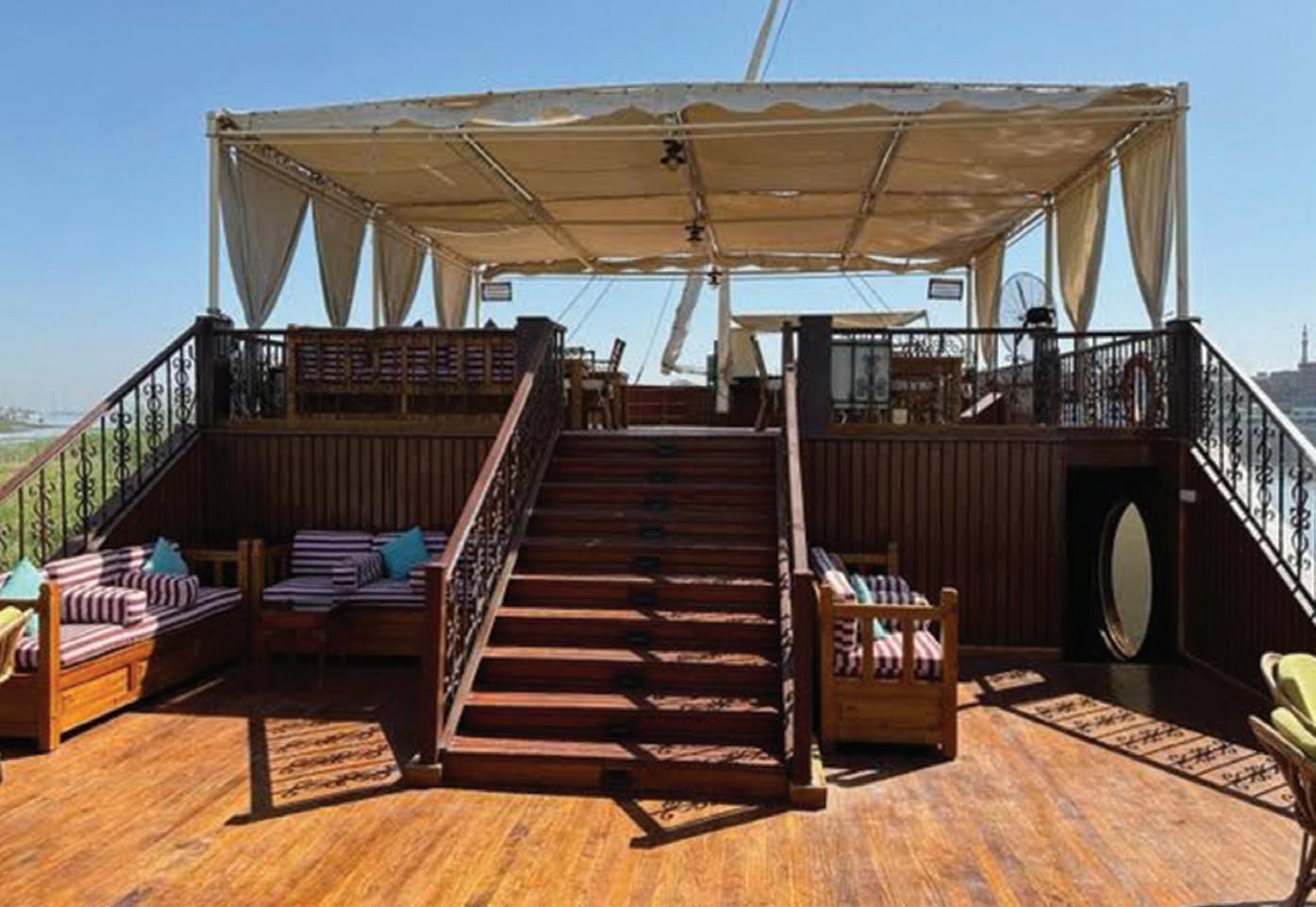
Decorated columns at Philae Temple

The Ptolemaic ruins of Kom Ombo, standing sentinel on a bend in the Nile, provide the most striking of settings for the Temple of Sobek and Haroeris, dedicated to the crocodile god and his falcon-headed counterpart.
On arrival in Aswan, we will visit Agilkia Island, the idyllic stage for a remarkable series of monuments saved from the flooded island of Philae, along with Aswan High Dam and the famous granite quarries.
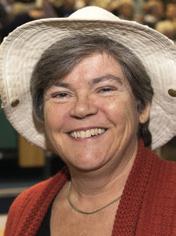
This tour will be led by Gillian Hovell , BA (Hons), a specialist in archaeology and the ancient world, who lectures at York University and for the Arts Society, British Museum and Ashmolean Museum. She runs online courses in archaeology, ancient history and Latin as ‘The Muddy Archaeologist’. Gillian’s expertise spans Neolithic to Roman Britain and the Greek and Roman Mediterranean, and her particular passion is the ebb, flow and interaction of ancient civilisations. Gillian will be joined by an expert local Egyptologist.
FITNESS / PRACTICALITIES: This tour requires a good level of fitness as, although our itinerary is not strenuous, we have a full programme of visits. Participants must be prepared for walking over rough ground and in dimly lit temples, using small river boats, and walking over steps, stairs, narrow gangplanks and boat roofs. Crew members are usually available to assist but participants must have a good level of mobility. We recommend consulting ACE’s usual fitness requirements as outlined in our Booking Terms & Conditions.
Please note that this description and itinerary represent a guide to what we hope to offer, and a final itinerary will be published on the ACE website when this tour is released on sale later in 2024. Please note that some visits and excursions may be subject to confirmation, opening times and/or the weather closer to departure. Some visits may be reordered depending on final sailing schedules.
Day 1 Flight from London to Cairo. Two nights in Cairo.
Day 2 Whole day excursion to Saqqara (including Step Pyramid and mastabas with remarkable paintings) and Memphis (limestone Colossus of Ramses). Short evening talk: An Introduction to Ancient Egypt
Day 3 Pyramids of Giza and Great Sphinx followed by new Grand Egyptian Museum in Giza (full collection of Pharaonic treasures from the tomb of Tutankhamun, Solar Boat Museum with original Pharaonic vessel). Flight from Cairo to Luxor. Overnight in Luxor.
Day 4 Embark a traditional dahabiya for seven nights. West Bank: Valley of the Kings (tombs of Horemheb, Seti I and Ramses III), Temple of Queen Hatshepsut (mortuary temple of 15th century BCE Egyptian queen) and Colossi of
Memnon, Ramesseum, Medinet Habu and Deir el-Medina. It may also be possible to visit the tomb of Tutankhamun at an additional supplement, subject to opening times.
Day 5 Vast temple complex of Karnak, Avenue of Sphinxes and Temple of Luxor. Cruise to Esna.
Day 6 Visit to Temple of Khnum (great hypostyle hall) at Esna. Cruise to Edfu.
Day 7 Visit to Ptolemaic Temple of Horus (most complete of all Egyptian temples) at Edfu. Cruise to Kom Ombo.
Day 8 Visit to Temple of Sobek and Haroeris at Kom Ombo. Cruise to Aswan.
Day 9 Optional excursion by air to Abu Simbel for Great Temple of Ramses II on shores of Lake Nasser (at an additional supplement), or free time on board. Afternoon: by motorboat to Elephantine Island.
Day 10 Morning at leisure on board. By motorboat to Agilkia Island (superb Ptolemaic monuments including Philae Temple), followed by visits to Aswan High Dam (one of the engineering wonders of the world) and ancient granite quarries.
Day 11 Disembark. Flight from Aswan to Cairo. Afternoon at leisure. Overnight in Cairo.
Day 12 Morning visits in Coptic Cairo: churches, Ben Ezra Synagogue, Coptic Museum. Flight from Cairo to London.
Full details, including the tour dates, cost, updated itinerary, confirmed vessel and accommodation, will be released later in 2024. To register your interest, please visit the ACE website or contact the office.
TOUR CODE: AENC25
March 25 – April 1, 2025
Attend Verdi’s Aida and Mozart’s Le Nozze de Figaro at the Metropolitan Opera, alongside Carnegie Hall performances featuring the Mahler Chamber Orchestra, Mitsuko Uchida and the Kronos Quartet
Enjoy a private visit and masterclass at the Julliard alongside other special experiences arranged by our Tour Director, Chair and Head of Historical Performance at the Royal College of Music Ashley Solomon
Appreciate New York’s architectural and artistic highlights including the Empire State Building and Metropolitan Museum of Art
For lovers of opera and classical music, there is nothing quite like the experience of live performances in New York’s world famous venues. Our tour will provide an engrossing introduction to the city’s musical heritage, interspersed with explorations of its architectural, artistic and political history.
Founded in 1883, the Metropolitan Opera stages a huge variety of operatic productions every year and in 2025 we will experience two operas here. We begin with Verdi’s Aida, in which rising operatic star Swedish soprano Christina Nilsson will make her Met debut in the title role, against the backdrop of magnificent new staging by Michael Mayer. We return for a performance of Mozart’s much-loved comic masterpiece Le Nozze de Figaro under the baton of Joana Mallwitz.
Our operatic programme will be complemented by concerts at Carnegie Hall, resplendent with its grand Italianate
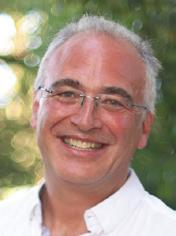
Tour Director
Professor Ashley Solomon , FRAM, FRCM, is Chair and Head of Historical Performance at the Royal College of Music and Director of Baroque ensemble Florilegium.
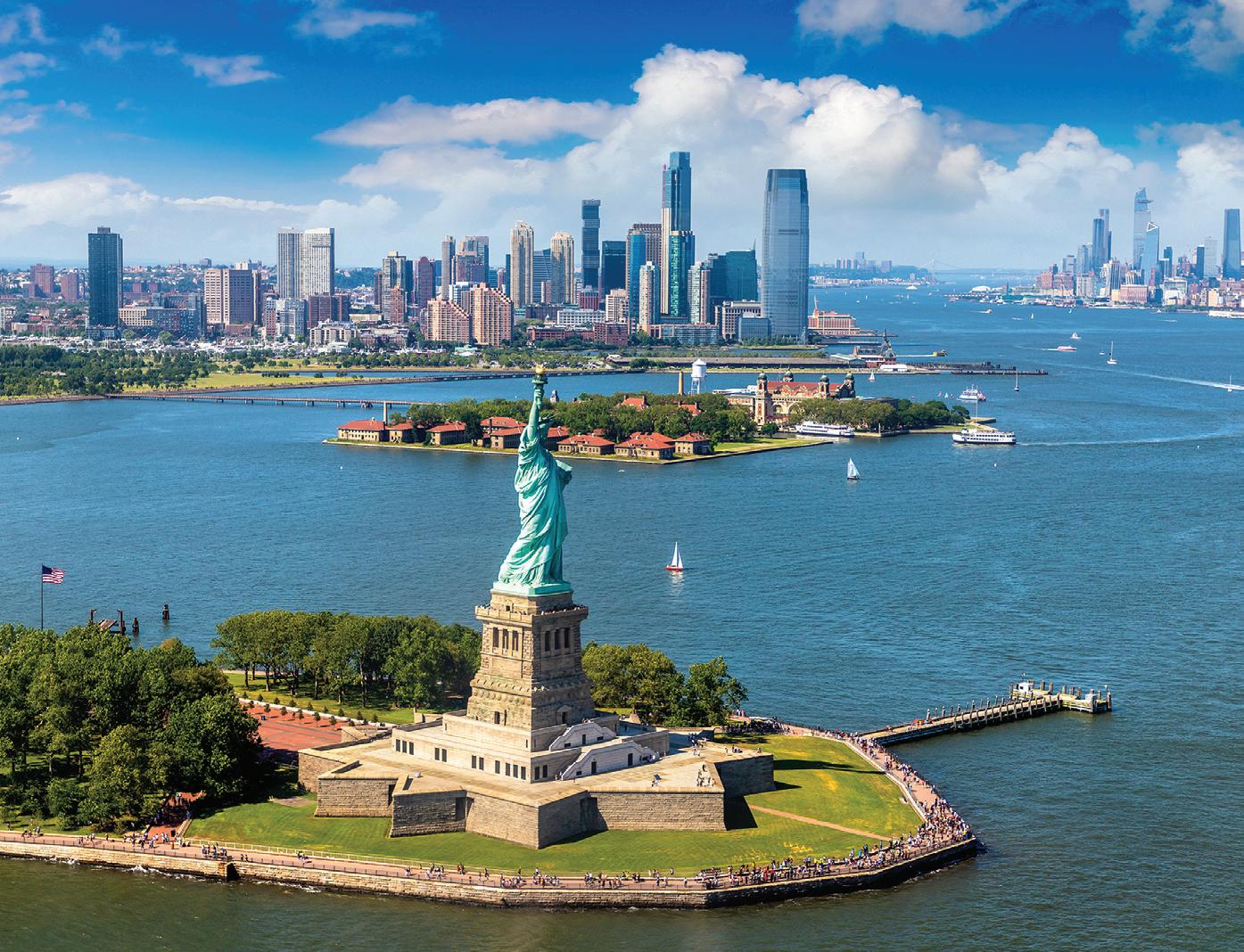
Please note that travel to and from New York is not included in the cost of this tour. We recommend that you book flights to arrive in New York by mid-afternoon on Day 1 (March 25). The group will assemble late afternoon at the hotel.
façade. We look forward to hearing Mozart’s piano concertos nos 18 and 21 alongside Janáček’s Mládí, brought to us by the Mahler Chamber Orchestra and pianist and director Mitsuko Uchida. The award-winning San Francisco-based Kronos Quartet will present an exciting concert featuring new works including the New York premiere of Aleksandra Vrebalov’s Gold Came From Space.
By contrast, we will enjoy an evening of more traditional favourites at the Lincoln Center’s Alice Tully Hall, where an ensemble of eminent players will perform Schubert’s ‘Trout’ Quintet alongside pieces by Mozart and W F Bach.
We hope to make very special visits to the Juilliard School – the renowned private performing arts conservatoire with which our Tour Director has strong links – and the Music Department of the Metropolitan Museum of Art. We will also welcome American countertenor
Derek Lee Ragin, a multi-award-winning artist who has performed at the Met, for a private guest talk.
The itinerary will take in further famous sites including Times Square, Central Park and Ground Zero, as well as the Statue of Liberty, which we will view on a harbour tour.
This tour will be based at the four-star New York Marriott Marquis Hotel, a smart modern property ideally located close to Times Square.


A good overall level of fitness is required for this tour, as it involves a moderate amount of city-based walking at a reasonable pace, on pavements which can be crowded. Some visits will be taken by public transport, an efficient way of getting around New York, so participants should feel comfortable using the subway and going up and down steps. Our itinerary includes a boat trip around the harbour, as well as some free time to balance the later evenings and allow opportunities for independent exploration. The tour personnel will be on hand to accompany group members during independent meal times, or invite group members to join them for these meals, if preferred.
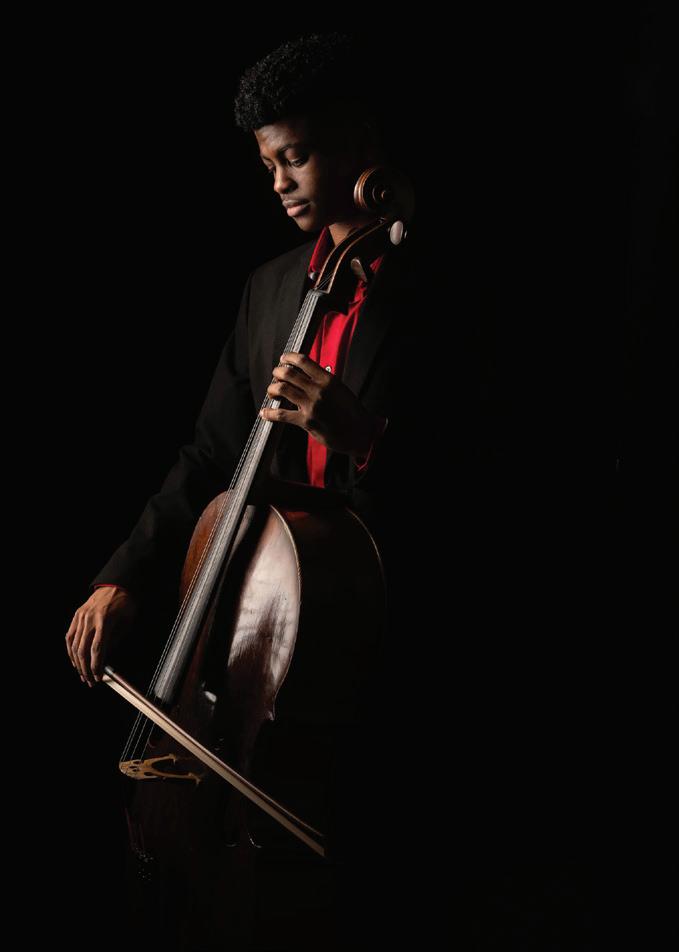
The itinerary represents a guide to what we hope to offer, and some elements, including the musical programmes, may be subject to change or confirmation. Our visits to the Julliard and Music Department of the Metropolitan Museum of Art will be confirmed nearer the time.
D ay 1 Tour assembles at the New York Marriott Marquis Hotel for seven nights. Welcome dinner.
D ay 2 Morning: welcome and introduction, followed by guided tour of New York on foot and by coach (St Patrick’s Cathedral, Rockefeller Center, Public Library, Grand Central Station, Washington Square, Greenwich Village, Financial District, Ground Zero, Times Square, Broadway, Central Park). Afternoon lecture: Aida and some free time. Evening performance at Metropolitan Opera House: Verdi Aida
D ay 3 Morning: guided tour of 9/11 Museum and optional independent visit to the Memorial. Free afternoon and evening.
D ay 4 Morning lecture on tonight’s performance, including guest talk with American countertenor Derek Lee Ragin, followed by harbour boat tour (views of Statue of Liberty and Ellis Island). Free afternoon. Evening performance at Carnegie Hall (Zankel Hall) featuring Kronos Quartet: Aleksandra Vrebalov Gold Came From Space (NY premiere); new work by Sun Ra with Terry Riley and Sara Miyamoto (NY premiere); new work by Benedicte Maurseth and Kristine Tjøgersen (world premiere).
D ay 5 Morning lecture on tonight’s performance, followed by visit to Empire State Building (weather permitting). Free afternoon. Evening performance at Carnegie Hall featuring Mahler Chamber Orchestra with Mitsuko Uchida
(piano & director): Mozart Piano Concerto No 18 in B flat, K 456; Janáček Mládí; Mozart Piano Concerto No 21 in C major, K 467.
D ay 6 Visits to the Frick Collection and Metropolitan Museum of Art (private guided tour of Music Department – subject to final confirmation). Late afternoon performance at Alice Tully Hall featuring Wu Han (piano), Julian Rhee (violin), Arnaud Sussmann (violin), Paul Neubauer (viola), Sterling Elliott (cello) & Anthony Manzo (double bass): W F Bach Fugue in F minor for violin, viola and cello; Mozart Adagio and Fugue in C minor for strings, K 546, Quartet in E flat for piano, violin, viola and cello, K 493; Schubert ‘Trout’ Quintet.
D ay 7 Morning lecture: Le Nozze de Figaro followed by visit to Juilliard School (masterclass – subject to final confirmation). Afternoon: backstage guided tour of the Metropolitan Opera (subject to rehearsal scheduling). Evening performance at the Metropolitan Opera House: Mozart Le Nozze de Figaro
D ay 8 Free morning followed by farewell lunch. Tour disperses approx 1430 at the hotel.
Cost of £5695 includes: accommodation based on sharing a twin or double bedded room, five operas/concert performances as described, seven breakfasts, one lunch, six dinners with water & coffee, excursions & admissions, gratuities for group services & all taxes.
Not included: return airfare, ESTA, travel insurance, double room for single use supplement £995.
TOUR CODE: MUNY25
May 16–30, 2025
Trace the span of Kazakhstan’s history from Bronze Age carvings to futuristic city landmarks
Explore Silk Road connections at the UNESCO site of Turkistan, home to a famous Timurid Imperial mausoleum
Discover Kazakhstan’s remarkable landscape and geology, including the awe-inspiring ‘Valley of the Castles’ at Charyn Canyon
A vast country harbouring immense cultural wealth, Kazakhstan is a land of crystal lakes and soaring mountains, ancient Silk Road monuments and 20th century cathedrals. To visit is to experience a staggeringly rich geological landscape, some of the most stunning scenery in the world, and a historical and cultural heritage that stretches from the Bronze Age petroglyphs at Tamgaly, through the Timurid mausoleum at Turkistan, to Sir Norman Foster’s futuristic creations in Astana.
We will begin in Kazakhstan’s historical former capital of Almaty, its name famously meaning ‘father of apples’. After familiarising ourselves with aspects of Kazakhstan’s history, geology and religious culture, we will make an excursion to one of its most magnificent and remote sites: Charyn Canyon, where the array of rare and characterful formations is testament to millennia of wind and water erosion. Meanwhile, the

Tour Director
Steve Mastin , MA, PGCE, FHA, studied history and classics before working as a schoolteacher for 17 years. A fellow of the Historical Association, Steve is a regular speaker at history conferences. He has travelled widely, and spent seven years living and working in Kazakhstan.

archaeological landscape of Tamgaly is home to 5000 ancient rock carvings (or petroglyphs), the majority dating from the Bronze Age.
Leaving Almaty behind, we will fly to the southern city of Shymkent, originally founded as a caravanserai connected with a nearby Silk Road settlement. From here we will discover Kazakhstan’s trading heritage with a visit to Turkistan, home to the 14th century mausoleum of Khoja Ahmed Yasawi, one of the best preserved monuments from the Timurid Empire.
Kazakhstan’s strikingly modern capital of Astana is the site of several astonishing buildings by Sir Norman Foster. We will seek to understand religious history and
“A fascinating range of well-chosen visits and experiences”
culture with visits to the city’s cathedral and mosque, while also tracing its extensive history at the new National Museum, housing exhibits ranging from ancient ornaments (including the armour belonging to Kazakhstan’s mysterious ‘golden man’) to artwork and ethnographic artefacts. The country’s recent history as part of the Soviet Union will also be explored at the ALZHIR Memorial Museum.


We will stay at several hotels, including centrally located four or five star establishments in Almaty, Shymkent and Astana, with simpler accommodation with views over the 14th century mausoleum (Hotel Khanaka) in Turkistan. Please note hotels are subject to final confirmation.
FITNESS / PRACTICALITIES: This tour will involve a significant amount of walking, frequently over uneven ground, particularly at Tamgaly and Charyn Canyon. Tamgaly is a remote site and travellers should be comfortable ascending rugged and rocky pathways here – although to maintain safety standards we will not attempt to cover the entire route during this tour. Many of Kazakhstan’s most important sites are spread out from one another and participants should expect some long overland journeys by coach (including some off-road stretches) plus two internal flights. The journeys to Charyn Canyon, Lake Issyk, Tamgaly and Turkistan will take between 2-3 hours each way depending on traffic. Participants should be prepared for basic
Travelling in Kazakhstan
Kazakhstan is not yet used to large groups of Western tourists. While we will endeavour to deliver the itinerary as accurately as possible, there will likely be some adjustments to the order and timings of visits on the ground, and we kindly request that travellers approach each day with a degree of flexibility. Please be assured that the Tour Personnel will communicate any significant changes clearly in advance of visits.
facilities on journeys and at the sites, although many places are now establishing more concrete visitor centres. Some visits will involve heights, including the Bayterek Tower in Astana.
While we will endeavour to offer a variety of meals across the tour, travellers should be mindful that dishes in Kazakhstan frequently include red meat as their primary ingredient, including beef, mutton and horse meat, which we may be offered on occasion (with alternative options available).
Participants should meet ACE’s fitness criteria in our Booking Terms & Conditions.
The itinerary represents a guide to what we hope to offer, and some elements may be subject to change or confirmation nearer the time. Sites can close or change their opening times at short notice; therefore, some visits may be reordered.
D ay 1 Flight from London to Almaty.
D ay 2 Arrive Almaty and transfer to Mercure Almaty City Centre for six nights. Free time and orientation walking tour. Welcome and introduction.
D ay 3 Morning lecture: The History of Kazakhstan. Visits in Almaty: Ascension Cathedral, WWII Memorial, Russian Imperial Governor’s Residence (exterior) and Central Mosque.
D ay 4 Whole day excursion to Charyn Canyon National Park (spectacular geology).
D ay 5 Issyk Museum, town and lake (site of discovery of ‘Golden Man’ whose remains are now displayed in Astana).
D ay 6 Morning lecture: Apples & Tulips are from Kazakhstan. Visits in Almaty: Green Bazaar, Museum of Arts and Republic Square. Optional evening performance (ballet or opera – subject to scheduling).
D ay 7 Whole day excursion to UNESCO site of Tamgaly, archaeological landscape in the Chu-Ili Mountains, site of 5000 Bronze Age petroglyphs.
D ay 8 Transfer by air to Shymkent and continue to UNESCO World Heritage site of Turkistan. Two nights at Hotel Khanaka. Optional nighttime walk (views of mausoleum).
D ay 9 Visits to Mausoleum of Khoja Ahmed Yasawi and ancient Silk Road desert fortress of Sauran.
D ay 10 Return to Shymkent via Arystan Bab Mausoleum and Otrar archaeological site. Overnight at DoubleTree by Hilton, Shymkent.
D ay 11 Transfer by air to Astana for four nights at Hilton Garden Inn. River cruise through central Astana and walking tour of old city. Evening: operatic performance (subject to scheduling).
D ay 12 Morning lecture: Kazakhstan in the Soviet Era. Visits to National Museum of Kazakhstan, Independence Square, Hazrat Sultan Mosque and Palace of Peace & Reconciliation.
D ay 13 Morning lecture: The Modern Age of Kazakhstan followed by Khan Shatyr (shopping centre designed by Sir Norman Foster) and ALZHIR Memorial Museum.
D ay 14 Bayterek Tower and Assumption Cathedral. Evening: farewell drinks reception with opportunity to talk about modern life in Kazakhstan with guests.
D ay 15 Return flight from Astana to London.
Cost of £5995 includes: return airfare, accommodation based on sharing a twin or double bedded room, thirteen breakfasts, ten lunches (five packed), eleven dinners with water & tea, excursions & admissions, gratuities & all taxes. Not included: travel insurance, double room for single use supplement £575. TOUR CODE: KAZA25
October 11–28, 2025
Discover the history of over 5000 years of Chinese civilisation, exploring the extraordinary traditional architecture, fine art, garden design and calligraphy
Visit several of China’s ancient and modern capitals, including Xi’an, Luoyang, Hangzhou, Nanjing and Beijing
Highlights will include the Great Wall, the Forbidden City and the Terracotta Army, as well as many lesser-known sites
While in English the term ‘civilisation’ denotes social organisation into cities, the Chinese term wen hua – which is usually translated as ‘civilisation’ – is strongly connected with the idea of a written culture. It is through the development of writing, and the pictograms which contain a wealth of layered meaning dating back thousands of years, that the world is understood.
During our journey we will explore the early dynasties of China – once believed to be mythical. We will travel along the Yellow River Valley, often considered to be the cradle of Chinese civilisation, from Xi’an to Luoyang and Zhengzhou, all of which enjoyed the status of capital city at different periods in Chinese history. From the early elaborate bronzes to the world of the modern Chinese artist, by way of architecture, sculpture, porcelain, garden design and the fast and furious martial arts of Shaolin monks, we will encounter the many facets of Chinese art and creativity.

This tour will be led by Elizabeth Morrell , BA, a sinologist and Chinese speaker who has been visiting China since 1976, when she studied modern Chinese literature at Fudan University in Shanghai. Elizabeth wrote one of the earliest guidebooks to China, published in 1984.
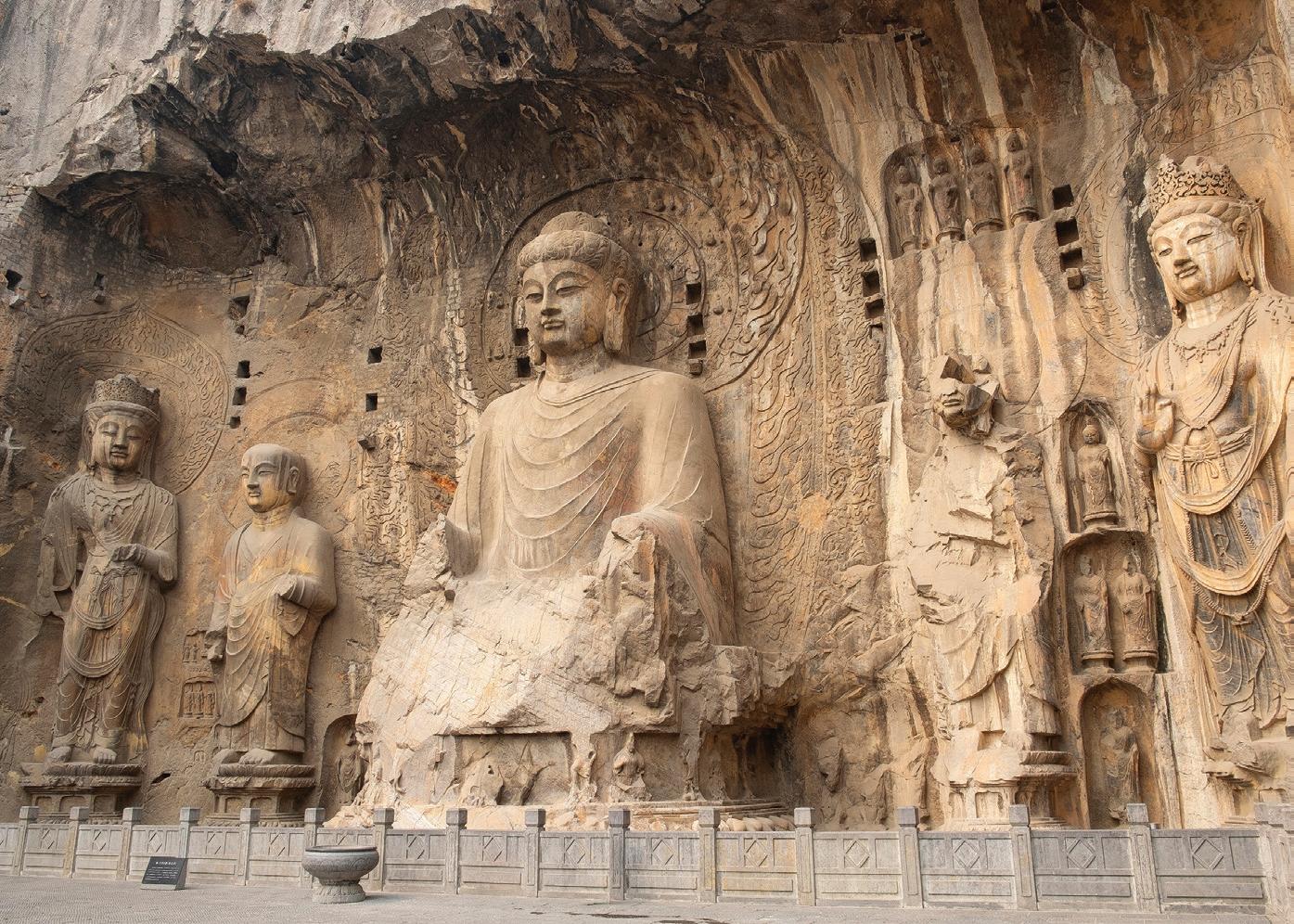
Our tour will encompass traditional Chinese architecture, as well as fine art in many forms, which will be represented in the rare Song dynasty sculptures at the Jinci Temple and the painting and calligraphy collection at the Shanghai Museum, while modern art is found at the 798 Art District in Beijing and the Zhejiang Art Museum in Hangzhou. Shanghai Museum and the Southern Song Dynasty Guan Kiln Museum at Hangzhou will introduce us to beautiful porcelain, while elegant Chinese garden design awaits us in Suzhou, where the classical gardens are a UNESCO World Heritage site.
Our journeys will be undertaken using a mixture of the extensive high-speed rail network and private coach, depending on which is most comfortable and efficient for each journey.
We will stay in comfortable modern hotels of a four and five-star standard; please note hotel details may be subject to adjustment.
FITNESS / PRACTICALITIES: This is a comprehensive tour, designed to make the most of our stay in China and introduce travellers to the rich variety of sites and experiences at each of our stops. In line with this, travellers should be prepared for a considerable amount of walking, particularly as many historical sites are spread over extensive areas (e.g. the Forbidden City). Some buildings have lots of steps and uneven surfaces. Our tour includes several long journeys by rail and coach. Station platforms are long and the coach will not always be able to stop close to the station entrance, so travellers should be comfortable walking longer distances here too. There will be several early starts, and certain sites can become crowded during busy periods. Participants should meet ACE’s usual fitness criteria, outlined in our Booking Terms & Conditions.
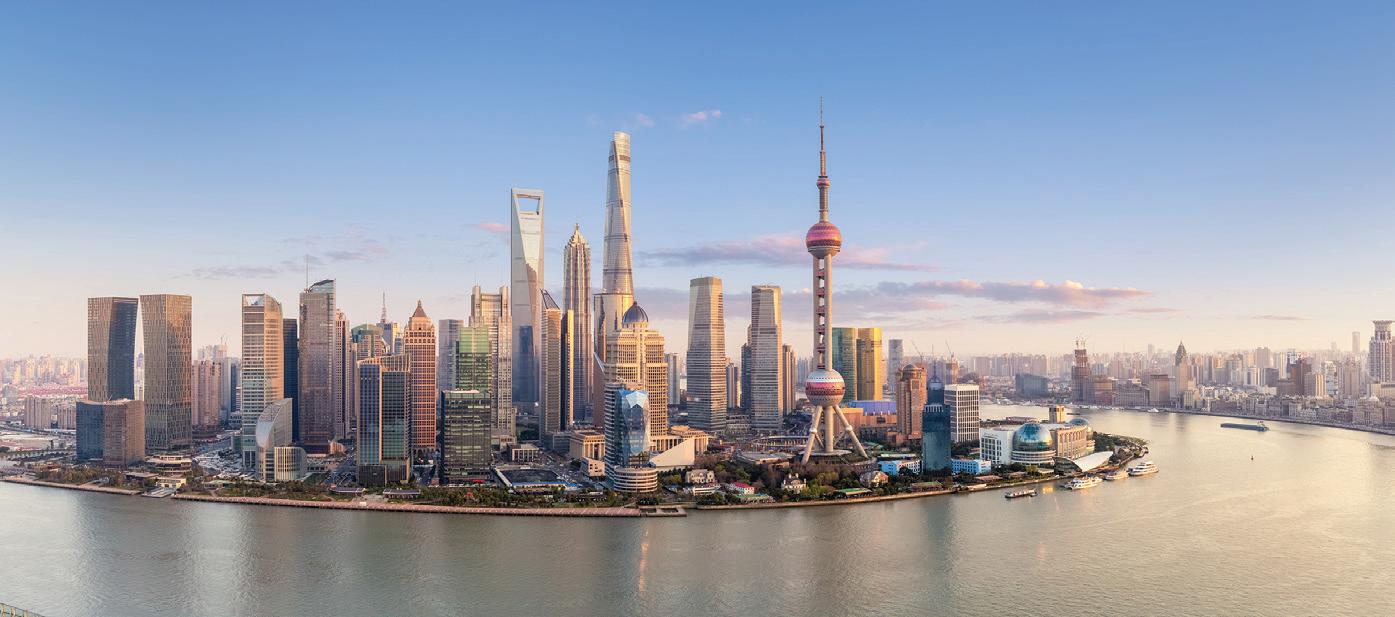
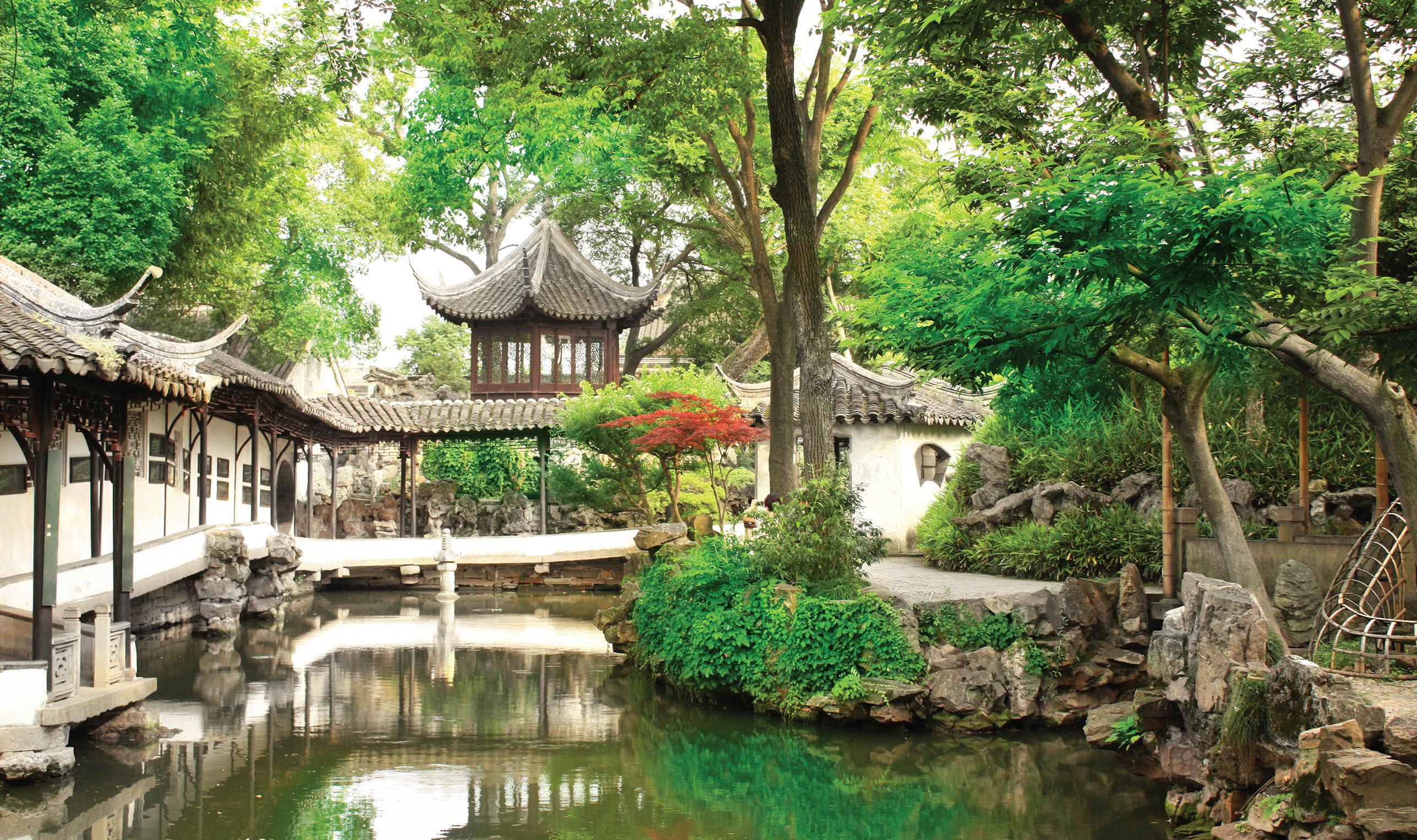
The itinerary represents a guide to what we hope to offer, and some elements may be subject to change or confirmation nearer the time. Please see the ‘Travelling in China’ section for more information.
Like many countries around the world, China continues to be marked by the effects of the pandemic, and international tourism is only just beginning to re-establish itself. Some areas are quieter, while others remain busy, particularly with local visitors. Travellers should be prepared for more flexibility than usual. Many key tourist sites now offer free entry for everybody, however tickets for both these and our train journeys are released shortly before our intended visits, and for many sites advance group bookings are no longer available. Therefore, some visits will only be fully confirmed nearer to departure, and the itinerary may need to be adjusted or reordered on the ground. Sites can also sometimes close at short notice. Bag/luggage checks, ID checks and body scans are all part of the routine of accessing key sites and museums, as well as at railway stations and on trains. The experienced Tour Personnel will advise you further during the tour, but if you have any questions in advance, please consult the ACE office.
“We were expecting a high quality and Elizabeth Morrell delivered in spades. She is also charming, personable and a pleasure to travel with”
– ACE customer on a previous tour led by Elizabeth Morrell
D ay 1 Flight from London to Beijing.
Day 2 Arrive Beijing and transfer to Park Plaza Beijing Wangfujing for three nights. Lunch with a Beijing family. Afternoon: Hutong area and Drum Tower (optional climb). Evening introductory talk.
Day 3 Whole day excursion to the Great Wall at Mutianyu, returning via 798 Art District. Free evening.
D ay 4 Whole day excursion to Tiananmen Square, Forbidden City and Summer Palace. Free evening.
Day 5 By high-speed train to Taiyuan. Afternoon: Jinci Temple for Song dynasty sculptures. Two nights at Yun Jin Cheng Hotel, Pingyao.
D ay 6 Pingyao old town: Confucian Temple, city wall, barbican, bank and Temple of the City God. Free evening.
D ay 7 By high-speed train to Xi’an. Afternoon: Xi’an Museum and Small Wild Goose Pagoda. Two nights at Titan Times Hotel. Evening talk.
D ay 8 Whole day excursion to Terracotta Army site outside Xi’an. Return via Gao’s Mansion (calligraphy class), Drum and Bell Towers, market. Free evening.
D ay 9 By high-speed train to Luoyang. Afternoon: Longmen Buddhist Grottoes. Overnight at Ramada by Wyndham, Luoyang Downtown. Free evening.
D ay 10 White Horse Temple and Shaolin Temple. Continue for overnight at Hilton Zhengzhou.
D ay 11 By train to Nanjing on Yangtze River. Afternoon: Sun Yat-Sen’s Mausoleum and Ming Xiaoling. Two nights at Jinling Mandarin Garden Hotel Nanjing. Free evening.
D ay 12 Nanjing Museum, Zhonghua Gate and Yangtze River. Optional visit to Confucius Temple. Free evening.
D ay 13 By train to Suzhou for overnight at Scholars Hotel. Suzhou: Garden of the Humble Administrator, boat ride on canal, silk museum. Free evening.
D ay 14 Transfer to Hangzhou on West Lake: tea plantation, Zhejiang Provincial Museum and West Lake (boat ride). Two nights at Lakeview Hotel.
D ay 15 Hangzhou: Southern Song Dynasty Guan Kiln Museum, Grand Canal Museum and Temple of the Soul’s Retreat. Free evening.
D ay 16 By train to Shanghai: walking tour of Bund area and Yuyuan Garden. Two nights at Yangtze Boutique Shanghai. Free evening.
D ay 17 Morning: Shanghai Museum in Pudong, further exploration of Pudong area. Free afternoon in Shanghai before farewell dinner.
D ay 18 Flight from Shanghai to London.
Cost of £5995 includes: return airfare, accommodation based on sharing a twin or double bedded room, sixteen breakfasts, fifteen lunches, six dinners with soft drinks, beer or Chinese tea, excursions & admissions, gratuities & all taxes. Not included: visa, travel insurance, single room supplement £995. TOUR CODE: CHIN25
October 10–21, 2025

Journey to the heart of Central Asia to discover an extraordinary civilization
Visit the Silk Road cities of Khiva, Bukhara and Samarkand
Experience Samarkand’s famed Registan Square, bordered by elegant madrasas in shades of gold and turquoise
Uzbekistan has long been a prized territory: in the 4th century BCE Alexander the Great married the daughter of a local chieftain, and in the 13th century CE Genghis Khan waged war over the region. It was Timur, better known to us as Tamerlane, who finally overpowered the Mongols and established Samarkand as the glittering capital of an empire encompassing much of Central Asia.
Our tour begins in the modern capital, Tashkent, where the exhibits of the city’s museums will set our investigations in context. We will explore Khast-i-Imam, an extraordinary architectural complex in the heart of the old city that forms the spiritual centre of Tashkent. From there, we head to the oasis town of Khiva –once the final stopping-point of caravan trains before they set out on the long
journey across the desert for Persia. The inner citadel of Ichan Kala, surrounded by huge crenellated clay walls, was the first site in the country to be listed by UNESCO. Architectural delights include the Juma Mosque, with its forest of carved wooden columns – the oldest of which date from the 10th century.
We will traverse the Kyzylkum desert to Bukhara, a centre of culture and civilisation from the 6th century BCE. The armies of Genghis Khan left little intact from the city’s earliest days, with a notable exception being the perfectly preserved 10th century Ismail Samani Mausoleum.
Founded as early as the 7th century BCE, the city of Samarkand is one of the oldest in all of Central Asia. Captured by Alexander the Great in 329 BCE, it passed through the hands of successive civilisations before reaching its zenith as the capital of the Timurid Empire. The archaeological site of Afrasiab is preserved, along with astonishing frescoes bearing testimony to the vanished Sogdian civilisation that dominated trade along the Silk Road for centuries.
Although the city walls of Samarkand are gone, the medieval layout remains in the narrow streets and many traditional houses. A highlight of our visit here will

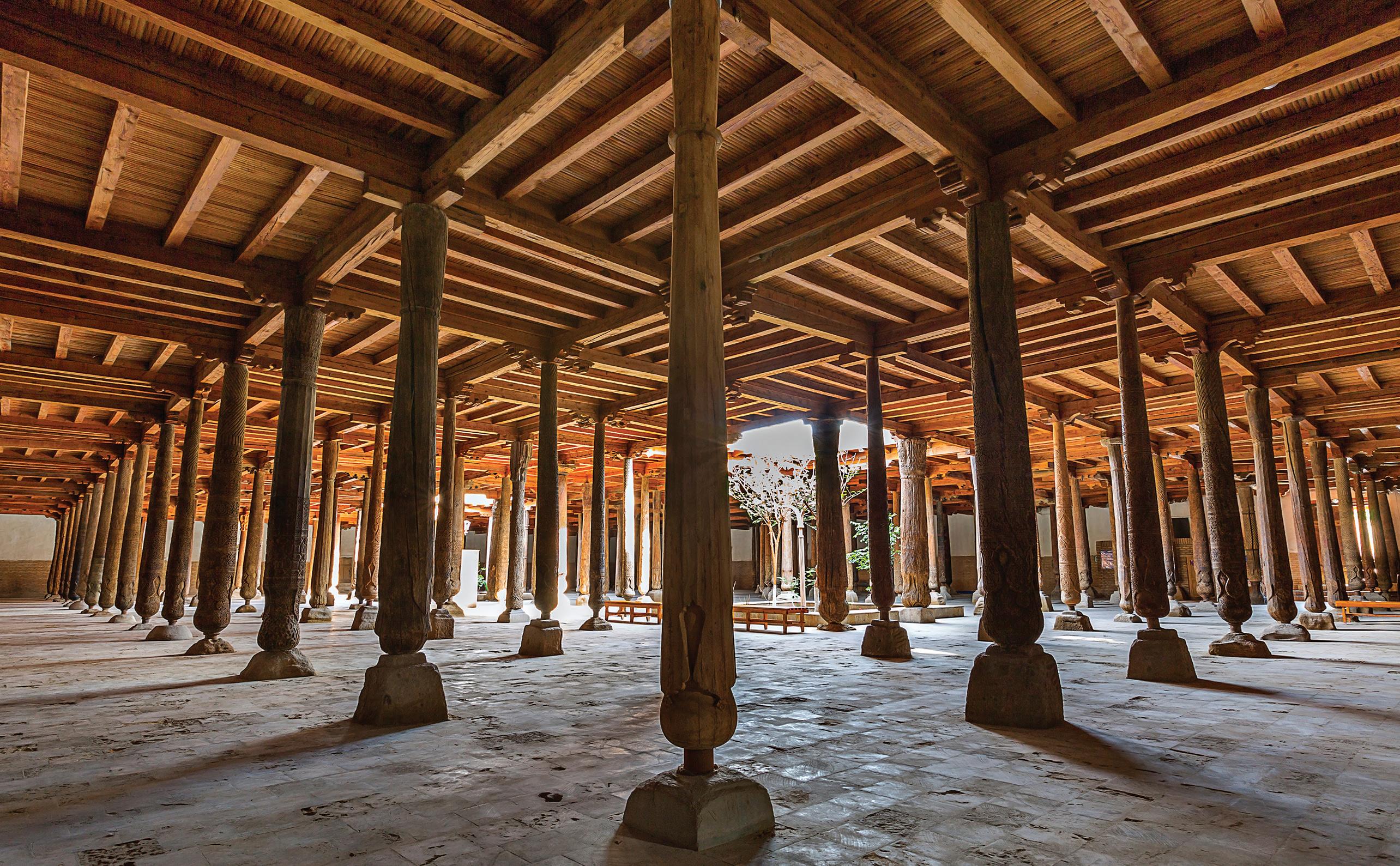
be the awe-inspiring Registan Square, bordered on three sides by elaborate madrasas and one of the most important complexes of Islamic architecture in the world. Our tour will also include an excursion to Shakhrisabz, birthplace of Timur himself and recipient of his considerable architectural patronage.
We will stay at comfortable three or fourstar hotels close to the key sites on our tour, and our visits will be complemented by regular talks given by our Tour Director.
FITNESS / PRACTICALITIES: A good level of general fitness and stamina is required for this tour, and participants should meet ACE’s minimum fitness criteria, as outlined in our

This tour will be led by Steve Mastin , MA, PGCE, FHA, who studied history and classics before working as a school teacher for 17 years. He has organised and led many trips abroad, and has also worked overseas training history teachers in Singapore, Australia and Kazakhstan. Steve is a regular speaker at history conferences.
“The visits to the fabulous World Heritage sites were wonderful”
– ACE customer on a previous Uzbekistan: Cities of the Silk Road tour
Booking Terms & Conditions. The tour involves very full days of sightseeing as well as some long and tiring coach journeys (for example, the journey from Khiva to Bukhara takes eight hours with two stops en route), and there are poor road conditions in places. Some visits involve traversing steep steps and uneven ground.
Please note that this description and itinerary represent a guide to what we hope to offe. Please note that some elements may be subject to change, confirmation or reordering closer to departure.
D ay 1 Flight from London.
D ay 2 Arrive Tashkent and transfer to hotel for early check in and time to rest. Afternoon: State Museum of History of Uzbekistan (archaeological and ethnographical). Overnight in Tashkent.
D ay 3 Morning: Khast-i-Imam architectural complex (spiritual centre of Tashkent) in the heart of the old city. Afternoon: brief visit to Museum of Applied Art followed by domestic flight to Urgench and transfer to city of Khiva for two nights.
D ay 4 Khiva: Ichan Kala (ancient citadel surrounded by crenellated clay walls), Juma Mosque, Kunya Ark Fortress, Kalta Minor Minaret and Muhammad Amin-Khan Madrasa.
D ay 5 Drive through the Kyzylkum Desert, occasionally sighting the River Oxus (now the Amu-Darya) crossed by Alexander the Great in 329 BC. Three nights in Bukhara.
D ay 6 Bukhara: Poi-Kalyan architectural complex, Mir-i-Arab Madrasa, Kalyan Mosque and Minaret, Ulugh Beg and Abdulaziz Khan Madrasas. Afternoon: Lyabi-Hauz and madrasas.
D ay 7 Bukhara: Tchor Minor Mosque, Sitora-i-Mokhi Khossa, 10th century Samanid Mausoleum, Chasma-Ayub Mausoleum (‘Job’s Spring’), Bolo-Hauz Mosque and Ark Citadel.
D ay 8 Free morning to explore local sites and markets. Afternoon: transfer by train to Samarkand. Three nights in Samarkand.
D ay 9 Samarkand: famed Registan Square with 15th and 17th century madrasas, Guri Amir Mausoleum (burial place of Timur), Bibi Khanum Mosque and colourful Siyob Bazaar.
D ay 10 Excursion to Shakhrisabz, hometown of Timur: Portal of Ak-Saray Palace, Dor-us Saodat Memorial Complex, Dor-ut Tilavat Ensemble.
D ay 11 Samarkand: Shakhi-Zinda tiled funerary complex, observatory built by Ulugh Beg. Afternoon at ancient site of Afrasiab (rare Sogdian fresco) followed by train transfer to Tashkent for overnight.
D ay 12 Flight from Tashkent to London.
Full details, including the cost, updated itinerary and accommodation, will be confirmed later in 2024. To register your interest, please visit the ACE website or contact the office. TOUR CODE: UZBK25
October 13–27, 2025
Visit some of the finest havelis, the traditional townhouses and mansions of Rajasthan, renowned for their graceful architecture and fascinating interiors, and meet some of the people behind their restoration
Stay in a selection of characterful heritage properties
Celebrate Diwali, the Hindu Festival of Light, during our stay in the desert city of Jaisalmer
With archaeological evidence of multistorey and courtyarded structures dating back more than 5000 years in Rajasthan, grand townhouses and mansions have long been status symbols and showcases for the artistic taste of the region’s wealthy elite. The form reached its aesthetic zenith from the 17th to the 19th centuries, as, through years of Mughal and colonial rule, rich merchants, nobles and minor royals, even temple elders creating ‘homes’ for their deities, outdid one another in the scale, form and artistic exquisiteness of their havelis.
The classic havelis of the period are built from local red sandstone, three or four storeys tall, with an outer and inner courtyard. The façades teem with bays and balconies, sunshades and screen windows, fluted pillars and intricately patterned carvings. Within, the bustle of the city is forgotten, recalling the Persian origin of the word ‘haveli’, meaning ‘enclosed place’. Cool and peaceful, set around fountains and sacred tulsi plants, vibrantly colourful frescoes adorned the walls, while guest rooms were lavish showcases for the work of the most skilled local craftspeople, in wood, stone and precious metals.
Following independence in 1947, when the Princely States were merged and the jagirs (fiefdoms) abolished, special privileges and the Privy Purse were withdrawn from the erstwhile ruling families, and the lesser nobility found
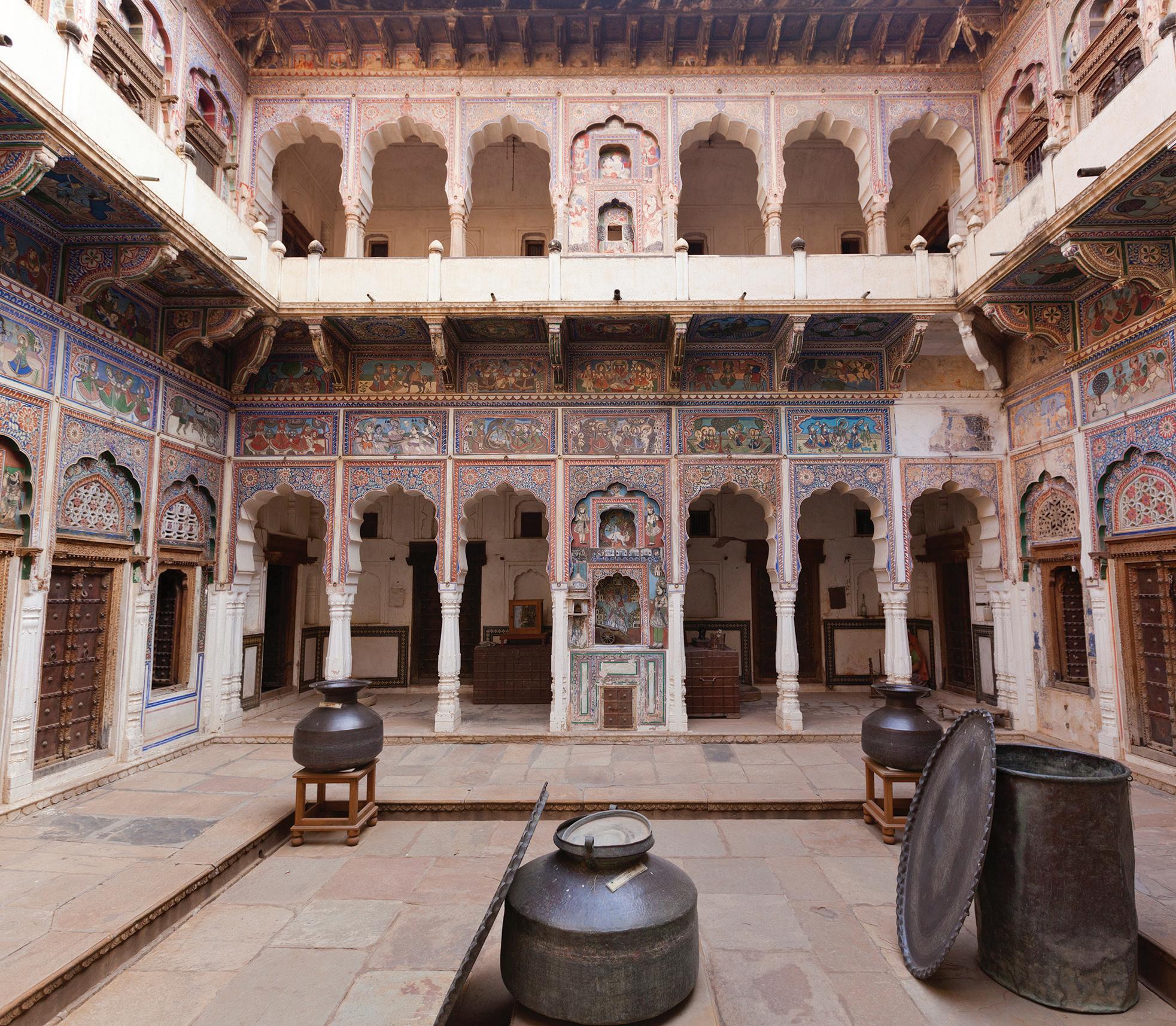
their extravagant homes a huge financial liability. Thousands were abandoned, left to become derelict until enterprising pioneers saw the opportunity to restore them to their former beauty and repurpose many as heritage hotels, ranging in size from the intimate to the palatial. The artistic riches that were once reserved for the private guests of the wealthy are now available for intrepid enough travellers to enjoy.
Today, these beautiful buildings comprise one of the most important aspects of India’s cultural heritage, and form the focus of this memorable tour. We will stay in several characterful heritage properties, including The Claridges in New Delhi; the meticulously restored, 33-room Vivaana Culture Haveli near Mandawa; RANVAS, part of Nagaur’s historic fort; and the 1920s Daspan House in Jodhpur.
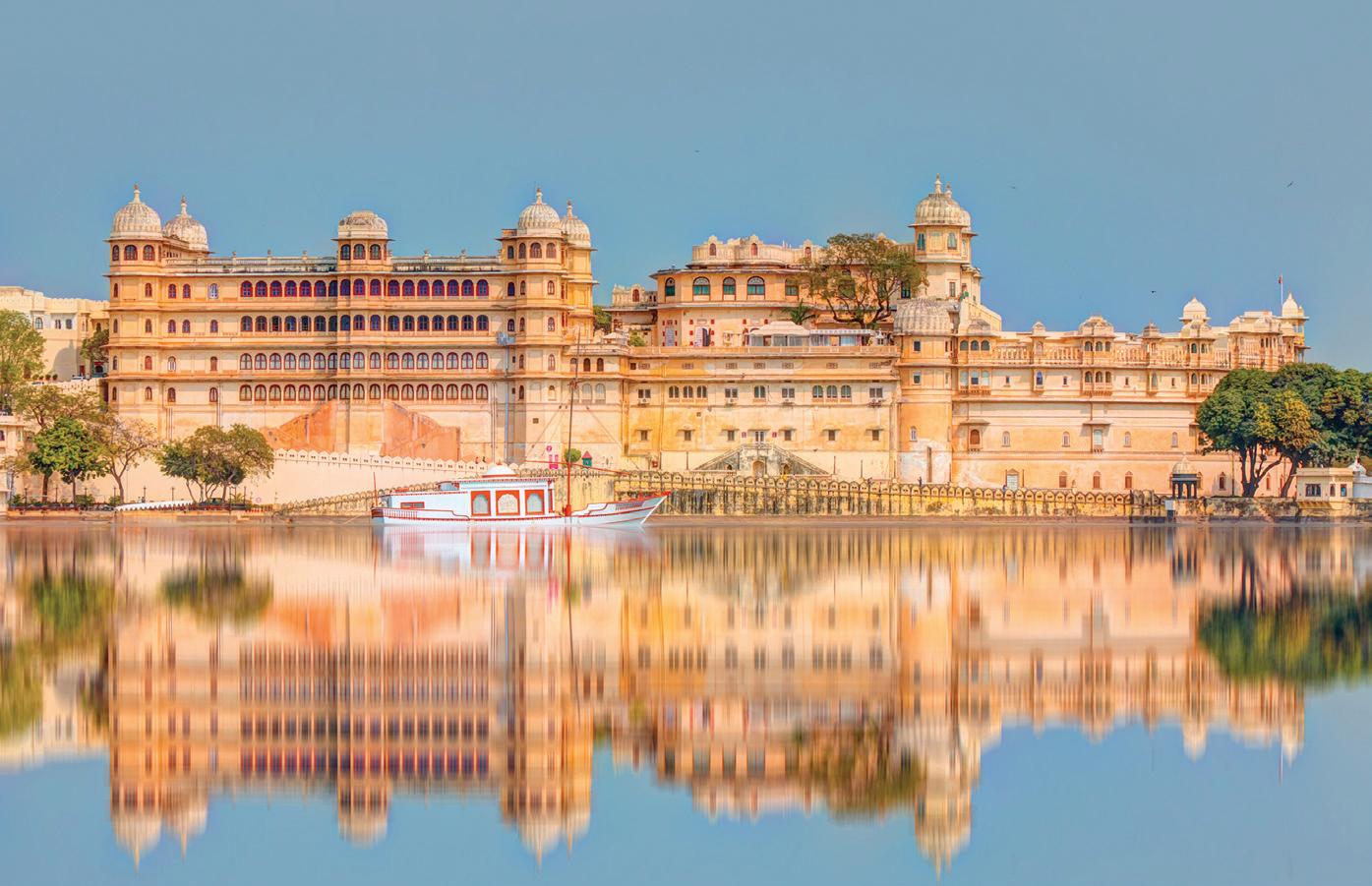

Rajasthan is the classic destination for an introductory tour of India. We will have the opportunity to experience the colonial grandeur of Lutyens’ New Delhi; the capital’s spectacular 17th century Jama Mosque; and Humayun’s Tomb, architectural inspiration for the Taj Mahal. We will also marvel at Jodhpur’s sea of blue houses; the intricately beautiful Jain temple complex of Ranakpur; majestic Jaisalmer Fort, rising dramatically from the sands of the Thar Desert; and the fairy-tale lake palaces of Udaipur. We will also be privileged to join Diwali celebrations in Jaisalmer, famous for its Festival of Light lanterns, colourful costumes and evening parade.
FITNESS / PRACTICALITIES: Participants should have a good level of fitness, mobility and stamina for this tour, which involves a significant amount of travel by coach, as well as time spent walking and standing, including over rough and uneven ground, and up steps. The coach journey from Nagaur to Jaisalmer will be approximately 7 hours and the journey from Delhi to Mandawa and Jaisalmer to Jodphur approximately 5.5 hours. Other coach journeys will be around 2-4 hours, all with comfort stops. This tour involves 7 separate hotel stays to make the most of our time in Rajasthan and include a variety of havelistyle accommodation. Please be aware some sites may be crowded.
ITINERARY
The itinerary represents a guide to what we hope to offer, and some elements may be subject to change or confirmation nearer the time, or dependent on local conditions.
D ay 1 Depart London Heathrow on Air India, arriving Delhi late evening. Transfer to The Claridges, Delhi, for two nights.
D ay 2 Visits to Humayan’s Tomb, Qtub Minar, Lutyens’ New Delhi and Jama Mosque. Walking/ rickshaw tour of Old Delhi. Dinner and cultural show at Kathika Haveli.
D ay 3 Exploration of havelis and bazaars of Mandawa. Three nights at Vivaana Culture Haveli.
D ay 4 Visits to fine havelis in Mukundgarh, Dundlod and Nawalgarh.
D ay 5 Continued exploration of the Shekhawati region.
D ay 6 Morning: transfer to Nagaur, important centre of Sufism. Afternoon: leisurely walking tour of historic fort (part of which has been converted to a comfortable hotel – RANVAS –where we spend two nights) and surroundings. Dinner of Rajasthani cuisine.
D ay 7 Day at leisure in Nagaur to relax, or explore independently.
D ay 8 Drive deep into the Thar Desert to sandstone splendour of Jaisalmer. Late afternoon: picturesque dunes and abandoned village of Kuldara. Sunset private dinner on the dunes. Two nights at luxury Suryagarh Hotel.
D ay 9 Exploration of Jaisalmer (fort, havelis and temples). This evening is Diwali, and we will witness the festivities before taking dinner at the hotel.
D ay 10 Transfer to Jodhpur: walking tour of old town. Two nights at heritage boutique Daspan House Hotel.
D ay 11 Morning: colossal Mehrangarh Fort and royal cenotaph of Jaswant Thada. Afternoon at leisure.
D ay 12 Travel to Narlai via 15th century temple complex at Ranakpur. Overnight at heritage Rawla Hotel. Evening village walk and private dinner in a traditional stepwell.
D ay 13 Early departure for Udaipur (City Palace and lunch at Amet Haveli). Overnight at Taj Fateh Prakash Palace.
D ay 14 Domestic flight to Delhi and connecting overnight international flight to Heathrow (day use of hotel rooms at Delhi Airport included).
D ay 15 Arrive Heathrow.
Full details, including the cost and Tour Director, will be confirmed later in 2024. To register your interest, please visit the ACE website or contact the office.
TOUR CODE: HAVR25
January 24–30, 2025
Experience a specially chosen selection of Mozart’s music in the glorious surroundings of Salzburg
Hear from celebrated international performers of Mozart, including the Vienna Philharmonic, Ádám Fischer and Jordi Savall
Enjoy a performance of Monteverdi’s L’Orfeo featuring Rolando Villazón in the title role
This tour commences with Ádám Fischer leading the Vienna Philharmonic and star pianist Igor Levit in performances of Mozart’s Piano Concerto No 27 in B flat and Symphony No 38 – the ‘Prague Symphony’.
We continue with a production of Monteverdi’s L’Orfeo starring Rolando Villazón in the title role. The great Spanish conductor Jordi Savall later takes to the podium with Le Concert des Nations in a performance of Mozart’s unfinished Mass in C minor. This new version by Savall and Guglielmi will be heard for the first time during Mozart Week. We will then enjoy some more intimate music with a recital by the celebrated Hagen Quartet featuring pieces by Bach, Haydn and Mozart.
At the Grosses Festspielhaus we will once again be captivated by the Vienna Philharmonic, conducted by Thomas Guggeis and accompanied by soprano Sonya Yoncheva.
Uncovering Salzburg’s musical heritage, we will explore Mozart’s birthplace and his early home, the Wohnhaus, and enjoy a private tour of original manuscripts with an archivist of the Mozarteum.
We will stay at the four-star superior Hotel Imlauer Pitter Salzburg.
FITNESS / PRACTICALITIES: This tour involves a significant amount of walking mainly over flat ground. There may be snow and ice at this time of year. Some terrain is cobbled and pavements in Salzburg can be tricky to navigate. Participants should have a good overall level of fitness and mobility and consult our minimum fitness requirements in our Booking Terms & Conditions.


Tour Director
Professor Ashley Solomon is a Fellow of the Royal College of Music and the Royal Academy of Music, Chair and Head of Historical Performance at the Royal College of Music, and Director of early music ensemble Florilegium.
The itinerary represents a guide to what we hope to offer, and some elements may be adjusted nearer the time. Performances are subject to confirmation by the festival office and some visits are weather dependent.
D ay 1 Depart London Gatwick 0915 on British Airways, arriving Salzburg 1215. Transfer to Hotel Imlauer Pitter Salzburg for six nights. Welcome and introductory talk.
D ay 2 Morning lecture and guided walking tour of Salzburg, including Mozart’s birthplace and Cathedral. Free afternoon. Evening festival concert at Grosses Festspielhaus featuring Vienna Philharmonic with Ádám Fischer (conductor) and Igor Levit (piano): Haydn Symphony in F minor ‘La Passione’; Mozart Piano Concerto in B flat, K 595, Symphony in D, K 504 ‘Prague’.
D ay 3 Morning lecture and visit to Mozart’s Wohnhaus. Afternoon festival opera at Haus Für Mozart featuring Rolando Villazón (Orfeo), Ensemble L’Arpeggiata and Vienna Philharmonic Chorus: Monteverdi L’Orfeo. Evening concert at Grosser Saal featuring Le Concert des Nations and La Capella Nacional de Catalunya with Jordi Savall (conductor) and soloists: Mozart Mass in C minor, K 427 (premiere of new version).
D ay 4 Whole day excursion to Salzkammergut area including private visit to Kaiservilla. Evening concert at Grosser Saal featuring Collegium Vocale Gent with Philippe Herreweghe (musical director): Bach cantatas Liebster Gott, wenn werd ich sterben, BWV 8, Warum betrübst du dich, mein Herz, BWV 138, and Die Elenden sollen essen, BWV 75.
D ay 5 Morning: Mozarteum Autograph Vault. Afternoon performance at Grosser Saal featuring Hagen Quartet: Bach Die Kunst der Fuge, BWV 1080: ‘Contrapunctus’ I-IV; Haydn String Quartet in G, Op 54; Mozart String Quartet in G, K 387. Evening lecture.
D ay 6 Morning: further guided walking tour of Salzburg, including San Sebastian Church and Linzer Gasse. Free afternoon. Evening concert at Grosses Festspielhaus featuring Vienna Philharmonic with Thomas Guggeis (conductor) and Sonya Yoncheva (soprano): Bach Brandenburg Concerto No 1 in F, BWV 1046; Handel Arias of Cleopatra from Giulio Cesare in Egitto, HWV 17 – ‘Se pieta di me non senti’, ‘Non disperar, chi sà’, ‘Piangerò la sorte mia’; Mozart Adagio and Fugue in C minor, K 546, Symphony in G minor, K 550.
D ay 7 Depart Salzburg 1025, arriving Gatwick 1125.
Cost of £4295 includes: return airfare, accommodation based on sharing a classic twin or double bedded room, performances as described, six breakfasts, six dinners with water & coffee, excursions & admissions, gratuities & all taxes.
Not included: travel insurance, classic double room for single use supplement £495.
TOUR CODE: MOZS25
March 17–22, 2025
Visit the city described as the ‘jewel box’ of Germany, discovering a wealth of cultural riches, including magnificent collections of porcelain
Enjoy an excursion to Meissen and go behind the scenes at the celebrated porcelain factory
Explore the outstanding collections of the refurbished Gemäldegalerie Alte Meister and enjoy a performance of Mozart’s Le nozze di Figaro at Dresden’s Semperoper
“There are unbelievable treasures of all kinds in this beautiful place,” wrote Goethe of Dresden.
The Royal Palace, the former seat of the Saxon government, hosts the fabulous Green Vault treasure chamber. The gilded and mirrored Baroque chambers of the Historic Green Vault reveal items collected by Augustus the Strong.
The Zwinger is a vast complex of formal gardens, ornate fountains and grand pavilions, and contains the Dresden porcelain collection also assembled by Augustus the Strong. The refurbished Old Masters Picture Gallery houses works by Raphael (notably his Sistine Madonna), Botticelli, Velázquez, Dürer, Vermeer and Rembrandt.
Meissen, a medieval hotchpotch of red-tiled roofs and stucco architecture, is Saxony’s oldest town. It was once home to the alchemist Johann Friedrich
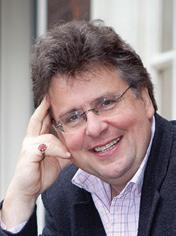
This tour will be led by Lars Tharp, MA, FSA, an art historian, lecturer and broadcaster well known for his work on the BBC’s Antiques Roadshow. Lars is a ceramics specialist who has worked with York Art Gallery and London’s Foundling Museum. He is the author of several works including Hogarth’s China, and has led tours to Dresden, Copenhagen and China.
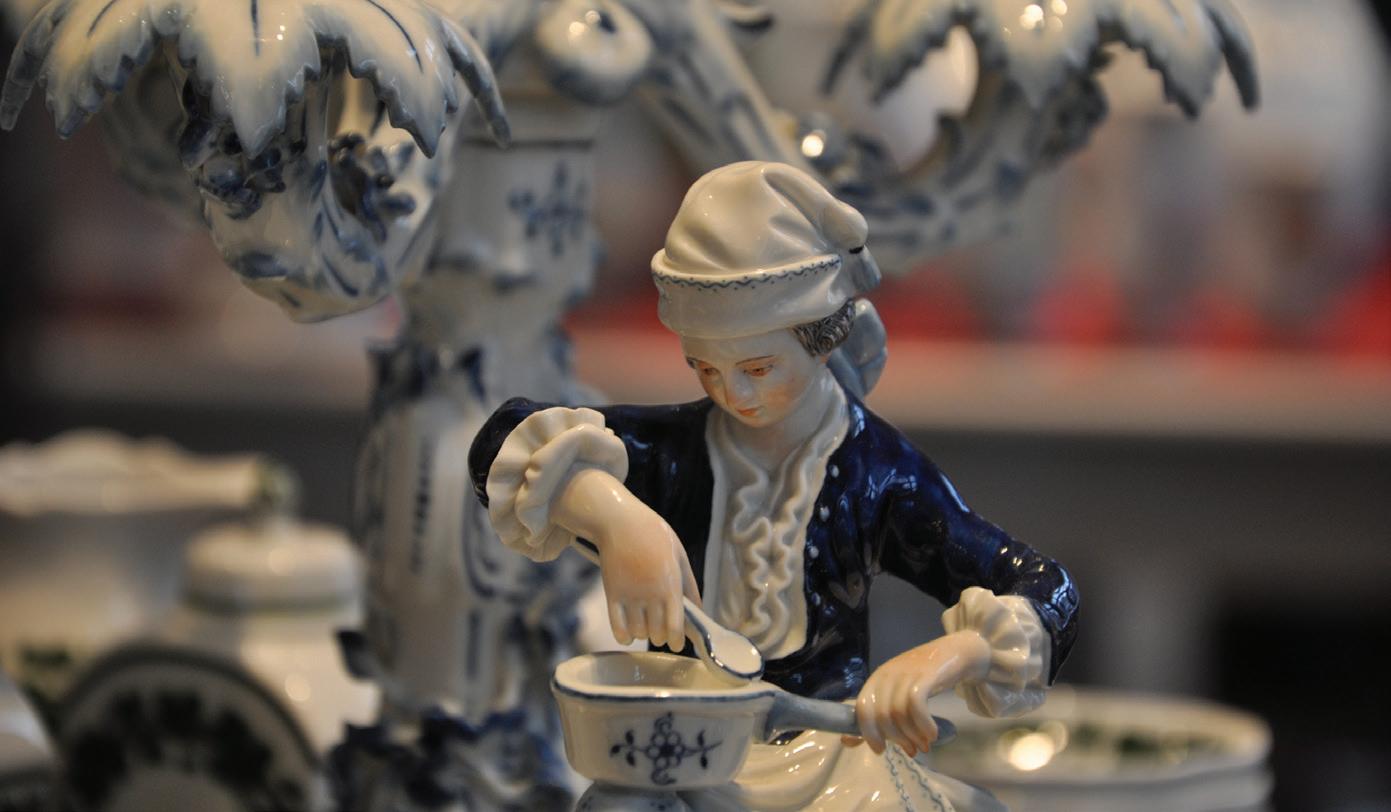
Böttger, who discovered the formula for creating white porcelain in 1708.
We will tour the Gothic cathedral and visit the celebrated porcelain factory for a demonstration of the manufacturing process and an opportunity to view an exhibition of their wares. We also hope to include a visit to Charlottenburg Old Palace with its Porcelain Cabinet.
An additional highlight of our tour will be an evening spent at Dresden’s historic Semperoper, where we will enjoy a performance of Mozart’s much-loved comic opera Le nozze di Figaro
This tour will be based at the stylish Hyperion Dresden am Schloss, conveniently located in the heart of Dresden in the city’s old town.
FITNESS / PRACTICALITIES: This tour requires a good level of fitness, as it involves a moderate amount of walking, including over uneven ground and cobbles that can be particularly challenging if wet or icy. We will spend periods of time standing in galleries. Some sites may be dimly lit, and lifts are not always available so participants must feel comfortable using stairs. Our visit to Meissen involves navigating steep steps. Please consult ACE’s fitness criteria as outlined in our Booking Terms & Conditions.
ITINERARY
Please note that the itinerary represents a guide to what we hope to offer, and some elements may be subject to change or confirmation nearer the time. There are ongoing renovation works taking place at the Zwinger Palace complex and we cannot guarantee the availability of all artworks listed.
“Each day was full of new and fascinating destinations”
D ay 1 Depart London Heathrow 1030 on British Airways, arriving Berlin 1325. Transfer to Dresden for five nights at Hyperion Dresden am Schloss. Welcome and introduction.
D ay 2 Morning walking tour of Dresden: Frauenkirche, Meissen Wettin dynasty tile frieze, Albertinum and synagogue (exteriors) followed by visit to Royal Cabinet of Mathematical and Physical Instruments (subject to confirmation). Afternoon: Augustan porcelain collection at Zwinger Palace.
D ay 3 Whole day excursion to Meissen for modern Meissen Factory, Albrechtsburg (castle) and citadel cathedral.
D ay 4 Morning lecture followed by guided tour of Pillnitz Park. Free afternoon with optional visit to the Albertinum. Evening operatic performance at the Semperoper: Mozart Le nozze di Figaro.
D ay 5 Morning: Gemäldegalerie Alte Meister. Afternoon: New and Historic Green Vaults in the Royal Palace.
D ay 6 Transfer to Berlin with visit en route to Charlottenburg Old Palace (Porcelain Cabinet) – final flight time permitting. Depart Berlin 1625, arriving Heathrow 1725.
Cost of £2795 includes: return airfare, accommodation based on sharing a twin or double bedded room, performance ticket, five breakfasts, two lunches (one light), four dinners with water & coffee, excursions & admissions, gratuities & all taxes.
Not included: travel insurance, double room for single use supplement £290. TOUR CODE: ATDR25
April 1–8, 2025
Explore the vast collection of Baroque art and architecture to be found in the historical Bavarian lands
Visit churches, monasteries and palaces, including Schloss Nymphenburg and Ettal Abbey
Take in spectacular scenery as we journey through Alpine territories, past Bavarian lakes and across the Danube Valley
This tour explores the array of fine Baroque art and architecture to be found in southern Germany, in its many regional and stylistic variants. Following a route from the Alpine territories of Upper Bavaria towards Munich, we continue into Lower Bavaria, Regensburg and its environs.
The influence of Italian architects and designers was felt in the region as reconstruction began after the devastations of the Thirty Years’ War (1618-1648). In the 18th century, this initial activity turned into what is known as the famous ‘Bauwurm’, the building frenzy that created one of Europe’s great artistic legacies.
As a result, a number of schools of Baroque architecture and decoration developed; the several architects involved are amongst the leading lights of the period, such as Johann Michael Fischer, the brothers Zimmermann and the Asam family. Their involvement is reflected in the major works of the era.
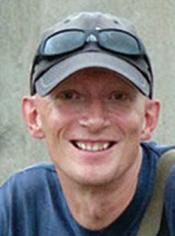
This tour will be led by Alex Koller, PhD, an expert in art and architectural history. Born in Vienna, Alex has lived and studied in Vienna, Salzburg and Cambridge, gaining his PhD in History of Art from Magdalene College. Alex is an accomplished linguist and has travelled extensively.
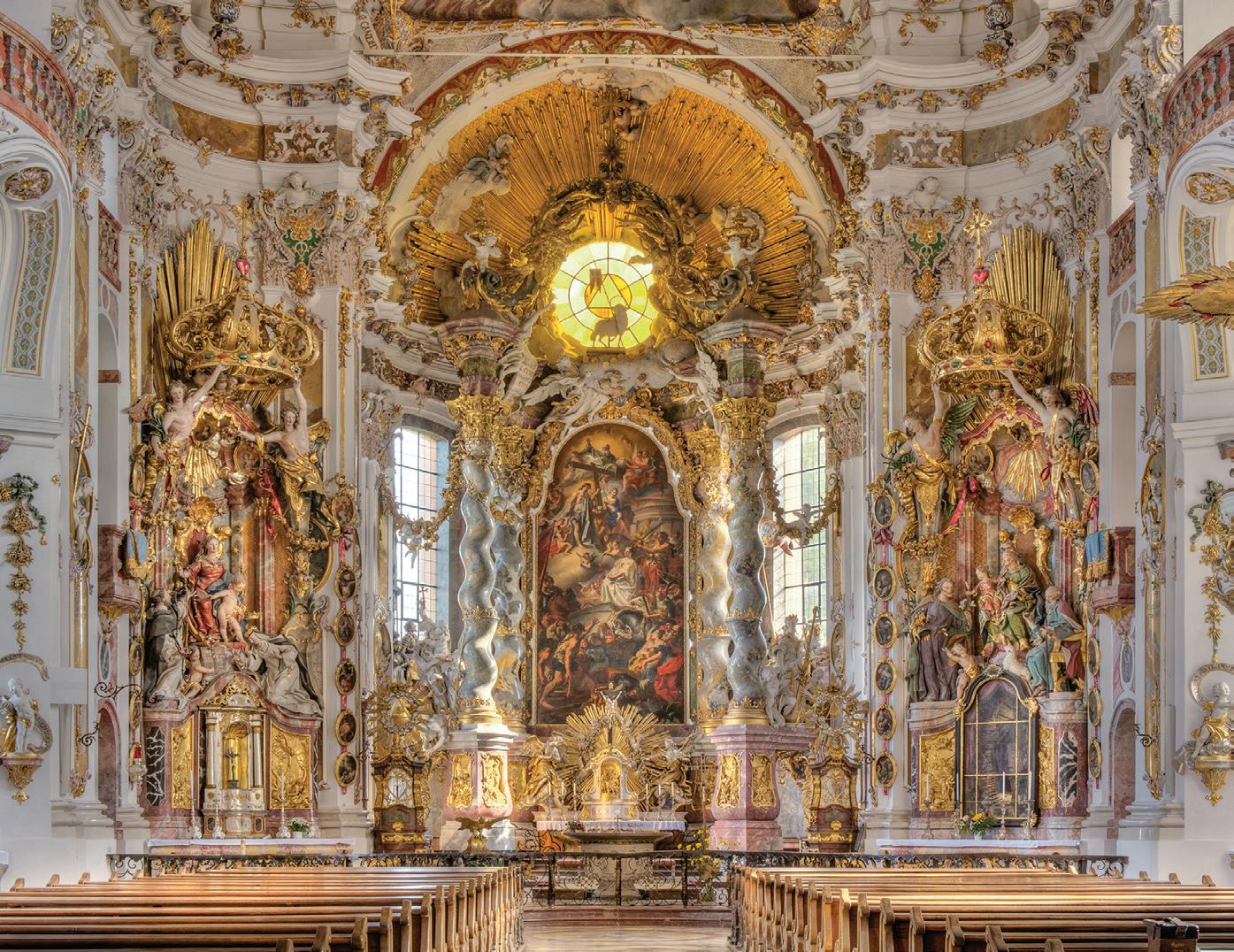
Particular highlights of our tour will include a visit to the former monastery church of St Johannes Baptist at Steingaden, with a rococo interior dating from 1740-42; the Wieskirche, a major example of 18th century German architecture; and Ettal Abbey, one of the largest Benedictine houses, which underwent a spectacular rebuilding in the Baroque style to the designs of SwissItalian architect Enrico Zuccalli, who had studied with Bernini.
Zuccalli was also involved in an 18th century extension to Schloss Nymphenburg, begun in 1701, that was commissioned by Maximilian Emanuel, heir to Bavaria and sovereign electorate of the Holy Roman Empire. The palace was originally built to the designs of Italian architect Agostino Barelli, considered one of the key individuals responsible for introducing Italian Baroque architecture to Bavaria. We also look forward to seeing Barelli’s Theatinerkirche as part of an exploration of the Baroque churches to be found in Munich.
Further highlights of our tour include a visit to Schloss Schleissheim, situated in a grand Baroque park and home to several important paintings by Flemish Baroque painters including Rubens and Van Dyck, amongst other Old Masters.
As we gain a comprehensive overview of the highlights of the Baroque in southern Germany, we will enjoy changes of scenery as we journey from the foothills of the Alps to the Bavarian lakes. We will also have time to absorb the picturesque traditional architecture of the quintessential Bavarian town of Regensburg, a vibrant and well-preserved medieval town listed by UNESCO, with its beautiful Gothic cathedral and charming bridge over the Danube.
We will stay at comfortable hotels of four-star standard in Ettal, Munich and Regensburg.
FITNESS / PRACTICALITIES: Please note that this study tour has a full itinerary and involves three separate hotel stays, to make the most of our time in southern Germany and take in a wide variety of sites. A good level of fitness, stamina and mobility is required, and participants should be prepared for a significant amount of walking and standing at sites, including over uneven and cobbled ground, and up steps and stairs, as lifts are not always available. The weather can be cold in Bavaria at this time of year, with occasionally snowy or icy conditions, and participants should take particular care on slippery surfaces underfoot. We will advise on suitable clothing and footwear closer to departure. Some sites are dimly lit, and some walking will be done in the dark but it may be possible to take taxis instead. Please consult ACE’s fitness criteria, outlined in our Booking Terms & Conditions.
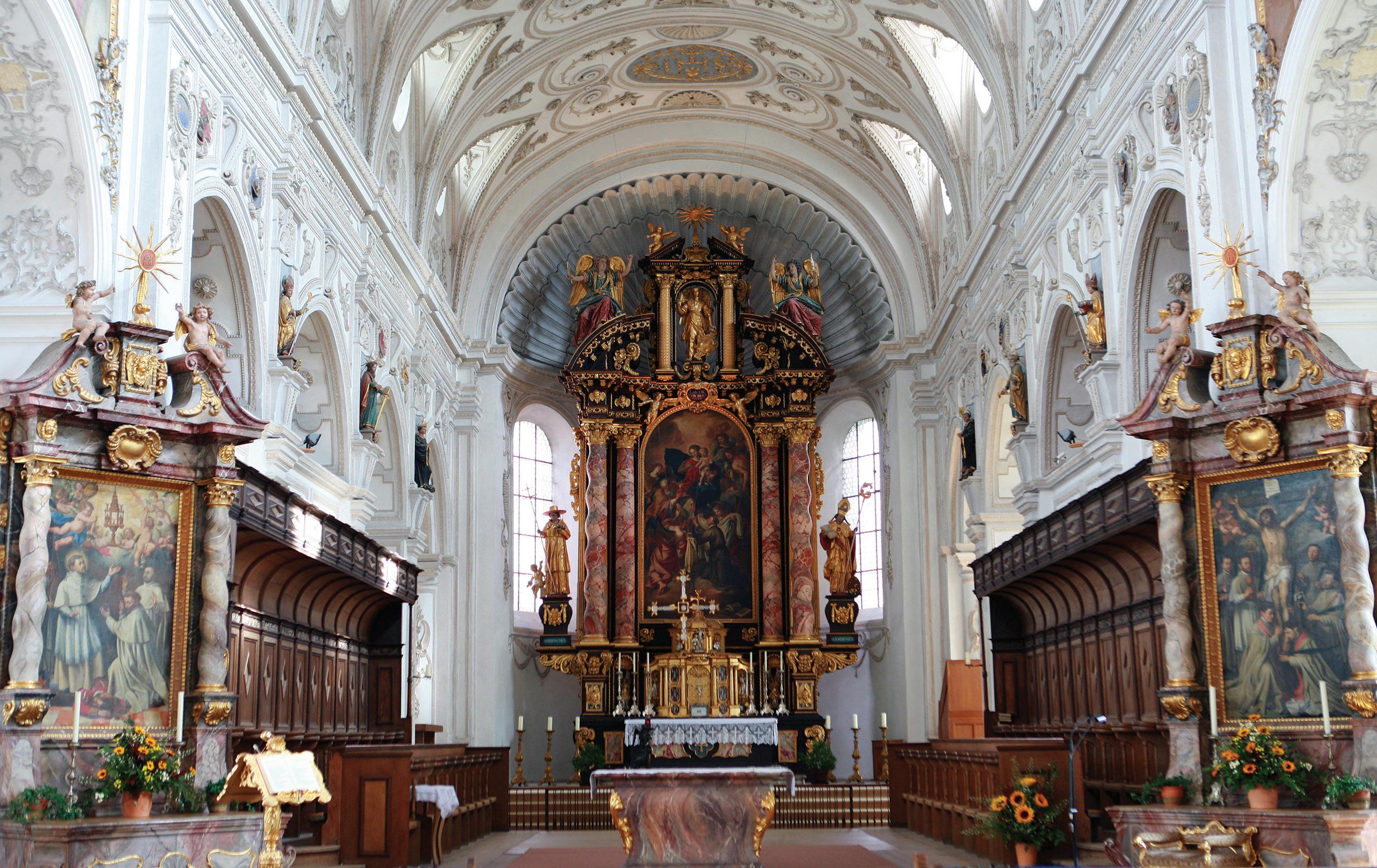
“A unique and memorable week’s study tour”
“An excellent itinerary… I could not speak more highly of Alex. He was simply brilliant”
– ACE customers on the 2024 Bavarian Baroque tour with Alex Koller
The itinerary represents a guide to what we hope to offer, and some elements may be subject to change or confirmation nearer the time. Occasionally sites may close at short notice for restoration works. Some visits may be time permitting on the day.
D ay 1 Depart London Gatwick 0825 on Easyjet, arriving Innsbruck 1125. Transfer to Ettal for two nights at Klosterhotel Ludwig der Bayer, Ettal. Welcome and introduction. Please note: Flights depart from Gatwick and return to Heathrow.
D ay 2 Visits to Ilgen (Pilgrimage Church of the Visitation), Steingaden (former monastery church of St Johannes Baptist with rococo interior), Wieskirche (18th century German architecture) and Ettal Abbey.
D ay 3 Transfer to Munich via Diessen (Stiftskirche of St Maria), Andechs (pilgrimage church), Schäftlarn (Benedictine abbey and monastery) with views of Bavarian Lakes en route. Two nights in Munich at Concorde Hotel. Evening lecture: An Overview of Bavarian History.

Please note that due to flight availability and timings, our group flights will depart from London Gatwick and return to London Heathrow.
D ay 4 Morning visit to Schloss Nymphenburg followed by Theatinerkirche, Residenz and city churches.
D ay 5 Visits to Schloss Schleissheim (Schloss Lustheim and Neues Schloss) and Weltenburg Abbey. Continue to Regensburg for three nights at Altstadthotel ARCH.
D ay 6 Orientation walking tour and visits in Regensburg: St Jakob, St Emmeram, Neupfarrkirche, St Kassian, Alte Kapelle (exterior), Carmelite Church, Cathedral and Danube Bridge.
D ay 7 Whole day excursion exploring Baroque architecture and decoration of Lower Bavaria, including visits to Benedictine Abbey of Niederaltaich, Premonstratensian Church at Osterhofenand Straubing (Baroque pilgrimage church).
D ay 8 Visit to Kloster Metten (famous Baroque library – visit subject to final flight times).
Depart Munich 1615 on British Airways, arriving Heathrow 1715.
Cost of £3495 includes: return airfare, accommodation based on sharing a twin or double bedded room, seven breakfasts, seven dinners with water & coffee, excursions & admissions, gratuities & all taxes.
Not included: travel insurance, double room for single use supplement £435. TOUR CODE: BVBA25
April 3–10, 2025

Discover the wildlife and landscapes of the Alentejo and Algarve regions of Portugal, experiencing spring flowers in bloom and a wealth of birdlife
Explore flower-strewn cliff tops, mountain peaks and coastal estuaries, and consider questions of conservation
Look out for the rich variety of plant and bird species, including cistus, mirror orchids, azurewinged magpies and great bustards
This tour takes in the unspoilt landscapes of the Alentejo and Algarve regions, with their rich assortment of wildflowers and diverse birdlife (hoopoes and storks, as well as the possibility of migrating birds).
Extensive golden beaches, as well as the dramatic cliffs of Sagres and Cape St Vincent, dominate the coast, while further inland at Serra de Monchique, we will take in stunning views and discover contrasting vegetation to that of the coast.
The Castro Verde Special Protection Area is a region that protects the traditional working landscape of the Alentejo’s
treeless plains, dominated by dry cereal fields and fallow land used as pasture for cattle. This is an open, steppe-like landscape, which provides the right habitat for year-round populations of great and little bustards, which we hope to see.
Further highlights will include the Salgados Lagoon, one of the most
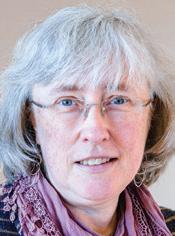
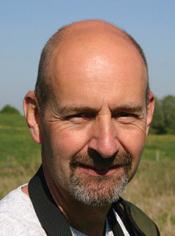
This tour will be led by Harriet Allen , MA, MSc, PhD, a geographer, and Peter Exley, BSc, an ecologist, ornithologist and conservationist. Harriet is a Fellow and Director of Studies at Girton College, Cambridge, and has been leading field excursions for over 30 years, with extensive experience of flora and birds in many parts of the world including Portugal. Peter works for the RSPB and has also held posts with BirdLife International and the Albatross Task Force in South Africa. He has led many ACE tours, including in Portugal.
important freshwater wetlands in the Algarve, and the charming walled town of Mértola itself. One of our mornings will take us along the nearby Guadiana River, which commands beautiful views back towards the town.
We will enjoy two separate hotel stays in comfortable, local establishments well positioned for our visits. Hotel details will be confirmed nearer the time.
FITNESS
This tour will involve a number of walks, the longest of which will be approximately 7 miles, including several stops; on the longest, the personnel should be able to give participants options to return part-way through if wished. While the paths are generally of good quality, participants should be comfortable negotiating rugged terrain as well as uneven pavements, cobbles, unmade paths, loose gravel and some short sections of steeper slope, so it is necessary to possess a good overall level of fitness and mobility and we would recommend those who regularly use walking poles to bring these along. Our excursion to Serra de Monchique will include an optional steep slope to the fire watch lookout point at Picota, which requires very good levels of mobility. The tour personnel will advise the group on the day and the views are beautiful even if you do not go right to the top. We will make one longer coach journey (between the Algarve and Mértola) of several hours with stops en route. We recommend participants check our minimum fitness criteria in our Booking Terms & Conditions.
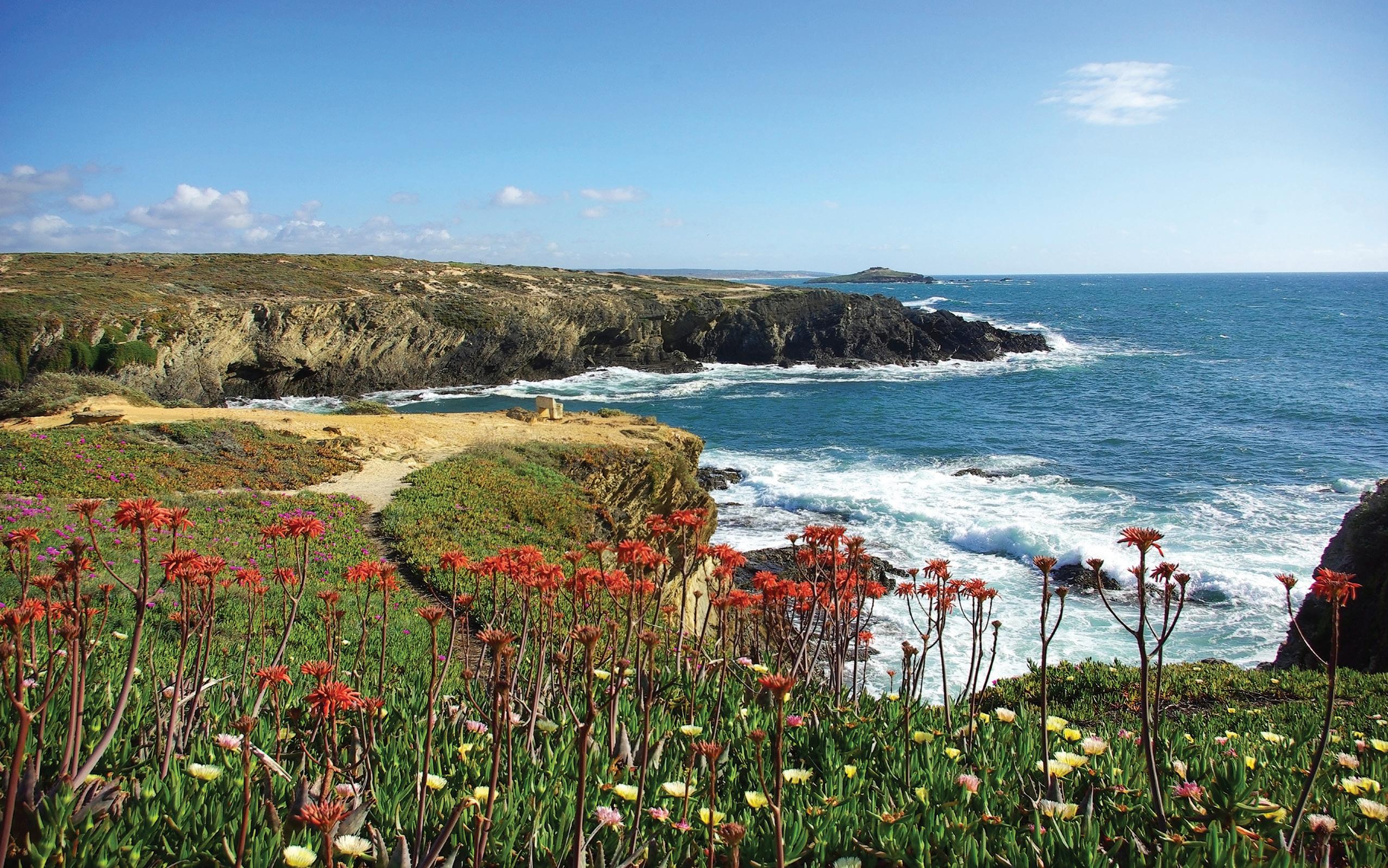
Please note that while we will endeavour to deliver the below itinerary, some elements may be subject to change and/or confirmation. We cannot guarantee the presence of all wildlife mentioned, and some visits may be weather dependent. The details of our visit to the Vale Gonçalinho Environmental Education Centre will depend on their conservation activities nearer the time.
D ay 1 Flight from London to Faro. Afternoon stop at the Ludo Trail (part of Ria Formosa coastal wetlands, opportunity to see spoonbills, waders, ospreys, white storks and Sardinian warblers – visit subject to final flight times). Continue to Hotel for four nights. Welcome and introduction.
D ay 2 Whole day excursion to Sagres Peninsula, including Sagres Fortress (location of Henry the Navigator’s 15th century School of Navigation,
“A fascinating tour. Harriet and Peter were incredibly well informed and enthusiastic about their subjects, as well as being great fun as tour leaders. I felt that I learned a great deal. I was impressed by the way that they put specialist subjects in context and put the emphasis on conservation”
– ACE customer on the 2023 wildlife tour to the Alentejo & Algarve led by Harriet Allen & Peter Exley
where we will explore the history and natural history) and region around Cape St Vincent lighthouse (the most south-westerly point in Europe, remarkable flora of limestone plateau –lighthouse exterior only).
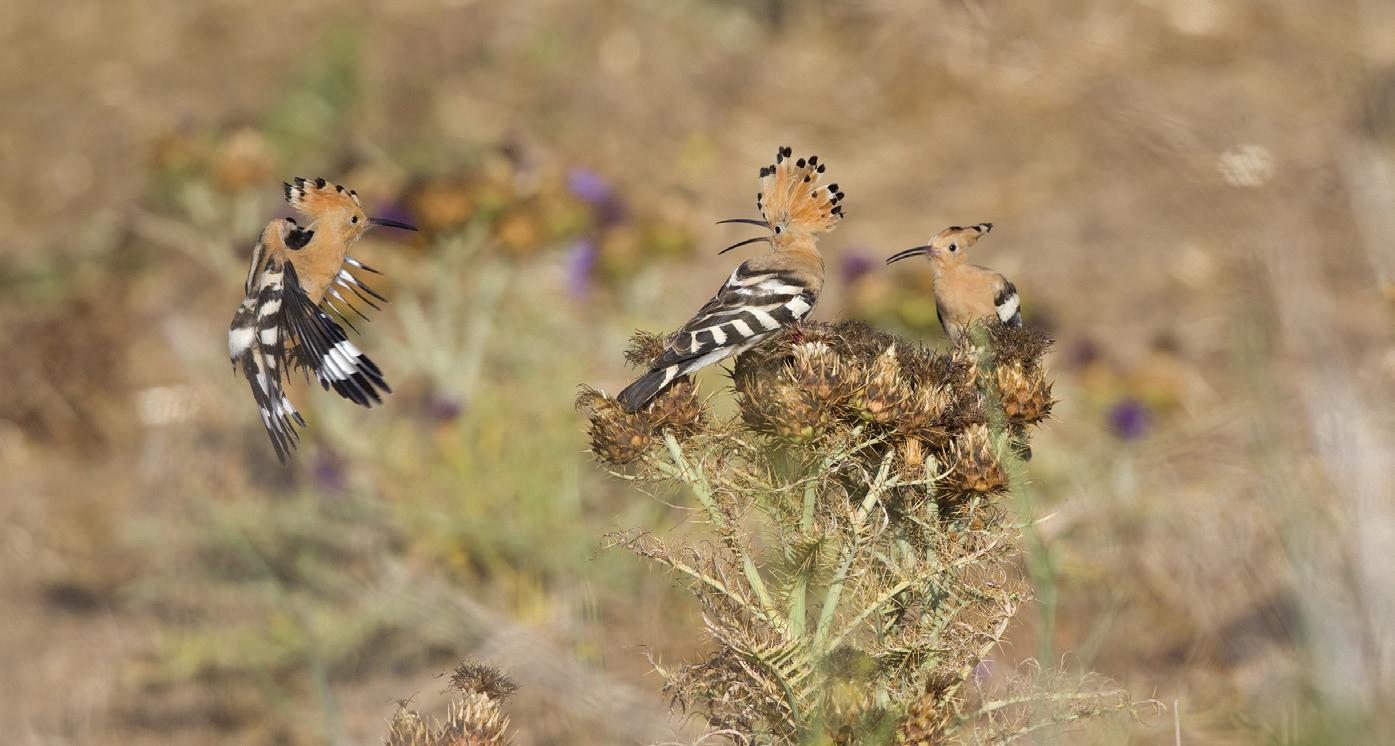
D ay 3 Whole day excursion inland to Serra de Monchique (the highest part of the Algarve, with stunning views, heathers and tree heath).
D ay 4 Nature walk near Burgau (gentle walk of approx 7 miles with regular breaks) with introduction to the coastal flowers of the region (possible irises and orchids) as well as birds and reptiles.
D ay 5 Transfer to Mértola via Salgados Lagoon (one of the most important freshwater wetlands in the Algarve) and eco cork factory. Three nights in Mértola.
D ay 6 Morning: Vale Gonçalinho Environmental Education Centre and reserve (preserving the traditional working landscape of the Alentejo’s treeless plains, birds including great & little bustard, roller, kestrel, quail, crested & calandra lark). Afternoon: free time to explore walled town of Mértola independently (museums, citadel and medieval castle).
D ay 7 Morning: Sao João dos Caldeireiros (new lynx observation facility, beautiful views with chance to see white storks and Spanish sparrows – visit subject to confirmation) followed by Guadiana Valley walk (excellent views back towards Mértola, gentle walk of approx 5 miles with breaks). Afternoon: walking tour of the Mina de São Domingos (abandoned copper and pyrites mine).
D ay 8 Flight from Faro to London.
Full details, including the cost, accommodation and updated itinerary, will be released later in 2024. To register your interest To register your interest, please visit the ACE website or contact the office.
TOUR CODE: ALAL25
April 11–17, 2025
Take in classical performances by world-class musicians at the internationally acclaimed Festival de Pâques
Explore works by Picasso, Monet and Renoir at the Musée Granet, and journey along the ‘Route Cézanne’ to view the SainteVictoire mountain
Enjoy two exclusive lecture-recitals given by our Tour Director in the beautiful surroundings of the Villa Tiphéret and Chateau de Lourmarin, set in the Luberon hills
The sunlit landscape of Provence has attracted and inspired many musicians, artists and writers over the centuries, including Paul Cézanne, Emile Zola, Darius Milhaud, Pablo Picasso, Albert Camus and Marcel Pagnol. Today, the region provides the perfect backdrop for Aix-en-Provence’s Easter music festival –the Festival de Pâques – which will form the musical heart of our tour, alongside two private recitals in beautiful locations and a host of complementary artistic, literary and cultural visits.
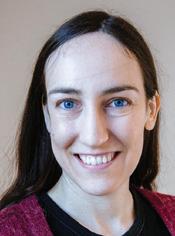
Tour Director Emilie Capulet , MA, MMus, PhD is an awardwinning concert pianist, lecturer and musicologist. She performs worldwide in international music festivals and has recorded several CDs, including the first recording of the complete piano music of the French-Corsican composer Henri Tomasi (1901-1971), in a critically acclaimed double album on the Calliope label. Emilie is a Senior Fellow of the Higher Education Academy, BMus (Hons) Programme Leader at Trinity Laban Conservatoire of Music and Dance and the recipient of a prestigious Leverhulme Research Fellowship. She will be a Visiting Fellow at Keble College, University of Oxford, in 2025.
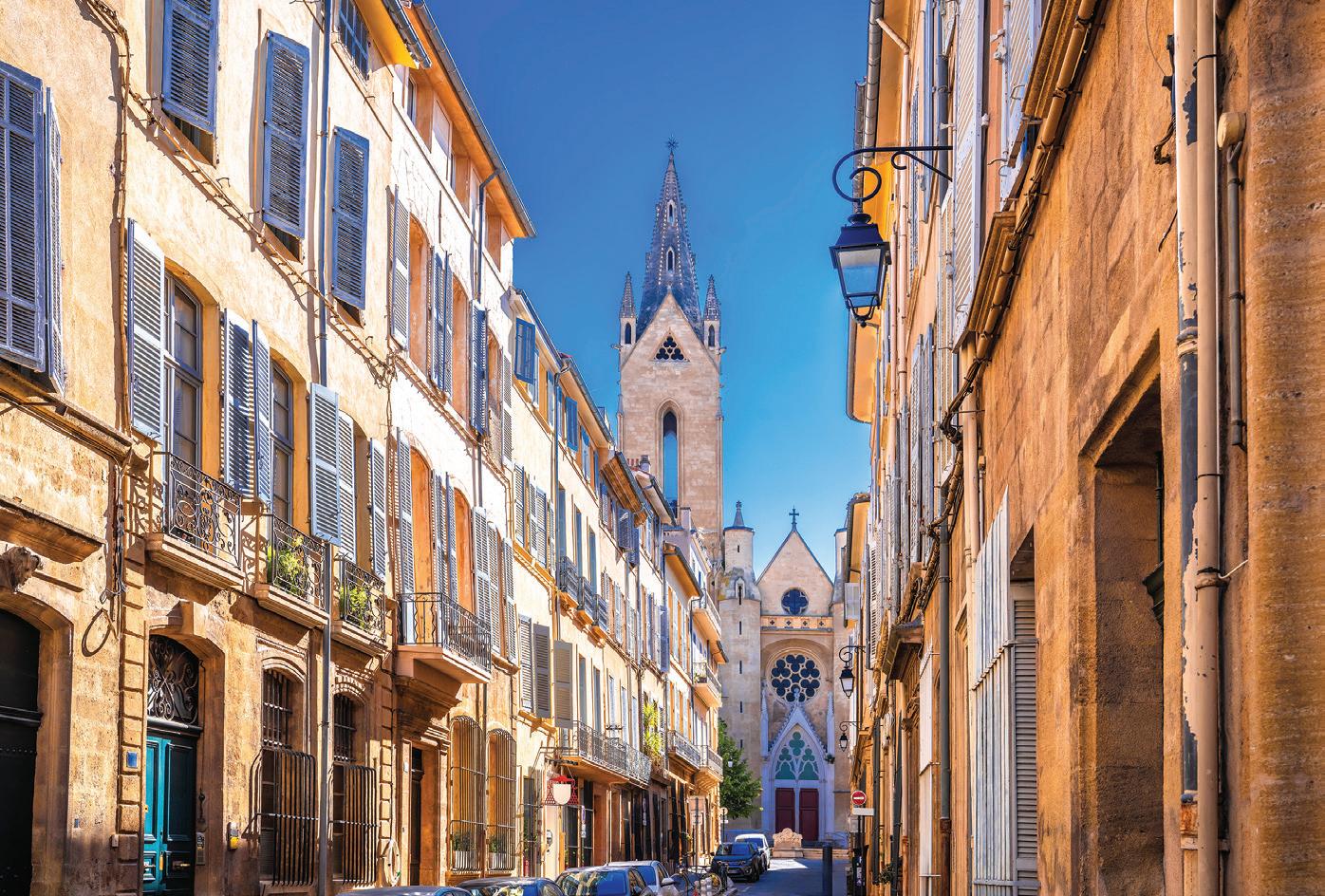
“The week was a total immersion in music, art, local history and culture, colour, fountains, azure blue skies, good food and much more. A feast for all the senses”
“Tour Director Emilie Capulet’s intimate knowledge of Aix and the culture of the surrounding area, and her expertise in music and piano performance made the whole experience amazing”
– ACE customers on a 2023 music tour to Aix-en-Provence with Emilie Capulet
Already in its 12th year, the Easter festival boasts a full programme of concerts by international orchestras, soloists and chamber ensembles. The attractive schedule – exact details of which are released in October – is particularly known for showcasing a diverse, stimulating and often surprising repertoire, ranging in past years from Rautavaara’s Cantus Arcticus to all five Beethoven piano concertos in one day, from Schubert’s song cycles to Johann Strauss’s waltzes, Mahler’s symphonies and Ravel’s luminous G major Piano Concerto. Guest musicians and ensembles have included the Orchestre National de France, Les Arts Florissants with their founder William Christie, Les Musiciens du Louvre, Martha Argerich and Ian Bostridge.
We will enjoy two special private lecturerecitals given by our Tour Director in the beautiful surroundings of the Villa Tiphéret and the 15th century Chateau de Lourmarin, set within a picturesque village in the Luberon hills. These will feature French piano music, including works by Chopin, Debussy, Mel Bonis, Ravel and the 20th century FrenchCorsican composer, Henri Tomasi.
Daytime excursions will take us to the organic vineyard of Château La Coste for a wine tasting and tour of the contemporary art installations, and the stunning 20th century art collection of Jean Planque at the Musée Granet, a former priory of the Knights of Malta. We will delve into the Caumont Centre d’Art, a beautifully restored 18th century
Tour Director Emilie Capulet writes: “Aix-en-Provence in April is a magical place. Bringing together music, art, literature, architecture and wine, this tour brings the region’s rich cultural palette to life... We will be based in the historical centre of Aix, within walking distance of the many markets, museums and concert venues. I was born and grew up in Aix-en-Provence and look forward to showing you the many cultural gems this area has to offer.”

period townhouse, and journey along the ‘Route Cézanne’ to view one of the artist’s favourite motifs: the SainteVictoire mountain.
We will stay at the four-star Grand Hôtel Roi René in Aix-en-Provence, just a few minutes’ walk from our music venues, in the town’s historical centre.
FITNESS / PRACTICALITIES: Many visits in Aix will be made on foot. Participants should be comfortable spending between 1-2 hours on their feet, sometimes over uneven terrain, and standing at visits. A significant amount of walking is involved during our visits along the Route Cézanne and to Château La Coste. Please consult ACE’s fitness requirements in our Booking Terms & Conditions.
The itinerary represents a guide to what we hope to offer, and some elements may be adjusted nearer the time. The performance schedule will be confirmed once this has been released by the Festival de Pâques towards the end of 2024; at this stage the itinerary will be reviewed to ensure the best possible experience for travellers.
D ay 1 Depart London Heathrow 1510 on British Airways, arriving Marseille 1805. Transfer to Grand Hôtel Roi René in Aix-en-Provence for six nights. Welcome and introduction.
D ay 2 Morning: introductory talk and orientation tour of Aix, finishing at Caumont Centre d’Art (18th century townhouse). Free afternoon. Evening lecture followed by festival performance.

D ay 3 Morning at Villa Tiphéret for private lecture-recital with Tour Director: ‘The French Connexion’ – including works by Chopin, Debussy, Ravel and Mel Bonis. Afternoon excursion to Sainte Victoire Mountain via Route Cézanne. Evening festival performance.
D ay 4 Excursion to Lourmarin for Luberon village: tour of 16th century Renaissance chateau and private lecture-recital with Tour Director: ‘The Piano Music of Henri Tomasi’ – works by this Marseille-born French-Corsican composer followed by discussion of Albert Camus, who inspired Tomasi and lived in Lourmarin. Evening festival performance.
D ay 5 Morning: pre-concert lecture and free time to enjoy the market in Aix. Afternoon: Chateau La Coste (contemporary art installations and wine tasting). Evening festival performance.
D ay 6 Morning: pre-concert lecture and visits to Musée Granet (guided tour) and Planque Collection (Renoir, Monet, Picasso). Evening festival performance.
D ay 7 Depart Marseille 1455, arriving Heathrow 1555.
Cost of £3695 includes: return airfare, accommodation based on sharing a classic twin or double bedded room, performances as described (category to be confirmed), six breakfasts, three lunches, three dinners with wine, water & coffee, excursions & admissions, gratuities & all taxes.
Not included: travel insurance, classic double room for single use supplement £450.
TOUR CODE: MUAP25
April 17–22, 2025
Attend three contrasting operas in two of Berlin’s magnificent opera houses: Bellini’s Norma and Wagner’s Parsifal at the Staatsoper Unter den Linden, and Philip Glass’s Akhnaten at the Komische Oper
World-renowned violinist AnneSophie Mutter will play alongside one of the world’s oldest orchestras, the Staatskapelle Berlin, at the Philharmonie concert hall
Explore cultural sites in Berlin, from the enthralling Gemäldegalerie to the Deutscher Dom in the Gendarmenmarkt and the Jewish Museum
One of our most beloved recurring music departures, our 2025 tour to Berlin provides the opportunity to experience world-class opera and symphonic music in one of Europe’s most important musical and cultural capitals.
Our itinerary takes in three very different operas presented at two equally magnificent opera houses. We will visit Berlin’s Staatsoper Unter den Linden to enjoy productions of Richard Wagner’s Holy Grail-inspired Parsifal and Vincenzo Bellini’s tragedy Norma. At the Komische Oper, we will have a rare opportunity to experience Philip Glass’s thoughtprovoking and absorbing Akhnaten.
Woven around the operatic treats, the tour also includes performances of Alban Berg’s sumptuous Violin Concerto, with soloist Anne-Sophie Mutter, and Gustav Mahler’s Symphony No 4, given by one of the world’s oldest orchestras, the Staatskapelle Berlin, at the iconic Berliner Philharmonie.
Cultural visits include the Museum of Musical Instruments, Gemäldegalerie, Deutscher Dom (for an excellent exhibition on the German Bundestag, subject to final confirmation) and Jewish Museum. Our tour takes place over Easter, and there will be an opportunity for those who wish to attend a service on the morning of Easter Sunday.

We will stay at the stylish four-star Maritim proArte Hotel Berlin, a short walk away from Unter den Linden.
FITNESS / PRACTICALITIES: While this tour is not particularly strenuous, participants should have a good level of overall fitness, as we will be exploring Berlin on foot, traversing uneven ground and steps. The tour involves a significant amount of city walking, although it is possible to opt out of visits if wished. Please see our Booking Terms & Conditions for ACE’s fitness requirements. This tour includes performances every evening, to take advantage of our time in Berlin and enjoy a breadth of music across different venues. Please note, productions at Berlin State Opera often adopt an imaginative, contemporary approach to their material. Parsifal will be performed in German with German and English surtitles, and Norma will be performed in Italian with German and English surtitles.
The itinerary represents a guide to what we hope to offer. Performances are subject to confirmation and some itinerary details may be adjusted nearer the time.
D ay 1 Depart London Heathrow 1110 on British Airways, arriving Berlin 1400. Transfer to Maritim proArte Hotel, Berlin, for five nights. Welcome and introduction.
D ay 2 Good Friday Morning lecture: Parsifal Coach orientation and guided architectural tour of Berlin (exteriors), including Potsdamer Platz, Checkpoint Charlie, Friedrichstrasse, Nikolaiviertel, Unter den Linden, New Parliament buildings and Brandenburg Gate. Free time followed by evening performance at Berlin State Opera: Wagner Parsifal
D ay 3 Daytime visits to Museum of Musical Instruments and Gemäldegalerie. Free time followed by evening performance at Philharmonie featuring Simone Young (conductor), Anne-Sophie Mutter (violin) and Jeanine de Bique (soprano): Alban Berg Violin
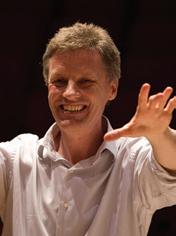
Tour Director Paul Jackson , PhD, a conductor, pianist, musicologist and former Director of Music at Anglia Ruskin University, Cambridge, has enjoyed an extensive career as a conductor of opera and as a chamber musician.
D ay 4 Easter Sunday Morning: option to attend Easter Sunday service or visit Deutscher Dom (Gendarmenmarkt) for German Bundestag exhibition on parliamentary history – subject to final confirmation. Free time followed by afternoon lecture: Akhnaten. Evening performance at Komische Oper: Philip Glass Akhnaten
D ay 5 Morning lecture: Norma followed by visit to Jewish Museum. Free afternoon. Evening performance at Berlin State Opera: Bellini Norma
D ay 6 Depart Berlin 1500, arriving Heathrow 1555.
Cost of £4275 includes: return airfare, accommodation based on sharing a twin or double bedded room, performances as described (categories 1 & 2), five breakfasts, three lunches, two dinners with water & coffee, opera plates with water & coffee at two performances, excursions & admissions, gratuities & all taxes.
Not included: travel insurance, double room for single use supplement £335. TOUR CODE: MUOB25
April 22–29, 2025

Discover Sardinia’s wonderful flora and fauna in coastal lagoons, cork oak woodland and karstic mountain landscapes
The lagoons at Mari e Pauli and Sale Porcus offer opportunities to see uncommon water birds
Examine the island’s Bronze Age civilisation through its characteristic circular towers –Nuraghi
Based in the lakeside town of Cabras, and Cala Gonone, bordering one of the most scenic stretches of the Mediterranean, this tour takes in Sardinia’s coastal waters and rugged interior on an exploration of its natural history and archaeology.
At the lagoons of Marina di Torre Grande, we are likely to see flamingos, stilts and ospreys; while our visit to Mari e Pauli and Sale Porcus could provide glimpses of water birds like the purple gallinule, great white egret and red-crested pochard. On the high basalt plateau of Gesturi we will meander through forests of cork oaks looking for Mediterranean spring flowers and survey the bountiful streams and pools for migrant birds.
The most striking evidence that survives of the indigenous Bronze Age Nuraghic civilisation that once existed here are the circular stone towers – Nuraghi – that are dotted across the landscape.
Furthermore, we will discover the substantial Punic and Roman ruins at Tharros, standing high above the Mediterranean, and the UNESCOprotected complex at Su Nuraxi di Barumini, comprising a defensive stronghold and surrounding village.
In Cabras we will stay at the three-star Villa Canu, a small and simple familyrun hotel, and in Cala Gonone at the three-star Hotel Bue Marino, located on the seafront.
FITNESS / PRACTICALITIES: A good level of overall fitness is required, as there will be a number of walks over rugged terrain, and visits to sites with uneven steps and surfaces. The Tour Director will advise the group regarding the amount and type of walking ahead of each visit. Participants should be comfortable standing and walking for 2 hours at a time, and embarking and disembarking small sea-going boats. Our visit to Su Nuraxi involves a steep descent and those suffering from claustrophobia, vertigo or lower levels of mobility may prefer to opt out – the group will be fully briefed beforehand. Please consult ACE’s fitness requirements in our Booking Terms & Conditions. An overnight airport hotel following our return flight on April 29 can be arranged at an additional cost – please mention this to the Sales team when you make your booking.
Cost of £2995 includes: return airfare, accommodation based on sharing a twin or double bedded room, seven breakfasts, one packed dinner (day 1), six dinners with wine, water & coffee excursions & admissions, gratuities & all taxes. Not included: travel insurance, double room for single use supplement £295. TOUR CODE: SARD25
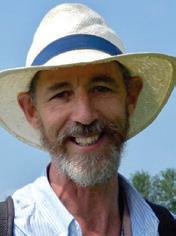
This tour will be led by Mark Welch , BSc, PhD, a former research scientist in the Department of Earth Sciences at the Natural History Museum in London. He has a PhD in geosciences from Edinburgh University, and previously taught at Cambridge University.
The itinerary represents a guide to what we hope to offer. Some visits and excursions may be weather dependent or subject to change or confirmation nearer the time.
D ay 1 Depart London Gatwick 1645, arriving Sardinia Olbia 2020. Continue to Cabras for four nights at Villa Canu.
D ay 2 Morning: lagoons at Marina di Torre Grande. Afternoon: Tharros on Mediterranean peninsula.
D ay 3 Morning: lagoons of Mari e Pauli and Sale Porcus. Afternoon: Su Pallosu for walk through coastal garrigue vegetation of dunes and cliffs to Aragonese defensive tower.
D ay 4 Morning: high basalt plateau of Gesturi for walk through cork oak woodland. Afternoon: Su Nuraxi.
D ay 5 Via Nuraghic site of Santa Cristina and giant’s tomb of S’Ena e Thomes to beautiful coastal village of Cala Gonone for three nights at Hotel Bue Marino.
D ay 6 Whole day spent exploring the surroundings of Cala Gonone. Depending on local conditions, we hope to take a boat trip and gorge walk at Cala Luna and visit the Bue Marino caves. If the weather does not permit this, we will visit the Cala Gonone Aquarium, which showcases fascinating insights into the hidden off-shore world near Sardinia’s east coast.
D ay 7 Supramonte Mountains and walk around clifftop site of Nuraghe Mannu (Nuraghic tower and village). Evening: traditional dinner on local farm.
D ay 8 Depart Sardinia Olbia 2055, arriving Gatwick 2220.
This tour is part of ACE’s ‘Wild & Ancient’ series, unique products designed to showcase the many interwoven aspects of the landscapes we visit. These tours usually focus on natural history (particularly flora and fauna, but often also geology and insect life) while also integrating visits to historical sites.
May 5–10, 2025
Take in the artistic and architectural highlights of Austria’s capital as we explore its cultural heritage over the centuries
Enjoy visits to the Habsburg dynasty’s winter and summer residences, the imperial Hofburg and Schönbrunn palaces
Experience the world’s largest collection of works of art by Gustav Klimt at the Upper Belvedere Palace
Vienna is a city of great romantic charm and incomparable historical and cultural richness. As the capital of a vast multiethnic empire for several hundred years, it has accumulated treasures from every corner of Europe.
On this tour, we will take a broad historical sweep as we explore the diverse architectural beauty of Vienna, from the great Gothic cathedral of St Stephen that looms over the densely built old city, to airy Baroque palaces. We will enjoy a visit to the Hofburg Palace, the former imperial winter residence built for the Habsburg dynasty. The Hofburg complex is home to the extensive Austrian National Library, founded by the Habsburgs, and the Imperial Treasury.
Our tour also encompasses visits to the Baroque Upper and Lower Belvedere Palaces, linked by fountains, parterres and gardens, and the rococo summer palace of Schönbrunn. Once the centre of court life, this 18th century imperial residence is a UNESCO World Cultural Heritage site and one of Austria’s most important historical monuments.
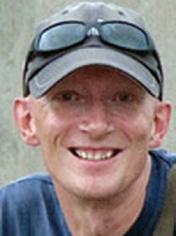
This tour will be led by art historian Alex Koller, PhD, who was born in Vienna. After studying in Vienna and Salzburg, he completed his PhD in History of Art at Magdalene College, Cambridge. Alex is an accomplished linguist, and has been leading tours since 1998.
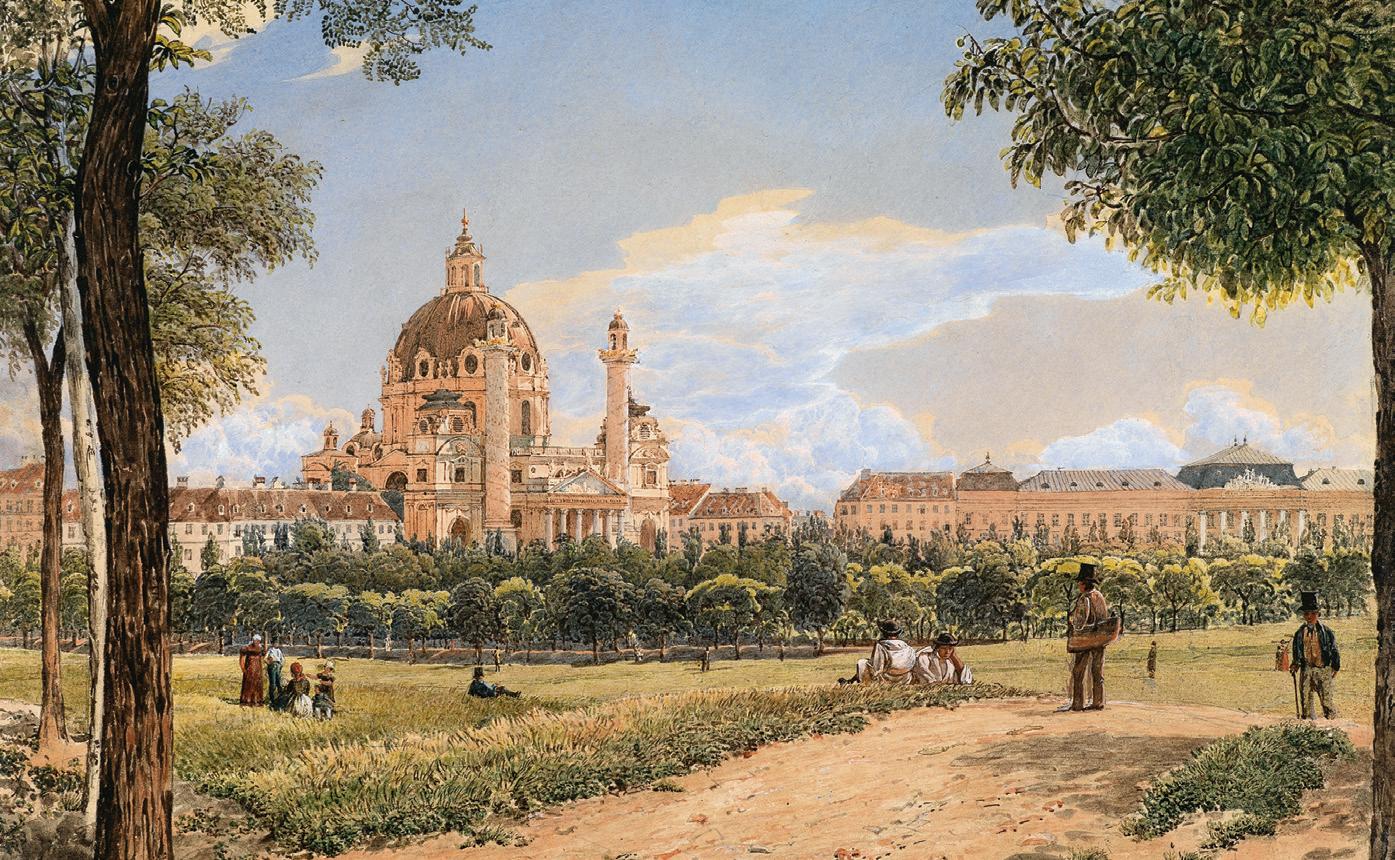
We will also take the opportunity to explore Vienna’s art collections, during visits to the city’s famous Kunsthistorisches Museum; the Academy of Fine Arts, which contains academy admissions dating back to the 18th century; and the art museum of Albertina, located in the city’s Innere Stadt (First District).
We will stay at the four-star Hotel Johann Strauss, a comfortable and traditionally decorated hotel conveniently located in central Vienna.
FITNESS / PRACTICALITIES: Participants should have a good level of overall fitness, mobility and stamina for this tour. The tour involves using public transport, including trams, and walking around the city, including uphill and up steps. The walk to the Steinhof Church is steep (partly sloped and partly with steps). Participants should meet ACE’s fitness requirements, in the Booking Terms & Conditions.
Please note the itinerary represents a guide to what we hope to offer, and some elements may be subject to change or confirmation nearer the time. Please note that churches may close at short notice due to services, and our itinerary may also be adjusted further on the ground.
D ay 1 Depart London Heathrow 0905 on Austrian Airlines, arriving Vienna 1220. Transfer to Hotel Johann Strauss for five nights. Afternoon: orientation tour of the city centre (Stephansplatz for Cathedral of St Stephen).
D ay 2 Morning: Hofburg complex, with visits to the Augustinerkirche, National Library (State Hall), Imperial Treasury, Riding School and State Apartments. Afternoon: Stadtpalais Liechtenstein and Gartenpalais Liechtenstein.
“Alex was phenomenal in his knowledge and grasp of Vienna and the history of Austria”
– ACE customer on a previous Vienna: City of the Arts tour led by Alex Koller
D ay 3 Morning visits to the Albertina, Academy of Fine Arts, Karlsplatz and Secession Building (Beethoven Frieze). Afternoon: Kunsthistorisches Museum (Vienna’s famous fine art museum) and some free time to explore the Museumsquartier independently. Free evening.
D ay 4 Morning at the Schönbrunn: Imperial Apartments and grounds. Afternoon: Steinhof Church (subject to confirmation), Church of the Holy Spirit (by Plecnik) and Kahlenberg (memorial church for 1683 siege with view of the city).
D ay 5 Morning: Karlskirche (outstanding Baroque church with lift to the cupola) and Lower and Upper Belvedere Palace. Afternoon: Schottenstift Museum (15th century Schotten Altar), Judenplatz (Holocaust Memorial by Rachel Whiteread) and Church of Maria am Gestade (one of Vienna’s few Gothic churches).
D ay 6 Depart Vienna 1245, arriving Heathrow 1420.
Cost of £2375 includes: return airfare, accommodation based on sharing a twin or double bedded room, five breakfasts, four dinners with wine, water & coffee, excursions & admissions, gratuities & all taxes.
Not included: travel insurance, double room for single use supplement £230. TOUR CODE: VNNA25
November 25–30, 2025
Observe the shifting attitudes to art, design and urbanism at the turn of the 20th century
Explore the transformation of Vienna into a metropolis of international standing
Experience both the classics of early modern Vienna and some hidden gems like Wittgenstein’s house
As the 20th century commenced, Vienna witnessed an intense outburst of creative and intellectual endeavour, with extraordinary innovations in art, architecture, literature, music and science. Our tour takes as its focus this rapid transformation. Classics like Otto Wagner’s Postsparkasse and Steinhof Church and Klimt’s major works at the Belvedere will be visited as well as less frequented places like Wagner’s Villa in Hütteldorf on the edge of the Vienna Woods.
From 1867 Vienna became the capital of the dual Austro-Hungarian monarchy. The city responded with unparalleled public projects like water works and public transport, which created a feverish atmosphere of competition and innovation that was soon to express itself in art, architecture, literature, music and science.
In 1897 the leading names of the Vienna Art Nouveau broke away from the Society of Vienna Artists (Künstlerhaus) to establish the ‘Secession’, modelled on the eponymous association in Munich. Not only did the Secession open Vienna to artistic trends from all over Europe, it also gave rise to the foundation of the Wiener Werkstätte, an association of architects, artists, designers and artisans, which created a new formal vocabulary in a variety of genres. From posters to monumental architecture, the signature of the Vienna Secession also became symbolic of a silver age of literature, music and science, not least psychoanalysis.
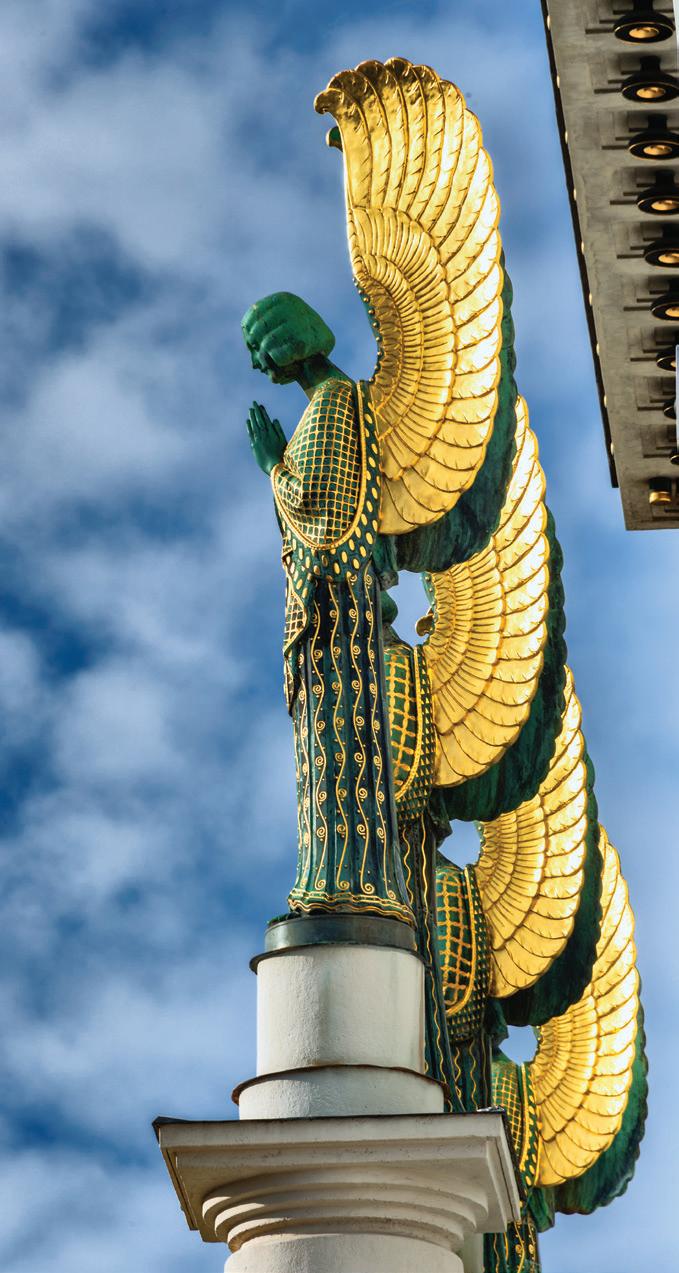
More radical approaches, associated with names like Hoffmann and Loos, had begun well before the First World War and continued beyond it. This will be particularly visible in the revolutionary housing project at the Werkbundsiedlung or in Ludwig Wittgenstein’s house in Landstrasse.
We will stay at the four-star Hotel Johann Strauss, a comfortable and traditionally decorated hotel housed in a grand Art Nouveau building in Vienna. There will also be the opportunity to visit some of Vienna’s famous Christmas markets, which will be on during the time of our tour.

This tour will be led by Alex Koller, PhD. Alex is an expert in art history and architecture. Born in Vienna, Alex has lived and studied in Vienna, Salzburg and Cambridge, gaining his PhD in the history of art from Magdalene College, Cambridge.
FITNESS / PRACTICALITIES: Participants should have a good level of overall fitness, mobility and stamina for this tour. The tour involves using public transport, including getting on and off trams, and walking around the city, including uphill and up steps. The walk to the Steinhof Church is steep (partly sloped and partly with steps). Participants should meet our usual fitness requirements, as described in our Booking Terms and Conditions.
Please note that the below itinerary represents a guide to what we hope to offer, and some elements may be subject to change or confirmation nearer the time. Our itinerary may also be adjusted further on the ground.
D ay 1 Depart London 0715 on British Airways, arriving Vienna 1030. Transfer to Hotel Johann Strauss for five nights. Visit to St Stephen’s Cathedral and walk around the city centre.
D ay 2 Morning in ‘Old Vienna’: Homburg complex (Imperial Library and Treasury). Afternoon: architectural tour of Ringstraße, including Sigmund Freud Museum, Votive Church and opportunity to visit the Christmas markets. Free evening.
D ay 3 Upper Belvedere with major works by Klimt, Wittgenstein house, Museum of Applied Art, Otto Wagner’s Postal Savings Bank and city railway stations.
D ay 4 Residential architecture on Wienzeile (exteriors), Secession Building with Klimt’s Beethovenfries, Leopold Museum, Museum of Furniture. Some free time.
Cost of £2595 includes: return airfare, accommodation based on sharing a twin or double bedded room, five breakfasts, coffee & cake on arrival at the hotel on day 1, one light lunch, four dinners with wine, water & coffee, excursions & admissions, gratuities & all taxes.
Not included: travel insurance, double room for single use supplement £435. TOUR CODE: VIEN25
D ay 5 Tour of Vienna suburbs with houses by Loos and Hoffmann (exteriors), Wagner’s and Plečnik’s churches at Steinhof and Schmelz, Wagner’s Villa, opportunity to visit the Christmas markets in the grounds of Schönbrunn Palace, ‘Red Vienna’ housing project and KarlMarx-Hof.
D ay 6 Visit to the Arsenal for Museum of Military History with relics of Sarajevo 1914 (time permitting). Depart Vienna 1405, arriving Heathrow 1535.
May 15–22, 2025
Explore the Riviera di Levante tracing the artistic legacy of the Italian city-states from Genoa to Pisa
Visit some of Italy’s most impressive architectural sites including Pisa’s baptistery and Campo Santo
Enjoy the picturesque towns and villages of the beautiful Italian coastline, including Portofino and Portovenere on the Cinque Terre
For centuries the maritime republics of Italy dominated the Mediterranean. These powerful city-states were fiercely competitive, and our tour will trace the history of their stormy rivalries as we make our way along the enchanting Riviera di Levante (‘coast of the rising sun’), travelling between Genoa and Pisa.
Genoa was one of the longest-lived of the maritime republics, its independence lasting until the threshold of the modern era. Today, the city’s historical heart preserves a fascinating labyrinth of medieval lanes and steps, studded with
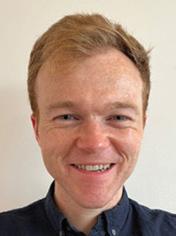
This tour will be led by Isaac Nugent , MA, an art historian who holds an MA in Cultural Intellectual and Visual History from The Warburg Institute and an MA in Art and History of Art from the University of Edinburgh. Isaac is currently pursuing an AHRC-funded PhD at the University of York, examining how Renaissance urban environments were reshaped through painted architecture between 1530-1630. He has also worked as a Curatorial Assistant and gallery educator at the National Gallery, and writes book and exhibition reviews for a range of publications including the Burlington Magazine.

“We have been on many ACE tours and this one rates very highly. We stayed in and visited some beautiful and unusual places… An excellent week”
– ACE customer on a previous Riviera di Levante tour
richly decorated churches and palaces, including the magnificent Cathedral of San Lorenzo.
We will travel down the spectacular Ligurian coastline, where picturesque towns cling to hillsides and reside in narrow valleys where the mountains meet the sea. The area of the Cinque Terre is a UNESCO World Heritage site in recognition of its combination of scenic beauty and human endeavour, and we will journey along the coast discovering Portofino and Portovenere.
The republic of Pisa fell to Genoa following the Battle of Meloria in 1284, but not before the city had developed one of the strongest architectural styles in Italy. Our visit here will explore the strong influence of classicism combined with medieval models, which culminated
in the magnificent complex of the Piazza dei Miracoli surrounding the cathedral. Splendid works of art, such as the intricate Pisano pulpit, adorn these buildings.
We will spend our first four nights in Santa Margherita Ligure at the four-star Mediterraneo Emotional Hotel & Spa, an elegant hotel occupying a recently renovated historical building just a few minutes from the seafront. This will be followed by an overnight stay at the Hotel Paradiso in Portovenere, a simple but comfortable hotel overlooking the Ligurian Sea. Our final two nights will be spent in Pisa at the four-star Hotel Bologna, a charming hotel set in a traditional Tuscan building just a short walk from the historical centre.
FITNESS / PRACTICALITIES: This itinerary requires a good level of fitness, stamina and mobility, as we have some full days and several visits will be made on foot, as well as by train and by boat. There are numerous walks over cobbled streets, uneven surfaces and up steps, taken at a reasonable pace. Genoa’s old city has narrow streets and alleys, and some steep areas without handrails, and it is not always possible to take taxis. Some churches are dimly lit. Participants should meet ACE’s usual fitness requirements (outlined in our Booking Terms & Conditions).
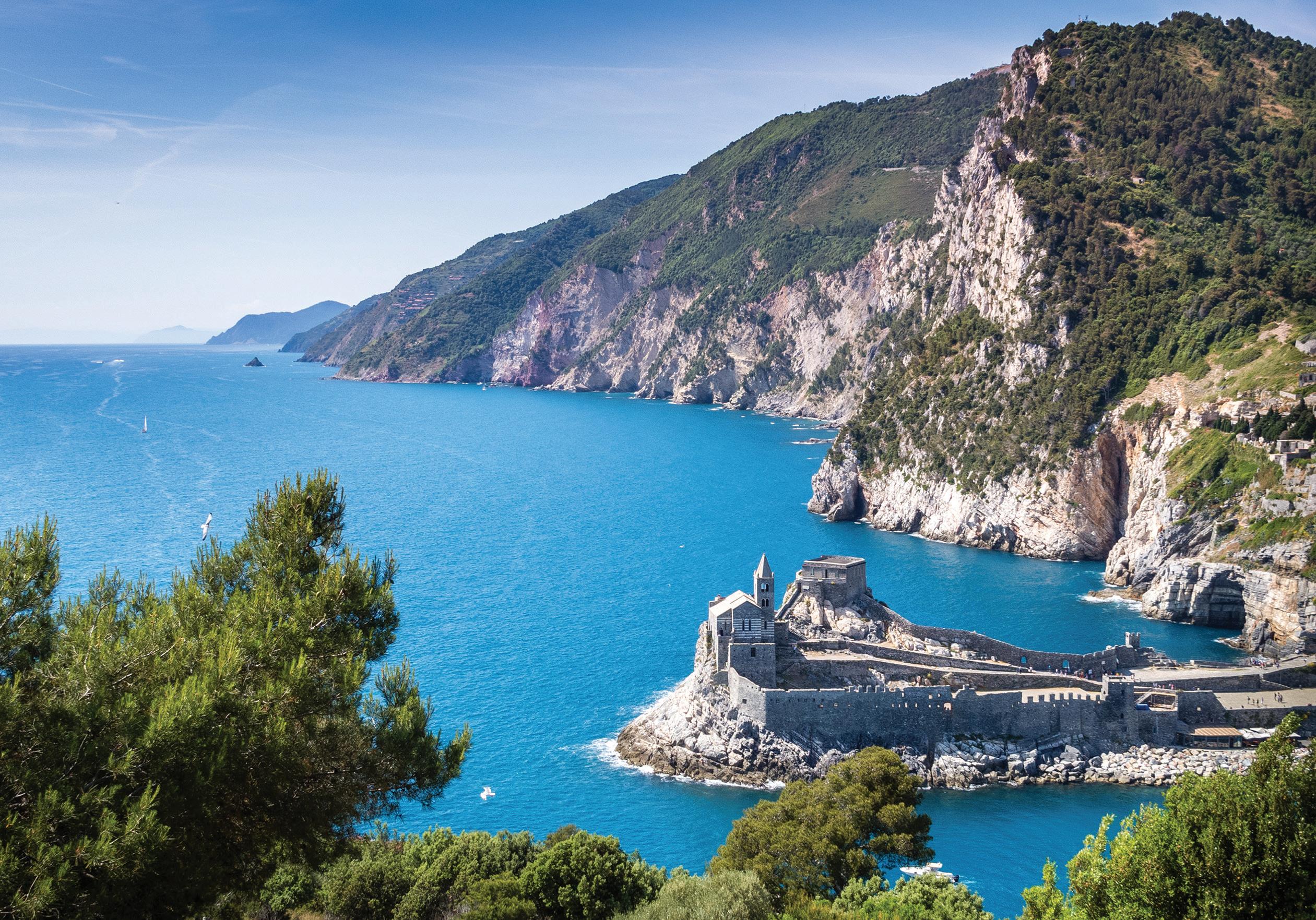
Please note that the itinerary represents a guide to what we hope to offer, and some elements may be subject to change or confirmation nearer the time. Our Tour Director will be undertaking a preparatory recce in advance of this tour, and may make some recommendations for changes as a result. Furthermore, please note that sometimes historical sites in Italy can undergo closures with little or no notice, for example for restoration works.
D ay 1 Depart London Heathrow 1035 on British Airways, arriving Milan Linate 1335. Transfer to Santa Margherita Ligure for four nights at Mediterraneo Emotional Hotel & Spa. Evening introductory lecture: ‘La Superba’ –Getting Lost in Old Genoa.
D ay 2 Genoa: cathedral, old port, National Gallery of Palazzo Spinola, Palazzo San Giorgio (exterior), Santa Maria di Castello, Church of Gesù, Palazzo Ducale (exterior).
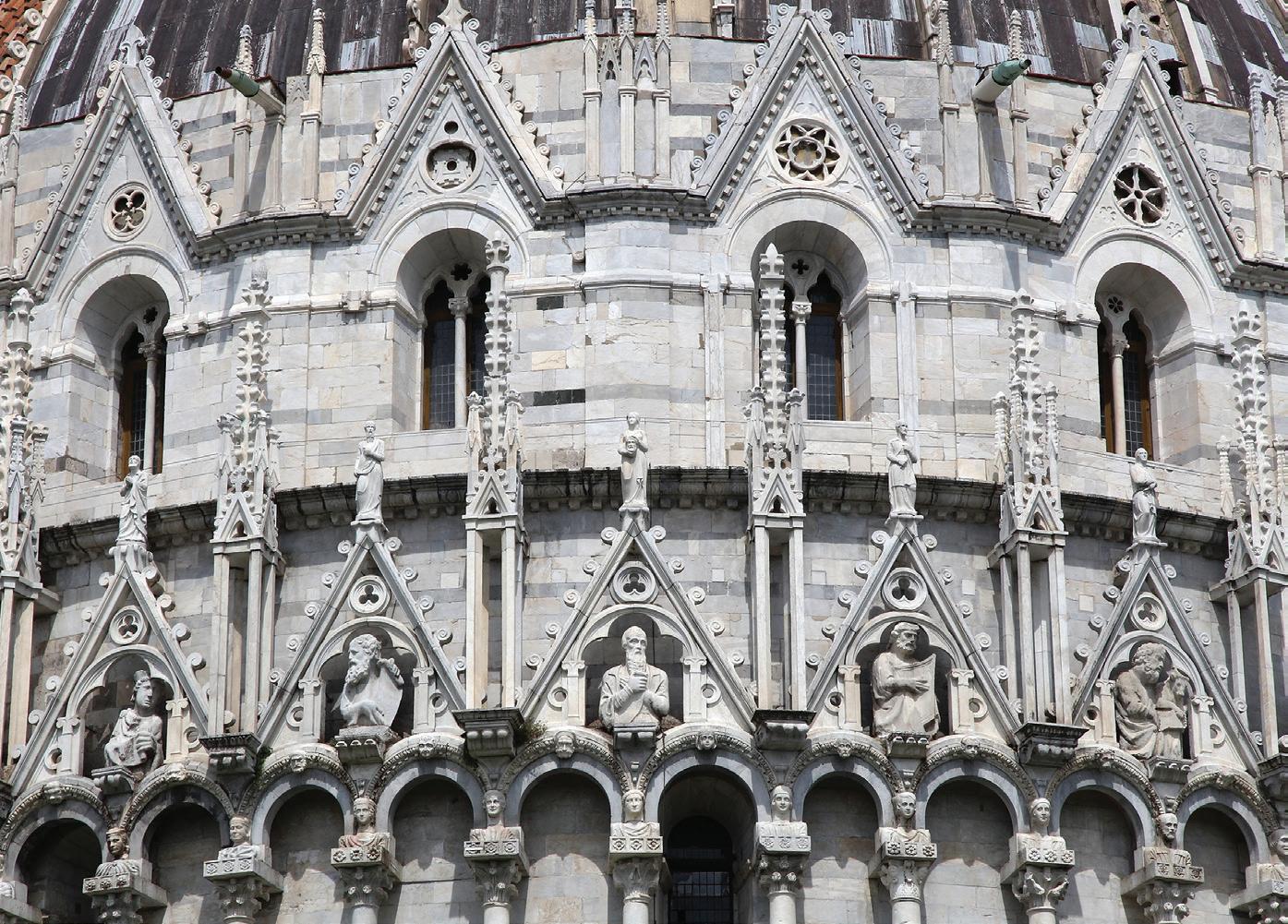
D ay 3 Morning: former abbey of La Cervara followed by Portofino. By boat to San Fruttuoso (weather permitting). Evening lecture: From Pirates to Prada – A Short History of the Italian Riviera.
D ay 4 Excursions to Chiavari and the Basilica dei Fieschi. Afternoon: walking tour of Santa Margherita Ligure. Free evening.
D ay 5 By train to Monterosso al Mare with time to visit the town. Transfer by boat along the Cinque Terre to Portovenere: Gothic Church of St Peter and Romanesque Church of St Lawrence followed by some free time. Overnight stay at Hotel Paradiso.
D ay 6 Morning: fortress town of Sarzana (cathedral). Continue via Fantiscritti for the Carrara marble quarries and Museo Walter Danesi to Pisa for two nights at Hotel Bologna.
D ay 7 Pisa: Campo Santo, cathedral and baptistery (subject to opening). Some free time. Evening lecture: Beyond the Leaning Tower – Pisa Past & Present.
D ay 8 Depart Pisa 1225, arriving Heathrow 1345.
Cost of £3395 includes: return airfare, accommodation based on sharing a twin or double bedded room, seven breakfasts, six dinners with wine, water & coffee, excursions & admissions, gratuities & all taxes.
Not included: travel insurance, double room for single use supplement £480 TOUR CODE: RIV125
May 15–21, 2025
Explore the iconic Art Deco movement in the 100th anniversary year of the founding Exposition des Arts Décoratifs
Discover superlative examples of Art Deco architecture in and around Brussels
Visit Lille’s Villa Cavrois, an extraordinary survivor of the high Art Deco style, and the fascinating Musée de la Piscine
The Exposition des Arts Décoratifs held in Paris in 1925 gave its name to the Art Deco style that came to symbolise the inter-war period around the world. This new tour celebrates Art Deco design in the cosmopolitan city of Brussels, where its legacy can be appreciated across churches, domestic houses and commercial buildings.
Art Deco adopted a sleek, streamlined style embracing geometric patterns, which spread from the decorative arts to architecture, and even designs for cars and steam locomotives.
The Van Buuren Museum was designed by two disciples of Frank Lloyd Wright and its interiors include furniture and decorative features purchased by the original owners at the 1925 Art Deco exhibition in Paris. The nearby Villa Empain is an exquisite Art Deco survival.
Further Art Deco masterpieces include BOZAR, the work of Victor Horta; the vast Basilica Church of the Sacred Heart; the concrete Church of St John the Baptist in Molenbeek; and St Augustine’s in Forest, built in the Art Deco style in the early 1930s and now a landmark of the Brussels skyline.
The Flagey Arts Centre, built in the 1930s as a modern broadcasting centre, was known as the ‘steamship’. Located next to the Ixelles Ponds, where Art Deco façades can be admired, today it is a thriving arts venue.
An excursion to Lille will offer visits to the striking Villa Cavrois, a modernist mansion built in 1932 and recently

restored to its former glory, and the Musée de la Piscine at Roubaix, occupying a former Art Deco swimming pool and bathing complex.
The tour will be based at Brussels’ magnificent four-star Hotel Le Plaza, an “Art Deco palace” completed in 1931, conveniently located in a lively part of the city.
FITNESS / PRACTICALITIES: A good level of fitness, mobility and stamina is required: our visits will involve navigating steps and stairs, and spending a significant amount of time on foot, walking outside (including over cobbles and uneven ground) and standing at visits, where there are not always frequent opportunities to sit. There is an option to enjoy the panoramic view from the dome of the Basilica Church of the Sacred Heart, accessible by lift, but participants can opt out of this element of the visit. Some visits will be made by metro, an efficient way to get around the city. Participants should meet ACE’s fitness criteria in our Booking Terms & Conditions.
The itinerary represents a guide to what we hope to offer, and some elements may change. Owing to the special nature of some visits, these are subject to confirmation nearer the time.
D ay 1 Depart London St Pancras 1104 on Eurostar, arriving Brussels 1405. Welcome and introductory lecture followed by short orientation walk and pre-dinner drink at L’Archiduc cocktail bar (iconic Art Deco venue). Six nights at Hotel Le Plaza, Brussels.
D ay 2 Uccle: Van Buuren Museum & Gardens and Villa Empain. Free evening.
D ay 3 Morning: Basilica Church of the Sacred Heart, Koekelberg and St John the Baptist,

Our Tour Director is Christopher Bourne , BA, an expert in 19th and 20th century art who lived in Brussels for 15 years. An experienced tour leader, he is a member of the Victorian Society and 20th Century Society amongst others.
Molenbeek. Afternoon: BOZAR. Some free time and optional independent visit to Magritte Museum. Free evening.
D ay 4 Whole day excursion to Lille for Villa Cavrois, Cointe and Musée de la Piscine, Roubaix.
D ay 5 Morning walking tour around Ixelles Ponds (façades) followed by Flagey Arts Centre. Afternoon excursion to Forest for coach tour (Art Deco building façades) and St Augustine’s Church.
D ay 6 La Prévoyance Sociale and former Rotterdam Insurance Company offices (visits subject to confirmation); lunch at Brasserie Residence Palace and visit to Forest Town Hall.
D ay 7 Morning lecture and some free time. Depart Brussels 1651, arriving London St Pancras 1757.
Cost of £2895 includes: return travel, accommodation based on sharing a classic twin or double bedded room, six breakfasts, three lunches, four dinners with water & coffee, excursions & admissions, gratuities & all taxes. Not included: travel insurance, classic double room for single use supplement £450.
TOUR CODE: ARDB25
June 12–18, 2025
Hear Bach’s outstanding church music from some of today’s leading exponents, including the Monteverdi Choir and cellist JeanGuihen Queyras
Enjoy a special additional performance in Halle courtesy of the Handel Festival, featuring one of today’s premier lyric tenors, Christoph Prégardien
Explore the rich musical heritage of Leipzig with visits to sites related to Bach, Mendelssohn and others
Leipzig lies at the heart of the classical music tradition: Wagner was born here, Mendelssohn died here and Bach spent nearly three decades as Kapellmeister at the Thomaskirche. It is fitting, therefore, that Leipzig plays host to a magnificent annual festival centred on Bach and the composers he inspired.
Two of our concerts will take place in the splendid Nikolaikirche, including a performance by the Monteverdi Choir alongside the English Baroque Soloists and internationally renowned conductor Sir John Eliot Gardiner. We will return for a performance of Bach’s St John Passion featuring La Cetra Vokalensemble and Barockorchester under the leadership of their prizewinning director Andrea Marcon.
We also look forward to two afternoon concerts at the Gewandhaus, whose acoustics are considered amongst the best in the world. An excursion to Halle will offer an opportunity to partake in another celebrated classical music event –the Handel Festival – with an afternoon performance at the Martin-LutherUniversität Löwengebäude featuring the renowned German tenor Christoph Prégardien.
We round off our tour with what is sure to be a highlight performance of Bach’s cello suites with the critically acclaimed Jean-Guihen Queyras.
Complementing the musical content, we will explore sites associated with J S Bach,


This tour will be led by Sandy Burnett MA , a musician and former broadcaster on BBC Radio 3. Sandy has masterminded a complete cycle of J S Bach’s sacred cantatas.
including the Bach-Archiv, the world’s pre-eminent centre of Bach scholarship. In Halle, meanwhile, we will explore the Handel House and W F Bach House on guided tours including instrumental demonstrations.
We will stay in the centre of Leipzig at the four-star Seaside Park Hotel.
FITNESS / PRACTICALITIES: This tour involves several excursions to museums, as well as walking tours. Participants should feel comfortable staying on their feet for extended periods of time, as well as navigating cobbles, steps and staircases, as lifts are not always available. There are stone steps at the Nikolaikirche, and some interiors are dimly lit. A good level of fitness is required for this tour, in line with our fitness requirements in the Booking Terms and Conditions.
The itinerary represents a guide to what we hope to offer, and some elements, including the musical programme, may be subject to change or confirmation nearer the time.
D ay 1 Depart London Heathrow 1110 on British Airways, arriving Berlin 1400. Transfer to Seaside Park Hotel, Leipzig, for seven nights. Welcome and introduction.
D ay 2 Morning lecture, walking tour of Leipzig and visit to Bach-Archiv. Evening festival performance at the Nikolaikirche featuring Monteverdi Choir with English Baroque Soloists & John Eliot Gardiner (conductor): J S Bach
Weinen, Klagen, Sorgen, Zagen, BWV 12, Ihr werdet weinen und heulen, BWV 103, Wir müssen durch viel Trübsal, BWV 146.
D ay 3 Whole day excursion to Halle for Handel House, W F Bach House and afternoon performance at Martin-Luther-Universität Löwengebäude featuring Christoph Prégardien (tenor): ‘Handel Italienisch & Englisch’. Return to Leipzig for evening festival performance at Nikolaikirche featuring Monteverdi Choir with English Baroque Soloists & John Eliot Gardiner (conductor): J S Bach Liebster Gott, wenn werd ich sterben, BWV 8, Wer weiss, wie nahe mir mein Ende, BWV 27, Christus, der ist mein Leben, BWV 95, Gottes Zeit ist die allerbeste Zeit , BWV 106.
D ay 4 Free morning with option to attend a Sunday morning service in Leipzig. Afternoon lecture and festival performance at Gewandhaus (Grosser Saal) featuring Michael Schönheit (Gewandhaus organist) with Gewandhaus Youth Choir & Frank-Steffen Elster (conductor): J S Bach Prelude & Fugue in C minor, BWV 549, Komm, Gott Schöpfer, heiliger Geist , BWV 667.2, Schmücke dich, o liebe Seele, BWV 654, Fantasia & Fugue in G minor. Evening festival performance at Nikolaikirche featuring La Cetra Vokalensemble Basel & La Cetra Barockorchester with soloists including Jakob Pilgrim (Evangelist), Christian Wagner (Jesus) & Andrea Marcon (conductor): J S Bach St John Passion, BWV 245.
D ay 5 Morning lecture and Mendelssohn House Museum. Late afternoon festival performance at Alte Börse featuring Benjamin Alard (harpsichord): J S Bach Toccata in C minor, BWV 911, French Suite No 4 in E flat, Sinfonia in B flat, BWV 800, Sinfonia in E flat, BWV 791, Sinfonia in C minor, BWV 788, O Gott, du frommer Gott , BWV 767, Toccata in D, BWV 912, French Suite No 5 in G, BWV 816.
D ay 6 Morning lecture followed by further visits in Leipzig or some free time. Late afternoon festival performance at Gewandhaus (Mendelssohn Saal) featuring Nevermind – Anna Besson (flute), Louis Creac’h (violin), Robin Pharo (viola da gamba) & Jean Rondeau (harpsichord, chest organ): J S Bach Goldberg Variations BWV 988. Evening festival performance at the Thomaskirche featuring Jean-Guihen Queyras (cello): J S Bach Six Cello Suites, BWV 1007-1012.
D ay 7 Transfer to Berlin for 1510 flight, arriving Heathrow 1605.
Cost of £3595 includes: return airfare, accommodation based on sharing a twin or double bedded room, performances as described, six breakfasts, two lunches, four dinners with water & coffee, excursions & admissions, gratuities & all taxes.
Not included: travel insurance, small double room for single use supplement £245.
TOUR CODE: BACH25
June 23 – July 1, 2025

Explore the churches, synagogues and galleries of Budapest and journey through western Hungary on an unrivalled exploration of the country’s rich cultural history
Visit Esztergom, Hungary’s ecclesiastical centre, and the rural palaces of Széchenyi and Eszterházy
Enjoy views over the Danube Valley in Visegrád and discover the picturesque area around Lake Balaton, the largest lake in central Europe
Hungary occupies a special place in European history, and this comprehensive tour, encompassing not only Budapest and the Danube Bend but travelling further afield, provides a rich and varied introduction to its fascinating culture.
The Magyars were latecomers to the scene in the political and ethnic upheavals that followed classical antiquity, and they also stand out for their uniquely non-European language among the Central European people. The different parts of the Magyar world experienced vastly diverging historical and cultural developments, as they came temporarily under the control of foreign powers, in particular the Ottomans and the Habsburgs.
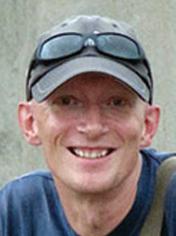
This tour will be led by Alex Koller, PhD, an expert in art and architectural history. Born in Vienna, Alex has lived and studied in Vienna, Salzburg and Cambridge, gaining his PhD in History of Art from Magdalene College, where he has also lectured and supervised.
Today’s Hungary bears traces of the medieval kingdom that adopted Christianity under the sainted King Stephen in the year 1000, as well as the later expanded realm within the Habsburg Empire. The Ottomans account for the introduction of features like Hungarian bathing culture, while the variety of people that used to live under the Crown of St Stephen is expressed
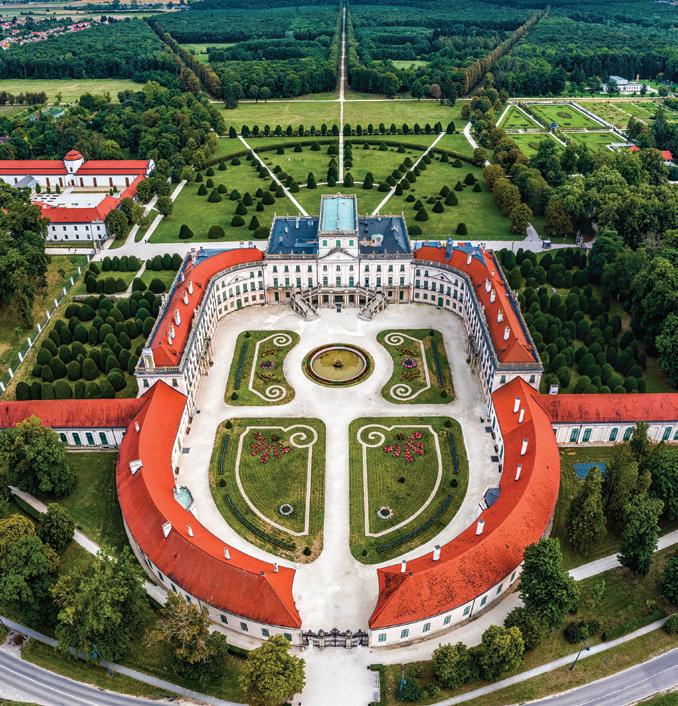
in the Serbian quarters of towns like Szentendre and Székesfehérvár. The glories of the Buda Renaissance court can still be appreciated in the ruins of Visegrád.
Our tour will explore these overlapping narratives, through visits across Buda and Pest, along the Danube Bend, in the Lake Balaton area and further into western Hungary. Excursions to palaces, churches, synagogues and galleries will illuminate our understanding of this rich and remarkable historical tapestry.
The restoration of Hungarian self-rule in the 19th century brought about the architectural ensemble of Budapest, which celebrated the confidence of the resurgent nation in monumental structures like the famous Parliament Building and Heroes’ Square. Together with the Danube River and the rocky outcrops on the Buda side, they form one of the most scenic and impressive compositions in any European capital.
Our tour begins with four nights in Budapest at the four-star Continental Hotel, an elegant oasis of calm in the heart of the city, followed by two nights at the four-star Hotel Golden Lake Resort in Balatonfüred, facing picturesque Lake Balaton, and two nights at the four-star Sopron Monastery Hotel, an elegantly converted former 12th century monastery.
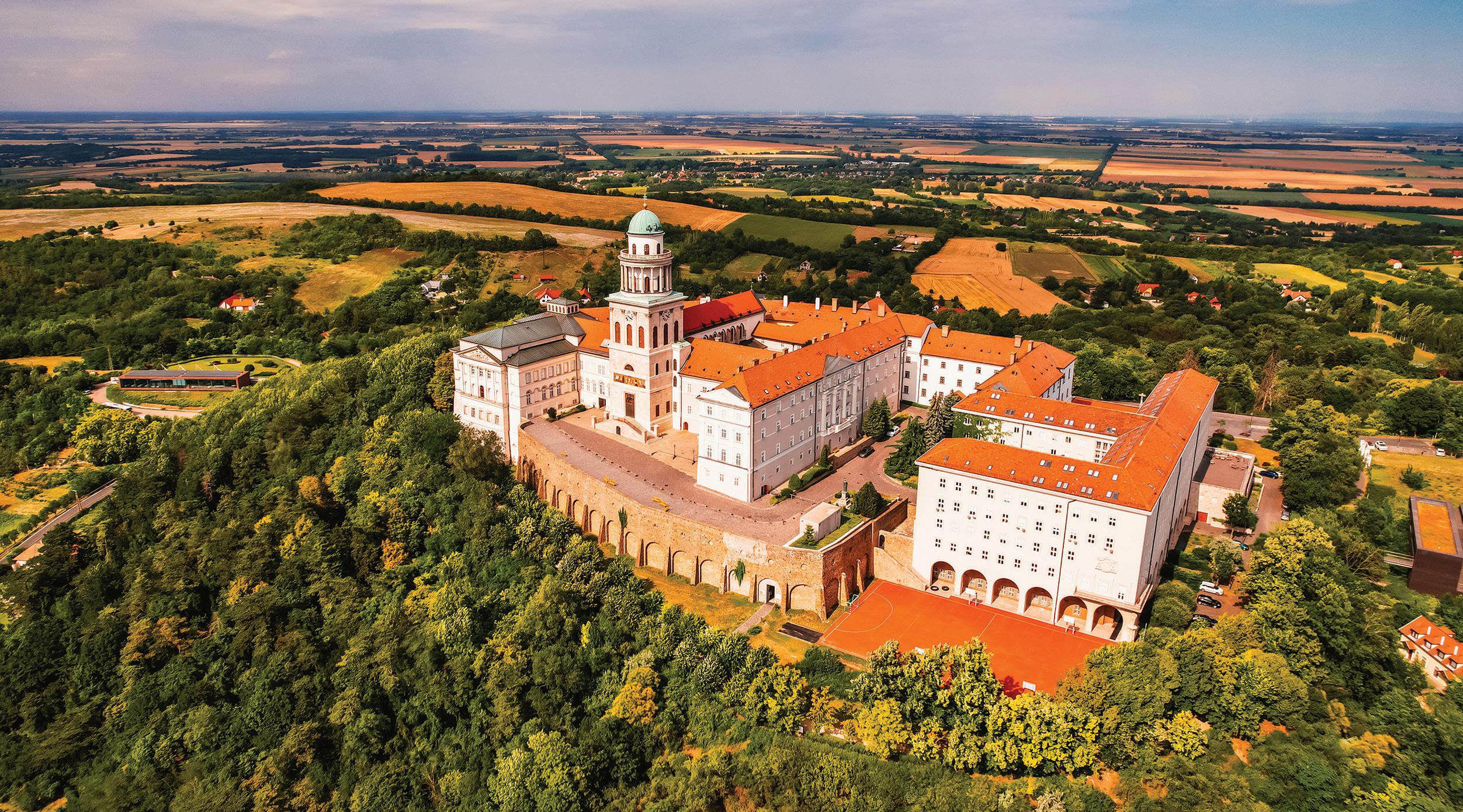
FITNESS / PRACTICALITIES: This study tour has a comprehensive itinerary to make the most of our time in Hungary and visit a breadth of sites, so a good level of fitness, stamina and mobility is required. Participants should be prepared for a significant amount of time spent on foot, walking and standing in cities, towns and at historical sites, where the ground may be steep, uneven, slippery or cobbled. Some sites also have steps (not necessarily with handrails), or are dimly lit. Please consult ACE’s fitness criteria in our Booking Terms & Conditions.
The itinerary represents a guide to what we hope to offer, and some elements may be subject to change, confirmation or reordering nearer the time. Historical and religious sites can close at short notice for restoration works or services.
D ay 1 Flight from London to Budapest. Transfer to Continental Hotel, Budapest, for four nights. Orientation walking tour and introductory lecture.
D ay 2 Visits in Budapest: Hungarian Parliament; St Stephen’s Basilica; Dohány Street Reformed Synagogue, Jewish Museum and Rumbach Orthodox Synagogue; Fine Arts Museum (time permitting).
D ay 3 Morning exploration of Buda: Mátyás Church, Fisherman’s Bastion and National Gallery. Afternoon in Pest: St Michael’s Church, Váci utca, Franciscan Church, Belvárosi Plébánia Templom, Danube Embankment and Gellért Baths.
D ay 4 Excursion to the Danube Bend: Szentendre, Esztergom (ecclesiastical centre of Hungary) and Visegrád (views over Danube Valley, remains of Royal Palace). Free evening in Budapest.

“An excellent trip to a fascinating part of the world… [Alex Koller] shares his considerable knowledge with enthusiasm. Excellent service from start to finish, at every level of the organisation”
– ACE customer on the 2024 Hungary: Kingdom of the Magyars tour
D ay 5 Depart for Győr (Church of St Ignatius, Great Synagogue) via Zsámbék ((ruins of Romanesque Premonstratensian abbey church). Afternoon: Pannonhalma Abbey. Continue to Lake Balaton area for two nights at Golden Lake Resort, Balatonfüred.
D ay 6 Excursion to Székesfehérvár (St Stephen’s Cathedral), Veszprém (castle hill, cathedral) and Tihany Abbey.
D ay 7 Keszthely (Festetics Palace). Continue to western Hungary via Sümeg (church with frescoes), Türje (rare brick church) and Szombathely (cathedral, exterior views of early Christian ruins). Continue to Sopron for two nights at Sopron Monastery Hotel.
D ay 8 Morning: Széchenyi Palace and Eszterházy Palace, Fertőd. Afternoon: historical walking tour of Sopron (churches, patricians’ houses, Old Synagogue – exteriors).
D ay 9 Transfer to Vienna for flight to London.
Cost of £4695 includes: return airfare, accommodation based on sharing a twin or double bedded room, eight breakfasts, seven dinners with water & coffee, excursions & admissions, gratuities & all taxes.
Not included: travel insurance, double room for single use supplement £795. TOUR CODE: HUKM25
June 26 – July 5, 2025
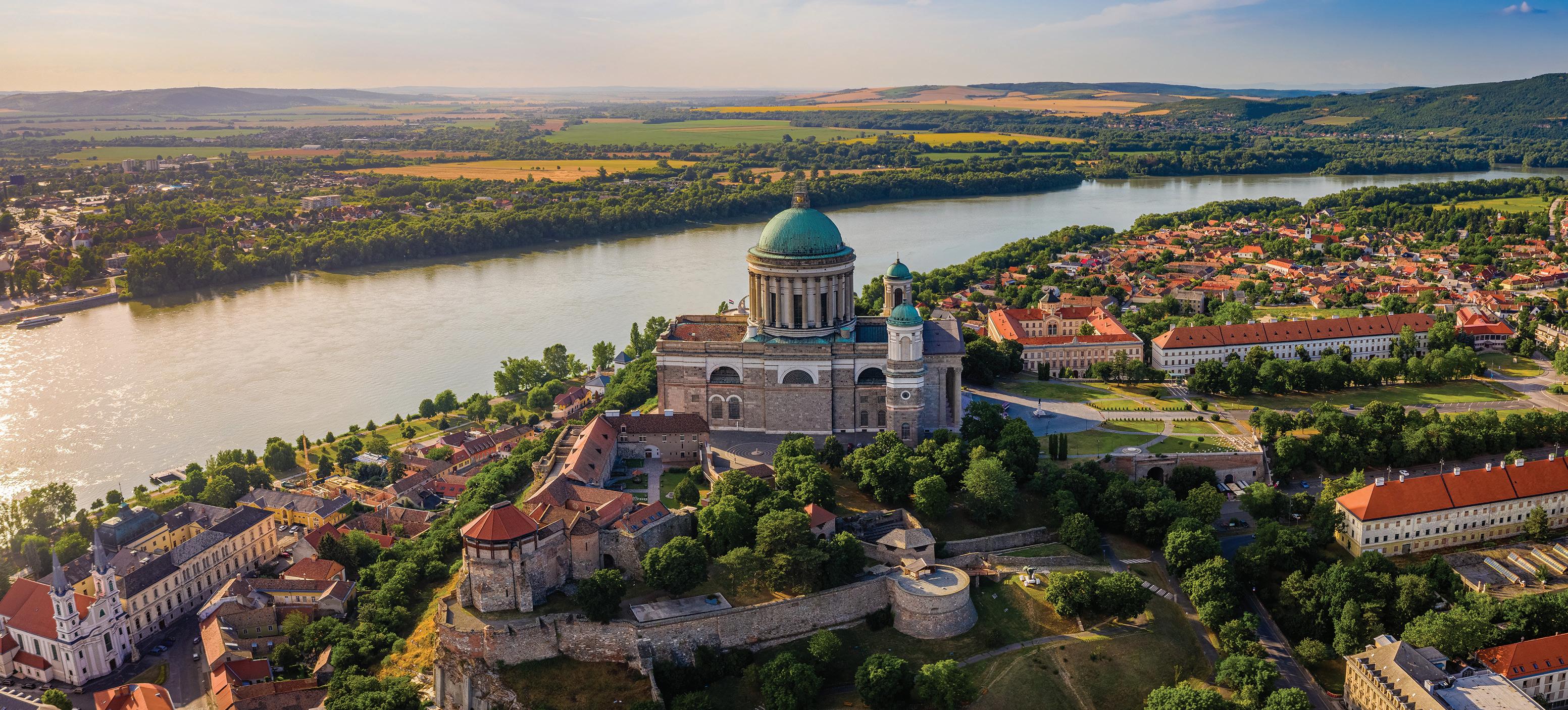
A host of expert Tour Directors illuminates the history of this commanding waterway, its artistic and musical heritage
Stay in Salzburg before journeying through Austria, Slovakia and Hungary, taking in the treasures of Vienna, Melk, Bratislava, Kalocsa, Budapest and Esztergom
Experience a sparkling array of musical performances, including piano, Baroque flute and song recitals
The mighty River Danube strides across a vast stretch of Europe. For centuries it has formed the borders of nations and empires, turning the tide of history and inspiring a myriad of writers, artists and musicians.
Our exploration of the region’s cultural riches begins with two nights in Salzburg,
OUR VESSEL:
The MS Douce France has been completely refurbished to five-anchor standard (similar to a good four-star hotel standard). At 110 metres long, the ship has two decks, a sun deck and a total of 55 cabins.
“A wonderful and stimulating programme of music and art”
– ACE customer on the 2023 Danube River Cruise
where we will explore Mozart’s birthplace and view the rare manuscripts held in the Autograph Vault of the Mozarteum. Continuing to Vienna, we will set off for our voyage upon the Danube.
Visits range from the breathtaking abbey at Melk to the medieval streets of Bratislava’s Old Town, and the Baroque reading room of the Archbishop’s Palace in Kalocsa to Budapest’s castle district, as well as Esztergom’s magnificent basilica and Vienna’s Kunsthistorisches Museum.
Musicians Emilie Capulet (piano), Ashley Solomon (flute), Judy Brown (soprano)
and Nicholas Wearne (organ, piano) will perform, giving life to the celebrated opus of works inspired by the river and connected to the countries we will travel through. We also plan to attend a performance at one of Vienna’s classical music venues, subject to final scheduling. Art historians Andrew Spira and Tom Abbott will deliver on-board lectures, while also guiding at several sites.
Visits will be taken at a leisurely pace, with several opportunities to explore locations independently, and to appreciate the river’s surroundings during relaxed stretches of cruising.
We begin with two nights on land at the four-star Hotel Imlauer Pitter, Salzburg, before continuing to Vienna to embark the MS Douce France, our privately chartered riverboat, for the subsequent seven nights.

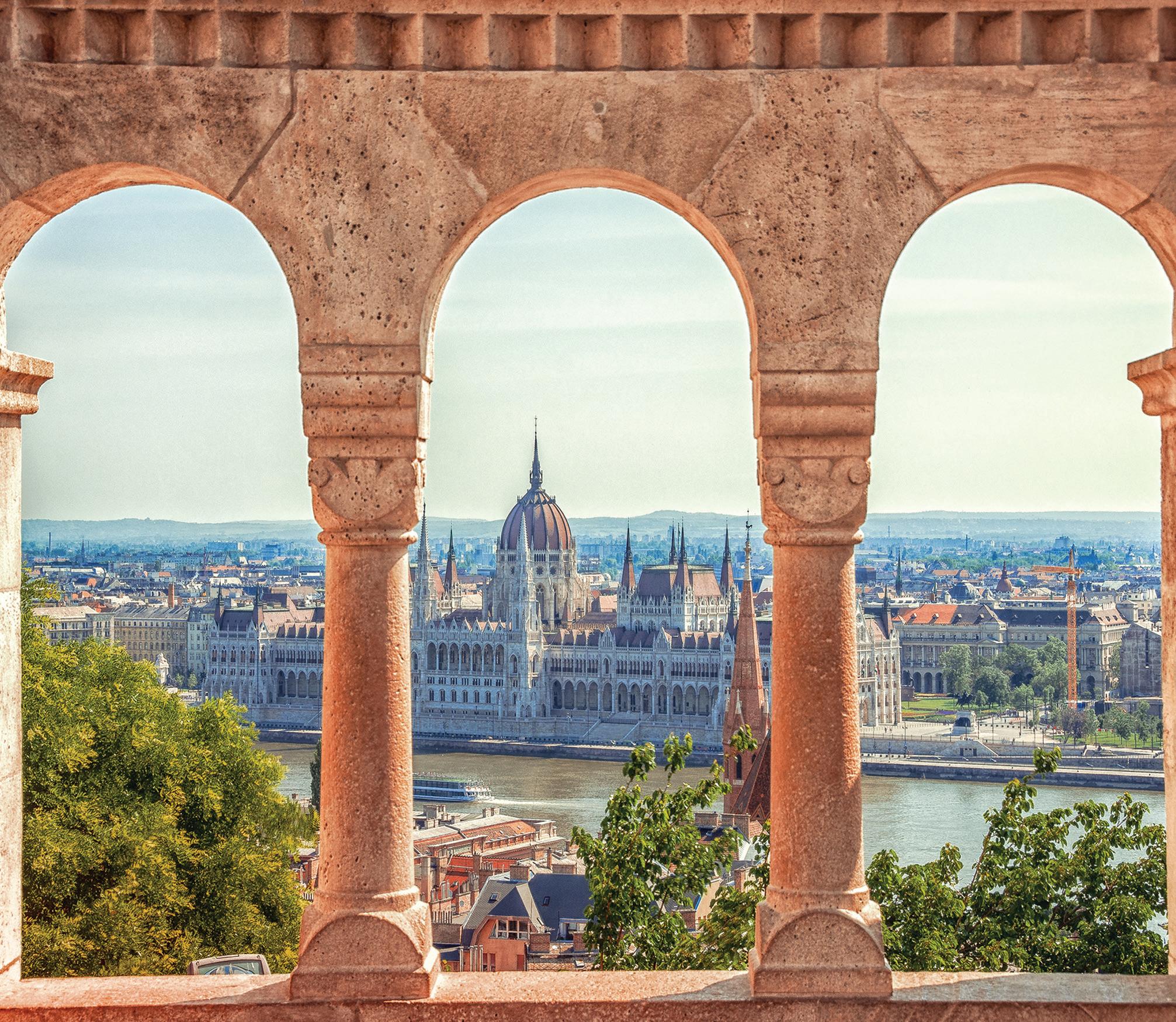
FITNESS / PRACTICALITIES: Participants should have a good level of fitness and mobility for this tour, and meet ACE’s fitness requirements in our Booking Terms & Conditions. This tour is not envisaged to be particularly strenuous, but will involve time spent walking and standing, including over cobbles, uneven terrain, occasionally steep inclines and steps, which can be slippery if wet. Some visits require extra care, due to dimly-lit interiors, and attention must be paid upon embarkation/ disembarkation of the boat, as it is necessary to cross gangplanks. The group will comprise a maximum of 72 participants, who will be divided into smaller groups for the majority of our onsite visits.
The itinerary represents a guide to what we hope to offer, and some elements may be subject to change or confirmation. Due to changing conditions associated with waterways, the precise timings and order of visits may change nearer the time.
Cost of £4695 includes: return airfare, accommodation based on sharing a twin room in Salzburg and twin cabin (main deck) on board MS Douce France, nine breakfasts, five lunches, nine dinners with water, tea & coffee (plus unlimited wine, beer & soft drinks during the cruise), excursions & admissions, musical performance in Vienna (subject to confirmation), all gratuities & all taxes. Not included: travel insurance, hotel & main deck twin cabin for single use supplement £895, hotel & upper deck twin cabin for single use supplement £1295, twin upper deck supplement of £590 (based on sharing a cabin). Further supplements on request.
TOUR CODE: DANC25
D ay 1 Depart London Heathrow 1050 on Lufthansa, arriving Munich 1340. Transfer to Salzburg for two nights at Hotel Imlauer Pitter. Welcome and introduction.
D ay 2 Short talk with Ashley Solomon: Mozart followed by guided walking tour of Salzburg (visits to Cathedral and Mozart’s birthplace). Afternoon: guided visit to original archives in the Mozarteum’s Autograph Vault and optional visit to the Fortress.
D ay 3 Transfer via Linz to Vienna and embark the MS Douce France. Crew welcome and introduction. Cruise towards Melk.
D ay 4 Melk Morning: Melk Abbey (guided tour, flute and organ recitals). Cruise towards Dürnstein. Afternoon: Dürnstein Abbey (free time, short organ recital in abbey church). Predinner flute recital on board. Cruise towards Bratislava.
D ay 5 Bratislava Walking tour of Bratislava’s medieval Old Town and historical centre (St Michael’s Gate, National Theatre, Town Hall, main square, embassies and Old Opera House –exteriors). Afternoon: some free time and talks on board while boat cruises towards Kalocsa. After-dinner piano recital on board.
D ay 6 Kalocsa Assumption Cathedral (Treasury), Archbishop’s Palace (Baroque reading room), some free time and talks on board while boat cruises towards Budapest. After-dinner piano recital on board.
D ay 7 Budapest Morning city coach tour (Opera House, Heroes’ Square, basilica and city park – exteriors) followed by Buda Hill, Fisherman’s Bastion and Matthias Church. Afternoon: Music Academy (guided tour, mini concert) and Liszt Ferenc Museum (guided tour, short recital). After-dinner song recital on board. Boat cruises overnight to Esztergom.
This tour will feature a variety of guest Tour Directors who will join us at different stages of our journey, supported by several excellent local guides.
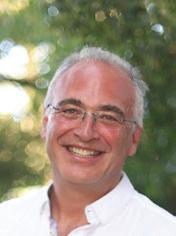
Ashley Solomon , FRCM, FRAM, is Chair and Head of Historical Performance at the Royal College of Music and Director of Baroque ensemble Florilegium.
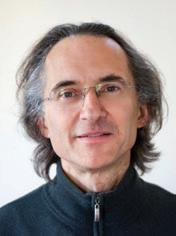
Andrew Spira , MA, is an art historian who has worked at the Temple Gallery, V&A Museum and Christie’s Education.
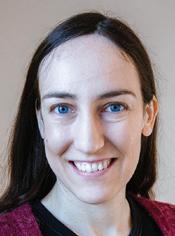
Emilie Capulet , MA, MMus, PhD, is an award-winning international concert pianist, lecturer and musicologist.
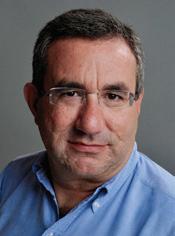
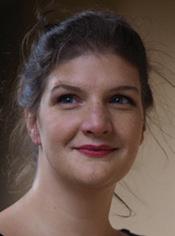
Tom Abbott , MA, is an independent art and architectural historian with extensive experience directing cultural and art tours in Europe. Mezzo-soprano Judy Brown trained at the Guildhall School of Music & Drama and is a much sought-after recitalist, opera and consort singer.
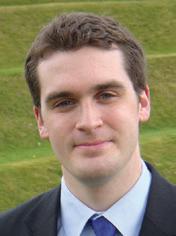
Nicholas Wearne , MPhil, is a Senior Tutor at the Royal Birmingham Conservatoire who has held a number of prestigious positions as organist.
D ay 8 Esztergom Guided walking tour (Cardinal’s palace, Jesuit Church, former mosque and Royal Castle – exteriors) and visit to Esztergom Basilica (Treasury). Afternoon: free time and talk on board while boat cruises towards Vienna. Evening cocktail reception, gala dinner and celebratory music on board.
D ay 9 Vienna Short walking tour of central Vienna, guided tour of Kunsthistorisches Museum and some free time. Afternoon talk on board introducing this evening’s opera. Evening performance at Vienna State Opera (to be confirmed).
D ay 10 Disembark MS Douce France. Transfer to Vienna airport for 1245 flight on Austrian Airlines, arriving Heathrow 1420.
July 3–10, 2025
Explore Muséoparc Alésia, an immersive museum built on the site of the Battle of Alésia
Visit the UNESCO World Heritage site of Vézelay, an enduring masterpiece of Burgundian Romanesque architecture
Spend a day in Dijon, exploring the Cathedral of St Bénigne, Archaeological Museum and Palais des Ducs
Settled originally by the Gallic Celts, this French province has been a hub for political and cultural development in Western Europe.
The immersive museum of Museoparc Alésia offers an in-depth experience of Roman occupations in Burgundy. Built on the plain of the climactic Battle of Alésia, its circular form and symbolic architecture conjure images of the siege. The nearby Gallo-Roman ruins will allow us to visualise the daily lives of those that settled after the wars. At the Musée du Pay Châtillonnais, we will examine the Vix Krater, the largest surviving metal vessel discovered in the tomb of a 5th century BCE Gallic noblewoman.
Some of Europe’s most architecturally impressive Romanesque monuments can be found in Burgundy, such as the once imposing abbey at Cluny, the great cathedrals at Autun and Dijon, and the pilgrimage centre of Vézelay. Here, the

This tour will be led by Hugh Doherty, DPhil, a Lecturer in Medieval History at the University of East Anglia in Norwich. Hugh is a medievalist with broad historical interests, who studied at King’s College London before gaining his MPhil at the University of Cambridge and his DPhil at the University of Oxford.
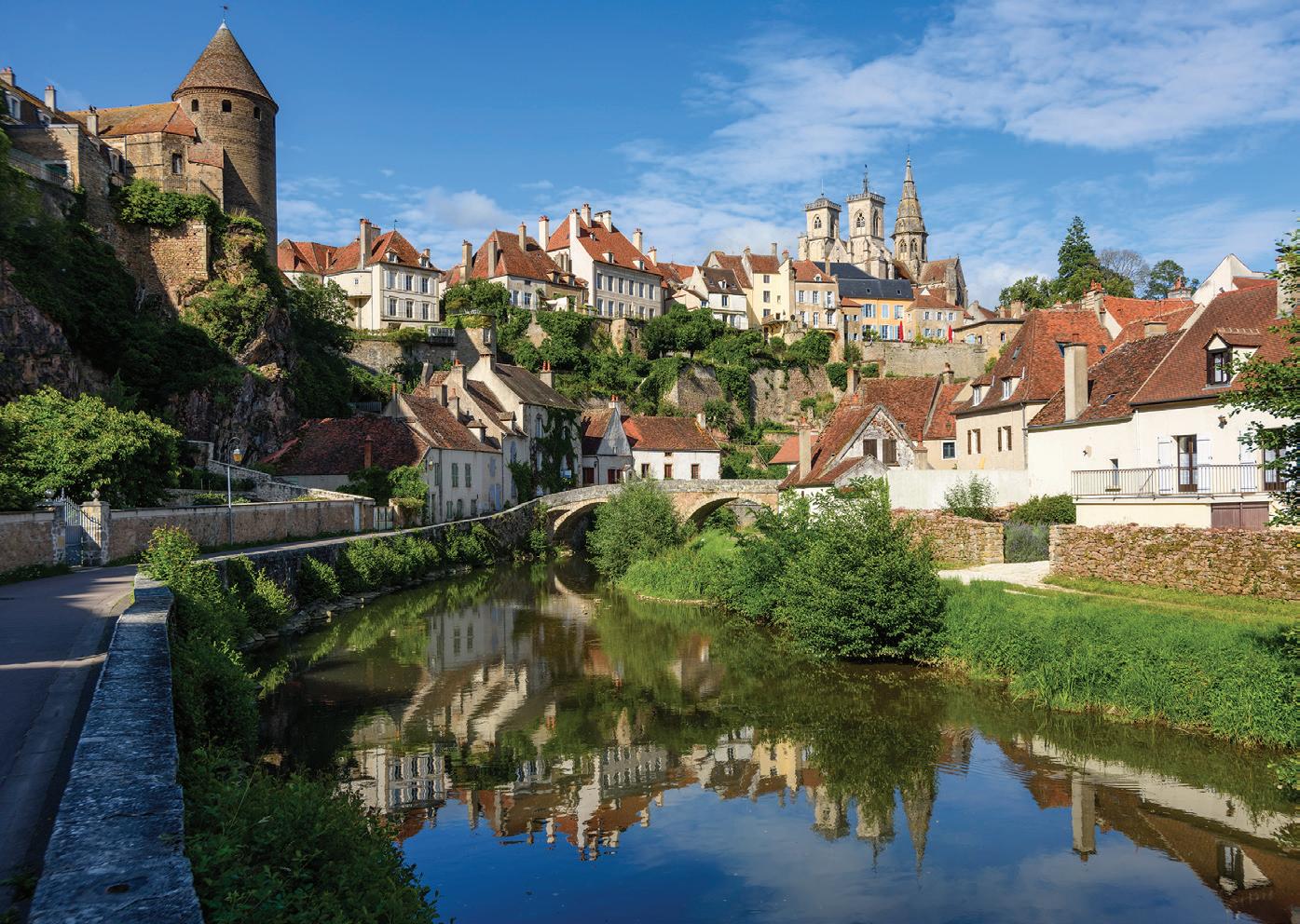
Sainte Marie-Madeleine is a tour de force of the Burgundian Romanesque style. The magnificent 10th century church at Tournus is a superb example of First Romanesque architecture.
We begin in Vézelay with two nights at the elegant four-star Hotel de la Poste et du Lion d’Or, before moving to Beaune, where we will stay at the four-star Hotel de la Poste, a location close to the famous Hotel-Dieu.
FITNESS / PRACTICALITIES: Please note that this tour will involve walking over ground that can be uneven, steep or cobbled, and slippery if wet. A good level of fitness is required as it involves a moderate amount of time spent walking and standing, and participants should meet the minimum fitness criteria in ACE’s Booking Terms & Conditions. Church interiors can be dimly lit, and several visits involve traversing steps, including a spiral staircase at St Philibert.
The itinerary represents a guide to what we hope to offer. Some elements may be subject to change or confirmation, or may be reordered nearer the time. We cannot guarantee the availability of all artworks listed, and historical and religious sites can occasionally close at short notice for restoration works or services.
D ay 1 Depart London St Pancras 1030 on Eurostar and TER via Paris, arriving Montbard 1754. Transfer to Vézelay for two nights at Hotel de la Poste et du Lion d’Or. Short evening
lecture: An Introduction to Roman & Medieval Burgundy.
D ay 2 Morning in Auxerre: Abbey of St Germain and Gothic Cathedral of St Etienne. Afternoon: Musée du Pays Châtillonnais.
D ay 3 Morning visit in Vézelay to La Madeleine followed by Romanesque Church at Avallon and Basilica of St Andoche at Saulieu. Transfer to Beaune for five nights at Hôtel de la Poste.
D ay 4 Whole day excursion to Dijon: Musée Archéologique, Cathedral of St Bénigne, Palais des Ducs and Chartreuse de Champmol.
D ay 5 Morning: Cluny. Afternoon: Berzé-la-Ville and St Philibert at Tournus.
D ay 6 Morning: Muséoparc Alésia. Afternoon: Semur-en-Auxois.
D ay 7 Autun: Théâtre Romain, Temple of Janus and Port Saint-André (exteriors) followed by Cathedral of St Lazare and Museum of Natural History. Beaune: Collegiate Church of Notre Dame.
D ay 8 Morning: Hotel-Dieu. Transfer to Dijon for 1202 departure on Eurostar via Paris, arriving London St Pancras 1730.
Cost of £3595 includes: return travel, accommodation based on sharing a twin or double bedded room, seven breakfasts, one lunch, six dinners with wine, water & coffee, excursions & admissions, gratuities & all taxes.
Not included: travel insurance, double room for single use supplement £560. TOUR CODE: MBUR25
July 24–30, 2025
Discover the history of the Hanseatic League from the major merchant centres of Hamburg and Lübeck
Explore medieval church architecture in an array of locations, including the Church of St Mary in Lübeck, which epitomises the north German Brick Gothic style
Visit fascinating museums and galleries, including Hamburg’s Kunsthalle and the European Hansemuseum in Lübeck
The Hanseatic League left a rich legacy in art, architecture and maritime tradition. Starting with the collaboration of Hamburg, Lübeck and Lüneburg in the 13th century, before becoming a union of north European trading cities, Hamburg and Lübeck remained strongholds of the League until its formal end in 1862.
Our tour is based in the major merchant centres that initiated the first trading associations of ‘Hanses’. In Hamburg, home to the third busiest port in Europe, we will survey the city’s historical buildings and visit some of its museums, including Hamburg’s Kunsthalle, which houses works of art dating from the medieval period to the present day.
Lüneburg was an important salt-trading town, and boasts one of the most magnificent and best-preserved town halls in Germany. It was through the vast waterways of Europe that the League built up its trade.
Once the capital of the League, Lübeck is one of the best preserved of all the Hanseatic towns, with a fine array of Brick Gothic buildings. Here, we will visit the European Hansemuseum, and discover some fascinating churches.
We will also enjoy excursions to the town of Wismar in former East Germany, famed for its 17th century Wasserkunst waterworks, and to Bad Doberan, where a visit to the minster will enhance our tour.

In Hamburg, we will spend three nights at the four-star Kleinhuis Hotel Baseler Hof in the centre of the city. We will then spend a further three nights in Lübeck at the Atlantic Hotel, located in the old town.
FITNESS / PRACTICALITIES: Please note that a good level of fitness is required for this tour. The itinerary involves a moderate amount of time spent on foot during historical walking tours, often over cobbles (which can be slippery if wet), and standing in galleries and museums. Some historical buildings do not have lifts so it is necessary to ascend stairs. Participants should meet ACE’s usual fitness criteria, as outlined in our Booking Terms & Conditions.
Please note that the below itinerary represents a guide to what we hope to offer. Some elements may be subject to change or confirmation nearer the time, or weather dependent on the day. We cannot guarantee the availability of all artworks.
D ay 1 Depart London Heathrow 1105 on British Airways, arriving Hamburg 1340. Afternoon visits to Museum für Kunst und Gewerbe and St Michael’s Church. Three nights at Kleinhuis Hotel Baseler Hof, Hamburg.
D ay 2 Morning lecture followed by visit to Hamburg Kunsthalle. Afternoon walking tour to include exterior views of Chile House, Kontorhaus, Speicherstadt and short opportunity to visit Internationales Maritimes Museum. Continue walk through HafenCity with exterior views of Elbphilharmonie and Rathaus.
D ay 3 Guided tour of Lüne Kloster and visits in Lüneburg: exceptionally preserved Rathaus, churches.
D ay 4 Depart for Lübeck for visit to Lübeck Cathedral and some free time. Afternoon: Museum Behnhaus Drägerhaus and walking tour including Church of St Catherine, Church of St Jacob, Heiligen-Geist-Hospital and Burgtor
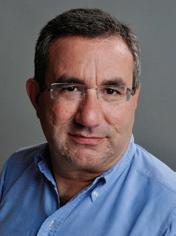
This tour will be led by Tom Abbott , BA, MA, an independent art and architectural historian associated with the Foundation of Prussian Palaces and Gardens. Tom has extensive experience leading cultural tours in Europe, to destinations including Germany, Poland, France and Italy. His expertise concerning art and architecture ranges widely, with interests in all aspects of European medieval and contemporary art, architecture and history.
(exterior). Three nights at Hotel Atlantic. Evening Lecture: The Art & Architecture of the North – Past and Present.
D ay 5 Whole day excursion to Wismar with visits to Church of St Nicholas, Wasserkunst and Church of St George. Afternoon: Bad Doberan.
D ay 6 Walking tour of Lübeck including Church of St Peter, 13th century Church of St Mary, Salzspeicher and Rathaus. Afternoon: Hansemuseum.
D ay 7 Morning visit to St Annen-Museum. Continue to Hamburg for 1725 departure, arriving Heathrow 1805.
Cost of £3295 includes: return airfare, accommodation based on sharing a twin or double bedded room, six breakfasts, two light lunches, six dinners with water & coffee, excursions & admissions, gratuities & all taxes.
Not included: travel insurance, double room for single use supplement £315. TOUR CODE: HANS25
August 19–25, 2025
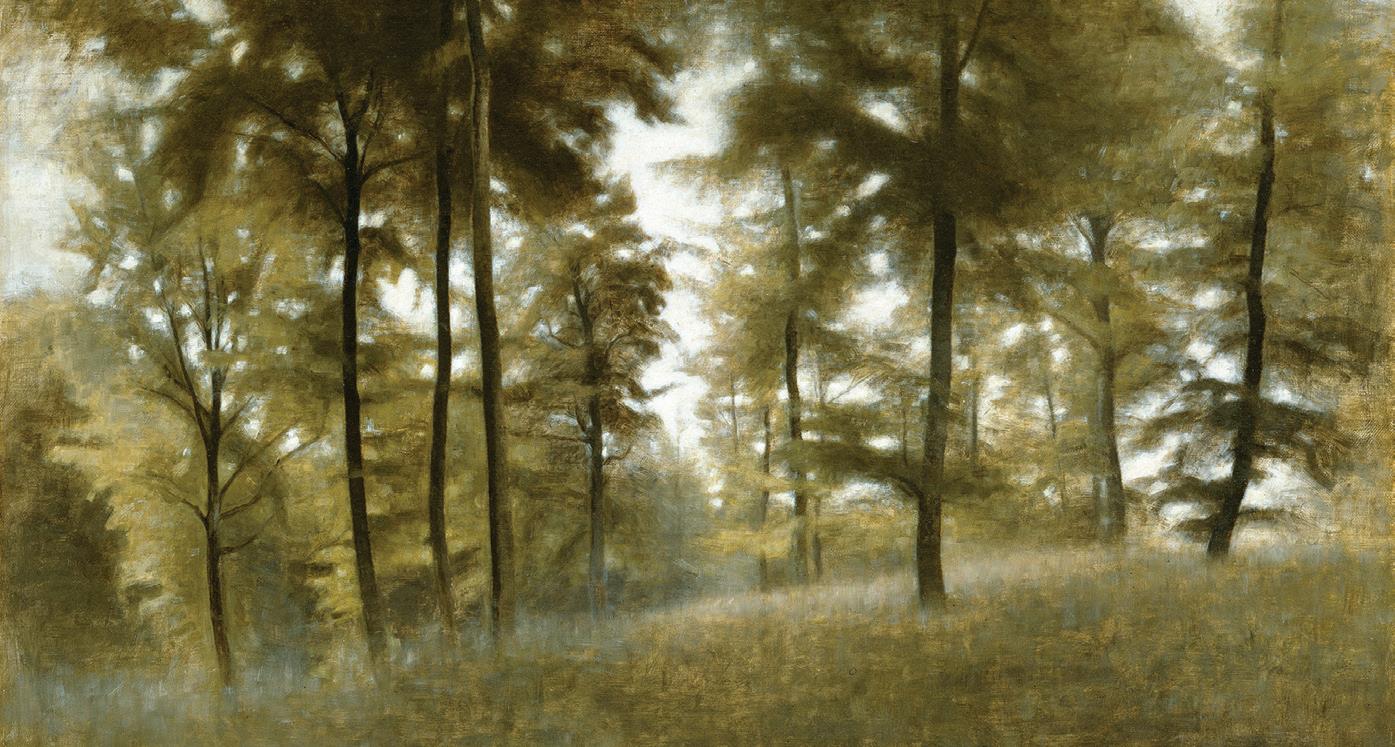
Explore internationally renowned collections at the Statens Museum for Kunst and Louisiana Museum of Modern Art
Learn about the country’s fine ceramics in the company of expert Tour Director, Lars Tharp, with visits to the David Collection and Designmuseum
Explore the fascinating history of Denmark at the open-air Frilandsmuseet
Copenhagen, founded by Bishop Absalon in 1167, is a vibrant but relaxed capital brimming with museums and galleries. The city and surrounding area of Zealand – or, in Danish, Sjælland – tell a farreaching story of many different kinds of creators, from artists and authors to architects, alongside the rich and varied communities that gave rise to them.
With this in mind, our tour seeks to explore the diverse artistic and historical treasures of this part of Denmark. We will begin with explorations in and near the historical capital itself, including the Statens Museum for Kunst, whose roots stretch back to the 16th century private collection of King Christian II. This is complemented later in our tour by visits to the splendid Frederiksborg Castle and Louisiana Museum of Modern Art, as well as an opportunity to pay an independent visit to the Thorvaldsens Museum, with its particular focus on neoclassical sculpture.
“Lars is a superb guide. Informative, interesting and fun… This was one of the best, if not the best, tours I have ever been on by any cultural tour company”
– ACE customer on a previous art tour in Copenhagen led by Lars Tharp
As a counterpoint to the indoor galleries, the spectacular open-air Frilandsmuseet, part of the National Museum of Denmark, will transport us back in time to the world of rural Denmark.
A particular focus of our tour will be ceramics; the David Collection, with its late 18th century interiors, is home to a collection of German and French porcelain; and our Tour Director, ceramics expert Lars Tharp, will introduce us to the collections of porcelain at this and other sites, including the Designmuseum.
We will stay throughout at the elegant four-star 71 Nyhavn Hotel in Copenhagen, enjoying smart contemporary rooms set in a converted 1805 brick warehouse in an excellent location overlooking the harbour.
FITNESS / PRACTICALITIES: This tour requires a good level of fitness, as it involves a moderate amount of walking, both in the city of Copenhagen and at open-air museums where the ground can be uneven or cobbled underfoot and hilly in places. The longest walk will be approximately 1 hour 15 minutes, taken at a gentle pace. Some interiors will be dimly lit. Participants should meet ACE’s fitness criteria as outlined in our Booking Terms & Conditions.

This tour will be led by Lars Tharp, MA, FSA, Hon DLitt. Lars is a Danish-born art historian, lecturer and broadcaster who is particularly well-known for his work on the BBC’s Antiques Roadshow, as well as Hidden Treasures and Art of the Baroque. A former Director of the Foundling Museum, Lars is a ceramics specialist who has curated or overseen exhibitions at the York Art Gallery and the Foundling Museum.
Please note that the itinerary represents a guide to what we hope to offer, and some elements may be subject to change or confirmation nearer the time.
D ay 1 Depart London Heathrow 1020 on Scandinavian Airlines, arriving Copenhagen 1315. Introductory tour by coach and on foot of Copenhagen (Christianshaven, Little Mermaid statue, Kastellet, Gefion Fountain, Amalienborg Palace square – exteriors). Six nights at 71 Nyhavn Hotel, Copenhagen.
D ay 2 Visits to Frilandsmuseet and Statens Museum for Kunst.
D ay 3 Morning: National Museum of Denmark. Free afternoon with opportunity to visit the Thorvaldsens Museum or other museums independently.
D ay 4 Morning: Grundtvig’s Church and Ordrupgård. Afternoon: Louisiana Museum of Modern Art.
D ay 5 Morning: Frederiksborg Castle. Afternoon: Designmuseum, Bredgade (ceramics). Free evening.
D ay 6 Morning: Rosenborg Castle. Afternoon: David Collection.
D ay 7 Transfer to Copenhagen Airport via Our Saviour’s Church and Dragør. Depart Copenhagen 1640, arriving Heathrow 1740.
Cost of £3795 includes: return airfare, accommodation based on sharing an executive double bedded room, six breakfasts, three lunches (one light & two packed), five dinners with water & coffee, excursions & admissions, gratuities & all taxes.
Not included: travel insurance, executive double room for single use supplement £695.
TOUR CODE: ACCP25
September 22–27, 2025
Explore a wealth of artistic treasures within Switzerland’s stunning natural and urban environments, including works by Klee and Picasso
Visit internationally important museums of fine art, including the Kunstmuseum in Basel
Be immersed in the beauty of the Swiss landscape
The landscapes of Switzerland – its lakes, Alpine peaks and elegant cityscapes –have long captured the imaginations of travellers and artists, and today, the country is home to some of the world’s finest collections of art. This tour explores art within Switzerland’s beautiful surroundings, investigating how these twin themes are profoundly intertwined, and will particularly focus on the art of the 19th and 20th centuries.
The Swiss capital, Bern, will be our base. Mountains watch over the medieval architecture of its UNESCO-listed old town, complete with Gothic-style Minster and 13th century Clock Tower. The city’s Kunstmuseum is the repository for an important collection of art dating from the 15th to the 20th century, including pieces by Monet, Picasso and Klee, as well as the famed 19th century Swiss painter Ferdinand Hodler.
The Victorian critic, patron and artist John Ruskin observed the Alpine landscape as it changed over the course of 40 years, and his preoccupation with the poetic qualities and environmental importance of Switzerland’s natural landscape still resonates today. We will consider these themes as we travel by train, taking in views of mountains, vineyards and Lake Geneva, and by boat as we cruise around Lake Lucerne.
The Rosengart Collection in Lucerne features modern art by the likes of Bonnard, Braque, Picasso, Kandinsky and Klee, to name but a few, the collection attests to the passion, taste and generosity of its founders.
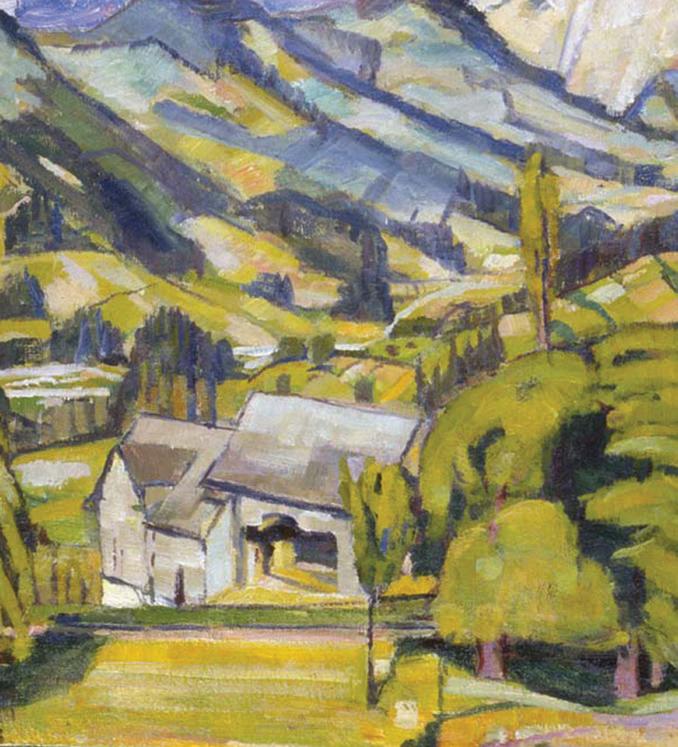
Basel, a historically important city on the Rhine, is renowned for its iconic architecture, world-famous ART Basel festival and wealth of galleries and art museums. We will visit the impressive Kunstmuseum, the world’s first public art museum. It is particularly rich in 19th and 20th century art, including pieces by the Impressionists and Expressionists.
Meanwhile, the most important global collection of works by Klee is to be found in a museum dedicated to the artist in Bern.
We also hope to include an opportunity, weather permitting, to become truly immersed in the Swiss landscape with an excursion by train to the picturesque mountain village of Grindelwald, which Turner visited on his first tour in 1802.
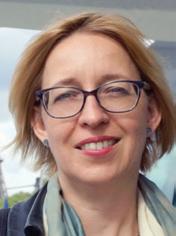
This tour will be led by Suzanne Fagence Cooper, MA, PhD, an Arts Society accredited lecturer, historian and curator who specialises in 19th and 20th century art. A Research Curator at York Art Gallery, Suzanne was previously a curator and Research Fellow at the V&A. She curated the 2019 exhibition Turner, Ruskin & the Storm Cloud at York Art Gallery, and is the author of To See Clearly: Why Ruskin Matters (2019).
We will stay at the four-star Best Western Plus Hotel Bern, located in the centre of the old town.
FITNESS / PRACTICALITIES: A good level of fitness is required for this tour, as it involves a significant amount of walking, including over cobbled streets, steps, inclines and uneven surfaces which can be slippery if wet. It is necessary to stand for prolonged periods at some of the sites; most galleries have stools but these cannot be guaranteed. The itinerary incorporates several journeys made by public transport, including train and tram, and care is needed when embarking and disembarking. The walk up the hill at Grindelwald is taken at a gentle pace but some paths are steep so participants are welcome to opt out and enjoy free time in Grindelwald if preferred. We hope to feature a cruise on Lake Lucerne. For ACE’s minimum fitness requirements, please consult the Booking Terms & Conditions.
The itinerary represents a guide to what we hope to offer, and some elements may be subject to change or confirmation nearer the time. Our excursion to Grindelwald is weather permitting. We cannot guarantee the availability of all artworks mentioned.
D ay 1 Depart London Heathrow 0925 on British Airways, arriving Geneva 1205. Transfer by train along the length of Lake Geneva and into the mountains to Bern for five nights at Best Western Plus Hotel Bern. Evening lecture: 19th Century Encounters with the Alps.
D ay 2 Morning walking tour of Bern: arcades, Rathaus, Zytglogge, Bern Minster and Bear Garden (exteriors). Afternoon: Kunstmuseum Bern.
D ay 3 Whole day excursion by train to Basel: Kunstmuseum, Minster (exterior) and Jean Tinguely Museum.
D ay 4 Whole day excursion by train to Lucerne: Rosengart Collection and cruise on Lake Lucerne. Free evening in Bern.
D ay 5 Morning lecture: 20th Century Modernism Excursion by train via Interlaken to Grindelwald for optional walking tour or free time.
D ay 6 Morning: Paul Klee Museum. Depart Geneva 1800, arriving Heathrow 1845.
Cost of £2995 includes: return airfare, accommodation based on sharing a double bedded room, five breakfasts, four dinners with wine, water & coffee, excursions & admissions, gratuities & all taxes. Not included: travel insurance, double room for single use supplement £395. TOUR CODE: ALSW25
October 7–15, 2025
Explore Poland’s Arts & Crafts movement in the company of one of the leading experts in the field, art historian Julia Griffin
Gain an understanding of the movement’s rich decorative traditions and material culture across visits in Zakopane and Kraków, with privileged access to several sites
Explore the Silent Villa, the newly opened Wyspiański Museum and the famous Stained Glass Workshop and Museum
‘Young Poland’ (1890-1918) is one of the most wide-ranging and original movements within Polish art; characterised by the integration of fine and decorative arts, and a revival of handicrafts, it was part of the international Arts & Crafts movement that originated with William Morris, John Ruskin and the Pre-Raphaelites.
Young Poland emerged as an expression of the Polish people’s yearning for political independence and a means of preserving their cultural identity; artists and designers created a new visual language inspired by their country’s history, nature and landscape, as well as vernacular craft and architectural traditions. Our tour will explore the theme of ‘beauty as a form of political resistance’ as we visit the key localities of Zakopane and Kraków.
In Zakopane, the Tatra Museum holds the most comprehensive collection of costumes and objects belonging to the Highlander shepherds, whose houses, carvings and embroideries were a major source of inspiration for Stanisław Witkiewicz’s Zakopane Style in architecture and interior decoration, admired by John Ruskin. We will visit Witkiewicz’s first major architectural commission, Villa Koliba, and his magnum opus, the House under the Firs, with a guided tour from a descendant of

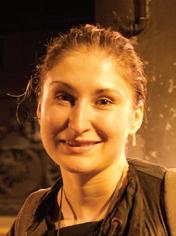
Our tour is led by art historian and curator Julia Griffin , MA, PhD, a specialist in 19th and 20th century British and Polish art, design and cultural history. As Young Poland Project Curator at the William Morris Gallery, Julia co-curated the world’s first exhibition on the movement and co-edited the publication Young Poland: The Polish Arts & Crafts Movement 1890-1918 (2020). She is currently co-editing a book on Stanisław Wyspiański to accompany a show at the National Portrait Gallery in London, opening in March 2025.
the family who originally commissioned the house.
The privately owned Silent Villa, Karol Kłosowski’s studio house conceived as a ‘Total Work of Art’, will be a further highlight.
In Kraków, our tour explores the role of Jan Matejko, the innovative history painter and pioneering designer
considered the father of Young Poland. We will also learn about his most famous student, the reformer Stanisław Wyspiański, Morris’s closest counterpart and subject of an upcoming exhibition at London’s National Portrait Gallery.
We begin with three nights at the fivestar Aries Hotel & Spa in Zakopane, an elegant, centrally-located property, before moving to the charming four-star Hotel Francuski, built during the Young Poland period in a quiet part of Kraków’s Old Town.
FITNESS / PRACTICALITIES: This study tour has a full itinerary to make the most of our time in Poland, and participants should have a good level of fitness, mobility and stamina. It involves a significant amount of walking, including over uneven ground, paving slabs and cobbles. Many historical buildings do not have lifts so some visits involve navigating stairs (occasionally steep). At Weiss House, it is necessary to ascend slippery marble steps to the entrance without a handrail, so care must be taken. Some sites are dimly lit. Participants should be prepared for spending periods of time standing, as seats are not always available. This tour includes an optional ascent by cable car to view the Kasprowy Wierch peak followed by an optional mountain walk led by an experienced guide. This excursion involves walking across a meadow, over potentially slippery surfaces, rocks, stones and tree roots,
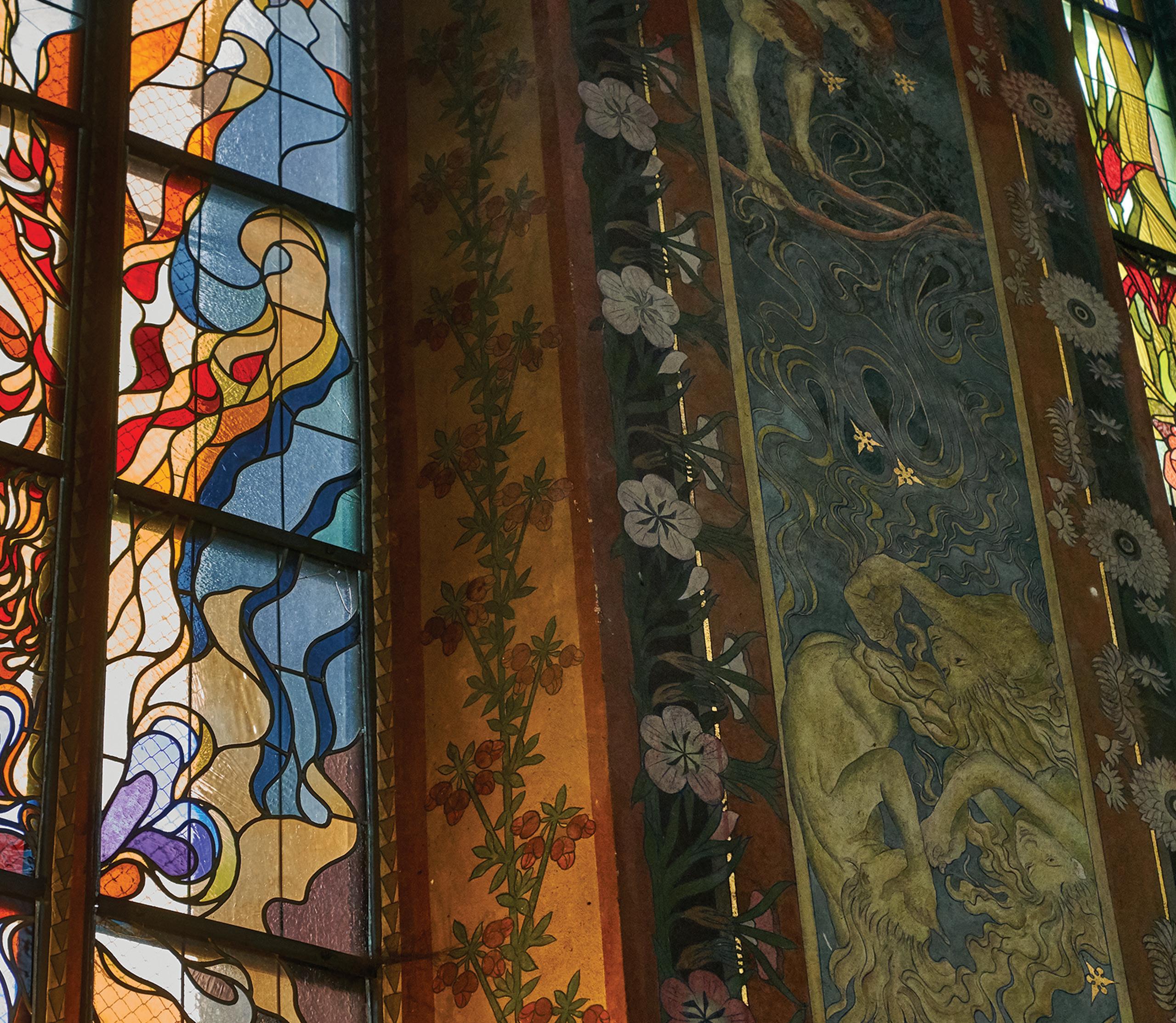
and temperatures at the peak can be around 0 degrees Celsius; participants are welcome however to enjoy free time in Zakopane instead, or opt out of the walk and enjoy refreshments after the cable car journey. Full details of the options available will be given by the tour personnel. Please consult ACE’s minimum fitness criteria in our Booking Terms & Conditions.
The itinerary represents a guide to what we hope to offer, and owing to the special nature of certain visits, some elements may be subject to change or confirmation nearer the time, or may be time or weather permitting on the day. We cannot guarantee the availability of all artworks mentioned.
D ay 1 Depart London Gatwick 0925 on Easyjet, arriving Kraków 1255. Transfer to Zakopane for three nights at Aries Hotel & Spa. Welcome and introductory talk en route.
D ay 2 Morning lecture: Young Poland in Zakopane – Stanisław Witkiewicz’s Zakopane Style and Karol Kłosowski’s Ethos of Beauty in Daily Life. Visits to Tatra Museum, Museum of Zakopane Style, Koliba Villa and Madonna of Częstochowa Old Church.
“Brilliant… Some tours are a revelation and this was one”
– ACE customer on the 2023 Young Poland tour led by Julia Griffin
D ay 3 Morning: House under the Firs and Chapel of the Sacred Heart. Afternoon: Silent Villa and Harenda.
D ay 4 Optional excursion to Kasprowy Wierch in Tatra Mountains (with early morning departure for visit to Highlander Shepherd’s cheese-making farm, cable car to the peak and optional mountain walk), or free morning in Zakopane. Afternoon: Oksza Villa. Continue to Kraków for five nights at Hotel Francuski.
D ay 5 Morning lecture: ‘A Kind of Polish William Morris’ – Stanisław Wyspiański & the Young Poland Movement in Kraków and visit to Franciscan Church. Afternoon: Medical Society and Wyspiański Museum.
D ay 6 Morning: Conference Room of the House under the Globe and Mehoffer House Museum. Afternoon: Wojciech & Irena Weiss House. Free evening.
D ay 7 Morning: former Museum of Industry & Technology (now Academy of Fine Arts). Afternoon and evening at New Manor House, Goszyce (private art collection, music recital, private dinner).
D ay 8 Morning lecture: Jan Matejko’s Legacy as the Father of Young Poland. Visits in Old Town: Sukiennice (Old Cloth Hall) Gallery, Stained Glass Workshop & Museum and Jan Matejko House Museum.
D ay 9 Transfer to Kraków for 1105 flight, arriving Gatwick 1235.
Cost of £3995 includes: return airfare, accommodation based on sharing a twin or double bedded room, eight breakfasts, two lunches, seven dinners (one light) with water & coffee, excursions & admissions, gratuities & all taxes. Not included: travel insurance, double room for single use supplement £595. TOUR CODE: ACPO25
November 6–12, 2025

Discover the legacy of Al-Andalus as we explore the architecture of Córdoba and Granada
Highlights include the Great Mosque of Córdoba and Granada’s famous Alhambra and Generalife –all UNESCO World Heritage sites
Learn about the wider heritage and context of this beautiful region of Spain
In 711, Tariq ibn-Ziyad crossed the Straits of Gibraltar, quashing the previous Visigothic rule, sweeping through the Iberian peninsula and establishing AlAndalus: Islamic Spain. With its regional capital in Córdoba, a leading cultural and economic centre in the Mediterranean basin, advancements in many fields –such as science and culture – ensued.
Medicine, astronomy, literature, music and philosophy saw rise through the region, while expansions in art and architecture are still visible today in the stunning buildings, mosques and gardens to be found throughout the region.
Our journey begins in Córdoba, where the archaeological museum, built over the remains of the Roman theatre, illuminates the city’s history from prehistoric times to the Middle Ages.
At the heart of Córdoba’s Islamic inheritance lies one of Europe’s greatest buildings: the Mezquita, the Great Mosque, with its forest of columns under double-tiered arches, superb mihrab and series of domes. It was transformed into a cathedral during the 13th century.
We will learn about the golden age of Al-Andalus when the Great Mosque was built in Córdoba.
At the behest of Abd ar-Rahman III, the huge fortified palace city of Madinat al-Zahra was founded on the hills outside Córdoba, with building beginning in 940.
Other highlights of our time in Córdoba will include a walking tour by the
Guadalquivir River, and a visit to the Alcázar with its Moorish-design gardens, containing cypresses, orange and lemon trees and water features.
We will then continue to Granada, a major city during the 11th century and home to the famed Alhambra of the Nasrid Sultans and the adjoining Generalife with its evocative gardens. In the 13th century, Granada became the capital under Nasrid rule and was the last Islamic-ruled state in the Iberian peninsula.
A visit to the Renaissance cathedral and Royal Chapel in Granada, where we will see the tombs of Ferdinand and Isabella,
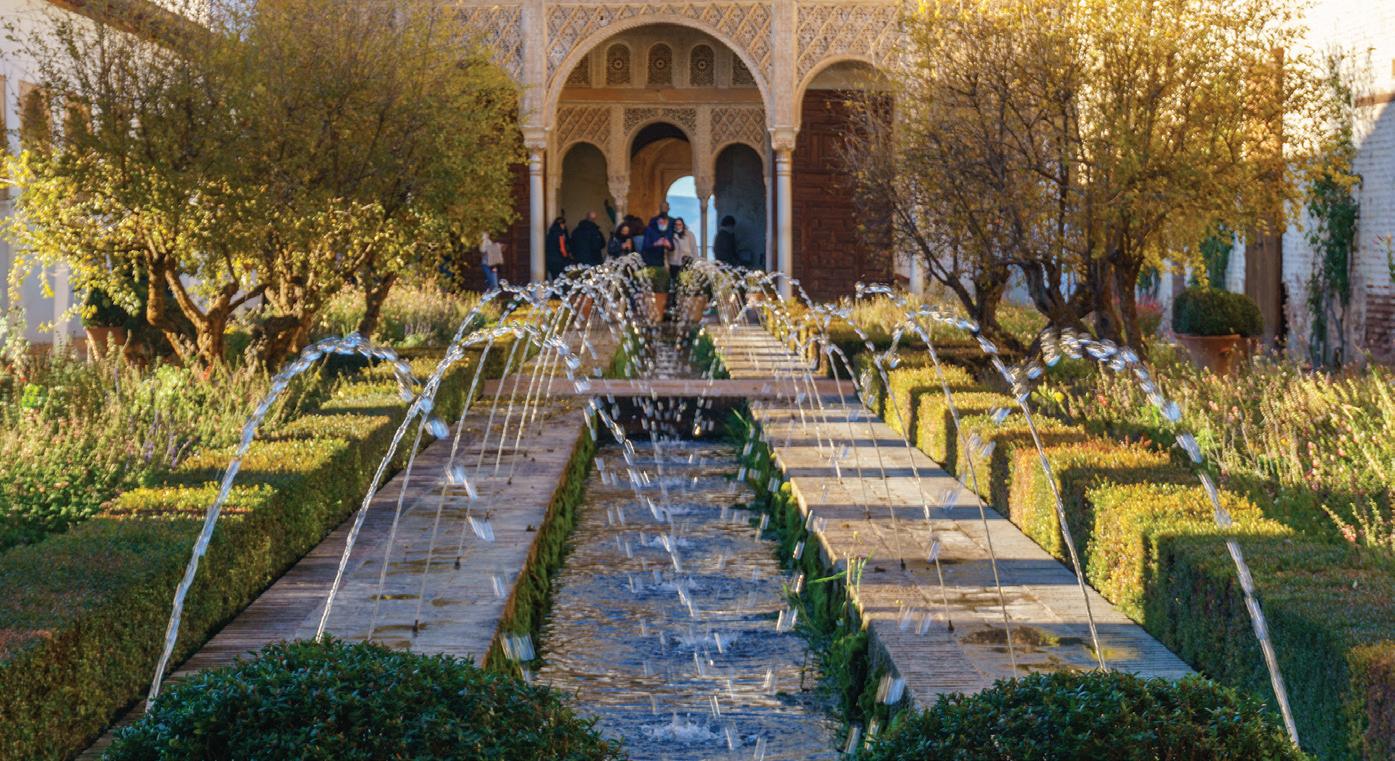
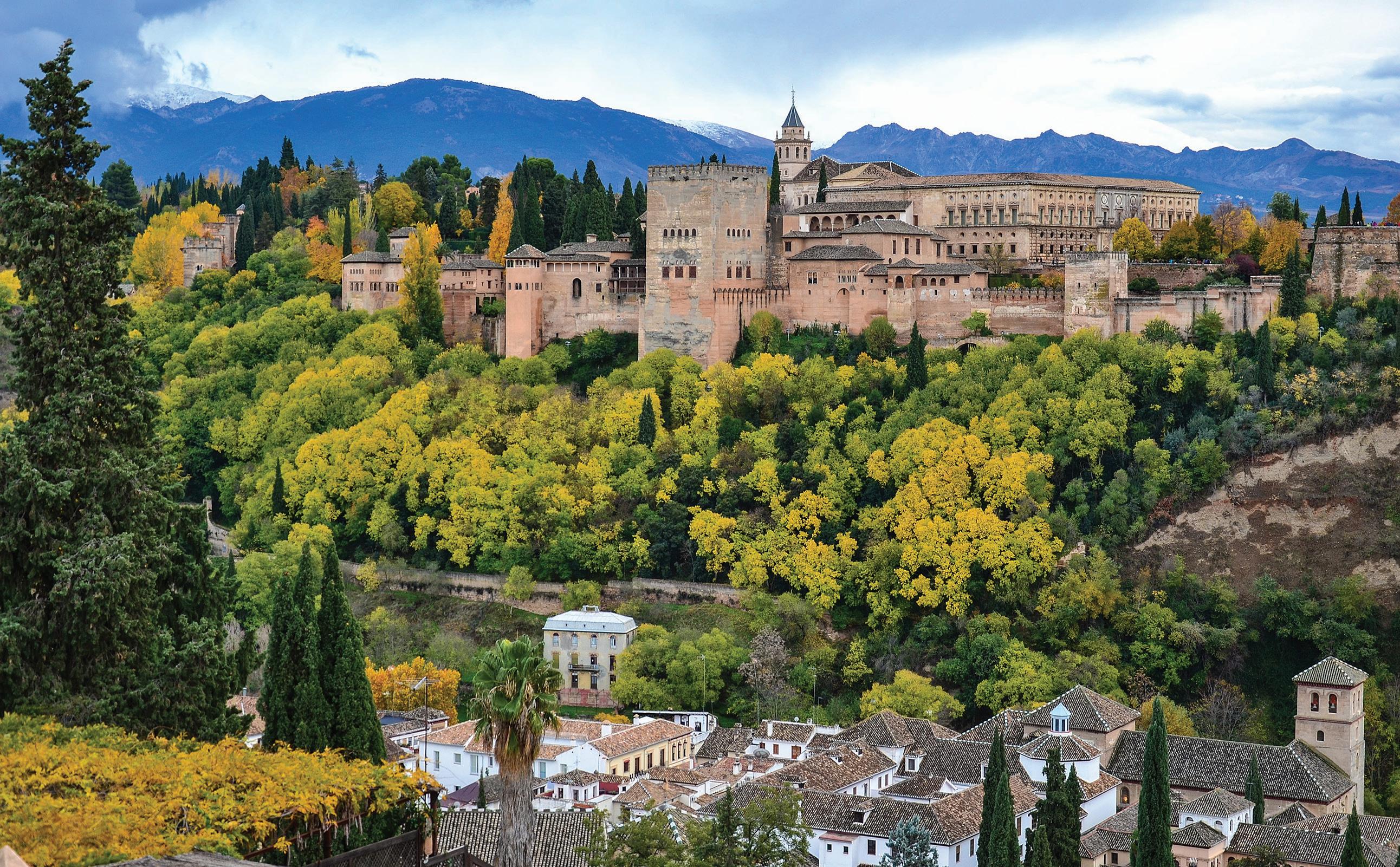

This tour will be led by Isaac Nugent , MA, an art historian who holds an MA in Cultural Intellectual and Visual History from The Warburg Institute and an MA in Art and History of Art from the University of Edinburgh. Isaac is currently pursuing an AHRC-funded PhD at the University of York, examining how Renaissance urban environments were reshaped through painted architecture between 1530-1630. He has also worked as a Curatorial Assistant and gallery educator at the National Gallery, and writes book and exhibition reviews for a range of publications including the Burlington Magazine.
will emphasise blending of Islamic and Christian traditions in the region. Built by Queen Isabella after the conquest of Granada, the cathedral is located on the former site of the ancient mosque.
We also hope to visit one of Spain’s best preserved alcazabas in Malaga as well as the cathedral which is located within the limits of the original Moorish walls.
In Córdoba our base will be the fourstar Hotel NH Collection Amistad, a smart, well-located hotel occupying 18th century mansion buildings, while in Granada we will stay at the four-star Hotel Barceló Carmen, a comfortable, well-appointed property in the heart of the city.
FITNESS / PRACTICALITIES: A good level of fitness is required for this tour, as a number of visits will be made on foot, and participants should be aware that walking around the historical cities and sites involves traversing uneven ground, cobbled streets and some uphill sections with at times demanding gradients. For instance, the site of Madinat al-Zahra is exposed, with uneven terrain, steps and inclines. For more details on ACE’s minimum fitness requirements, please see our Booking Terms & Conditions.
Please note that the itinerary represents a guide to what we hope to offer, and some elements may be subject to change or confirmation nearer the time. Archaeological sites and religious centres can close or change their opening times at short notice; therefore, some visits may be reordered.
D ay 1 Flight from London to Málaga. Transfer to Córdoba for three nights at the Hotel NH Collection Amistad Córdoba. Welcome and introductory lecture: Al-Andalus Spain.
D ay 2 Walking tour of Córdoba including Synagogue, Jewish Quarter and Calleja de las Flores followed by visit to Archaeological Museum. Afternoon: Great Mosque (now cathedral, dating from the late 8th to late 10th century). Evening lecture.
D ay 3 Madinat al-Zahra, Alcázar (gardens), optional walking tour by the Guadalquivir River and to Calahorra Tower (12th century fortified gate), Plaza del Pozo and Museo de Bellas Artes. Free evening.
D ay 4 14th century Alcazaba and Real Colegiata de Santa María la Mayor (innovative Renaissance church). Continue to Granada for three nights at Hotel Barceló Carmen. Evening lecture.
D ay 5 Excursion to the Alhambra: Nasrid Palace, Museo de la Alhambra, citadel of the Alcazaba and Generalife (gardens).
D ay 6 Walking tour around medieval Granada: Corral del Carbón (Islamic caravanserai), Alcaicería (recreation of the silk bazaar), madrasa (surviving oratory from the 14th century university), 11th century Islamic baths, Casas del Chapiz (exteriors of 16th century Morisco houses – time permitting). Afternoon: guided tour of Renaissance cathedral and Royal Chapel (tombs of Ferdinand and Isabella, with the Queen’s collection of Flemish paintings).
D ay 7 Transfer to Málaga (visits to Alcazaba and Renaissance Cathedral – time permitting). Flight from Málaga to London.
Cost of £3195 includes: return airfare, accommodation based on sharing a twin or double bedded room, six breakfasts, one lunch, five dinners with wine, water & coffee, excursions & admissions, gratuities & all taxes.
Not included: travel insurance, double room for single use supplement £495. TOUR CODE: ALAN25
November 11–17, 2025
From bases in Milan, Rome and Naples, learn about one of history’s finest painters: Michelangelo Merisi da Caravaggio
View a range of the artist’s masterpieces, from The Calling of St Matthew to Narcissus, including some in the settings for which they were originally commissioned
Gain an in-depth understanding of Caravaggio’s life, legacy and technique, including his signature use of chiaroscuro
One of the most compelling characters in Baroque art, Caravaggio revolutionised painting with his adherence to naturalism and controversial use of models from everyday life.
This tour will explore his life and works, from his origins in Lombard naturalism through to the mature style of his Neapolitan works, from bases in Milan, Rome and Naples. We will see some of Caravaggio’s greatest works – many of which are still in situ in the locations for which they were originally painted.
Our Accommodation & Travel
Our tour begins at the four-star Hotel The Square Milano Duomo, a smart and sophisticated property in the heart of Milan’s historical centre, with an excellent rooftop restaurant where we will enjoy our first group dinner.
This will be followed by three nights in Rome at the classically decorated three-star Hotel della Torre Argentina, a comfortable and traditional hotel occupying an 18th century palazzo building ideally located in the centre of the city.
In Naples we will stay at the elegant four-star Grand Hotel Oriente, perfectly located for exploring the city on foot.
The group will enjoy business class train travel on our journeys from Milan to Rome and from Rome to Naples, ensuring a comfortable experience for participants.
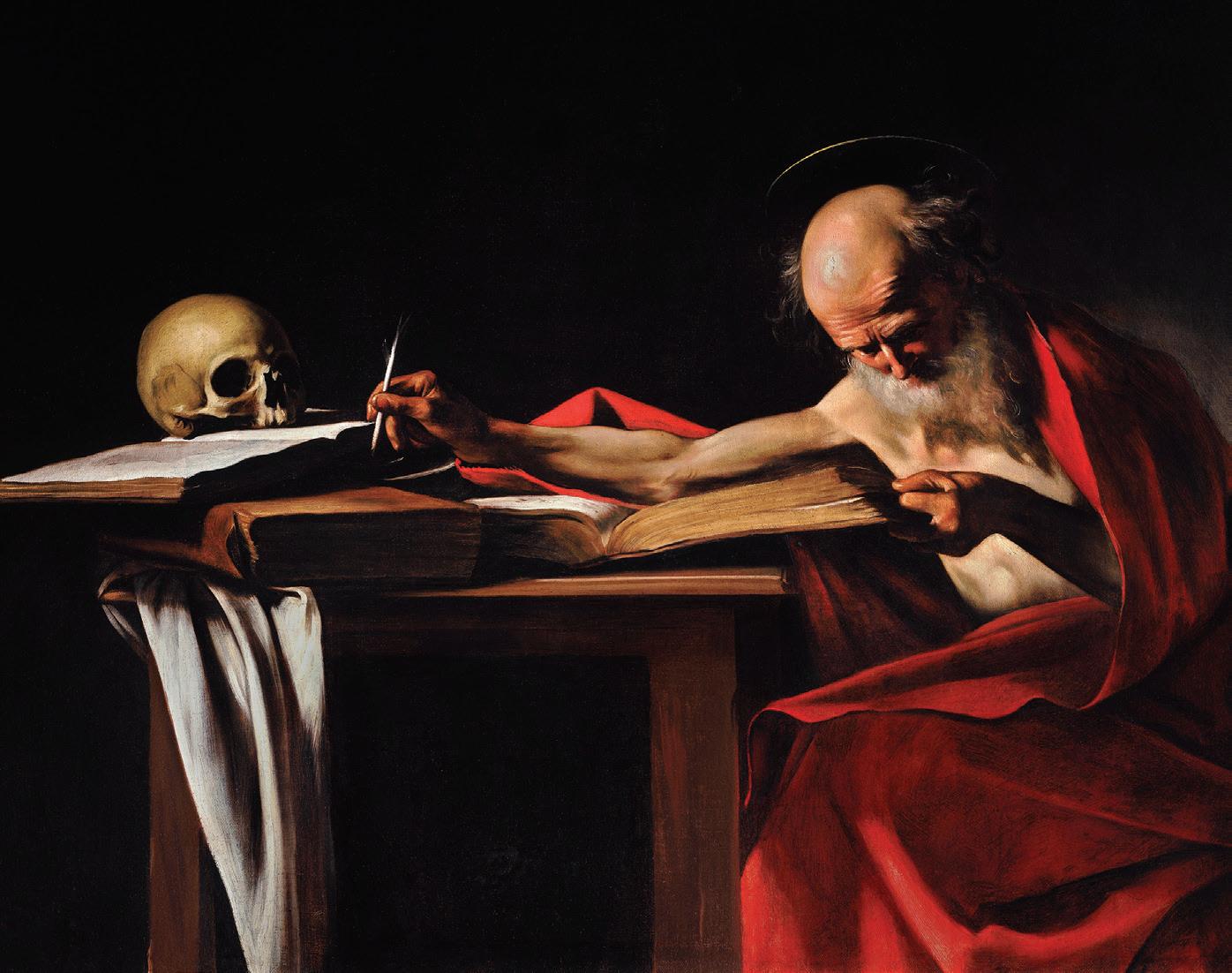
We begin our tour in Milan, where Caravaggio was born, and where some of his works – including The Supper at Emmaus – are held today, with a morning dedicated to exploring the Pinacoteca di Brera. In Rome, the young Michelangelo Merisi’s career flowered amid the Counter-Reformation search for new artistic styles worthy of representing the Church.
We will explore paintings hanging in several of the city’s churches – from The
Sant’Agostino. Meanwhile, the Palazzo Barberini is home to several works by Caravaggio, including his depictions of St John the Baptist and Judith Beheading Holofernes, as well as a self-portrait by Artemisia Gentileschi, one of the most successful female artists of the Baroque age and the subject of a recent exhibition at the National Gallery in London.

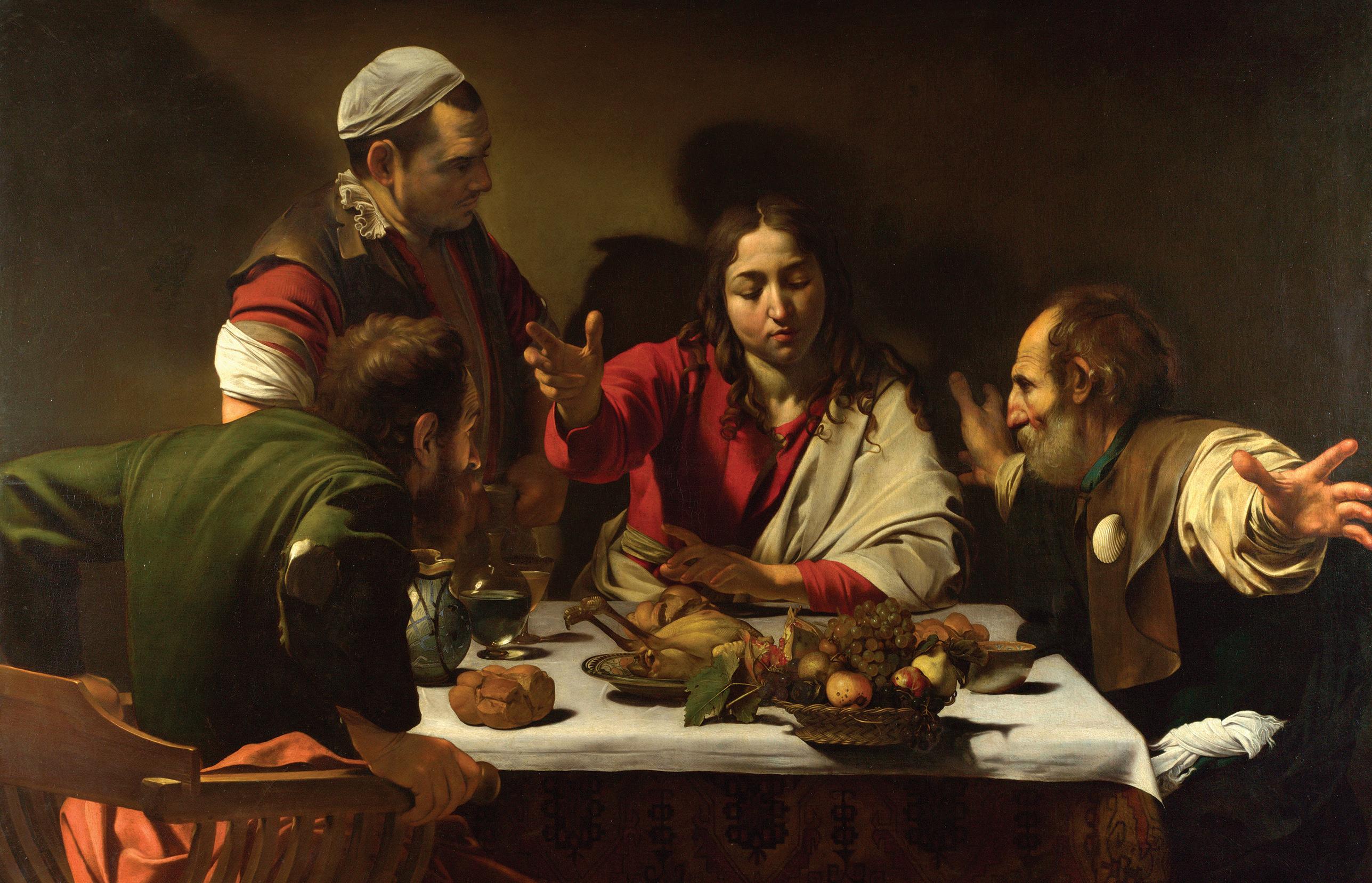
We will also visit the Galleria Doria Pamphilj, Galleria Corsini and Galleria Borghese. Highlights at the latter include Caravaggio’s Boy with the Basket of Fruit, David and Goliath and Sick Bacchus.
Following in the footsteps of Caravaggio’s 1606 flight from Rome, we will head to Naples, a major centre of Spanish power in the artist’s day, and where the powerful naturalism of his work took the city’s public by storm.
Whilst in Naples we will also consider the final years of Caravaggio’s life

This tour will be led by Marie-Anne Mancio, MPhil, DPhil, an art historian, writer, experienced tour leader and Arts Society accredited lecturer. Marie-Anne originally trained as an artist before gaining a DPhil at the University of Sussex in art and critical theory. She has written and presented courses for Tate and Dulwich Picture Gallery; writes reviews, catalogue essays and historical fiction; and is a frequent visitor to Italy.
when he began his return to Rome in anticipation of a papal pardon. During this time he carried out a number of mature works epitomising his signature use of chiaroscuro, including the haunting Martyrdom of St Ursula, today housed in the Gallerie d’Italia.
FITNESS / PRACTICALITIES: This tour involves a significant amount of walking within historical city centres. Participants should be prepared for traversing uneven or slippery ground, cobbles and steps (sometimes without handrails), as well as spending time standing in galleries and churches, which can be dimly lit, and where there are not always opportunities to sit down. Many sites do not have lifts available. Some of the streets are hilly and, in Naples especially, are narrow and busy with crowds and traffic, so care must be taken. The tour also features travel between the cities by rail, so a good level of fitness, mobility and stamina is required, and participants should be happy handling their own luggage when embarking and disembarking trains. Please consult ACE’s fitness criteria in our Booking Terms & Conditions.
While we will endeavour to deliver the below itinerary in full, it represents a guide to what we hope to offer, and some elements may be subject to change, confirmation or reordering nearer the time to fit local conditions. While every reasonable effort will be made to ensure the relevant paintings are available for us to view, we cannot guarantee their presence, as occasionally artworks are removed from display for loans, exhibitions or conservation purposes.
D ay 1 Flight from London to Milan. Continue to Hotel The Square Milano Duomo, Milan, for overnight stay. Welcome and introduction followed by visit to Pinacoteca Ambrosiana.
D ay 2 Visits in Milan: Pinacoteca di Brera and Duomo. Transfer by train to Rome for three nights at Hotel della Torre Argentina, with independent dinner en route.
D ay 3 Morning: San Luigi dei Francesi, Sant’Agostino, Piazza del Popolo. Afternoon: Palazzo Barberini and Galleria Doria Pamphilj.
D ay 4 Morning: Vatican Pinacoteca (subject to confirmation). Afternoon: Galleria Borghese and Palazzo dei Conservatori (Musei Capitolini). Free evening.
D ay 5 Morning: Galleria Corsini. Transfer by train to Naples for two nights at Grand Hotel Oriente. Afternoon: Sant’Anna dei Lombardi and Pio Monte della Misericordia.
D ay 6 Morning lecture followed by Gallerie d’Italia and some free time. Afternoon: Museo Cappella San Severo.
D ay 7 Morning: Museo di Capodimonte (visit subject to final flight times). Flight from Naples to London.
details, including the cost, will be confirmed later in 2024. To register your interest, please visit the ACE website or contact the office. TOUR CODE: CARA25
January 13–16, 2025
Enjoy a winter break in the charming historical town of Stratford-upon-Avon, embracing the season with a performance of Shakespeare’s Twelfth Night at the RSC
Delight in a new production of Hans Christian Andersen’s dark fairytale The Red Shoes by awardwinning playwright Nancy Harris
Delve into Shakespeare’s life and times with local visits in Stratford, expert lectures and guest talks
At the heart of our tour will be a performance of Shakespeare’s much-loved comedic “winter masterpiece”, Twelfth Night, or What You Will, directed by Prasanna Puwanarajah, who returns to the RSC having directed Thomas Otley’s Restoration thriller Venice Preserv’d at the Swan Theatre in 2019.
Offering a lively dose of midwinter cheer, Twelfth Night was written by Shakespeare around 1601-02 to provide a suitably entertaining close to the Christmas season, with the first documented public performance falling on Candlemas, 2 February 1602. The play’s story of shipwreck, love, mistaken identities and the inversion of the general order echoes the revelries and licensed disorder of the Twelfth Night festivities that were enjoyed by so many during Elizabethan times.
Our tour continues with an opportunity to experience the RSC’s new production
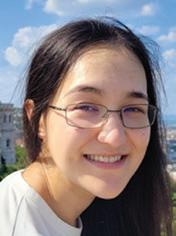
This tour will be led by Jessica Chiba , PhD, an Assistant Professor at the Shakespeare Institute, University of Birmingham. Jessica studied and taught at Royal Holloway, University of London, and taught at the University of Surrey, before taking up a Leverhulme Early Career Research Fellowship at the Shakespeare Institute.
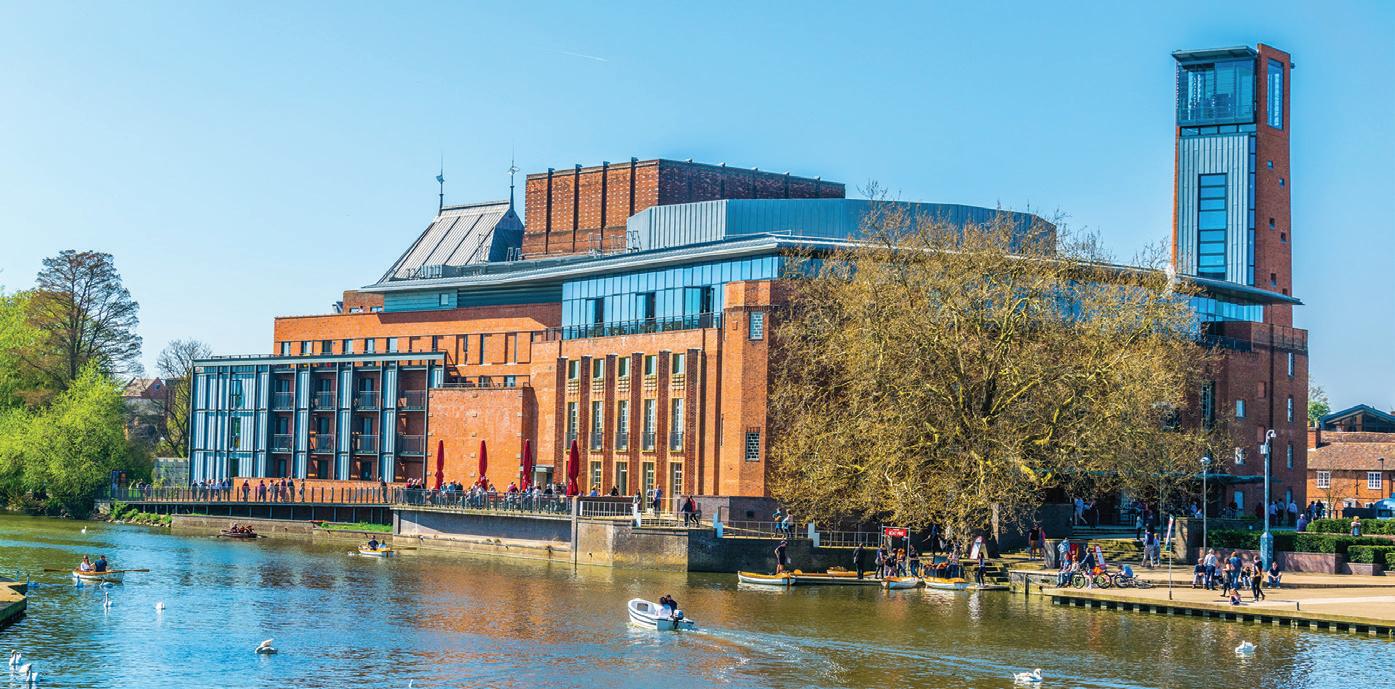
of Hans Christian Andersen’s fairytale The Red Shoes, its magical yet cautionary story brought into the 21st century to what promises to be an exhilarating effect by award-winning playwright Nancy Harris and director Kimberley Rampersad in her RSC debut. The performances will be complemented by lectures given by our Tour Director introducing each play, as well as postperformance discussions offering the opportunity to reflect on each production. We also look forward to two exclusive guest talks, to be confirmed nearer to departure.
We will make the most of our time in Stratford to delve into Shakespeare’s life and times, with a guided historical walking tour and visits to Shakespeare’s Birthplace and Schoolroom. We will also enjoy a morning excursion to Compton Verney, a Grade I listed Georgian manor house with a wide-ranging permanent collection of paintings.
Our base is the four-star boutique Hotel Indigo in the heart of Stratfordupon-Avon. Occupying a 1500s halftimbered building, Georgian townhouse and modern annexe, this stylish and comfortable property is located just a few minutes’ walk from the theatres.
The tour will begin with a special private dining experience in the 500-year old ‘Feasting Room’ at the hotel’s esteemed Woodsman restaurant. Our pre-theatre dinners will be taken at the RSC’s excellent Rooftop Restaurant, offering relaxed fine dining.
FITNESS / PRACTICALITIES: This tour requires a good level of fitness and mobility, and participants should meet ACE’s fitness criteria in our Booking Terms & Conditions. Although the distances covered are not long, the tour does involve some walking in Stratford, to and from the hotel, local visits and the theatres (some of which will be done in darkness). The ground can be cobbled and uneven underfoot. It is also necessary to traverse steps and stairs.
The itinerary represents a guide to what we hope to offer, and some elements, including the performance details, may be subject to change or confirmation nearer the time.
D ay 1 Tour assembles 1530 at the Hotel Indigo, Stratford-upon-Avon, for three nights. Welcome and introduction, followed by guest talk and private dining ‘feasting’ experience at Woodsman Restaurant.
D ay 2 Morning lecture introducing Twelfth Night and guided walking tour of Stratford (Holy Trinity Church, Shakespeare’s family grave). Afternoon: Shakespeare’s Birthplace. Evening performance at Royal Shakespeare Theatre: Shakespeare Twelfth Night
D ay 3 Morning excursion to Compton Verney. Afternoon: post-performance discussion about Twelfth Night followed by short lecture introducing The Red Shoes . Evening performance at Swan Theatre: Hans Christian Andersen The Red Shoes
D ay 4 Morning: post-performance discussion about The Red Shoes followed by guest talk and visit to Shakespeare’s Schoolroom. Tour disperses approx 1215.
Cost of £1475 includes: accommodation based on sharing a twin or double bedded room, performances as described, three breakfasts, three dinners with water & coffee, excursions & admissions, gratuities & all taxes.
Not included: travel insurance, double room for single use supplement £225. TOUR CODE: WRSC25
April 3–6, 2025
Explore the historic towns of Norwich, Bury St Edmunds and Thaxted and their role in advancing liberty, democracy and justice
Delve into the history of rebellion in East Anglia, including that led by Robert Kett against the enclosures of common land
Examine the ideas behind Magna Carta and Thomas Paine’s The Rights of Man
British heritage is conventionally seen in terms of castles, stately homes, cathedrals and magnificent churches. But there is another heritage, equally valued but less tangible: the heritage of freedom, rights and mutual respect. This tour looks at sites associated with rebels of the past, men and women who campaigned to extend the liberty of their fellow citizens.
Our study tour starts and ends in Bury St Edmunds, exploring the events that led to Magna Carta, drafted in the city in 1214, and the Peasants’ Revolt of 1381, many of whose leaders came from the towns and villages of Suffolk and Essex.
Thetford is the birthplace of the radical ideologue Thomas Paine, whose 18th century The Rights of Man argued for democracy and freedom of expression, as well as for free education, old age pensions and maternity benefits.
Two centuries earlier, Robert Kett led a rebellion of peasants against the Tudor government of King Edward VI. A peasant army protested against the enclosures which took away rights of pasture and access to common land, and we will examine several sites associated with this rebellion.
Norwich, described in the late 18th century as a “city of sedition”, had a dissenting tradition dating back to Lollardy in the late 14th century that challenged the established church, continued among radical weavers associated with the rise of nonconformity, and lingered on late into the 19th century.


Our Tour Director is David Burke, PhD, an historian of intelligence and international relations who has lectured at the University of Cambridge and Victoria University of Wellington, New Zealand and written a number of books.
Our tour continues at the Burston Strike School, whose teachers were forced out of the village school in 1914 by the local parson. The children boycotted the school and their teachers gave lessons on the village green, until a Strike School was built during the First World War.
Our glimpse of this alternative Britain ends with the unlikely figure of Daisy Greville, Countess of Warwick, who became a campaigning socialist, using her grand home, Easton Lodge, for Labour and trade union rallies. Although much of the Lodge has been pulled down, the gardens, originally designed by Harold Peto, are being imaginatively restored.
Our base will be the four-star Angel Hotel in Bury St Edmunds, a handsome Georgian building constructed upon a 12th century undercroft.
FITNESS / PRACTICALITIES: A good level of fitness and mobility is required for this tour, as it involves a moderate amount of time spent on foot, walking and standing during historical tours and visits, and accessing sites. The walking tour of Norwich covers approximately 3-4 miles. Some sites have uneven ground, cobbles, steps, ramps and dimly lit interiors, and handrails are not always available. Participants should meet ACE’s fitness criteria in our Booking Terms & Conditions.
The itinerary represents a guide to what we hope to offer; given the special nature of some visits, certain elements may be subject to change or confirmation nearer the time.
D ay 1 Tour assembles at the Angel Hotel, Bury St Edmunds, for 1400 welcome and introduction in the undercroft. Afternoon: ruins of Bury St Edmunds Abbey followed by St Edmundsbury Cathedral. Evening lecture: Thomas Paine to Burston Strike. Three nights at the Angel Hotel.
D ay 2 Excursion to Thetford: Ancient House Museum, Thomas Paine Hotel, private visit to Thetford Grammar School and walking tour. Continue to Kenninghall for St Mary’s Church: Poet’s Corner and graveyard, followed by Burston Strike School (subject to confirmation). Evening lecture: Kett’s Rebellion & Radical Norwich.
D ay 3 Morning excursion to Wymondham for Abbey and Becket’s Chapel (exterior) followed by Kett’s Oak. Continue to Norwich: Lollardy walking tour of the city with local historian Oliver Coulson, sites related to Kett’s Rebellion and Cathedral. Evening lecture: Conrad Noel, H G Wells & the Countess of Warwick
D ay 4 Morning: private visit to gardens of Easton Lodge followed by St Mary’s Church (memorial), Little Easton Manor Barn Theatre and Thaxted Church. Return to Bury St Edmunds where tour disperses approx 1630 at hotel, with drop-off en route at Audley End Station.
Due to the later finish on Day 4, if you would like to book an extra night at the hotel, at a supplement, please contact the ACE office.
Cost of £1295 includes: accommodation based on sharing a twin or double bedded room, three breakfasts, three lunches (two light, one Sunday roast), three dinners with water & coffee, excursions & admissions, gratuities & all taxes. Not included: travel insurance, double room for single use supplement £135. TOUR CODE: RMAN25
February 6–9, 2025
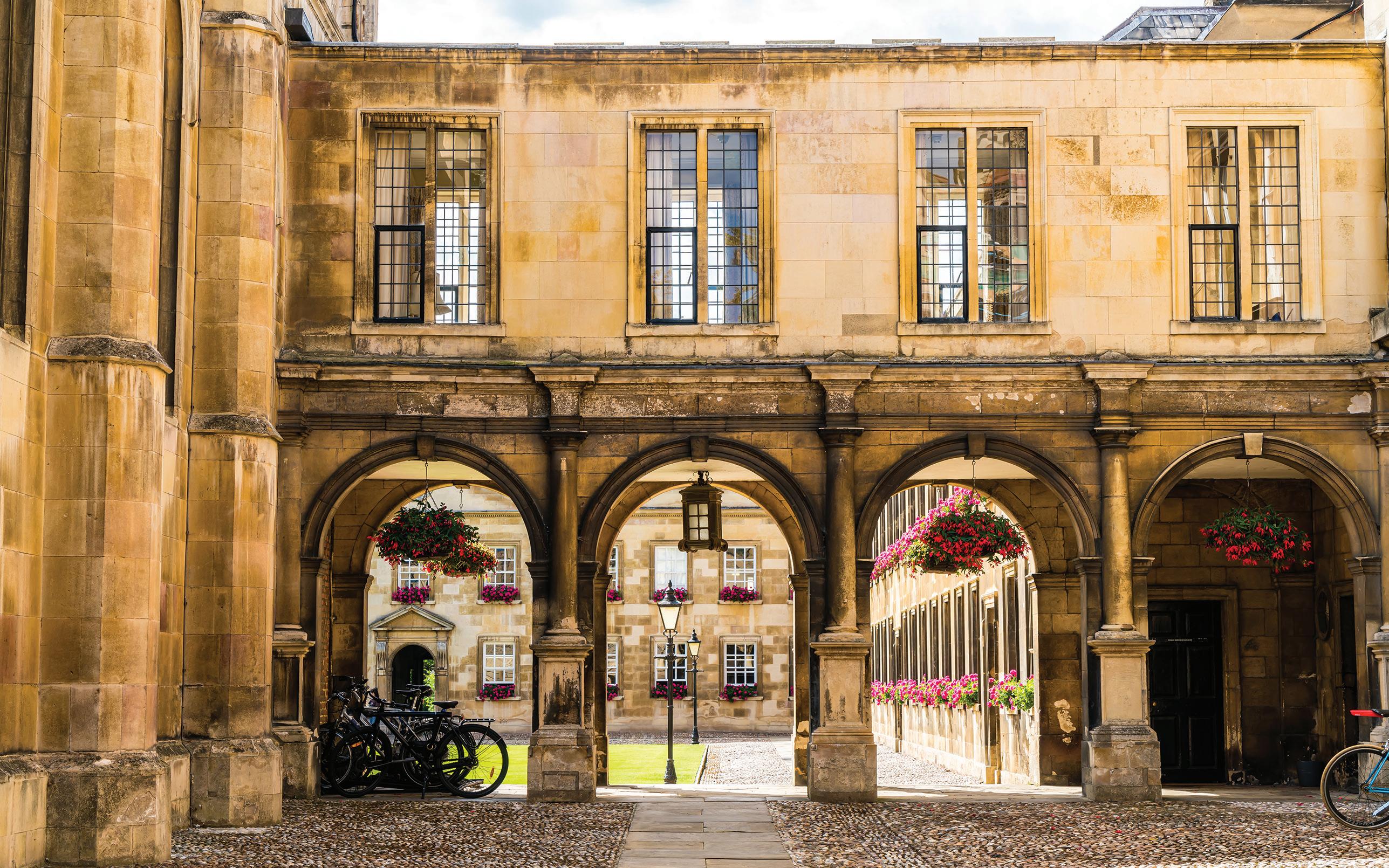
Experience the stunning surroundings of Cambridge’s famous chapels and recitals upon their organs, including the recently restored Snetzler organ at Peterhouse
Sample the university’s superlative choral tradition during Evensong and Choral Eucharist at King’s College Chapel
Take in the music collection of the Fitzwilliam Museum on a special curator-led visit
We particularly look forward to visiting Peterhouse, the oldest of Cambridge’s colleges (founded in 1284) whose chapel contains the largest surviving organ by John Snetzler, dating from 1765. The organ recently underwent an important restoration by two highly esteemed European organ builders, Flentrop Orgelbouw and Orgelbau Klais.
“Privileged to have been on this excellently crafted and well managed tour. Uplifting and delightful in every way, this was my first ACE tour and I look forward to joining many more”
– ACE customer on the 2024 Cambridge College Chapels & Organs tour
instruments in the Cambridge chapels”, it incorporates elements from the chapel’s original instrument, by the renowned ‘Father’ Bernard Smith.

A further highlight will be a visit to the chapel of Emmanuel College, designed by Sir Christopher Wren, where the organ constructed in 1988 by Kenneth Jones & Associates of Bray, Ireland, was the firm’s first organ in England. “Widely acknowledged as one of the finest There are few cities in the UK that boast a more impressive collection of organs than Cambridge, most of them situated within the diverse – and often mesmerising – architectural spaces of the university’s colleges. This tour offers a unique opportunity not only to step inside these timeless yet historically fascinating spaces, but also to hear their instruments sing, courtesy of our Tour Director, Nicholas Wearne, and guest musician John Bryden.
A church to both the parish and the University of Cambridge, Great St Mary’s contains two impressive pipe organs, one belonging to the church itself and one to the university. We will also pay a visit to neighbouring Gonville & Caius, where the chapel lays claim to being the oldest purpose-built college chapel in Cambridge still in use today.
Complementing our explorations of the colleges, a visit to the Fitzwilliam Museum will offer an opportunity not only to explore the museum’s important
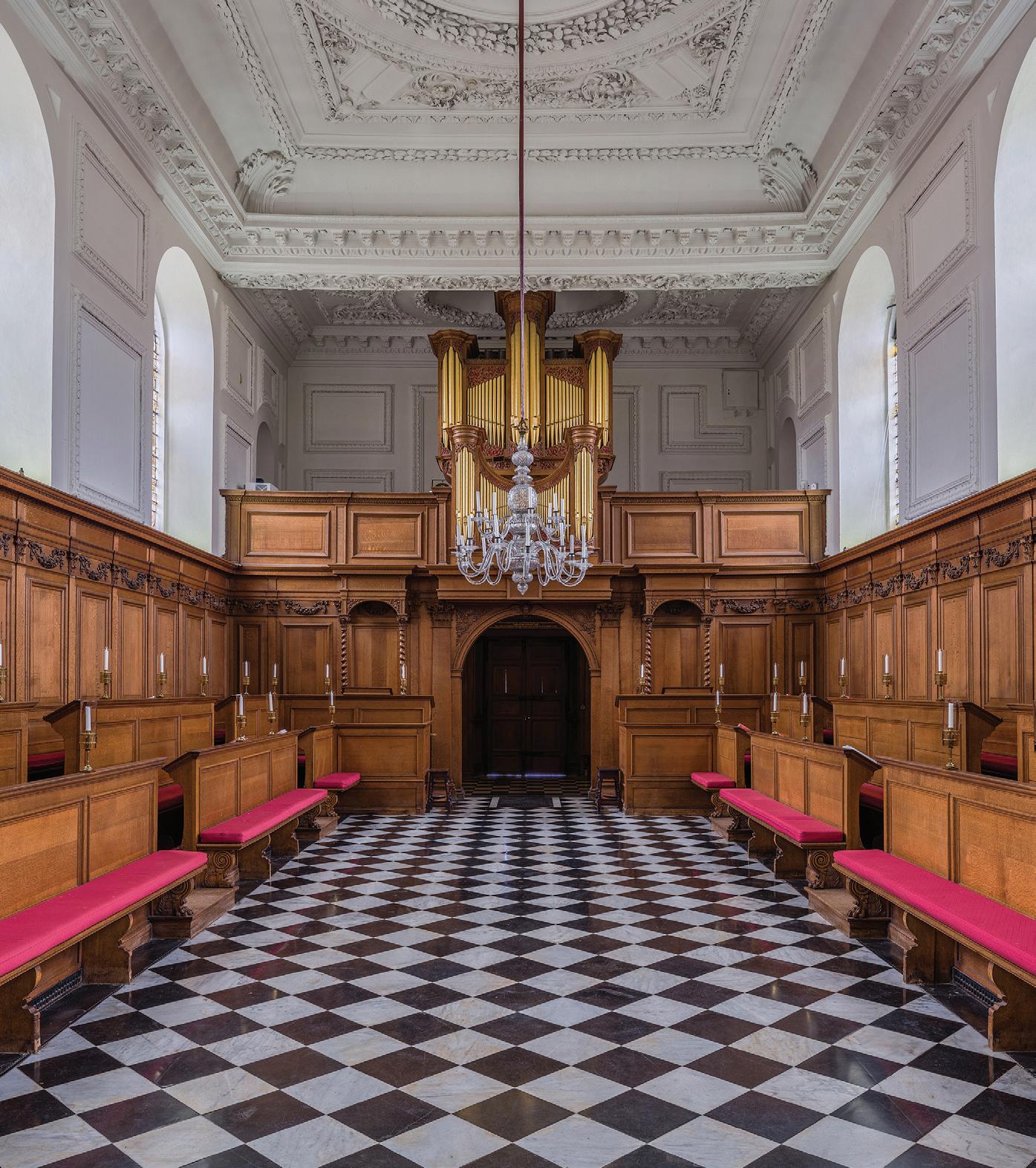
permanent collections, ranging from ancient artefacts to modern portraiture, but also to delve into the music collections in the company of a curator.
No visit to Cambridge would be complete without a chance to sample its world celebrated choral tradition, and we will attend Evensong at St John’s College Chapel and at King’s College Chapel, with its fine medieval stained glass, before returning to King’s later in the tour to experience Choral Eucharist.
This tour will be based at the four-star University Arms Hotel, a smart historical property with elegantly decorated interiors conveniently located in the
Cost of £1695 includes: accommodation based on sharing a classic twin or double bedded room, performances as described, three breakfasts, three dinners with water & coffee, excursions & admissions, gratuities & all taxes.
Not included: travel insurance, classic double room for single use supplement £295.
TOUR CODE: CCCO25
heart of the city. All rooms will be in the ‘classic’ category, featuring Edwardianinspired design including a writing desk and armchair.
FITNESS / PRACTICALITIES: This tour involves a significant amount of walking around central Cambridge, so a good level of fitness and mobility is required. The historical city centre is often busy with tourists and bicycles, and pavements are cobbled, narrow and uneven with occasional conduits, so care must be taken. Some walking is done in the evenings, so participants must feel comfortable with walking in the dark, although taxis can be taken independently if wished. Surfaces may be slippery if wet or icy. Please note that church and chapel interiors can also be dimly lit, and there are occasional steps to navigate. Participants should meet our minimum fitness requirements as outlined in our Booking Terms & Conditions.
Please note that the itinerary represents a guide to what we hope to offer, and some elements may be subject to change or may be reordered. As access to the colleges is subject to availability, we cannot confirm these visits until nearer the time.
D ay 1 Tour assembles 1400 at the University Arms Hotel, Cambridge, for three nights. Afternoon: Trinity Hall and St Catharine’s

This tour will be led by Nicholas Wearne , BA, MPhil, an experienced ACE Tour Director, lecturer and organist. A former ACE Bursary student, Nicholas’s career has taken him all over the world and he is a former winner of the Poul Ruders Prize at the Odense International Organ Competition. Nicholas has held a number of prestigious positions as organist, including at St Martin-inthe-Fields, Trafalgar Square, and he is currently a Senior Tutor at the Royal Birmingham Conservatoire.
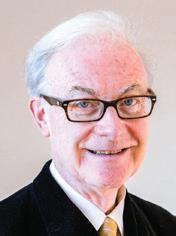
We are delighted that the group will also be joined on Days 1-3 by guest musician John Bryden , MA, ARCM, ARCO. John, who read Music at Emmanuel College, Cambridge as Greenwood Music Exhibitioner, is a member of the Dartington Piano Duo and has played across Britain and Europe as a soloist, accompanist and chamber musician.
Tour Director Nicholas Wearne writes: “Amongst many fascinating visits, one of the star attractions of the 2025 tour will be Peterhouse. Not only the oldest college, but the organ is the largest surviving example of the work of John Snetzler, given to the college in 1765. In order to honour this, while providing an instrument which can also support Anglican liturgy in the late Romantic style, a really unusual solution was found, which was inaugurated in 2024.”
College chapels for organ recitals. Welcome and introduction.
D ay 2 Morning: Peterhouse Chapel for organ recital followed by Fitzwilliam Museum (guided tour of Music Collection and free time to explore rest of museum). Afternoon: Emmanuel College Chapel for organ recital. Choral Evensong at King’s College Chapel.
D ay 3 Morning: Great St Mary’s Church and Gonville & Caius College Chapel for organ recitals. Afternoon: Selwyn College Chapel for organ recital. Choral Evensong at St John’s College Chapel.
D ay 4 Morning: Choral Eucharist at King’s College Chapel. Tour disperses approx 1145.
March 20–24, 2025
Discover the landscape, industry and character of the Fens during medieval times, from a base in historical Ely opposite its cathedral
Explore some of the artistic and architectural treasures of the region, from the angel roof at St Wendreda’s Church to the Octagon at Ely Cathedral, a masterpiece of medieval engineering
Learn about the role and growth of monasticism in the Fens, from its turbulent beginnings to the Reformation
The atmospheric and remote Fens and their borderlands were one of the principal cradles of English monasticism, largely due to hermitages of Anglo-Saxon saints. By the Middle Ages, the Fenlands were a prosperous region, with several arterial waterways, fertile farmland and plentiful fish and wildfowl. This tour charts the religious landscape of the Fens, through visits to key churches, cathedrals and abbeys.
Our itinerary focuses on the long, broad history of monasticism in the region, from early Saxon foundations, through Benedictine reform and architecture of the high Middle Ages, to late medieval challenges in the aftermath of the Black Death and subsequent spread of Lollardy. We will also see signs of the Dissolution and subsequent Puritan turn, embodied by Oliver Cromwell, whose former home in Ely stands opposite our hotel.
With origins dating back to 673AD, when the Anglo Saxon princess St Etheldreda founded the first monastery on site, Ely has been a cathedral priory since 1109. Following layers of rebuilding and restoration, this immense structure is now home to architectural marvels including the awe-inspiring 14th century Octagon Tower, topped by a remarkable wood-framed lantern and decorated with painted angels. We can trace subsequent historical events here too: the now light and airy Lady


Tour Director Oliver Coulson , MA, PhD, is an architectural historian with a special interest in medieval ecclesiastical and vernacular architecture. He studied at the Courtauld Institute, London and Brown University, USA. Oliver’s research focuses on the relationship between religious devotion and artistic representation in latemedieval England. His doctoral thesis explores the impact of the Lollard heresy on material culture in the 15th century. Oliver has lectured on medieval art and architecture at conferences in the UK, USA and Europe. A native of East Anglia, he is looking forward to sharing the region’s treasures with new and experienced visitors alike.
Chapel, for example, bears the scars of the Reformation. We will spend a whole day exploring the cathedral, including its former monastic buildings and the fascinating Stained Glass Museum, the only collection of its kind in the UK.
Our tour also includes a visit to Peterborough, which became a cathedral after the Dissolution and showcases wonderful Norman architecture behind an Early English Gothic façade. Alongside these larger sites, we will explore the remains of smaller monasteries: namely Crowland, founded on the site of St Guthlac’s hermitage, and Denny, founded as a cell of Ely but successively a house of the Knights Templar, Knights Hospitaller and Franciscan nuns.
St Wendreda’s Church in March, with its stunning double hammerbeam roof complete with 120 carved angels, will be a particular highlight; while a visit to Isleham Priory Church, once the property of a French mother house, offers an interesting opportunity to learn about adaptive reuse, the church having been converted to agricultural use in the 18th and 19th centuries.
We also look forward to an excursion to Wicken Fen, the National Trust’s oldest nature reserve and one of Europe’s most important wetlands, to learn about the original landscape of the Fens before drainage; the abundance of wildlife the
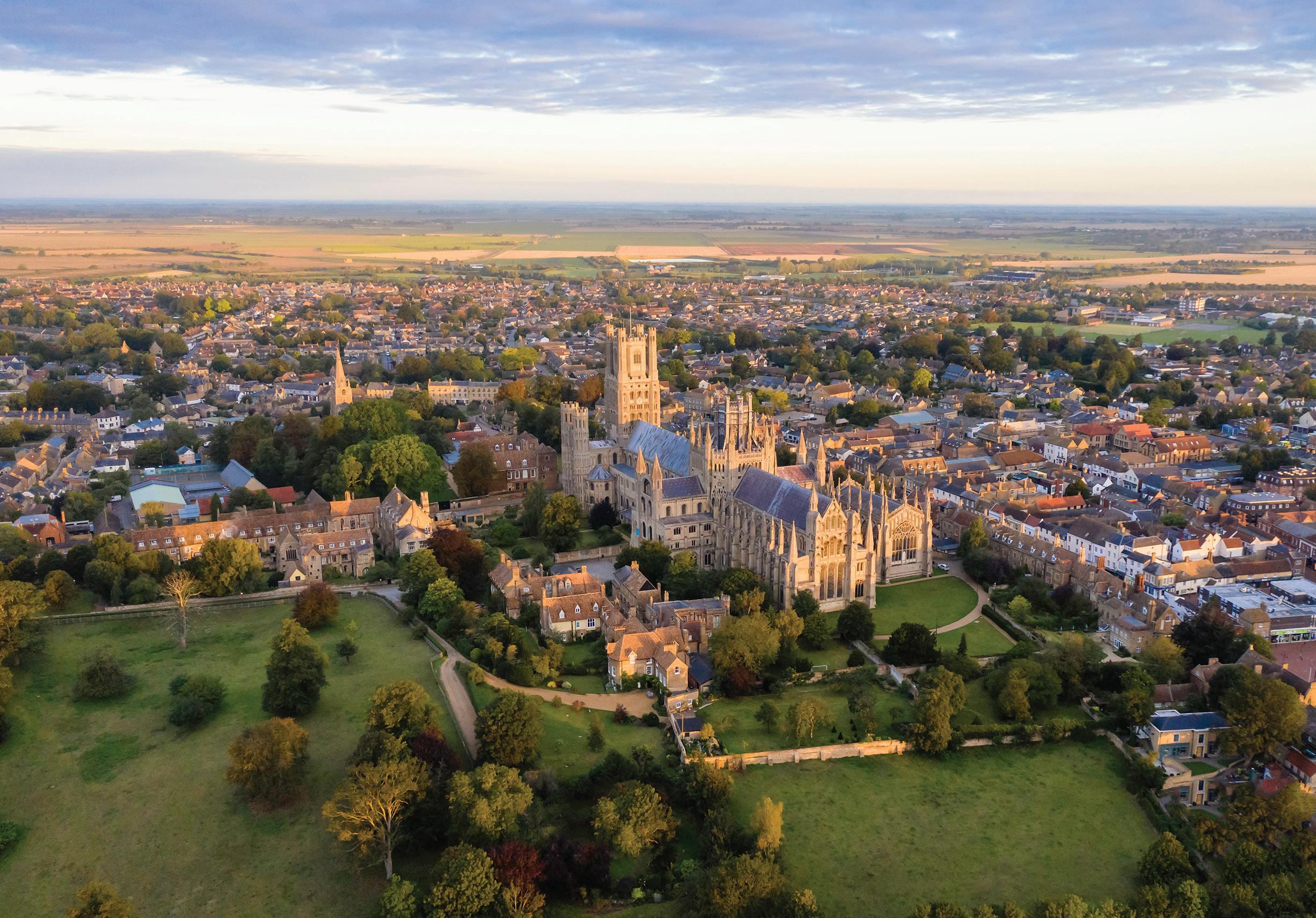
site supports; and the major conservation project, ‘Wicken Fen Vision’, currently underway to secure the future of the Fenland landscape.
Moving forward in time, our tour culminates in a morning talk exploring the life of Oliver Cromwell in Ely courtesy of expert Cambridge historian Dr David Smith, and a visit to Cromwell’s house in the city.
This tour will be based in the charming cathedral city of Ely, at the four-star Poets House Hotel & Restaurant, located in the heart of the historical city centre just a stone’s throw from the cathedral. Occupying elegant townhouses, the hotel offers comfortable, contemporary rooms and an excellent restaurant, where some of our dinners will be taken.
Cost of £1895 includes: accommodation based on sharing a twin or double bedded room, four breakfasts, three lunches, four dinners with water & coffee, excursions & admissions, gratuities & all taxes. Not included: travel insurance, double room for single use supplement £295. TOUR CODE: FABB25
FITNESS / PRACTICALITIES: This tour requires a good level of fitness and will involve some walking and standing; participants should therefore meet ACE’s usual fitness requirements as outlined in our Booking Terms & Conditions. It is necessary to traverse uneven ground and steps at some sites, and please note that church interiors can be dimly lit. The walking at Wicken

Fen is mainly along flat boardwalks, however there are not frequent opportunities to sit down and participants should be prepared for spending up to 1.5 hours on their feet. Some rooms on the top floor of the hotel are only accessible by stairs; please discuss with our Sales team upon booking if you require lift access or a ground floor room.
The itinerary represents a guide to what we hope to offer, and some elements may be subject to change or confirmation nearer the time.
D ay 1 Tour assembles from 1530 at the Poets House Hotel & Restaurant, Ely, for four nights’ stay. 1800 welcome and introductory lecture: Medieval Fenland
D ay 2 Visits in Ely: introduction to and guided tour of the cathedral including a visit to the Stained Glass Museum, walking tour exploring Ely’s monastic buildings, and lunch in the Almonry. Evening lecture: Angels in East Anglia
D ay 3 Morning: St Wendreda’s Church, March and Crowland Abbey. Afternoon: Peterborough Cathedral and Thorney Abbey.
D ay 4 Morning: Isleham Priory Church followed by Denny Abbey and the Farmland Museum. Afternoon: Wicken Fen. Evensong at Ely Cathedral.
D ay 5 Morning guest lecture with Dr David Smith (University of Cambridge Institute of Continuing Education): Cromwell in Ely, followed by visit to Oliver Cromwell’s House. Tour disperses approx 1200 at the museum.
April 8–13, 2025
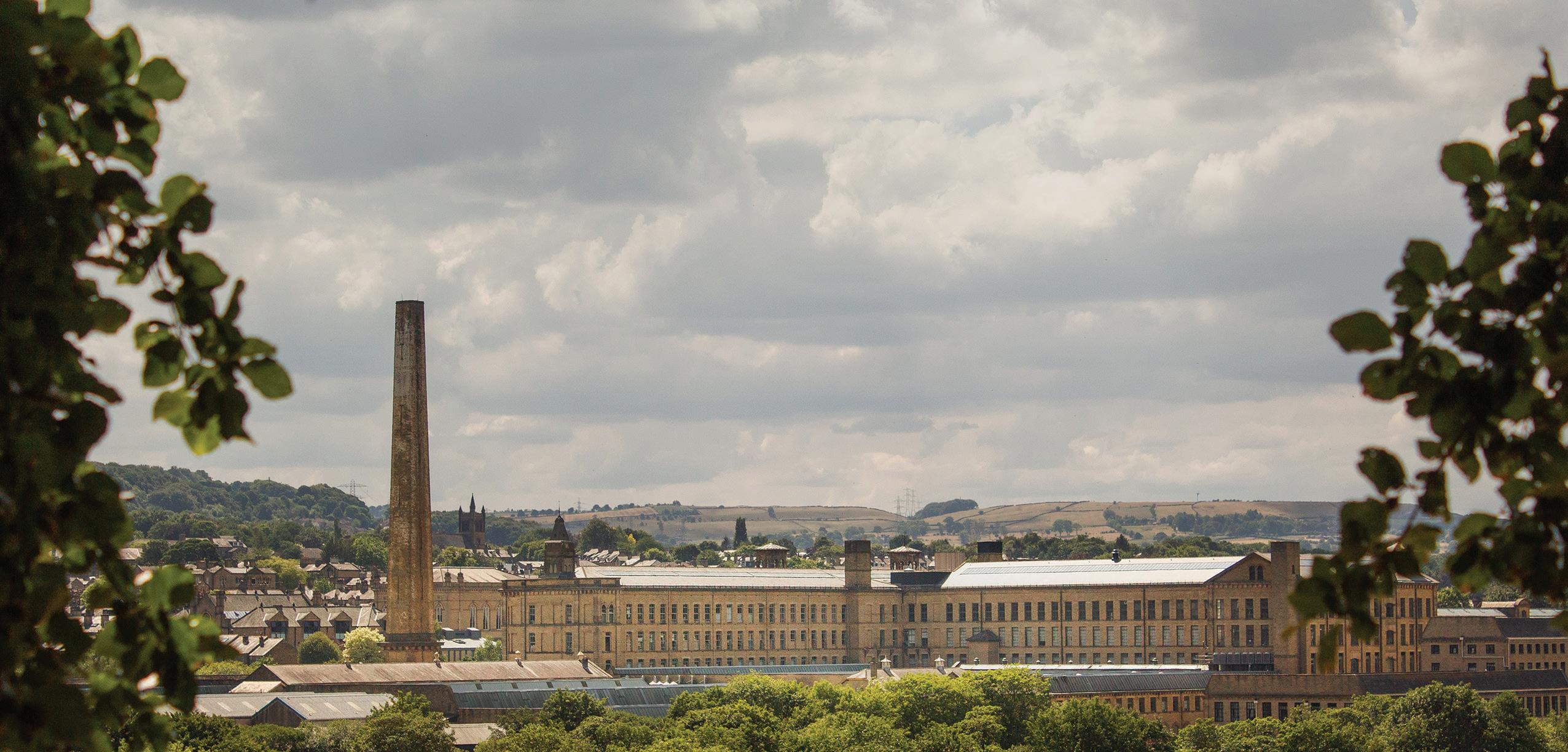
Discover the rich array of modern art and architecture to be found across Yorkshire, in the company of Alan Powers, one of the UK’s leading architectural historians and an expert in 20th century design
From a base in Leeds, explore the city’s diversity of modern art and architecture, from the Henry Moore Institute to the university campus
Enjoy excursions to historical York, to view 20th century ceramics, and Bradford, the UK’s City of Culture in 2025
The beautiful county of Yorkshire has a long and rich heritage dating back many centuries, but is also notable for being home to some fine examples of late 19th and 20th century art and architecture.
The city of Leeds, where our tour will be based, is well known for its vibrant cultural scene. We will explore the city’s art gallery and the Stanley & Audrey Burton Gallery, part of the University of Leeds. During these visits and a dedicated lecture from our Tour Director, our focus will be on the significance of the Leeds Art Club in the early 1900s and the patronage of Sir Michael Sadler,

This tour will be led by Alan Powers , PhD, one of the UK’s leading architectural historians and an expert in all aspects of 20th century architecture and design. Alan has lectured at New York University in London and was Professor at the University of Greenwich School. He has written extensively on modern art and architecture, and his publications include the books Modern: The Modern Movement in Britain and Bauhaus Goes West: Modern Art & Design in Britain & America.
art collector and Vice Chancellor of the university before and during the First World War, and a notable figure in the history of modern art in Britain.
We will also have the opportunity to view university buildings designed in the 1960s and 1970s as part of the campus expansion masterplan by Chamberlin, Powell and Bon, one of the most important modernist architectural firms in post-war England, whose other work includes the Barbican Estate in the City of London. Meanwhile, St Aidan’s Church contains a major mosaic made
during the First World War by Frank Brangwyn.
The Yorkshire landscape famously influenced the work of Henry Moore and Barbara Hepworth, and its geological forms have continued to inspire a contemporary generation of sculptors. A dedicated lecture will introduce Moore and Hepworth in relation to south Yorkshire, before visits to the Yorkshire Sculpture Park and Hepworth Wakefield illustrate those links. The former boasts a permanent collection that also includes works by David Nash, Anthony Gormley and Andy Goldsworthy amongst others.
A further highlight of our tour will be an excursion to Bradford, UK City of Culture in 2025, to take in some of its vibrant cultural heritage in this special year. The city’s suburbs contain a variety of little-known gems, including the Church of St Cuthbert and First Martyrs of Rome, designed in the 1930s by architect Jack Langtry-Langton and the first church to be built fully in-theround, as well as George Pace’s 1960s design for St Saviour’s Church.
A day spent in York will offer the opportunity to visit the city’s art gallery, with its collection of 20th century ceramics. We will also view the Genesis cycle on the exterior of York Minster’s
Speckle-glazed cup, water pot and sugar bowl from the W A Ismay Collection at York Art Gallery
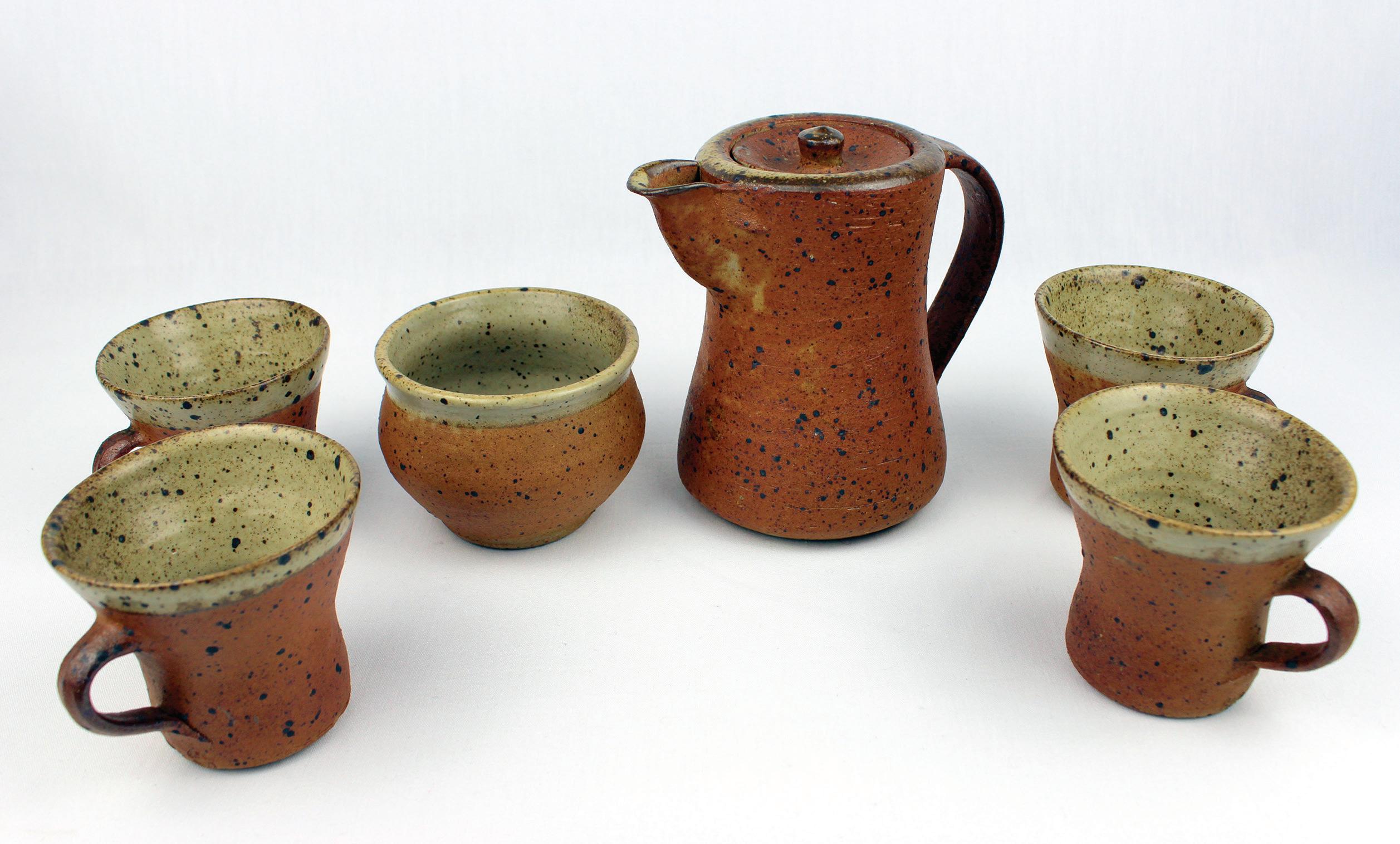
West Portal, modelled in the 1990s by the late Rory Young, a sculptor and building conservationist described by our Tour Director Alan Powers as “exemplify[ing] the ideals of the Arts & Crafts for our time”.
Our tour also includes a visit to Salt’s Mill, a converted mill in the model village of Saltaire, where the 1853 Gallery contains a collection of works by David Hockney amassed by his friend Jonathan Silver.
This tour will be based at the four-star Radisson Blu Hotel, conveniently located in Leeds city centre, directly opposite the Henry Moore Institute and Leeds Art Gallery.
FITNESS / PRACTICALITIES: A good level of fitness and stamina is required on this tour, which has a full itinerary to make the most of our time in Yorkshire and take in a breadth of sites. Some visits will involve extended periods of time spent standing and walking, for instance at Yorkshire Sculpture Park, where the ground can be uneven, grassy, hilly and occasionally muddy underfoot. Participants should feel comfortable navigating steps and occasional inclines. Please note some interiors may be dimly lit. We recommend consulting ACE’s fitness criteria as outlined in our Booking Terms & Conditions.
Please note that the itinerary represents a guide to what we hope to offer, and some elements may be subject to change or confirmation nearer the time, or time permitting on the day. We cannot guarantee the availability of all artworks mentioned.

D ay 1 Tour assembles 1345 at the Radisson Blu Hotel, Leeds. Afternoon visit to the University of Leeds: Stanley & Audrey Burton Gallery, Great Hall (sculptural frieze), buildings by Chamberlin, Powell & Bon (exteriors). Evening: welcome and introductory talk.
D ay 2 Morning lecture followed by excursion to Salt’s Mill, Saltaire (1853 Gallery – works by David Hockney). Afternoon in Leeds: Leeds Art Gallery and St Aidan’s Parish Church (WW1 mosaic).
D ay 3 Excursion to Bradford (UK City of Culture in 2025) for visits including 20th century churches (St Cuthbert & First Martyrs of Rome and St Saviour’s).
D ay 4 Morning lecture followed by visit to Yorkshire Sculpture Park. Afternoon: Hepworth Wakefield. Free evening.
D ay 5 Excursion to York for Theatre Royal (foyer), York Art Gallery, (20th century ceramics), York Minster West Portal (exterior with Genesis cycle modelled by Rory Young in the 1990s) and York University (exteriors).
D ay 6 Morning visit to the Henry Moore Institute. Tour disperses approx 1130 at the hotel.
Cost of £1695 includes: accommodation based on sharing a standard twin or double bedded room, five breakfasts, four dinners with water & coffee, excursions & admissions, gratuities & all taxes. Not included: travel insurance, standard double room for single use supplement £295.
TOUR CODE: YORK25
May 6–10, 2025
Discover the Great Bardfield artists and the environments in which they lived and worked
Enjoy a special visit to the Fry Art Gallery in Saffron Walden, home of the North West Essex Collection of Great Bardfield works
Gain an in-depth understanding of mid-century art and design during visits across East Anglia
From 1930 to the early 1970s, the Essex village of Great Bardfield was home to a number of artists whose output has received growing recognition in recent years – most notably Eric Ravilious and Edward Bawden. Their work spanned painting, illustration and design.
This tour adopts Cambridge as a base for exploring the sites, collections and private houses associated with the Great Bardfield artists, their contacts, and the parallel movements of their time.
Saffron Walden’s Fry Art Gallery has done more than any other institution to showcase this network of artists. We will also enjoy a walking tour of Great Bardfield in the company of artist Chloë Cheese, who grew up in the village and remembers visiting the studios of Bawden and printmaker Michael Rothenstein.
Our tour continues in Silver End, the garden village built between the wars, partly in a Modern style, by the Crittal family who were supporters of the Great Bardfield movement. We will also take in the principal collection of Bawden’s graphic work at The Higgins Bedford.
Further highlights will include The Manor in the delightful village of Hemingford Grey, former home of Lucy Boston and the inspiration for her Green Knowe stories, and the Prints and Drawings Room at the Fitzwilliam Museum, to see archival items by the likes of Cotman, Towne, Palmer and Lear as well as pieces by Bawden, Ravilious and others whom they inspired.
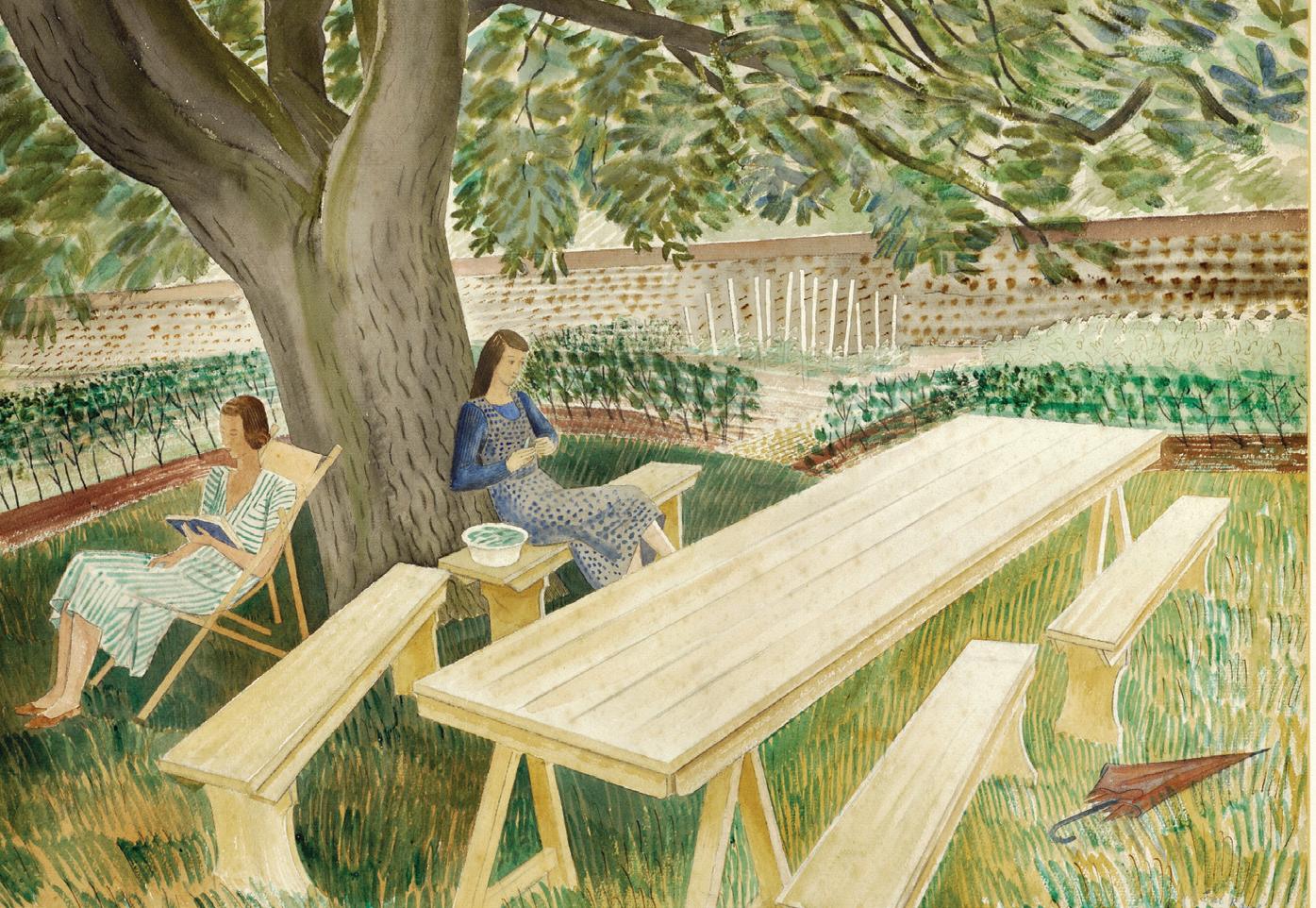

This tour will be led by Alan Powers , PhD. Alan studied at the University of Cambridge and is one of the UK’s leading architectural historians. A former Chairman of the 20th Century Society, he has published widely on all aspects of 20th century architecture and design. His publications include Modern: The Modern Movement in Britain and Bauhaus Goes West.
Our base is the elegant four-star University Arms Hotel, conveniently located in the heart of Cambridge.
FITNESS / PRACTICALITIES: This tour will involve a moderate amount of walking around Cambridge, Great Bardfield and Silver End, including over uneven, cobbled and potentially slippery ground. Cambridge can be busy with bicycles, so care must be taken. Participants should be prepared for navigating steep, hidden or uneven steps and stairs. At The Manor in Hemingford Grey, the top staircase does not have a bannister, but participants can opt out of this part of the visit if wished. Our tour has a full itinerary and some longer days to take in a wealth of visits, with coach journeys of up to 1.5 hours (without stops). A good level of fitness, mobility and stamina is required, and participants should meet ACE’s fitness criteria in our Booking Terms & Conditions.
The itinerary represents a guide to what we hope to offer, and some elements may be subject to change. Due to the special nature of the visits, some details may be confirmed nearer the time.
D ay 1 Tour assembles 1400 at the University Arms Hotel, Cambridge, for four nights. Afternoon: Prints & Drawings Room, Fitzwilliam Museum. Welcome and introductory talk.
D ay 2 Morning: Fry Art Gallery, Saffron Walden. Afternoon: walking tour of Great Bardfield.
D ay 3 Morning excursion to Silver End Village for walking tour and Heritage Centre. Continue to Braintree for guest lecture from Mary Schoeser (textile expert) at Howard Hall Masonic Centre and visits to Braintree Museum and Town Hall. Free evening in Cambridge.
D ay 4 Morning: The Higgins Art Gallery & Museum, Bedford. Afternoon: The Manor, Hemingford Grey and Impington Village College (exterior).
D ay 5 Morning archival session at Centre for Children’s Book Studies, Anglia Ruskin University. Tour disperses approx 1130.
Cost of £1995 includes: accommodation based on sharing a classic twin or double bedded room, four breakfasts, one lunch, three dinners with water & coffee, excursions & admissions, gratuities & all taxes.
Not included: travel insurance, cosy double room for single use supplement £395. TOUR CODE: GRBB25
May 13–20, 2025
Explore the botanical and ornithological highlights of the tranquil Isles of Scilly in the company of expert ecologists
Visit the famous sub-tropical gardens of Tresco, home to a rich diversity of exotic plants
Take in archaeological sites, wetland birdlife and maritimeinfluenced vegetation
Scilly embraces five inhabited islands and dozens of rocky outcrops, rich in sea birds.
The archipelago’s location and singular maritime microclimate endow this Atlantic haven with great botanical and ornithological interest; with over 350 days of the year warm enough for plant growth, flora from the Canaries, South Africa, South America, Australia and New Zealand flourish across the islands, and a unique list of migratory birds finds a feeding refuge on the last outpost of south western Britain.
We will take in the islands’ late spring highlights, with a particular focus upon their flora. On coastal paths and nature trails, we will discover the exotic vegetation that makes these islands the subject of such great botanical interest.
A particular highlight will be Bryher, the smallest community on the Isles of Scilly: the west and north coasts are wild and rugged with superb coastal vegetation and wind-pruned ‘waves’ of heather; the east, sheltered and mild, flourishes with exotic vegetation.
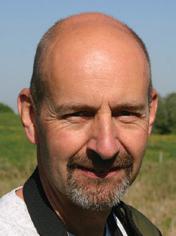

This tour will be led by Peter Exley, BSc, an ecologist and ornithologist who works for the RSPB, and Diana Ward , MSc, CBiol, MCIEEM, an ecologist and wildlife specialist who has worked on Sites of Special Scientific Interest.
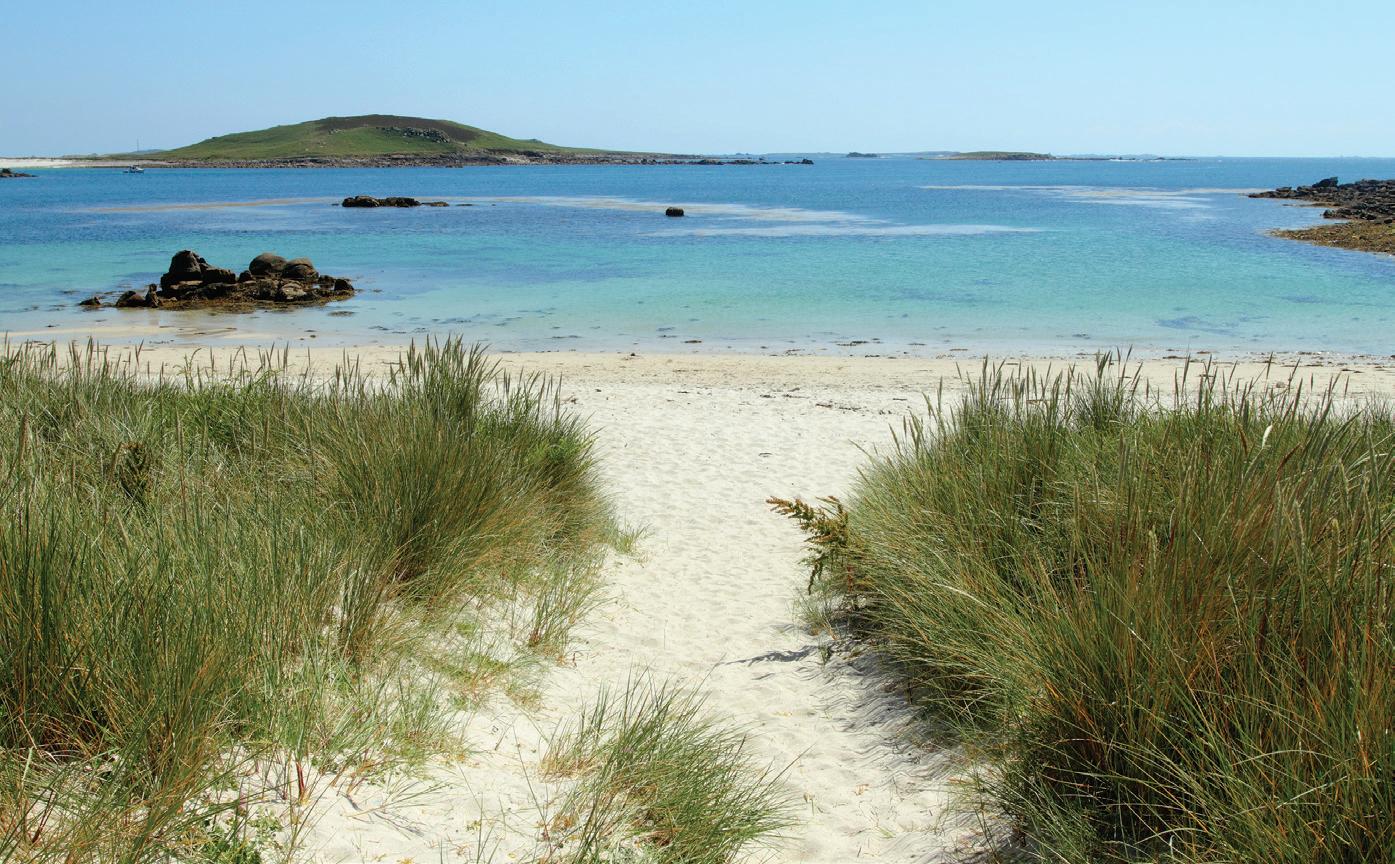
We will stay at the comfortable, welcoming St Mary’s Hall Hotel on St Mary’s.
FITNESS / PRACTICALITIES: A very good level of overall fitness is required for this tour. Participants must be able to walk for a minimum of 4 miles over rough ground, and be comfortable getting in and out of small boats. Most walking is on level or slightly hilly terrain, with occasional steep stretches. The majority of walks – which will be taken at a reasonable pace – will be on tracks, which may include rocky areas/stretches interspersed with rocks, or sections interrupted by tree roots, rather than roads or paths. The weather and climate can be unpredictable at times, so participants will need to bring appropriate clothing (detailed guidance will be issued ahead of departure). Boat trips can be choppy; they are typically 20-30 minutes in duration but can be up to 2 hours long. Please consult our fitness requirements in our Booking Terms & Conditions for more information, and we strongly advise you to discuss the conditions on this tour with our Sales team ahead of booking.
The itinerary represents a guide to what we hope to offer, and some elements may be subject to change or confirmation nearer the time. Our itinerary will be flexible to allow for tides, weather conditions and local reports of bird arrivals.
D ay 1 Check in for seven nights at St Mary’s Hall Hotel. 1715 welcome and introduction.
D ay 2 By ferry across St Mary’s Sound to St Agnes and Gugh.
D ay 3 By charter boat to Eastern Isles with visit (sea conditions dependent) to island of St Helen’s: remains of St Elid’s hermitage, Pest House.
D ay 4 By charter boat to Western Rocks and Samson – sea and weather conditions permitting.
Please note that travel to and from St Mary’s is not included in the cost of the tour. There are several options for travelling to the Isles of Scilly, including a daily ferry service (running in all but the worst weather), regular flights from three local airports and a helicopter service from Penzance (more weather resilient than planes). A new ‘Scilly Express’ ferry service is also due to launch from the summer of 2024. For more information, please speak to a member of our Sales team.
D ay 5 By ferry to Bryher: superb coastal vegetation and heather moorland on Shipman Head Down, prehistoric entrance graves and promontory fort.
D ay 6 St Mary’s: walk to Bant’s Carn, Halangy Down, Holy Vale, Higher Moors and Porth Hellick Down. Return along coastal path over Salakee Down to Old Town and church.
D ay 7 Morning: excursion by ferry to Tresco Abbey Garden. Afternoon free in St Mary’s or optional walk on Castle Down, Tresco.
D ay 8 Tour disperses after breakfast at the hotel.
Cost of £2995 includes: accommodation based on sharing a Godolphin twin or double bedded room, seven breakfasts, seven dinners with water & coffee, excursions & admissions, gratuities & all taxes.
Not included: return travel, travel insurance, Godolphin double room for single use supplement £525.
TOUR CODE: ISCY25
May 2025
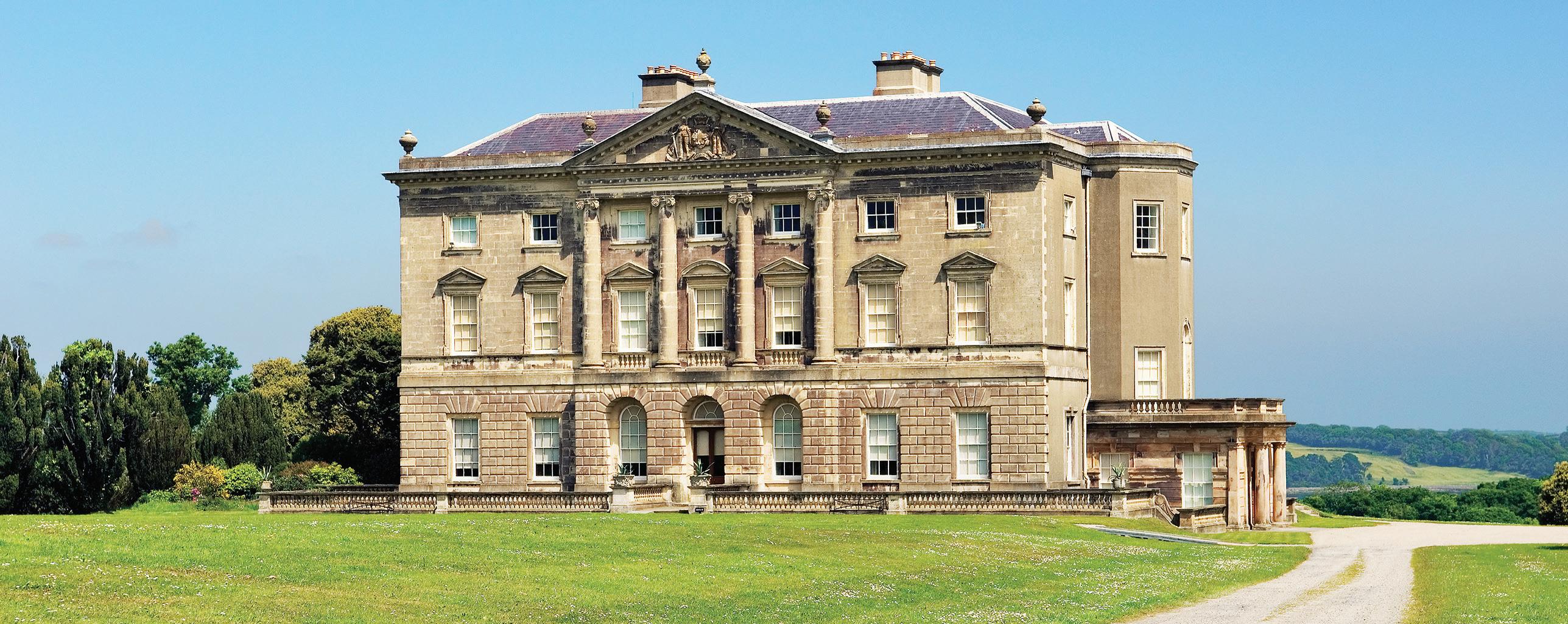
Explore some of Northern Ireland’s most magnificent stately homes
Enjoy privileged visits to private homes not often open to the public, including Baronscourt and Ballywalter
Discover world-class gardens, including the 20th century designs at Mount Stewart
This tour explores a handpicked selection of the great estates, houses and gardens to be found in Northern Ireland, with a special focus on those in private ownership.
From a base in Belfast, our tour begins with an excursion to Grey Abbey House, overlooking Strangford Lough. In the ownership of the Montgomery family for over 400 years, it features exquisite 18th century plasterwork and delightful Gothic windows.
Mount Stewart is a neoclassical house perhaps most celebrated for its outstanding gardens created by Edith, Lady Londonderry in the early 20th century. Meanwhile, Seaforde, home to the Forde family for almost 400 years, possesses Ireland’s oldest living maze as well as an arboretum containing champion trees and rare species of plant.
A surprising architectural contrast can be seen at Castle Ward: rebuilt in the 1760s, one wing showcases the classical
Palladian style favoured by its owner, the 1st Viscount Bangor, and another the contrasting Georgian Gothic, which was preferred by his wife, Lady Anne Bligh.
Moving westwards into County Tyrone, we will visit the Baronscourt Estate, surrounded by a spectacular landscape, while in County Fermanagh, we will visit Killyreagh House, dating from 1830; Castle Coole, one of Ireland’s most notable neoclassical country houses; and Crom Castle, on the shores of Lough Erne.
Our tour concludes with a visit to the delightful Victorian Italianate palazzo at Ballywalter Park on the shores of the Irish Sea.
The beginning and end of our tour will be based at the stylish Titanic Hotel Belfast. The tour also features an overnight stay at the comfortable four-star Killyhevlin Lakeside Hotel, overlooking picturesque Lough Erne.
FITNESS / PRACTICALITIES: Participants should meet ACE’s usual fitness criteria, as outlined in our Booking Terms & Conditions, and be prepared for a significant amount of walking and standing. Some walking will be outdoors over uneven and potentially slippery ground, as well as loose gravel paths, in gardens. Due to the historical nature of the sites, light levels may be kept low to help conserve collections, and lifts are not always available so it will sometimes be necessary to navigate steps and stairs, which can be steep or without handrails. To access Seaforde Gardens requires walking uphill for approximately half a mile followed by a further half a mile to visit the pleasure grounds.
“A varied and interesting programme… I wouldn’t hesitate to book with ACE again”
“Everything had been well thought out and hence all ran so smoothly & most enjoyably”
– ACE customer on a previous Houses & Gardens of Northern Ireland tour
The itinerary represents a guide to what we hope to offer. Owing to the special nature of the visits, some elements may be subject to change or confirmation nearer the time.
D ay 1 Flight from London to Belfast. Transfer to Titanic Hotel for three nights. Afternoon: Titanic Belfast. Evening introductory lecture.
D ay 2 Excursion to Mount Stewart and Grey Abbey House (subject to confirmation). Free evening in Belfast.
D ay 3 Morning: Castle Ward. Afternoon: Seaforde Gardens.
D ay 4 Morning: Baronscourt. Afternoon: Castle Coole. Overnight at Killyhevlin Lakeside Hotel, Enniskillen.
D ay 5 Killyreagh House and Crom Castle. Transfer to Belfast for overnight at Titanic Hotel.
D ay 6 Morning: Ballywalter Park. Flight from Belfast to London.
Full details, including the cost and Tour Director, will be confirmed later in 2024. To register your interest, please visit the ACE website or contact the office.
TOUR CODE: HGNI25
June 17–24, 2025
Islay, the ‘Queen of the Hebrides’, will be our base as we study the area’s flora, fauna, geology and culture
Look out for a diversity of birdlife, from moorland birds of prey to rare waders and seabirds
Absorb the islands’ Celtic past, evoked by ancient crosses, inscribed stones and medieval strongholds, and its more recent human history
Islay is famous for its birdlife, especially the rare chough, twite and corncrake. The moorlands hold birds of prey such as the golden eagle, hen harrier, merlin and peregrine. Lochs are the haunts of the white-tailed eagle, red-throated diver, gannet, eider and shag, while the ferry crossings can provide sightings of guillemots, razorbills, Manx shearwaters and a chance of seeing whales or dolphins.
The vegetation is also varied, with coastal machair grasslands, woodland on the limestone, and peat bog – so important for malt whisky – on the less fertile areas. One of the island’s finest independent whisky distilleries, Kilchoman, will welcome us for a visit and tasting.
Jura is one of the wildest of the Hebridean islands: dramatic seascapes give way to a mosaic of varied habitats, inhabited by elusive red deer and soaring eagles.
We also hope to visit Colonsay – home to beautiful flowers and wildlife, and Colonsay House and Gardens – subject to final ferry schedules.
Wild & Ancient
This tour is part of ACE’s ‘Wild & Ancient’ series, unique products designed to showcase the many interwoven aspects of the landscapes we visit. These tours usually focus on natural history, interpreting the landscapes, their ecology and their conservation, whilst also shedding light on an array of fascinating historical sites.
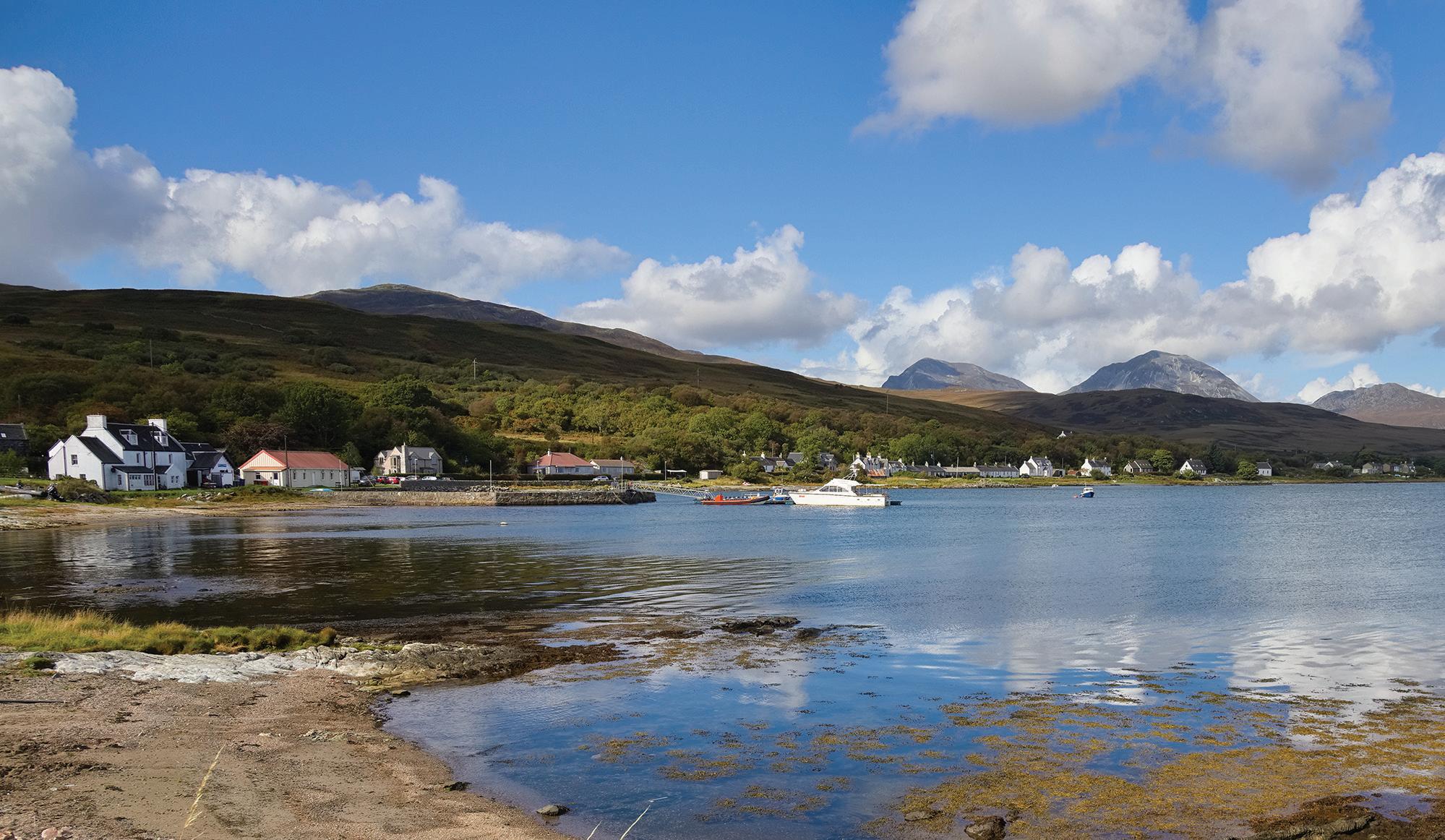

This tour will be led by Mark Welch , PhD. Mark was a research scientist in the Department of Earth Sciences at the Natural History Museum in London for over 25 years.
We will stay at the well-positioned, threestar No 1 Charlotte Street in the small coastal town of Port Ellen.
FITNESS / PRACTICALITIES: The group size will be restricted to 14. Participants should have a very good level of fitness, mobility and stamina, and be comfortable walking for several miles over often rugged and uneven terrain. The walks will not in general be longer than a few miles, and will include stops, however the ground is sometimes challenging. Please consult our fitness requirements in our Booking Terms and Conditions. The tour involves boarding ferries as foot passengers on several occasions, so participants should feel comfortable handling their luggage. Please note that there is no lift at the hotel and bedrooms are located on the first and second floors.
The itinerary represents a guide to what we hope to offer; some elements may be subject to change or confirmation nearer the time. The itinerary may also be adjusted and reordered further on the ground, to allow for last-minute changes to ferry schedules, weather conditions, tides and local reports of wildlife sightings.
D ay 1 Tour assembles 1100 at Glasgow Central Station followed by approx 1130 at Glasgow Airport. Continue by coach and ferry via Loch Lomond, Inveraray and Kennacraig to Port Ellen, Islay, for seven nights at No 1 Charlotte Street. Welcome and introduction.
D ay 2 Whole day excursion to Colonsay: flowers, wildlife, ‘Pigs’ Paradise’. This visit is subject to ferry schedules, which can vary each year. If unable to visit Colonsay we will instead visit famous geological sites, including the Port Askaig Tillite.
D ay 3 Morning: Port Charlotte (Museum of Islay Life) and Nerabus. Afternoon: Portnahaven, corncrakes, seals, Claddach (Wave Power site, exposed cliff vegetation), Frenchman’s Rocks and Tormisdale. Free evening.
D ay 4 RAMSAR wetland at Duich Moss, Kildalton Cross and Chapel, Bowmore (Round Church and Islay Natural History Trust Centre).
D ay 5 Whole day excursion to Jura: coach tour with stops for birdwatching, botanising and historical sites (Camas standing stone, Craighouse).
D ay 6 Morning: Loch Gruinart RSPB Reserve and Ardnave Loch. Afternoon: Machir Bay, Kilchoman Church, Loch Gorm and Kilchoman Distillery. Free evening.
D ay 7 Mull of Oa moorland, clifftop walk to American WWI Monument.
D ay 8 Transfer to Glasgow where tour disperses approx 1300 at Glasgow Airport and approx 1330 at Glasgow Central Station.
Cost of £3295 includes: accommodation based on sharing a twin or double bedded room, seven breakfasts (one packed on day 8), two packed lunches (three if remaining on Islay on day 2), five dinners with water & coffee, excursions & admissions, gratuities & all taxes. Not included: travel insurance, small double room for single use supplement £425, double room for single use supplement £595. TOUR CODE: ISLA25
June 2–6, 2025 | September 15–19, 2025
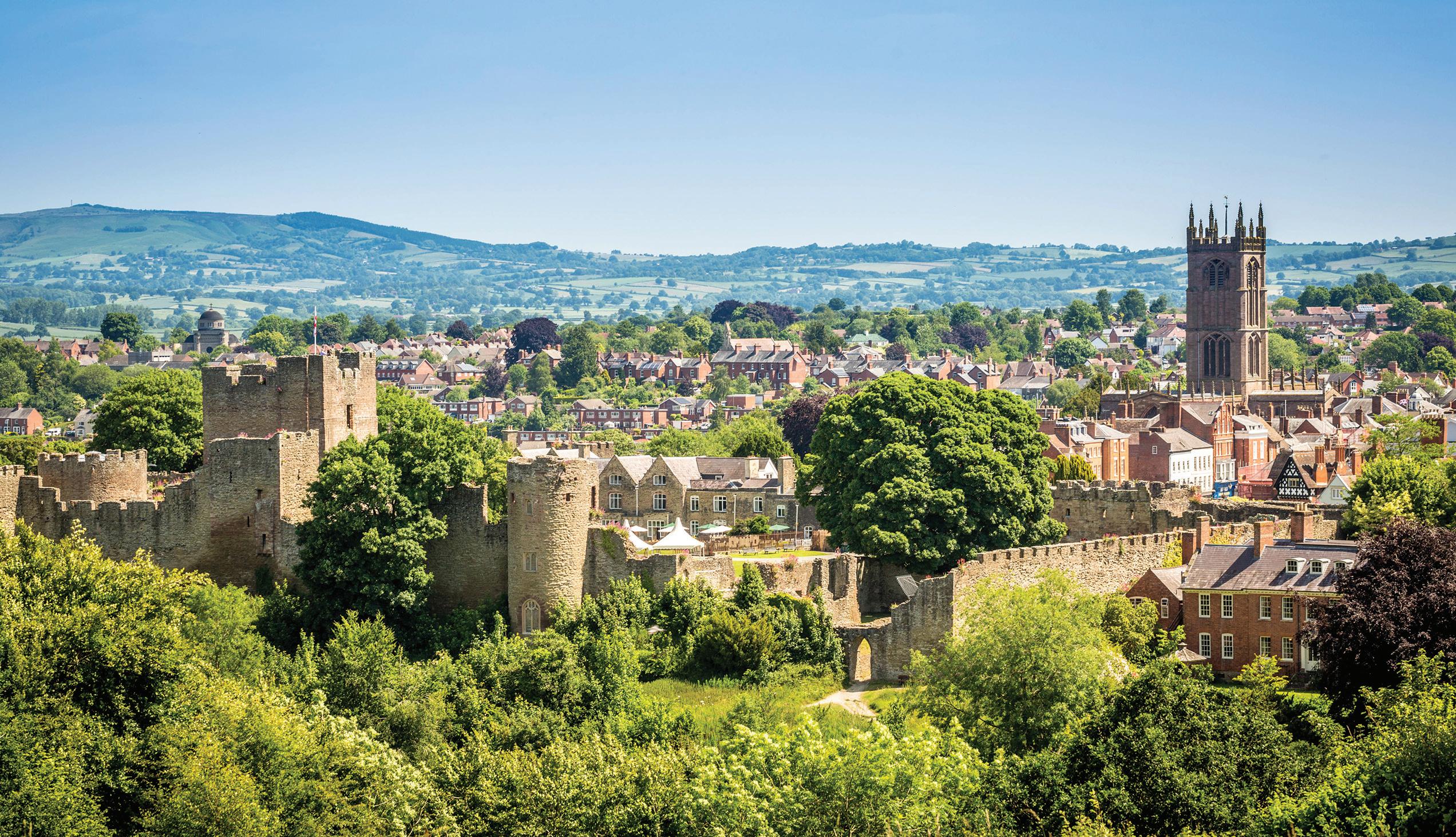
From a base in historical Ludlow, explore some of the finest churches of Herefordshire and Shropshire in the company of expert medievalist Imogen Corrigan
View examples of the work of the famous Herefordshire School of Architecture, including the celebrated 12th century fonts at St Mary Magdalene in Eardisley and St Michael & All Angels in Castle Frome
Visit the unique Church of St John the Evangelist in Shobdon, a rare example of a church interior designed in the Rococo Gothic style
ACE is delighted to present this brand new tour in our popular series exploring the churches of some of England’s most picturesque counties. On the border with Wales, Herefordshire and Shropshire are known for their idyllic countryside, which is dotted with a wealth of churches offering fascinating art, architecture and history.

This tour will be led by Imogen Corrigan , BA, MPhil, FRHistS, FRSA, a proficient lecturer on medieval history and particularly church art and architecture, accredited with the Arts Society. Following nearly 20 years in the British Army, Imogen studied Anglo-Saxon and Medieval History at the University of Kent before gaining an MPhil from the University of Birmingham. Her book Stone on Stone: The Men Who Built the Cathedrals was published in 2019.
Our tour is based in the medieval market town of Ludlow, where our explorations begin with a visit to St Laurence’s Church with its hexagonal porch. The building is notable for featuring the remains of the only known example in England of a ‘Ten Commandments’ window, dating from the 15th century.
Highlights will include St Mary Magdalene in Eardisley, containing a fine Norman font by the famous
Herefordshire School of Architecture, and the church at Leominster, founded around 660 AD by St Edfrith, a missionary from Lindisfarne. Refounded as a priory in 1125 and dedicated to St Peter and St Paul, this church underwent many changes across the following centuries, including a restoration by George Gilbert Scott in Victorian times.
Shobdon Church has been described as “a wonderful building, of unique architectural interest” by His Majesty King Charles III and “a complete masterpiece” by Simon Jenkins. Its delightful interior provides a rare example of well-preserved church design in the Walpolean ‘Strawberry Hill Gothic’ style. The church’s original Romanesque interior arches, carved by the Herefordshire School, were removed and repurposed as an outdoor folly in 1756.
On a day excursion to Shrewsbury, we will explore the Abbey, originally founded in 1083 by Sir Roger de Montgomery as a Benedictine Monastery, as well as St Mary’s Church, dating from Saxon times with additions from the 12th century onwards. St Mary’s features one of the tallest spires in England.
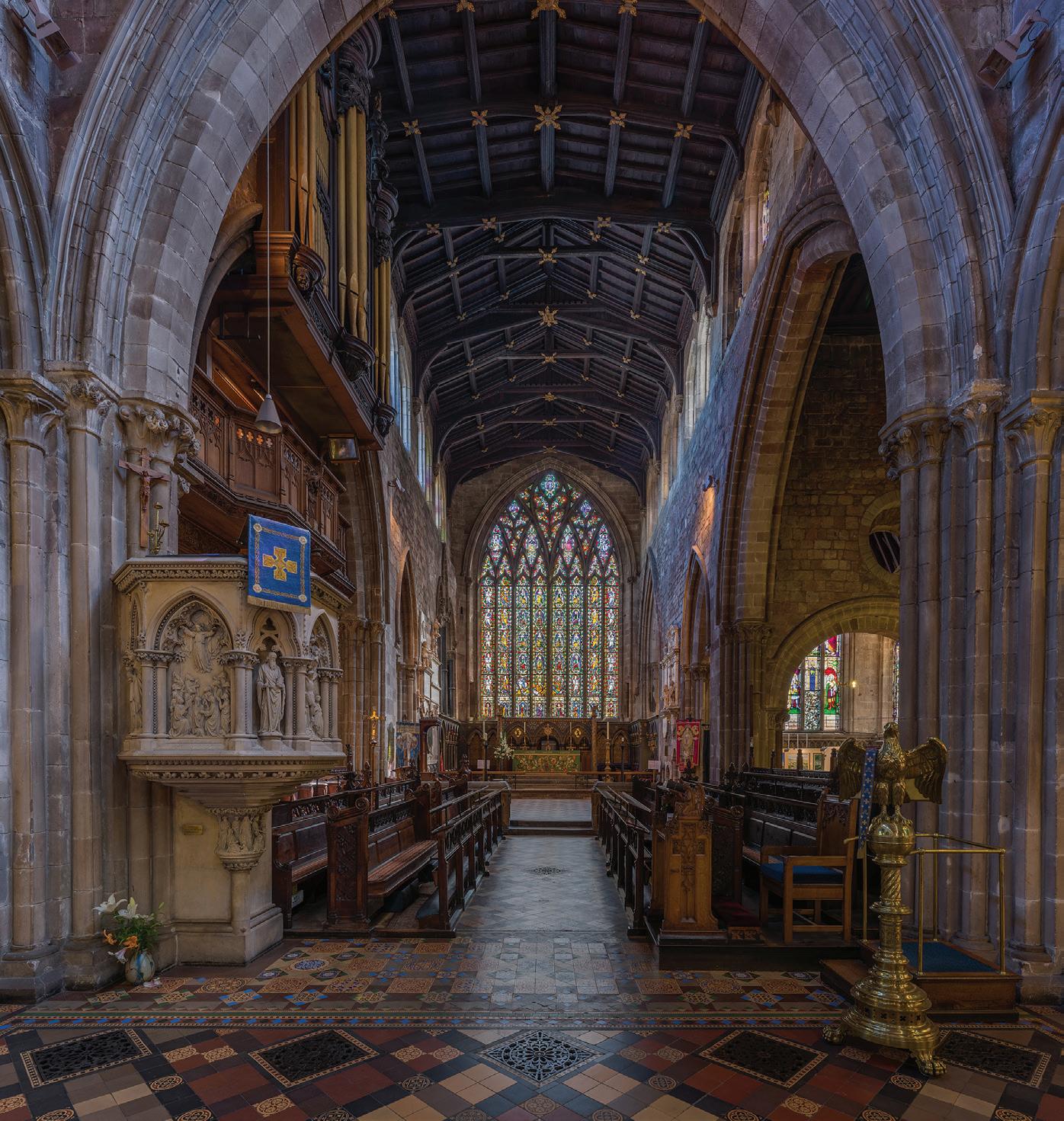
The present-day Church of St Chad was built in the round at the end of the 18th century by George Steuart. It is notable for having been the site of Charles Darwin’s baptism in 1809.
We will also pay a visit to Hereford Cathedral, built in the Gothic style from the 11th century, and home to the medieval Mappa Mundi. The Church of St Mary & St David in Kilpeck, meanwhile, was described by Pevsner
as “one of the most perfect Norman churches in England” and contains fine carvings in local red sandstone as well as a remarkable corbel tray.
Our base for this tour is the Feathers Hotel & Restaurant, occupying a Grade I listed property in the heart of Ludlow. Behind its Tudor half-timbered façade, the hotel enjoys recently refurbished rooms and an AA Rosette award-winning restaurant.
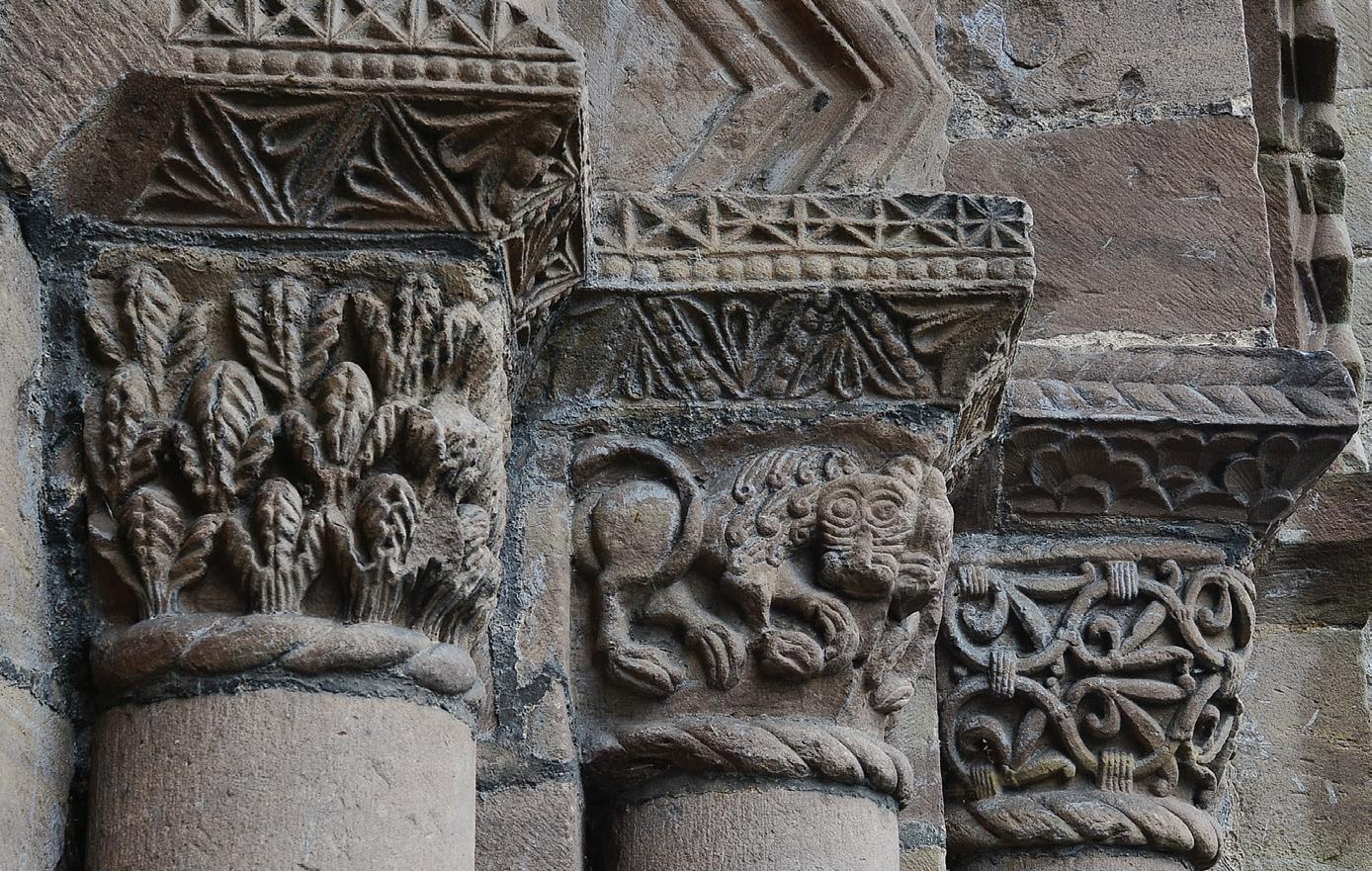
“Really wonderful Tour Director who immersed us in the Middle Ages and delivered the information about the venues in an exceptionally engaging way”
– ACE customer on a previous churches tour led by Imogen Corrigan
FITNESS / PRACTICALITIES: This tour requires a good level of fitness and mobility, and participants should meet ACE’s usual fitness criteria in our Booking Terms & Conditions. Due to narrow lanes, the coach is not usually able to drop off the group directly outside the churches, so some walking will be involved to access them, including over tracks and up and down grassy slopes. Furthermore, the ground can be uneven underfoot (including inside the churches). In particular, the walk to Shobdon Arches is uphill and can be muddy; at Moccas it is necessary to climb a grassy bank to access the church; and Shrewsbury is hilly. Participants should be prepared for navigating steps (sometimes steep or without handrails), as well as dimly lit areas. Please be aware that not all of the churches have facilities.
The itinerary represents a guide to what we hope to offer, and some elements may be subject to change or confirmation nearer the time. If it is necessary to substitute a particular church due to access reasons, we will endeavour to replace it with another of equal historical interest.
D ay 1 Tour assembles 1330 at the Feathers Hotel & Restaurant, Ludlow, for four nights. Welcome and introductory lecture followed by visit to St Laurence’s Church and some free time to explore Ludlow.
D ay 2 Excursion to Shrewsbury for St Chad’s Church, St Mary’s Church and Shrewsbury Abbey, followed by Battlefield for St Mary Magdalene Church (subject to confirmation).
D ay 3 Morning: St John the Evangelist Church, Shobdon Church and Arches followed by St Mary Magdalene Church, Eardisley. Afternoon: Church of St Michael & All Angels, Moccas and St George’s Church, Brinsop (subject to confirmation).
D ay 4 Morning: St Peter’s Church, Rowlestone and Church of St Mary & St David, Kilpeck. Afternoon: Hereford Cathedral and St Michael & All Angels’ Church, Castle Frome.
D ay 5 Visits to Heath Chapel (subject to confirmation); St Peter’s Church, Diddlebury and Leominster Priory Church of St Peter & St Paul. Tour disperses approx 1515 at Ludlow Station followed by the hotel. We recommend organising onward trains departing after 1545.
Cost of £1695 includes: accommodation based on sharing a twin or double bedded room, four breakfasts, four dinners with water & coffee, excursions & admissions, gratuities & all taxes.
Not included: travel insurance, double room for single use supplement £295. TOUR CODE: CHS125 / CHS225
July 21–25, 2025

Visit an array of houses from different periods, including many not usually open to the public
Enjoy private guided tours at Hellens Manor and Llanvihangel Court
Be immersed in wonderful gardens, including those at High Glanau and The Laskett
Along the Welsh Border lies one of the most beautiful landscapes to be found in Britain, with small, hedgerow-lined fields interspersed with wooded areas. It is populated with many fine houses and gardens dating from the 16th century onwards.
The charming manor at Hellens is one of the oldest dwellings in England; with foundations dating back to the 12th century, the property also features later Tudor, Jacobean and Georgian architecture. The oldest parts of the delightful Hampton Court Castle date back to the 15th century.
Llanvihangel Court is a Tudor country house with medieval origins set in beautiful surroundings near the Black Mountains and Brecon Beacons. It is close to Llanover, where an elegant neoclassical house is surrounded by a listed historical garden with exquisite herbaceous borders.
The remote countryside near Brecon is home to the Gothic Revival Treberfydd, while the magnificent Eastnor is a 19th century revival castle built for the 2nd Baron Somers and still inhabited by his descendants today.
The region features some beautiful but contrasting 20th century gardens. High Glanau was created before the First World War by H Avray Tipping, Architectural Editor of Country Life and highly adept garden designer whose work also includes the garden at Chequers. Sir Roy Strong bequeathed his innovative, complex and entertaining garden at The Laskett to the horticultural charity Perennial.
Several visits will be private, courtesy of the house owners, some of whom will join us for guided tours or refreshments.
We will stay at the comfortable Green Dragon Hotel, located in the heart of Hereford within a 17th century former coaching inn.
Cost of £1695 includes: accommodation based on sharing a classic twin or double bedded room, four breakfasts, three lunches, three dinners with water & coffee, excursions & admissions, gratuities & all taxes.
Not included: travel insurance, classic double room for single use supplement £225.
TOUR CODE: HEWB25

This tour will be led by architectural historian Oliver Gerrish , MSt, who studied at the University of Cambridge. An experienced tour leader who has written for Country Life and appeared in a number of television series on architecture, Oliver is the former chairman of The Young Georgians, the youth chapter of the Georgian Group, and a trustee of the Derbyshire Historic Buildings Trust. He has close family links with High Glanau.
FITNESS / PRACTICALITIES: This tour requires a good level of fitness and mobility as it involves periods of time spent walking and standing at historical properties and in their gardens and grounds, where there are not always opportunities to sit down. It is necessary to navigate uneven ground, including grass, uneven paving and cobbles which can be slippery if wet, as well as steps of differing sizes and depths of tread. At Llanover House, there are streams, ponds and other unfenced water features, so care must be taken. At Eastnor Castle, the grounds are fairly hilly. Lifts are not available at most sites, and light levels can be low to preserve collections. Participants should meet ACE’s fitness criteria, as outlined in our Booking Terms & Conditions.
The itinerary represents a guide to what we hope to offer; owing to the special nature of the visits, some elements may be subject to change or confirmation nearer the time.
D ay 1 Tour assembles 1400 at the Green Dragon Hotel, Hereford, for four nights. Afternoon: Hampton Court Castle (guided tour and free time in gardens). Evening: welcome and introduction.
D ay 2 Morning lecture followed by private visit to High Glanau Manor (guided tour and lunch). Afternoon: guided tour of Eastnor Castle.
D ay 3 Morning: private visit to Llanvihangel Court (guided tour of house and opportunity to look around gardens) followed by private visit to Treberfydd (tour of garden and selected rooms of house) and lunch. Afternoon: private tour of gardens at Llanover House. Free evening.
D ay 4 Morning: private visit to Hellens Manor (guided tour of house and opportunity to look around gardens) and lunch. Afternoon: The Laskett Gardens.
D ay 5 Tour disperses after breakfast at hotel.
June 30 – July 4, 2025
Delve into Suffolk’s prosperous past at the Church of the Holy Trinity in Long Melford
Encounter some hidden medieval treasures – from bench carvings to wall paintings – in less frequented churches
Stay in the heart of Bury St Edmunds, a stone’s throw from its fascinating cathedral with layers of modern architecture
The undulating landscape of Suffolk possesses one of the highest concentrations of churches in the UK. Many are famous for their magnificent stained glass windows, celebrated nationally “for the people they depict, the stories they tell and their famous designers” (National Churches Trust, 2018).
These churches also help to reveal important religious, architectural and economical developments: rising on the back of the 15th century woven cloth trade, many owe their life and character to the region’s burgeoning wealth, as well as changes that came later, from the Reformation to 19th century revisions.
Encasing some fine 15th century stained glass, the parish church at Stratford St Mary boasts a beautiful exterior, characterised by flint flushwork and medieval inscriptions. Among the most

This tour will be led by medieval historian Imogen Corrigan , BA, MPhil, FRHistS, FRSA. Imogen has a first-class degree in Anglo-Saxon and Medieval History from the University of Kent and an MPhil from the University of Birmingham. Her book Stone on Stone: The Men who Built the Cathedrals was published in 2019. She is an accredited Arts Society lecturer and a Freeman of the Company of Communicators.

renowned wool towns of the county, Long Melford is home to a fittingly spectacular parish church in Holy Trinity. It entrances visitors with its medieval stained glass, including the famous depiction of the Trinity as three interlocked hares, and its light-filled lady chapel.
No less important for our understanding of the period are some less frequented buildings. St Nicholas’s Church in Denston is a prime example of late Perpendicular architecture and a treasure trove of original features, including misericords, a panelled font and medieval benches topped with animal carvings.
Originally a parish church, St Edmundsbury attained its cathedral status in 1914. Following 19th century restorations by George Gilbert Scott and James Wyatt, this fascinating and multilayered structure has since undergone significant modern expansions by architects including Stephen Dykes Bower: a new choir, cloister, lady chapel, and Gothic revivalist Millennium Tower were all completed by 2005.
Our tour is based at the four-star Angel Hotel, a stylish boutique establishment set among the cobbled streets of Bury St Edmunds.
“Absolutely outstanding by all measures, well constructed and impeccably presented”
– ACE customer on the 2023 Churches of Suffolk tour with Imogen Corrigan
FITNESS / PRACTICALITIES: Some sites have uneven ground, steps, ramps and dimly lit interiors. Handrails are not always available. Accessing some churches will involve walks of up to half a mile; in particular, the visit to Holy Trinity Church in Long Melford will require a short walk up a shallow slope, and at Gipping, care must be taken as there are numerous rabbit holes. Please consult ACE’s minimum fitness requirements as outlined in our Booking Terms & Conditions. Please also be aware that facilities are not always available at the churches or in the rural areas that this tour travels to.
Please note that the itinerary represents a guide to what we hope to offer, and some elements may be subject to change or confirmation nearer the time.
D ay 1 Tour assembles 1330 at the Angel Hotel, Bury St Edmunds, for four nights. Welcome lecture and visit to St Edmundsbury Cathedral.
D ay 2 Morning: St Mary the Virgin Church, Combs and St Mary’s Church, Hadleigh. Afternoon: Stratford St Mary and St Mary the Virgin Church, East Bergholt.
D ay 3 Morning: St Mary’s Church, Thornham Parva; St Mary the Virgin Church, Yaxley and the Church of St Peter & St Paul, Hoxne. Afternoon: St Andrew’s Church, Wingfield and St Mary’s Church, Dennington.
D ay 4 Morning: St Nicholas’s Church, Denston and Holy Trinity Church, Long Melford. Afternoon: Church of St Peter & St Paul, Lavenham and St Mary’s Church, Brent Eleigh.
D ay 5 Morning: St Andrew’s Church, Norton and St Nicholas’s Chapel, Gipping. Afternoon: St Nicholas’s Church, Rattlesden and St Mary’s Church, Woolpit. Tour disperses approx 1615 at Bury St Edmunds Station followed by the hotel.
Cost of £1495 includes: accommodation based on sharing a twin or double bedded room, four breakfasts, one light lunch, four dinners with water & coffee, excursions & admissions, gratuities & all taxes.
Not included: travel insurance, double room for single use supplement £230. TOUR CODE: CHUS25
July 21–24, 2025
Visit Constable’s birthplace, East Bergholt, site of his first studio
Explore Gainsborough’s House in Sudbury, following an awardwinning major redevelopment transforming the site into a new National Centre for Gainsborough
Visit Christchurch Mansion in Ipswich, home to the finest collection of Constable’s paintings outside London
This tour will study the influence of the Suffolk countryside on Constable and his near contemporary Gainsborough, one of the founders of the British landscape tradition.
As we wander along the banks of the River Stour, where Constable spent his “careless boyhood”, we will discover that Flatford Mill, Dedham Lock and Willy Lott’s cottage – immortalised in The Hay Wain – have changed little over two centuries. We will stroll through the country lanes of East Bergholt, where the artist’s first studio was located, and view his Ascension in Dedham’s parish church.
Slightly further afield, we will visit Christchurch Mansion in Ipswich to see artworks including Willy Lott’s Cottage and the intimate companion pieces Golding Constable’s Vegetable Garden and Golding Constable’s Flower Garden.
Our tour will also examine Gainsborough’s roots in his native Suffolk on a visit to the market town of Sudbury. Here, a major redevelopment and refurbishment has recently transformed

This tour will be led by Sarah Burles , MA. Sarah studied History of Art at Cambridge before gaining a Masters at University College London and going onto a career in museum and gallery education, including 12 years at the Fitzwilliam Museum. Sarah is an accredited lecturer for the Arts Society.
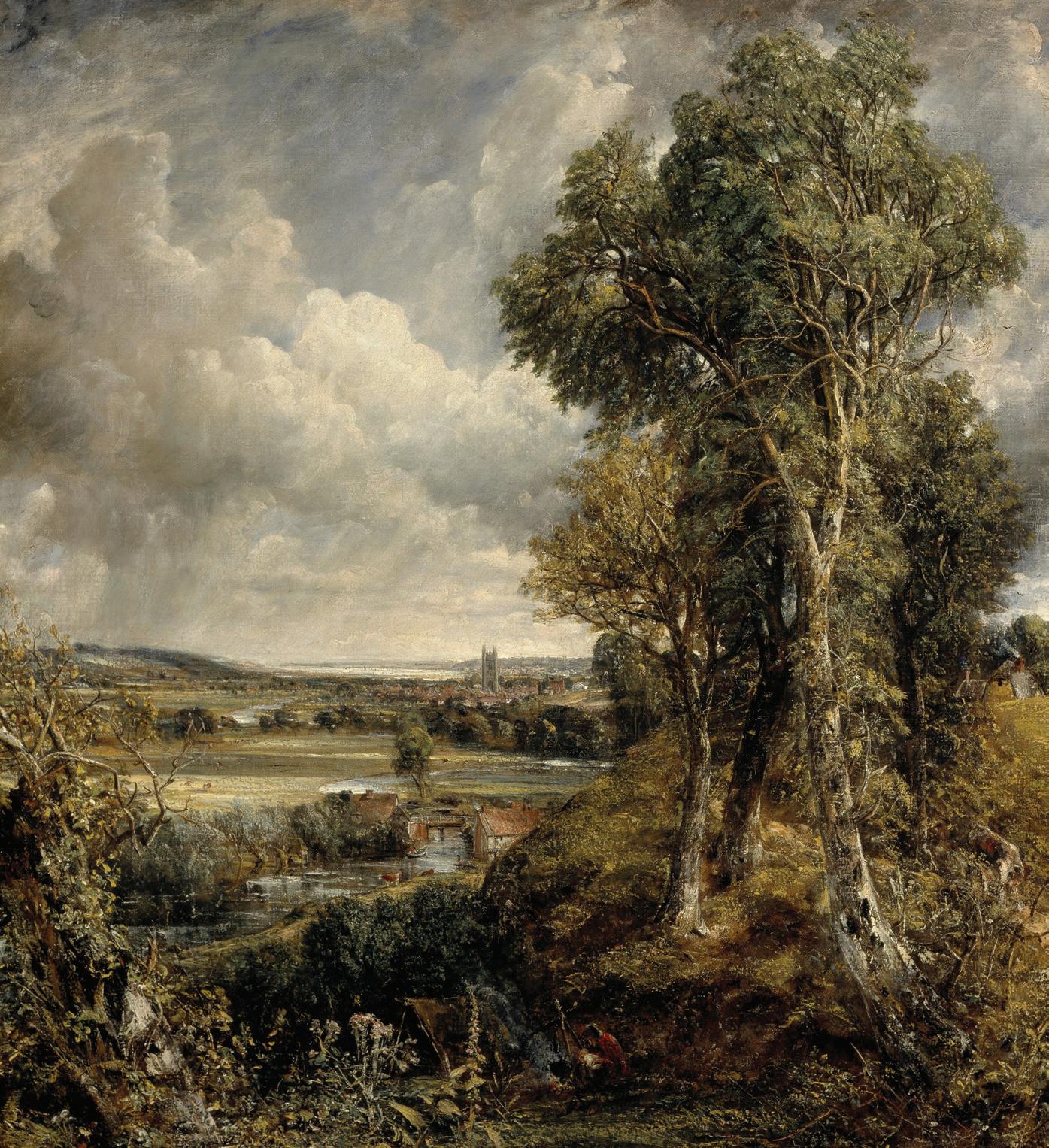
the artist’s former house into a National Centre for Gainsborough, winning the prestigious RIBA East Building of the Year Award in 2024. We will enjoy a guided tour, as well as a historical walking tour of the town.
We will stay at the four-star Hintlesham Hall Hotel, a comfortable and
traditionally decorated hotel occupying a 16th century Grade I listed manor house, set in 175 acres of Suffolk countryside. The hall has historical links to Gainsborough: it was purchased in 1747 by Sir Richard Lloyd, one of the artist’s early patrons, making it a fitting base for our tour.
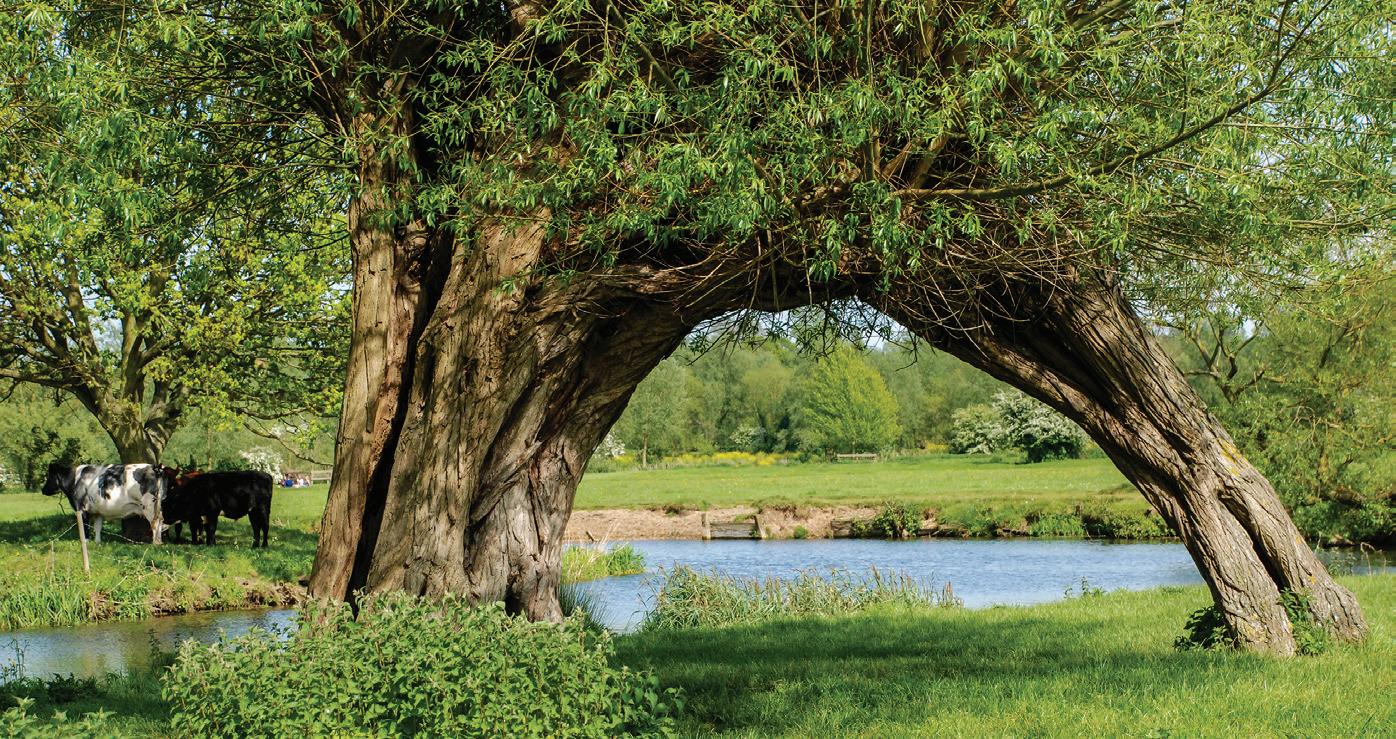

FITNESS / PRACTICALITIES: This tour will involve a significant amount of walking and standing, much of which is outdoors (including through a field in Dedham). There is uneven ground to navigate at times, for example in the churchyards and at Flatford Mill, which has a gentle incline over bark-covered steps with a handrail. There is no lift at the hotel or at Christchurch Mansion, so participants must feel comfortable ascending and descending stairs. Some sites can be dimly lit. A good level of fitness and mobility is necessary, and participants should meet ACE’s fitness requirements in our Booking Terms & Conditions.
Please note that the itinerary represents a guide to what we hope to offer, and some elements may be subject to change or confirmation nearer the time. We cannot guarantee the availability of all artworks listed.
D ay 1 Assemble 1300 at Ipswich Station or 1330 at Hintlesham Hall Hotel. Afternoon coach tour of Stour Valley and Suffolk villages of Stoke by Nayland, Nayland and Stratford St Mary. Three nights at Hintlesham Hall Hotel.
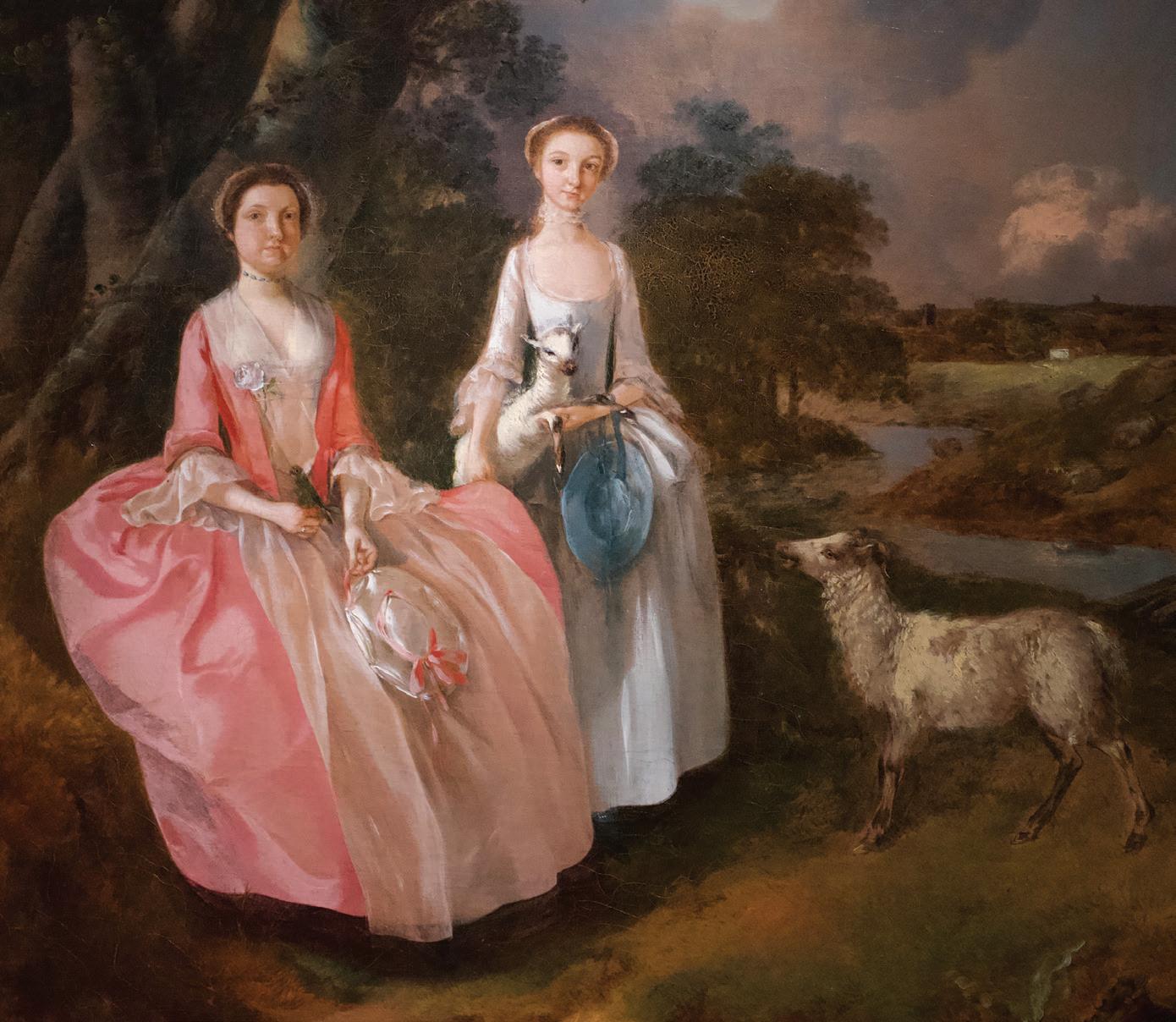
“Excellent tour with first class lecturer”
“The tour was very well organised and the hotel exceptionally comfortable. The lectures and talks were excellent”
“Outstanding in every way”
– ACE customers on previous Constable & Gainsborough in Suffolk tours with Sarah Burles
D ay 2 Morning lecture: Constable’s Country –Artist & Landscape. Visit to East Bergholt for walking tour viewing Constable’s first studio and the site of his parents’ house (exteriors), St Mary’s Church and bell cage. Afternoon: walking tour of Dedham viewing Dedham Mill and Dedham Lock (exteriors) followed by Flatford Mill and Flatford Lock, Willy Lott’s cottage (featured most famously in The Haywain – exterior) and site of Boat Building on the Banks of the Stour
D ay 3 Short morning lecture: Thomas Gainsborough – Portraits & Land-skips followed by private visit to the Munnings Art Museum. Continue to Sudbury for afternoon at Gainsborough’s House.
D ay 4 Morning: Christchurch Mansion. Tour disperses approx 1300 at Ipswich Station followed by approx 1330 at the hotel.
Cost of £1475 includes: accommodation based on sharing a twin or double bedded room, three breakfasts, one lunch, three dinners with water & coffee, excursions & admissions, gratuities & all taxes. Not included: travel insurance, double room for single use supplement £225. TOUR CODE: CGSU25
August 4–8, 2025 | August 11–15, 2025

Uncover the controversial ‘Dark Ages’ as we investigate the history of Northumbria during the Early Middle Ages
Follow in the footsteps of pilgrims, exploring the early Christian monasteries at Lindisfarne and Monkwearmouth-Jarrow as well as Escomb church
Marvel at the architecture of Durham Cathedral, containing shrines to St Cuthbert and St Bede
Travel back to the Early Middle Ages as we explore glittering Anglo-Saxon England, illuminated by artefacts and manuscripts as well as an abundance of personalities. Controversially termed the ‘Dark Ages’, the Middle Ages dominated the period between the fall of the Roman Empire in the west and the Renaissance, with Viking invasions from the east as
“It was all excellent. A wonderful itinerary, beautifully organised”
“Cannot praise the tour enough”
“Imogen was a fantastic lecturer in every way – informative and friendly. I would definitely travel with her again”
– ACE customers on previous Northumbria in the First Millennium tours led by Imogen Corrigan
well as the wider spread of Islam and Christianity. They encompassed the reign of Charlemagne, the first Holy Roman Emperor, as well as the lives of the Venerable Bede and St Cuthbert, who would become the most powerful saint in the north.
Our journey to the Holy Island of Lindisfarne will follow in the footsteps of pilgrims as we explore one of the most important centres of early Christianity.
Founded by St Aiden, the island was a Christian stronghold and bishopric seat housing many important figures, including St Cuthbert and St Wilfrid, until it became the first to succumb to Viking invasions.
Benedict Biscop founded the double monastery at Monkwearmouth-Jarrow, the second to be seized, and marked it as a centre of learning and scholarship. Its continued development produced one of the greatest Anglo-Saxon scholars, Bede.
From June 793, the Vikings inflicted terror and misery on the northern kingdom, but they also brought with them their own culture. It influenced church art until roughly 1200, and some of the results can still be seen today.
Our itinerary will unearth clues about our Anglo-Saxon past in a range of contexts, including at parish churches, such as Escomb – one of northern Europe’s finest
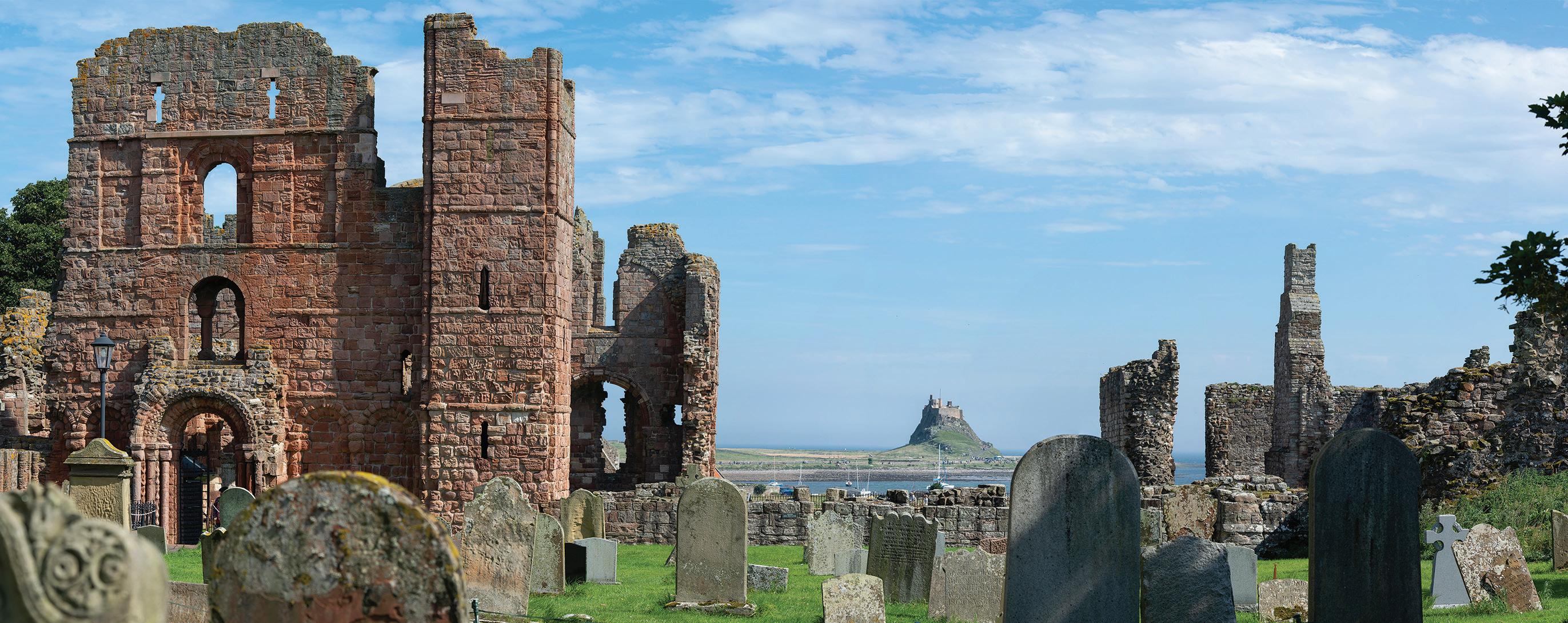
examples of early Christian architecture. We will also spend time at the glorious cathedral in Durham, examining the building’s interior and exterior, and enjoying the cathedral’s collections in its dedicated museum.
We will stay at the four-star Delta Hotels by Marriott Durham Royal County, with splendid views of Durham’s cathedral and historical quarter.
FITNESS / PRACTICALITIES: Some visits will involve walking over rugged, cobbled, uneven and occasionally steep ground, and church interiors may be dimly lit. To visit the crypt at Hexham Abbey involves a flight of steep stone stairs (with handrails), but this element of the visit is optional. Participants should have a good overall level of fitness and mobility and consult our general fitness requirements in our Booking Terms & Conditions before travel.
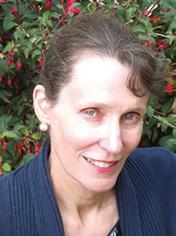
This tour will be led by medieval historian Imogen Corrigan , BA, MPhil, FRHistS, FRSA. Following almost 20 years in the Army, Imogen obtained a first-class degree in Anglo-Saxon and Medieval History from the University of Kent and subsequently an MPhil from the University of Birmingham. Her first book, Stone on Stone: The Men who Built the Cathedrals , was published in 2019 by Robert Hale. She is an accredited Arts Society lecturer, and a Freeman of the Company of Communicators.

Please note that the itinerary represents a guide to what we hope to offer, and some elements may be subject to change or confirmation nearer the time. The timing of our excursion to Lindisfarne is subject to tides and local conditions, and our visits and excursions may be reordered accordingly. Please note that the order of visits may differ between both departures. Please refer to the website for full itineraries for each departure.
D ay 1 Tour assembles 1700 at Delta Hotels by Marriott Durham Royal County for four nights. Welcome and introduction. Evening lecture: Bede & the World in Which he Lived.
D ay2 Morning visit to Rothbury for All Saints’ Church (font stands on part of a 9th century Market Cross). Afternoon excursion to Lindisfarne: St Mary’s Church (reputed site of original monastery) and Priory (home of St Cuthbert). Precise timings for this day will depend on tide times.
D ay 3 Visits to St Paul’s Church, Jarrow; St Peter’s Church, Monkwearmouth and St Mary Magdalene, Hart. Evening lecture: The Lindisfarne Gospels.
D ay 4 Morning visit to Escomb Church (dating from c 675). Return to Durham for afternoon at the cathedral (including museum).
D ay 5 Hexham Abbey followed by Chesterle-Street (St Cuthbert’s Church and Anker’s House Museum). Tour disperses approx 1600 at Durham Station followed by the hotel.
Cost of £1395 includes: a ccommodation based on sharing a twin or double bedded room, four breakfasts, four dinners with water & coffee, excursions & admissions, gratuities & all taxes.
Not included: travel insurance, double room for single use supplement £125. TOUR CODE: NFM125 / NFM225
August 6–9, 2025
Discover the lives and works of artists and writers who made the beautiful Sussex countryside their home in the early 20th century
Step into houses once belonging to members of the Bloomsbury Group, including Monk’s House, home to Virginia Woolf, and Vanessa Bell and Duncan Grant’s Charleston
View pieces from one of the largest collections of work by Eric Ravilious at the Towner Eastbourne, and gain unique insights into the life of photographer Lee Miller at Farleys House & Gallery with a special private talk
A century ago, the county of Sussex became a hub for artists and writers who came to escape the urban, be inspired and build new lives. Our tour takes us to many of the houses and gardens in which their ideas and lifestyles were formed, homes that both embrace the richness of the past and showcase modern ideals sought by English artists and writers at the time.
From the 1890s to the 1940s, British design was driven by the tension between tradition and modernity. Houses and interiors at the turn of the century continued to explore the delightful possibilities of the Arts & Crafts movement: Philip Webb’s plans for Standen (1891-4) incorporated the brightest and best of Morris & Co interior design.
To further set the scene, we will pay a visit to Gravetye Manor, to enjoy an exclusive guided tour of the famous Arts & Crafts gardens created by visionary gardener William Robinson in the late 19th century, followed by a lunch in the manor’s Michelin-starred restaurant.
At the heart of our tour is an exploration of the life and work of the Bloomsbury Group: Virginia Woolf, Duncan Grant, Vanessa Bell and their friends desired to create a modern movement in Britain


This tour will be led by Suzanne Fagence Cooper, MA, PhD, an Arts Society accredited lecturer, historian and curator who specialises in 19th and 20th century art. Currently Research Curator at York Art Gallery, Suzanne previously worked at the Victoria & Albert Museum, London, and collaborated with many of Britain’s regional museum collections. She curated the 2019 exhibition Turner, Ruskin & the Storm Cloud at York Art Gallery, and is the author of To See Clearly: Why Ruskin Matters (2019).
to rival the new art of Paris and Berlin. The transformation of the old Sussex farmhouse of Charleston, through bold colour and abstract pattern-making, bears witness to their ingenuity and creativity.
Farleys House was the home of Surrealist photographer, Vogue model and Second World War correspondent Lee Miller, recently brought to life in the muchanticipated film Lee starring Kate Winslet. The house played host to many leading figures of 20th century modern art, including Picasso. Here, we will discover
the remarkable stories of its inhabitants as well as the characterful interiors. In addition, we hope to enjoy a private talk from a member of the family, to gain further, uniquely personal, insights into the house and the lives led there.
Artists like Eric Ravilious were walking the Downs in the 1920s and 30s, wrestling with the desire to paint in a style that was sensitive to the deep history of the landscape, while
We will stay throughout at The Star in Alfriston, a character property occupying a 15th century inn with tasteful later additions, now part of the prestigious Polizzi Collection. Exquisite interiors curated by renowned hotelier and interior designer Olga Polizzi contain a mix of antiques, original features, contemporary design and pieces by local artists.
Set in the charming village of Alfriston at the foot of the East Sussex Downs, this luxurious hotel is ideally located for our local visits, while its aesthetic chimes with the themes of the tour, providing a fitting base for our explorations: two still lifes by Vanessa Bell and a portrait by Duncan Grant can be seen on the walls.
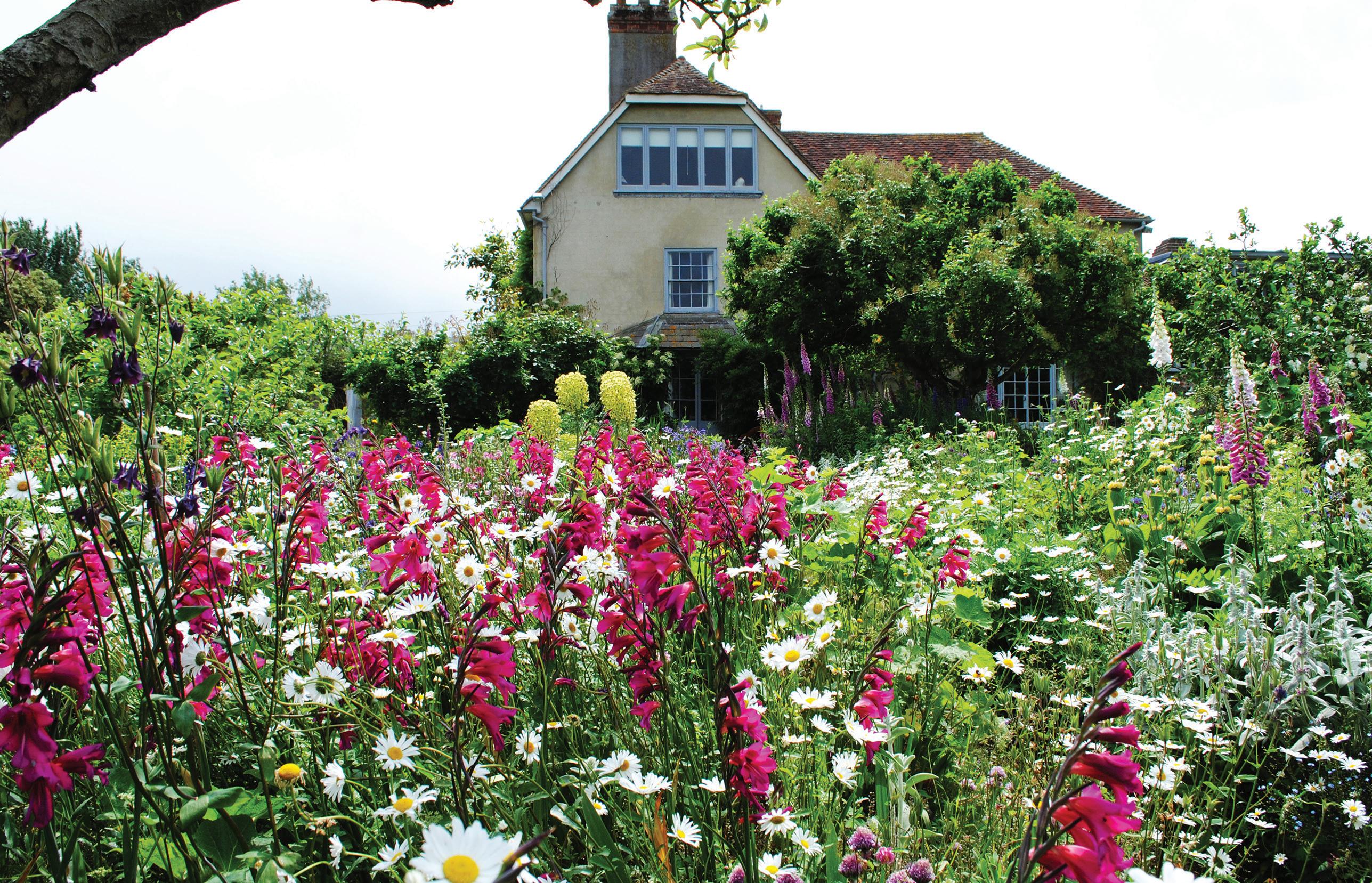
“Great tour, great visits, very interesting and varied
programme”
– ACE customer on a previous Sussex tour led by Suzanne Fagence Cooper
responding to the upheavals in art and design since the First World War. A visit to the Towner Eastbourne will offer an opportunity to absorb highlights from the gallery’s extensive collection of works by Ravilious, having taken in some of the scenes that inspired him en route.
FITNESS / PRACTICALITIES: A good level of fitness is required for this tour, and participants should be prepared for walking and standing for up to an hour at a time. Seats are sometimes available but cannot be guaranteed. Some sites have uneven, uphill, cobbled, grassy and gravelled ground, as well as steps and narrow staircases, and most of the historical properties do not have lifts. The coach cannot always park close to site entrances so some walking is involved to access sites, including along lanes. Some interiors may be dimly lit. For ACE’s minimum fitness requirements, please see our Booking Terms & Conditions.

Please note that the itinerary represents a guide to what we hope to offer, and some elements may be subject to change or confirmation nearer the time. Owing to their special nature, some visits may be adjusted nearer the time.
D ay 1 Tour assembles 1300 at Eastbourne Station or 1345 at The Star, Alfriston. Afternoon visit to Charleston. Welcome and introductory lecture. Three nights at The Star, Alfriston.
D ay 2 Excursion to West Hoathly for guided tour of Arts & Crafts gardens at Gravetye Manor, followed by lunch at its Michelin-starred restaurant. Afternoon: Standen. Free evening.
D ay 3 Morning: Farleys House & Gallery with private talk (subject to confirmation). Continue to Berwick for St Michael’s & All Angels’ Church (Bloomsbury set murals) and Firle for St Peter’s Church (John Piper stained glass). Afternoon: Monk’s House. Evening lecture.
D ay 4 Morning excursion to Eastbourne for Towner Art Gallery. Tour disperses approx 1300 at Eastbourne Station followed by approx 1345 at the hotel.
Cost of £1895 includes: accommodation based on sharing a twin or double bedded room, three breakfasts, two lunches, two dinners with water & coffee, excursions & admissions, gratuities & all taxes. Not included: travel insurance, double room for single use supplement £395. TOUR CODE: SUMO25
August 11–16, 2025
Discover the world and works of William Morris, Dante Gabriel Rossetti and Edward Burne-Jones, as we go behind the scenes at the Oxford Union and in many of the city’s college chapels
Enjoy a private guided tour of Kelmscott Manor, Morris’s beautiful Cotswolds home, which has undergone a major conservation project in recent years
Discover exemplary Arts & Crafts design at the beautiful Rodmarton Manor on a privileged visit
From a base in Oxford, this tour places William Morris at the heart of Victorian art, taste and design, as we explore the ‘city of dreaming spires’ and idyllic surrounding Cotswolds countryside.
At the heart of our tour will be a private guided visit to Kelmscott Manor, the exquisite country retreat built in Cotswold stone that Morris described as “Heaven on Earth”. The Grade I listed manor reopened in 2022 following major conservation and restoration works. Its evocative collections include furniture,
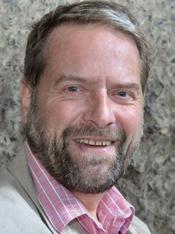
This tour will be led by Christopher Bourne , BA, an expert in 19th and 20th century art and experienced tour leader. Christopher read History and French at the University of Manchester, and following an early interest in 19th century art and architecture, developed specialist knowledge of the PreRaphaelite Brotherhood, the Arts & Crafts Movement, Art Nouveau, Jugendstil and the Viennese Secession. He is a member of the Victorian Society, the William Morris Society, the Pre-Raphaelite Society and the 20th Century Society.
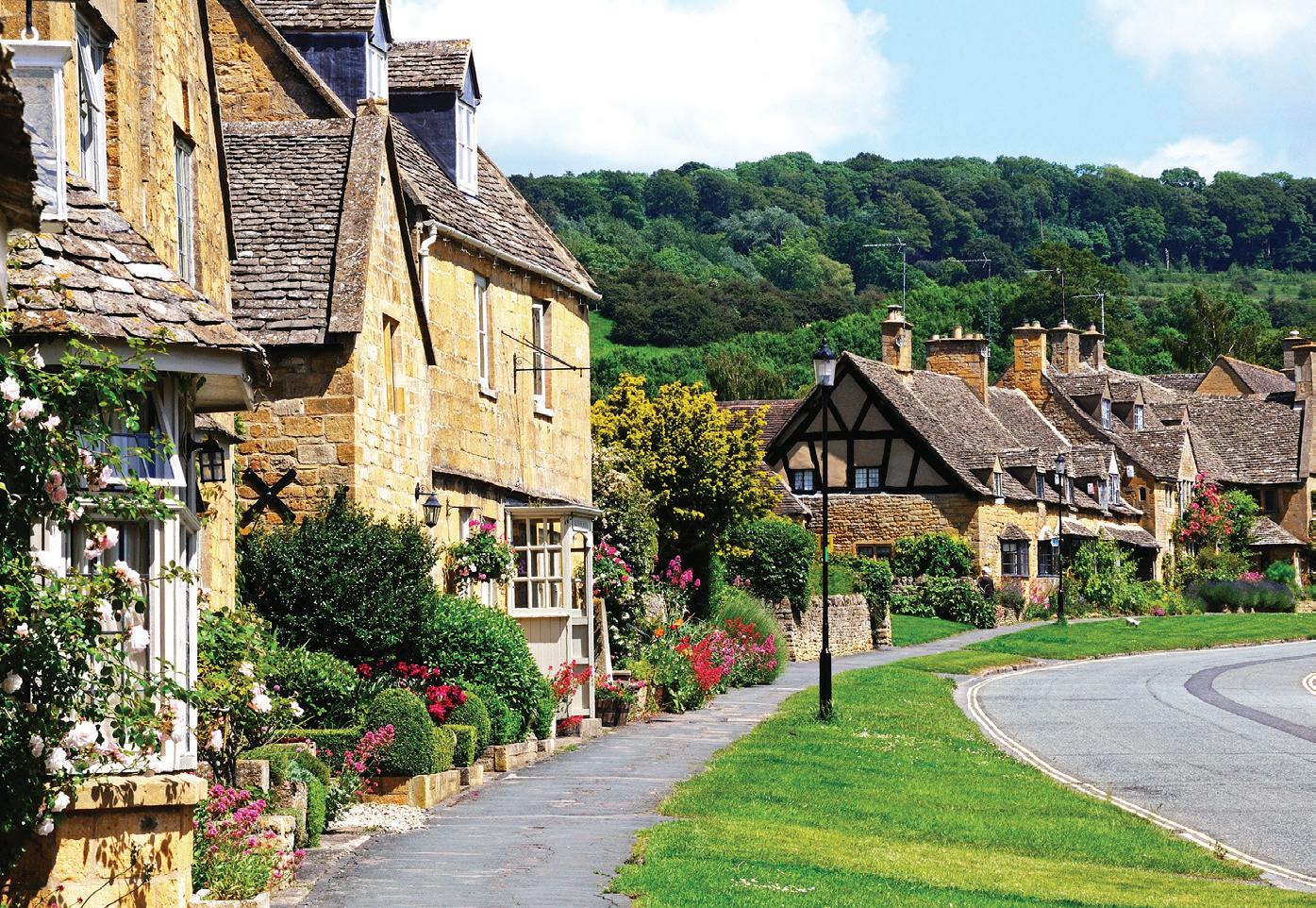
“I thoroughly enjoyed the tour… The tour lecturer [was] first rate… This was my first ACE tour and I look forward to participating in more in the future”
– ACE customer on the 2023 William Morris tour led by Christopher Bourne
original textiles, pictures, ceramics and metalwork, and it is surrounded by beautiful gardens.
A further highlight will be an exclusive visit to Rodmarton Manor in the heart of the Cotswolds, a superlative example of Arts & Crafts architecture and design. Built by Ernest Barnsley, a key leader of the Arts & Crafts and proponent of Morris, the building epitomises the movement’s ambition of creating a sense of harmony between architect, designer and craftspeople. Barnsley’s brother Sidney produced much of the furniture that can still be seen in situ at the house, which remains the private home of the Biddulph family. Its generous gardens still follow the layout drawn up by Barnsley as part of his holistic vision for the site.
We will stop in the charming Cotswolds village of Broadway, which has close connections with the Arts & Crafts
movement. The Gordon Russell Design Museum is dedicated to the work of the eponymous furniture designer, whose commitment to “good design accessible to all” spanned the Arts & Crafts and Modernist periods.
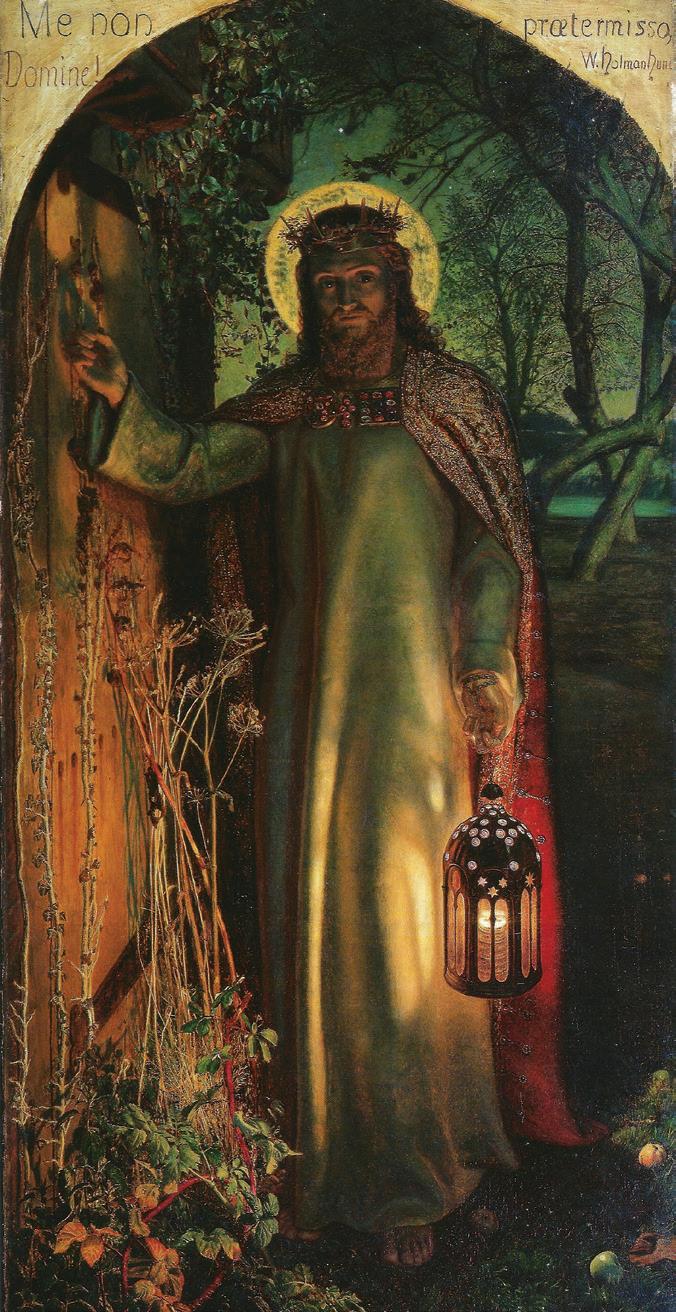

Within Oxford itself, we will enjoy a series of privileged visits to several of the city’s famous colleges, wherein a rich array of Pre-Raphaelite art can be discovered. These include the stained glass at Christ Church Cathedral and Harris Manchester College Chapel, and the sumptuous Victorian chapel at Exeter College. William Butterfield’s assertive Keble College features an intimate chapel, containing William Holman Hunt’s The Light of the World.
The Oxford Union contains early and important murals by Morris, Dante Gabriel Rossetti and Edward BurneJones. At the Ashmolean Museum, we will study the world-class collection of Pre-Raphaelite art, while at the Oxford University Museum of Natural History –which features statues by Pre-Raphaelite sculptors – we will explore how John Ruskin, who was closely linked to the Brotherhood, had an influence upon the architecture of this great museum.
Cost of £1995 includes: accommodation based on sharing a twin or double bedded room, five breakfasts, one light lunch, four dinners with water & coffee, excursions & admissions, gratuities & all taxes. Not included: travel insurance, double room for single use supplement £445. TOUR CODE: WMCO25
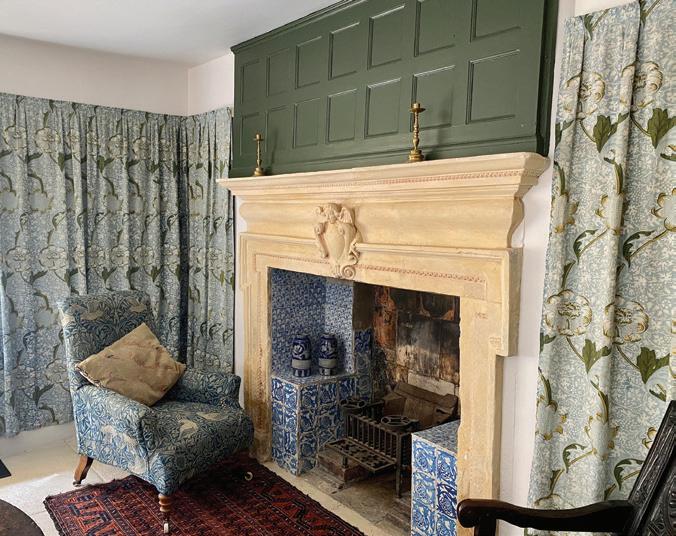
Buscot Park includes an excellent collection of Pre-Raphaelite paintings in Victorian surroundings, while 13th century Great Coxwell Barn was a favourite of Morris’s.
We will stay at the four-star Courtyard by Marriott Oxford City Centre, a smart, modern hotel in a quiet location, close to many of our visits in the city.
FITNESS / PRACTICALITIES: The majority of this tour is undertaken on foot, and will involve a significant amount of walking, including across uneven and cobbled ground and some grassy and sloped areas, as well as moderate periods spent standing. Some sites, including chapels and the entrance to the hotel, will require careful navigation of steps. Sites can be dimly lit and do not always have lifts. Access to the upper floors at Kelmscott Manor (which have low beams) involves climbing a steep split staircase, and the gallery at the Oxford Union is narrow with a low handrail; participants can opt out of these elements of the visits if they prefer
however. Participants must meet ACE’s fitness requirements as outlined in our Booking Terms & Conditions, and have a good overall level of mobility.
The itinerary represents a guide to what we hope to offer, and certain elements may be subject to change. Due to the special nature of some of the visits, and as access to colleges is subject to availability, we cannot confirm some visits until nearer the time. We also cannot guarantee the availability of all artworks mentioned. Should a particular visit transpire to not be possible, we will endeavour to replace it with another of equal historical interest.
D ay 1 Tour assembles 1415 at Courtyard by Marriott Oxford City Centre Hotel for five nights. Afternoon orientation walking tour and visit to Harris Manchester College Chapel. Welcome and introductory lecture.
D ay 2 Morning: Keble College Chapel and Oxford University Museum of Natural History. Afternoon: Ashmolean Museum (Pre-Raphaelite gallery and some free time).
D ay 3 Morning: private visit to Kelmscott Manor followed by Morris’s grave in Kelmscott churchyard. Afternoon: Buscot Park (works by Burne-Jones and Rossetti) and Great Coxwell Barn. Free evening in Oxford.
D ay 4 Morning visit to Christ Church Cathedral. Afternoon: Oxford Union (library and debating chamber). Evening lecture.
D ay 5 Morning excursion to Broadway for Gordon Russell Design Museum. Private afternoon visit to Rodmarton Manor.
D ay 6 Tour disperses after breakfast at the hotel.
August 4–8, 2025
Study the rich history of the ceramics industry in Staffordshire and Shropshire, with visits to Gladstone Pottery, the Wedgwood Museum and Emma Bridgewater Factory
Discover the unique assembly of architecture and museums charting the story and legacy of the Industrial Revolution
Visit the Coalbrookdale Museum of Iron and view the world’s oldest iron bridge, listed by UNESCO
Britain’s Industrial Revolution saw extraordinary cultural and social change as well as technical innovation and entrepreneurship, and this is nowhere more evident than in the rich heritage of industrial architecture, decorative arts and ceramics visible in the counties of Staffordshire and Shropshire.
The development of steam power revolutionised the mining, iron, textile and ceramics industries. The Etruria Industrial Museum is the site of the only operational steam-driven potters’ mill in the world, and we will also visit the flint mill at Cheddleton, a pre-industrial water mill that was converted to flint grinding for the production of ceramics in the 1780s.
A highlight of the tour will be a visit to the World of Wedgwood Museum, home to the V&A Wedgwood Collection and the site of the Wedgwood Factory, which has been manufacturing its famous ceramics since 1759.
We will also chart the rising fortunes of the ceramics industry during the Victorian age. The Gladstone Pottery Museum showcases the last complete Victorian pottery factory, with displays of ceramic techniques and bottle ovens. The Jackfield Tile Museum, meanwhile, contains a collection of decorative tiles in the former Craven Dunhill factory, which produced tiles from 1840-1960.
Our tour includes a visit to Middleport Pottery, home to Burleigh (historically

Burgess and Leigh) since 1889; it is located in a brick canalside building in Stoke-on-Trent, and has been used as a filming location for The Great Pottery Throwdown.
Emma Bridgewater’s contemporary earthenware is much loved for its colourful designs and use of traditional techniques. Bridgewater purchased a former Victorian factory site in Hanley, Stoke-on-Trent, in 1995, and the site is now a thriving modern example of how the fortunes of the Stoke potteries have been revived.
This tour will be based at the four-star Upper House Hotel, a classic country house hotel located in Barlaston, close to the World of Wedgwood near Stoke-onTrent. The house was originally built in 1845 for Josiah Wedgwood’s grandson.
FITNESS / PRACTICALITIES: This tour requires a good level of fitness and mobility, as it involves a moderate amount of walking, including over uneven ground, steps, cobbles, slippery surfaces and occasional inclines. Care must be taken at the sites, particularly those with industrial machinery (which can be moving, or hot) and canals. There are not always opportunities to sit down, so participants should be prepared for spending periods of time standing, and be aware that some sites may be dimly lit. Please consult ACE’s fitness requirements in our Booking Terms & Conditions.
The itinerary represents a guide to what we hope to offer, and some elements may be subject to change or confirmation nearer the time.
D ay 1 1545 coach-pick up at Stoke-on-Trent Station (for those travelling by train). Tour assembles 1745 at the Upper House Hotel,

This tour will be led by Lars Tharp, MA, FSA, an art historian, lecturer and broadcaster particularly well known for his work on the BBC’s Antiques Roadshow. Lars is a ceramics specialist, former Director of the Foundling Museum and author of Hogarth’s China and The Little Brown Encyclopedia of Antiques (with Paul Atterbury). He has also worked with York Art Gallery.
Barlaston, for four nights. Welcome and introductory lecture.
D ay 2 Morning: excursion to Ironbridge (toll booth and bridge) and Coalbrookdale Museum of Iron. Afternoon: Jackfield Tile Museum and Etruria Industrial Museum.
D ay 3 Morning in Stoke: Emma Bridgewater Factory and Potteries Museum & Art Gallery. Afternoon: Cheddleton Flint Mill.
D ay 4 Morning lecture: Victorian Ceramics –Innovation & Style followed by Gladstone Pottery Museum. Afternoon: World of Wedgwood Museum (V&A Wedgwood Collection).
D ay 5 Morning: Middleport Pottery. Tour disperses approx 1230 at Stoke-on-Trent Station followed by the hotel.
Cost of £1595 includes: accommodation based on sharing a twin or double bedded room, four breakfasts, two lunches, four dinners with water & coffee, excursions & admissions, gratuities & all taxes. Not included: travel insurance, double room for single use supplement £195. TOUR CODE: INRV25
August 26–29, 2025
View the remarkable ‘Memento Mori’ panels of a surviving medieval rood screen at St Mary in Sparham
St Botolph’s in Trunch offers a beautiful 15th century hammerbeam roof alongside fine medieval misericords and a stunning font canopy
Appreciate the stained glass at Bale alongside fascinating murals at Wickhampton and Hemblington
Around one thousand medieval churches once stood in Norfolk, and over six hundred and fifty remain – the largest concentration anywhere in the world. Rising above the gently rolling landscape, they survive from the time when East Anglia was the economic heartland of late medieval England, prospering from the wool trade, the wealth of its great landed families and its thriving coastal port.
We will visit Salle and Cawston, two of Norfolk’s most spectacularly vast church buildings, but our exploration of the religious architecture, art and iconography of the Middle Ages will also encompass some smaller and lesser-known examples, many housing unexpected treasures.
We shall delve into the various media for church art, from misericords and woodcarving to wonderful stained glass at Bale, and fascinating murals at Wickhampton and Hemblington. St Botolph’s in Trunch presents a stunning collection of features, from its beautiful 15th century hammerbeam roof to its superb oak font canopy, one of only four of its kind in England.
Also included will be the much-maligned doodling of the medieval graffiti artist, as seen at St Margaret’s in Cley, the grandest of the four churches that stood at the great harbour mouth of Blakeney Haven. Particular highlights will be those treasures that elucidate the rich pre-Reformation sacramental life of England’s parish churches, such as the splendid rood screens at Cawston and at

Ranworth, where the 26 painted saints panels represent one of the great survivals of English medieval art.
We will stay at the Park Farm Hotel & Leisure, Hethersett, a four-star establishment set in beautiful countryside a few miles outside Norwich.
FITNESS / PRACTICALITIES: This tour requires a good level of fitness and mobility. The ground at some of the church sites is uneven underfoot (both inside and in the churchyards). Participants should be prepared for navigating steps (sometimes steep or without handrails) and occasional ramps, as well as dimly lit areas. Time will be spent walking around the church interiors, some of which are large. Occasionally the group have to cross busy roads to access the churches, so care must be taken. It is also necessary to negotiate steps at our hotel, which does not have a lift. Please be aware that not all of the churches have toilet facilities, but we will have an on-board WC. For ACE’s minimum fitness requirements, please see our Booking Terms & Conditions.
Please note that the itinerary represents a guide to what we hope to offer, and some elements may be subject to change or confirmation nearer the time.
Cost of £1295 includes: accommodation based on sharing a twin or double bedded room, three breakfasts, three dinners with water & coffee, excursions & admissions, gratuities & all taxes. Not included: travel insurance, double room for single use supplement £195. TOUR CODE: CHNF25
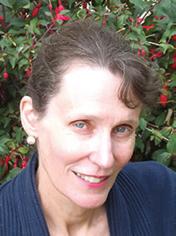
Tour Director
Imogen Corrigan , BA, MPhil, FRHistS, FRSA, studied at the universities of Kent and Birmingham. A proficient lecturer on medieval history, particularly church art and architecture, and accredited with the Arts Society, Imogen’s Stone on Stone: The Men Who Built the Cathedrals was published in 2019. She is a Fellow of the Royal Historical Society and the Memorials and Monuments Specialist for the Diocesan Advisory Committee for Canterbury.
D ay 1 Assemble 1600 at Norwich Station for coach pick-up (those travelling by train) and transfer to Park Farm Hotel & Leisure, Hethersett, for three nights. 1800 welcome and evening lecture: The Dregs of the People Remain –Black Death and its Aftermath.
D ay 2 St Peter and St Paul’s Church, Knapton; St Botolph’s Church, Trunch; St Margaret’s Church, Cley; All Saints’ Church, Bale.
D ay 3 St Mary’s Church, Sparham; All Saints’ Church, Weston Longville; St Peter and St Paul’s Church, Salle; St Agnes’s Church, Cawston.
D ay 4 St Andrew’s Church, Wickhampton; St Edmund’s Church, Acle; St Helen’s Church, Ranworth; All Saints’ Church, Hemblington. Tour disperses approx 1530 at Norwich Station followed by approx 1545 at the hotel.
August 11–16, 2025
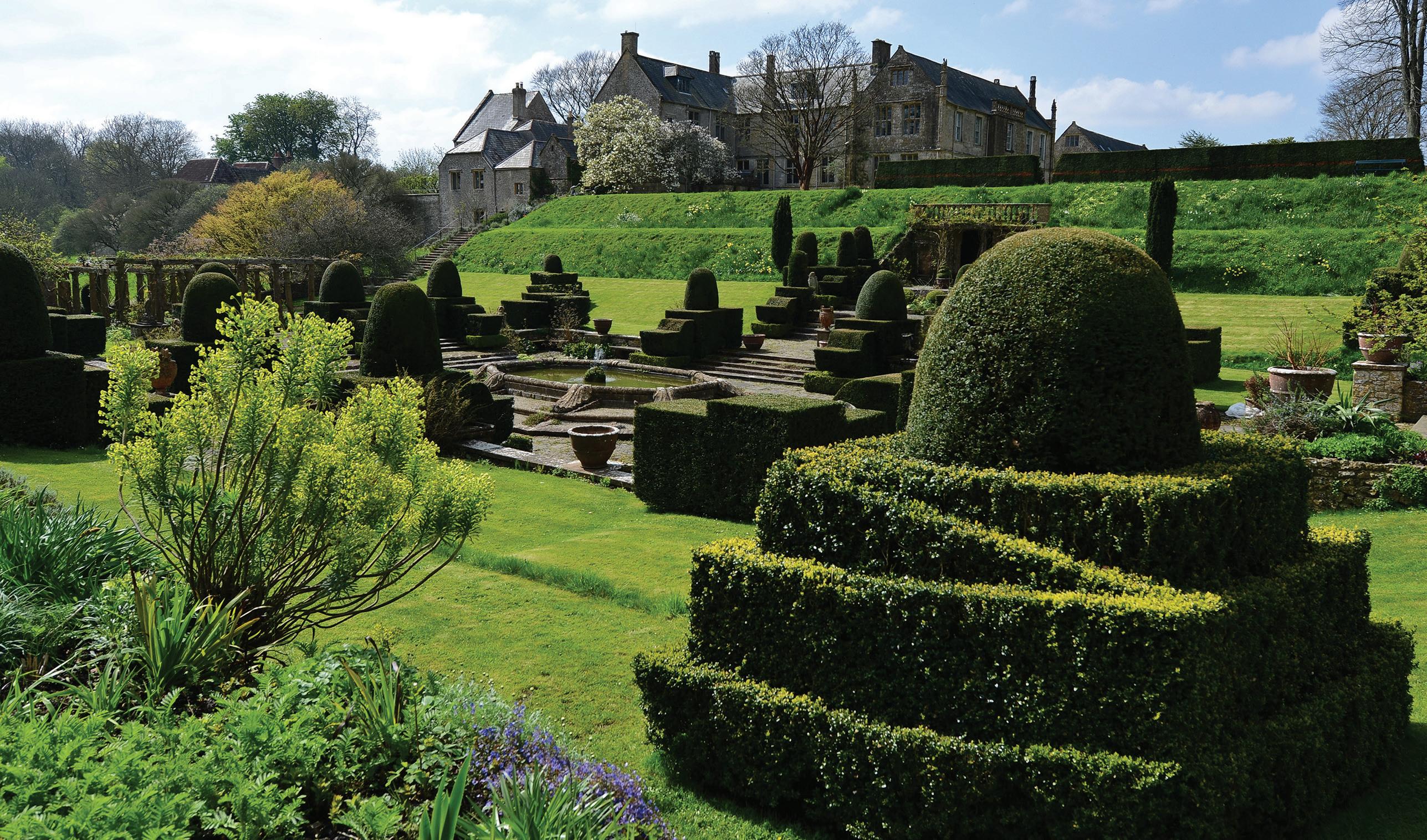
Discover the county’s rich legacy of country houses on a series of special visits
Visit notable gardens of the early 20th century, including those at Mapperton House
Explore the magnificent abbey church at Sherborne
Dorset has remained an overwhelmingly rural county, still dominated in many ways by the traditional estates of private country houses. Forde Abbey evolved from monastic beginnings: in the mid 17th century reception rooms of considerable splendour were threaded through the early medieval and Tudor remains of a Cistercian monastery.
Sherborne Castle was built by Sir Walter Raleigh in 1594, and showcases a variety of decorative styles from over four centuries, including landscape gardens by Capability Brown.
Athelhampton is an important Tudor manor house with a well-preserved Great Hall featuring heraldic stained glass and
a high hammerbeam roof. Hardy was a frequent visitor, with Athelhampton inspiring some of the fictional houses in his writing.
Wolfeton House contains nationally important interiors of the later 16th century. Mapperton features Tudor and Stuart architecture, as well as important early 20th century gardens, while
Minterne is a remarkable Edwardian house with Arts & Crafts touches.
Dorset’s churches will form another focal point. The abbey church of Sherborne contains the earliest major fan vault in existence, while Moreton is famous for its etched glass windows by Laurence Whistler.

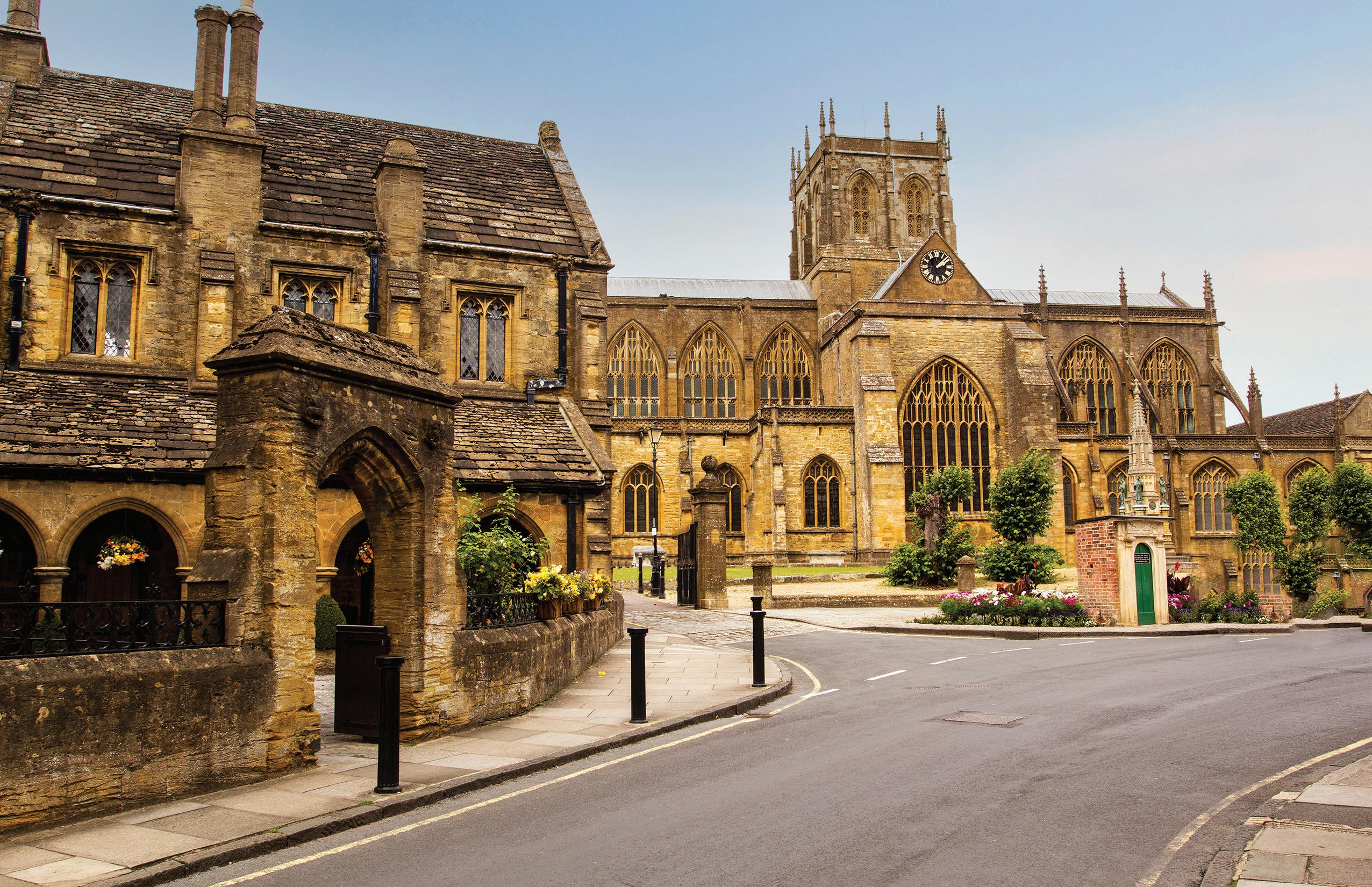
“Very well thought out tour with a good mixture of houses, beautiful gardens and interesting churches”
– ACE customer on the 2024 Dorset Country Houses & Churches tour with Charles Hind
Our Accommodation
We will stay at the three-star Lanes Hotel, located in a former rectory surrounded by lawns in the village of West Coker, and decorated in a comfortable contemporary style.
There are limited standard twin rooms, but we are also pleased to offer two-bedroomed apartments, with lounge/dining room, outside sitting area and full kitchen facilities, for twin/double use, at a supplement. Some of these apartments have double beds in both rooms; others have a double bed in one and twin beds in the other. Each room has access to separate washing facilities – a main bathroom and an en-suite shower room. Not all rooms at the hotel are accessible by lift. All have a shower over the bath (rather than separate shower cubicles); the baths do not have handrails and are deep, so care must be taken. Please contact the ACE office for more information.
FITNESS / PRACTICALITIES: A good level of fitness is required, as the tour features a significant amount of walking in and around houses and gardens. Participants must be prepared for uneven ground, steps, stone surfaces that can be slippery if wet and some mildly uphill terrain. In particular, care must be taken on the optional visit to the shell house at Sherborne, as it is necessary to step over an uneven row of stones on entry, and lighting is dim; the tour personnel will be on hand to point this out and assist. Sites do not always have handrails, lifts or frequent opportunities to sit down. Participants should be able to walk and stand without support for at least one hour, and meet ACE’s fitness criteria in our Booking Terms & Conditions. Please see the ‘Our Accommodation’ box for further details on the hotel.
The itinerary represents a guide to what we hope to offer, and some elements may change nearer the time. Many of the visits are arranged privately, and some may be subject to confirmation.
D ay 1 Tour assembles 1200 at the Lanes Hotel, West Coker, followed by approx 1230 at Yeovil Junction Station. Afternoon: Minterne House and St Andrew’s Church, Minterne. Evening: welcome and introductory lecture. Five nights at the Lanes Hotel, West Coker.
D ay 2 Morning: St Mary’s Church, Frampton and Poundbury. Afternoon: Wolfeton House (subject to confirmation) and St Mary’s Church, Charminster.
D ay 3 Morning: St Mary the Virgin Church, Puddletown and Athelhampton House &
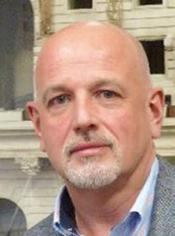
This tour will be led by Charles Hind , MA, FSA, Chief Curator and H J Heinz Curator of Drawings at the Royal Institute of British Architects. Charles is a Trustee of the Georgian Group and Deputy Chairman of the Lutyens Trust.
Gardens. Afternoon: St Nicholas’s Church, Moreton and Warmwell House.
D ay 4 Morning: Mapperton House. Afternoon: Forde Abbey.
D ay 5 Morning: Sherborne Castle. Afternoon: Sherborne Abbey, optional visit to Georgian shell house in grounds of Sherborne School, Leweston House and Chapel.
D ay 6 Morning: Purse Caundle Manor. Tour disperses approx 1140 at Yeovil Junction Station followed by approx 1215 at the hotel.
Cost of £1995 includes: accommodation based on sharing a twin or double bedded room, five breakfasts, three light lunches, five dinners with water & coffee, excursions & admissions, gratuities & all taxes.
Not included: travel insurance, double room for single use supplement £275, apartment room for twin/double use supplement £195 per person. TOUR CODE: DOCH25
September 1–6, 2025
Explore Scottish art from Sir Henry Raeburn to the Scottish Colourists and Glasgow Boys
Visit Dundee, home to the impressive waterfront V&A Dundee and fascinating McManus Gallery
Delve into less well-known sites, including the Dovecot Studios, a world renowned tapestry studio and landmark centre for contemporary art, craft and design
From a base in Edinburgh and Dundee, this tour focuses on the arts and crafts of Scotland, exploring both famous galleries and some less well-known sites.
2023 saw the highly anticipated opening of new galleries at the Scottish National Gallery, following an ambitious construction project to create a home for the world’s greatest collection of Scottish art. We look forward to viewing works by Sir Henry Raeburn, Sir Edwin Landseer, the Scottish Colourists and Anne Redpath, amongst many others, displayed in beautiful new spaces.
The Kirkcaldy Galleries are home to one of the best collections of Scottish art held anywhere, ranging from still lifes by much-loved Scottish Colourist S J Peploe to landscapes and seascapes by William McTaggart.
It is an exciting time to visit Dundee, where a 30 year, £1 billion masterplan began in 2001 with the ambition of transforming the city into a new cultural centre. A new branch of the Victoria & Albert Museum opened in the city in 2018, providing Scotland with its first dedicated design museum.
Japanese architect Kengo Kuma took his inspiration from the cliff edges of eastern Scotland; the resulting building provides a remarkable new landmark on the city’s waterfront. We will contemplate the role of museums in urban regeneration projects, and delve into the collections, which celebrate Scottish design across the fields of fashion, textiles and theatre.
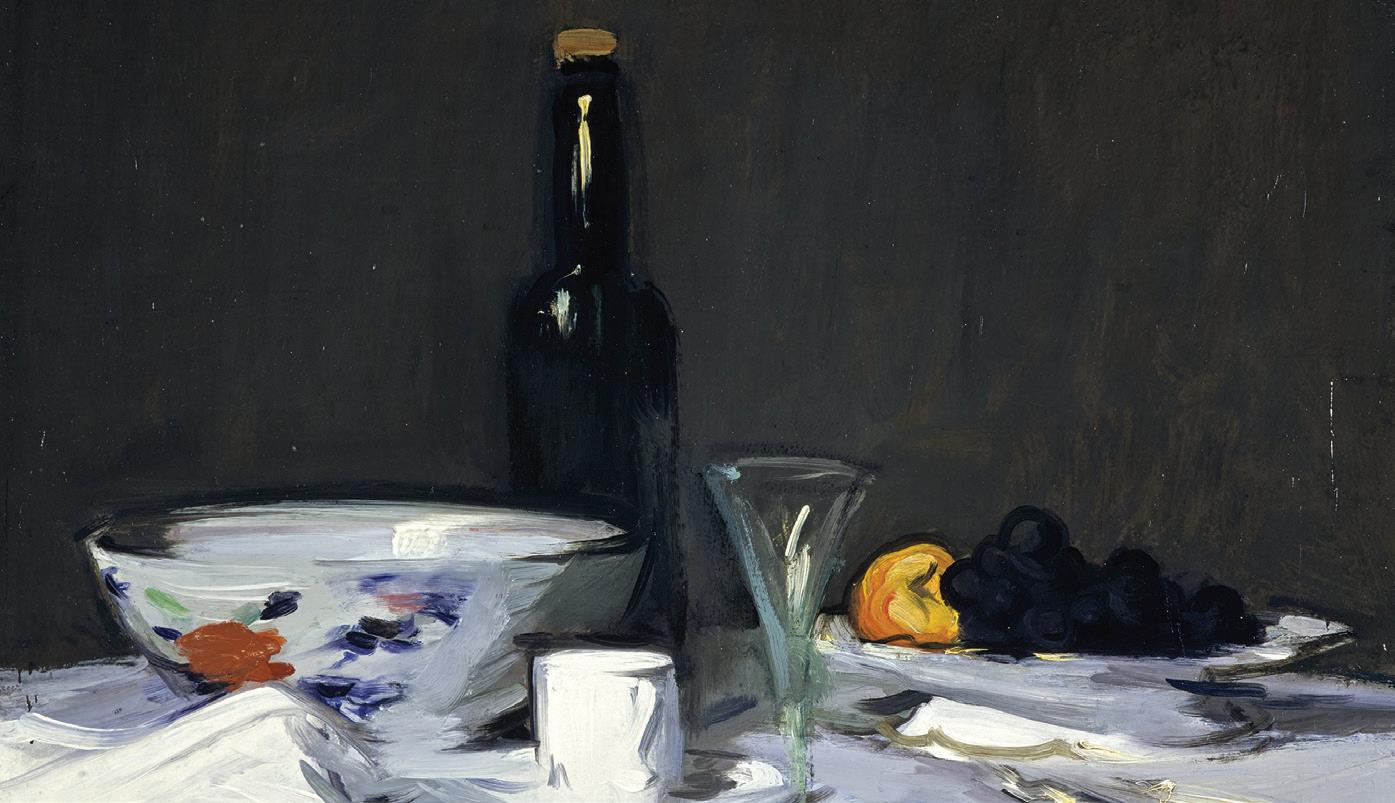
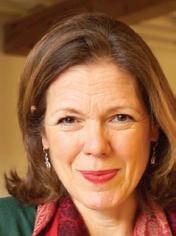
Our Tour Director is Sarah Burles , MA, who studied History of Art at Cambridge and gained a Masters at University College London before going on to a career in museum and gallery education, including at the Fitzwilliam Museum.
Irish-born artist Phoebe Anna Traquair (1852-1936) achieved international recognition as an accomplished illustrator, painter and embroiderer in the Arts & Crafts movement in Scotland. We will see the murals she created, and enjoy a special guest lecture from Professor Elizabeth Cumming (Edinburgh College of Art), a historian of Scottish art and design whose book on Traquair was published in 2022.
Our first three nights will be spent at the four-star Malmaison Edinburgh City, occupying historical townhouses in the heart of the city. We will then spend two nights at the four-star Malmaison Dundee, a smart boutique property ideally situated opposite the V&A Dundee.
Cost of £2425 includes: accommodation based on sharing a twin or double bedded room, five breakfasts, four dinners with water & coffee, excursions & admissions, gratuities & all taxes.
Not included: travel insurance, double room for single use supplement £595. TOUR CODE: SAED25
FITNESS / PRACTICALITIES: This tour requires a good level of fitness as we will be exploring Edinburgh and Dundee predominantly on foot, and the itinerary involves a significant amount of walking. Edinburgh is hilly and some terrain may be uneven or cobbled. Lifts are available at some sites but seats cannot be guaranteed. Participants should be prepared for navigating steps and stairs, and walking and standing for up to 2 hours. Some sites may be dimly lit. Please consult ACE’s fitness criteria in our Booking Terms and Conditions.
The itinerary represents a guide to what we hope to offer. Owing to their special nature, some visits may be subject to change or confirmation nearer the time. We cannot guarantee the availability of all artworks mentioned.
D ay 1 Tour assembles 1500 at the Malmaison Edinburgh City for three nights. Orientation walking tour of Edinburgh.
D ay 2 Morning lecture: The Art of Scotland followed by Scottish National Galleries (old and new galleries). Afternoon: Scottish National Portrait Gallery.
D ay 3 Morning guest lecture with Professor Elizabeth Cumming (Edinburgh College of Art, University of Edinburgh): The Celtic Revival & Phoebe Anna Traquair followed by Song School at St Mary’s Episcopal Cathedral and Mansfield Traquair Centre. Afternoon: Dovecot Studios, Museum of Scotland and Scottish Textiles Showcase. Free evening.
D ay 4 Transfer to Dundee via Kirkcaldy Galleries and Falkland Palace and Garden. Two nights at Malmaison Dundee.
Day 5 Morning visit to the McManus: Dundee’s Art Gallery & Museum. Afternoon: V&A Dundee.
D ay 6 Return to Edinburgh for Scottish National Galleries – Modern One and Two. Tour disperses approx 1230 at the gallery followed by approx 1300 at Edinburgh Waverley Station.
September 22–27, 2025
Delve into the histories of some of Norfolk’s beautiful country houses, with a special focus on those still in private ownership
We will be the privileged guests of the owners of properties including the romantic moated manor houses of Elsing Hall and Hindringham Hall
Discover fine examples of neoPalladian architecture, including Holkham Hall and Houghton Hall, and explore beautiful gardens and grounds
The sweeping landscapes and seascapes of this beautiful part of the country, with their endless vistas and wide skies, have been populated over the centuries by a series of remarkable country houses.
Houghton Hall was built in the 1720s to house Walpole’s great collection of Old Master paintings, later sold to Catherine the Great. The estate is home to the Cholmondeley family who have in recent years commissioned a number of pieces of contemporary sculpture by artists including James Turrell for the 18th century parkland designed by Charles Bridgeman.
A particular hidden treasure at Holkham Hall is its Library, “one of the most significant private collections in the world”, and we look forward to a special opportunity to view some items from the collection of rare books and manuscripts compiled by the Earls of Leicester.
Further exclusive visits include Hindringham Hall, a moated Tudor manor house with gardens described in The Guardian as amongst the “Best Secret Gardens in the UK”. Elsing Hall is a Grade I listed moated manor house built around 1740, and one of the few remaining houses in Norfolk boasting a traditional great hall open to the rafters.
We also hope to visit Wiveton Hall, known as the setting for the BBC series Normal for Norfolk. The building’s exterior provides an exquisite example of the style archetypal to Norfolk, with its
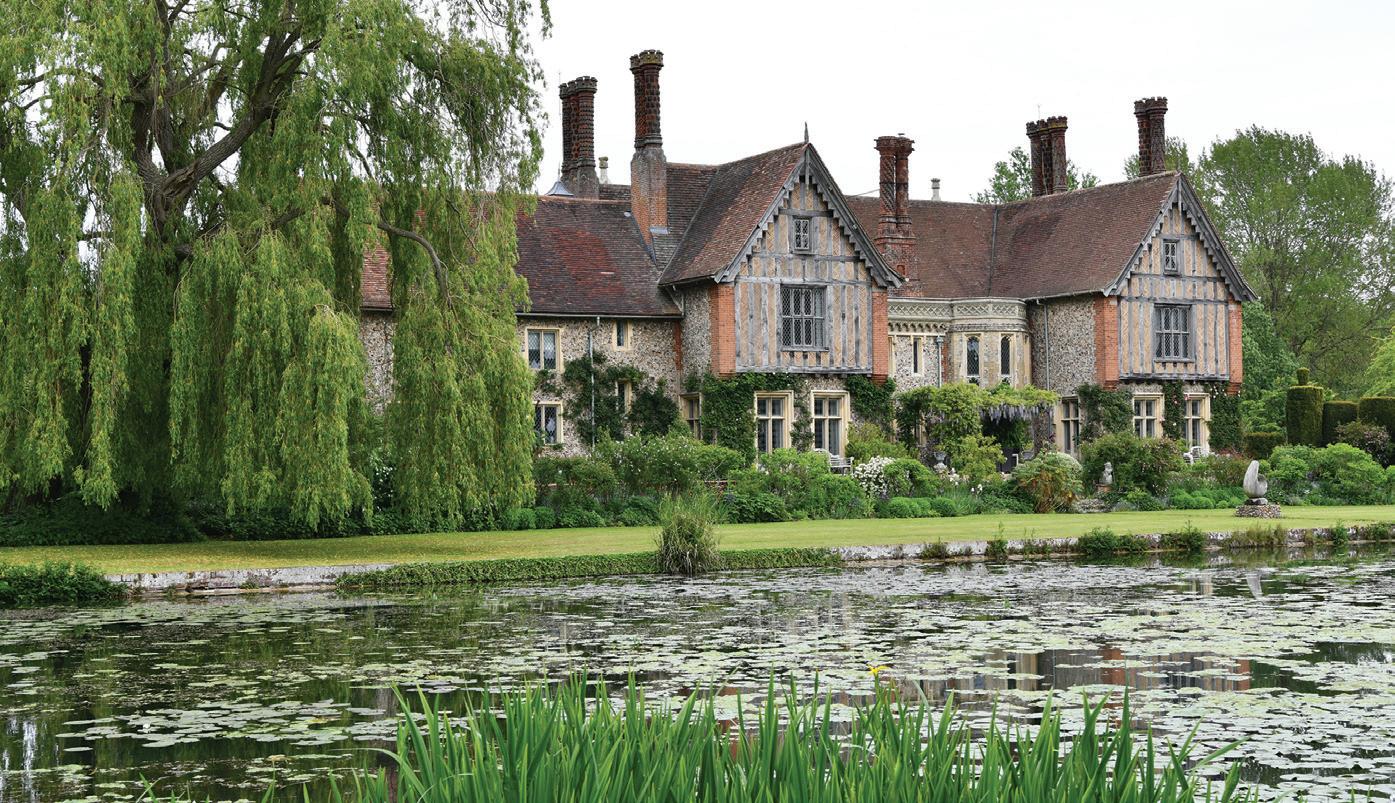
flint facing and Dutch gables, nodding to the county’s historical relationship with the Low Countries.
Other highlights include Mannington Hall, a moated medieval house not usually accessible to the public, and Voewood House, an exquisitely restored Grade II listed Arts & Crafts house designed to a rare ‘butterfly’ pattern. Sennowe Park was built in the Edwardian era for Thomas Albert Cook, grandson of travel and holiday pioneer Thomas Cook, and is still a family home to his descendants.
This tour will be based at the four-star Pheasant Hotel, a comfortable and relaxing country house hotel close to the Georgian market town of Holt in the heart of North Norfolk.
FITNESS / PRACTICALITIES: This tour will involve a significant amount of time spent walking and standing within historical properties and their grounds, and participants must be prepared to traverse uneven terrain, paving stones, gravel, steps and staircases (occasionally without handrails), and potentially slippery surfaces. Particular care should be taken at Wiveton where long grass can obscure uneven ground underfoot. Lifts are not generally available, and light levels are sometimes kept low to conserve the collections. Participants should meet ACE’s usual fitness criteria, as outlined in our Booking Terms & Conditions, and have a good overall level of fitness and mobility.
The itinerary represents a guide to what we hope to offer. Due to the special nature of the visits, some elements may be subject to change or confirmation nearer the time.
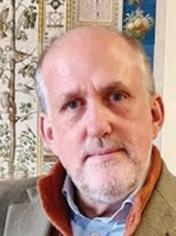
This tour will be led by Andrew Taylor, BD, MA, a lecturer and experienced tour leader with expertise in the architecture and art collections of the English country house. He studied at the University of St Andrews, UEA and Birkbeck, University of London, and also works as a rare book dealer, researcher and cataloguer at Voewood House in Norfolk.
D ay 1 Tour assembles 1315 at Norwich Station or 1430 at the Pheasant Hotel, Holt, for five nights. Afternoon: Voewood House. Evening introductory lecture.
D ay 2 Morning: Hindringham Hall. Afternoon: Holkham Hall.
D ay 3 Morning: Houghton Hall. Afternoon: Barningham Hall.
D ay 4 Morning: Mannington Hall. Afternoon: Wiveton Hall. Evening lecture.
D ay 5 Morning: Sennowe Park. Afternoon: Elsing Hall.
D ay 6 Tour disperses after breakfast at hotel or approx 1030 at Norwich Station.
Cost of £2295 includes: accommodation based on sharing a superior twin or double bedded room, five breakfasts, one lunch, five dinners with water & coffee, excursions & admissions, gratuities & all taxes.
Not included: travel insurance, classic double room for single use supplement £195.
TOUR CODE: CHNO25
October 6–11, 2025
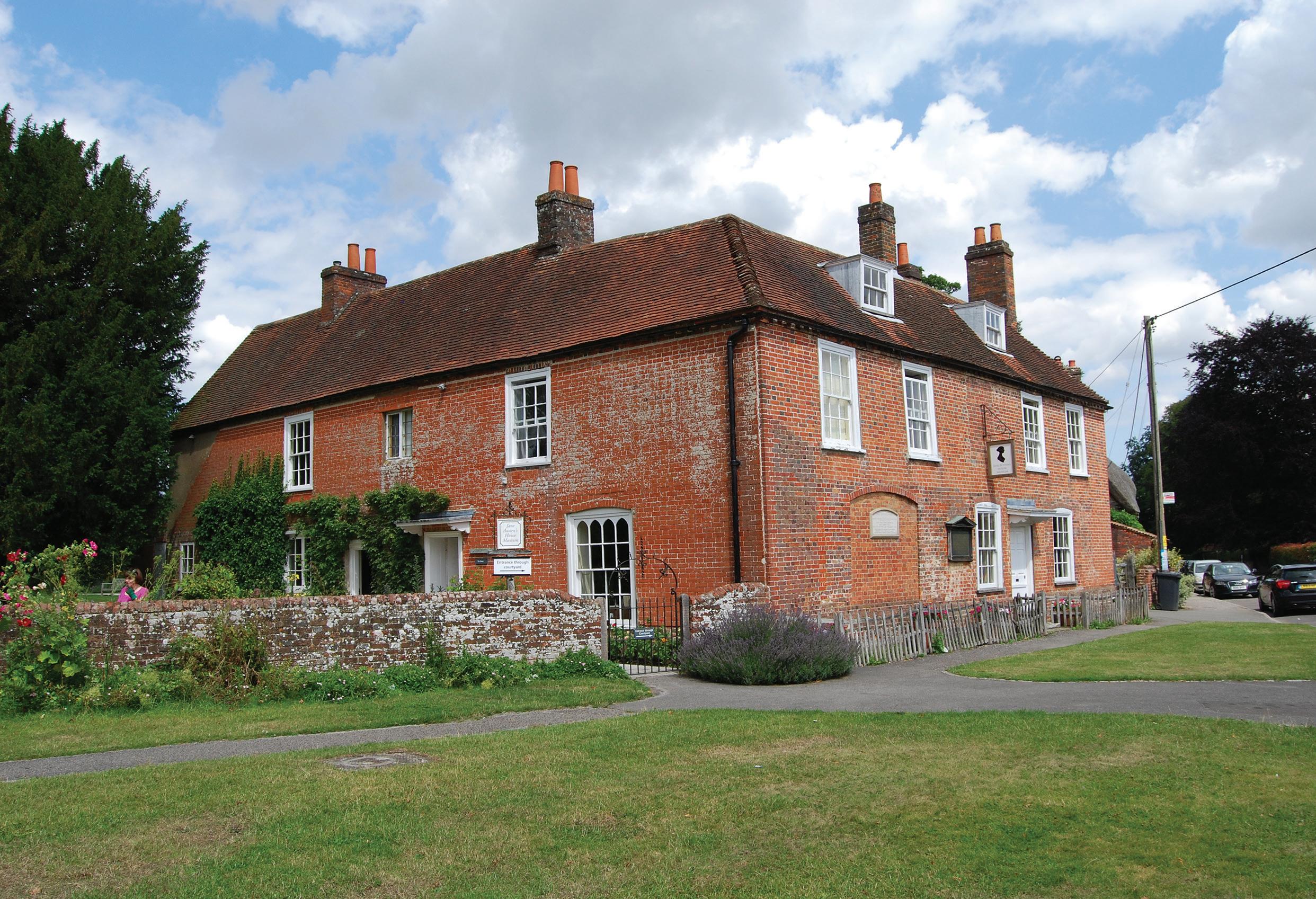
Follow in the footsteps of Jane Austen as we celebrate the 250th anniversary of her birth
Become immersed in Jane’s life and work through visits to key sites associated with her, from her birthplace in Steventon to Bath, Lyme Regis, Chawton and Winchester
Take in a special exhibition dedicated to Austen at The Arc, Winchester, and visit her resting place in the city’s beautiful cathedral
One of Britain’s most celebrated authors and historical figures, Jane Austen (1775-1817) is revered the world over for her much-loved novels, with their deftly observed characters and acute social commentary, and her work has rarely been out of print over the past two centuries. 2025 marks 250 years
since Jane’s birth, providing the perfect opportunity to make a literary pilgrimage to the sites most closely associated with her, as they commemorate this important occasion.
Our tour will be based in the beautiful historical town of Salisbury, from where we will span out across the surrounding
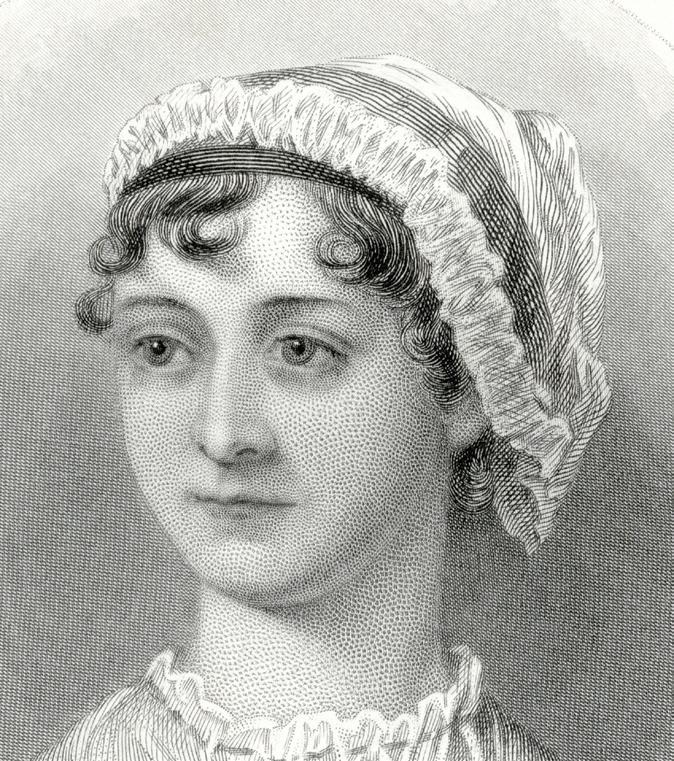
counties on a series of day excursions to visit sites connected to Jane’s life and work. She was born in the winter of 1775 in the small village of Steventon in Hampshire, where her parents had taken up residence at the rectory. Although the house was later demolished, we will visit the Parish Church of St Nicholas, where her father, two of her brothers and her nephew were rectors, and where Jane herself was baptised in the spring of 1776.
Between 1801 and 1806 Jane spent time living in Bath, then a newly built Georgian spa resort and centre of fashionable society. She is known to have visited Lyme Regis – the ‘Pearl of Dorset’ and a fashionable resort in the early 19th century – on two occasions. Part of her posthumously published novel Persuasion is set there, and within it she wrote, “a very strange stranger it must be who does not see charms in the immediate environs of Lyme, to make him wish to know it better”.
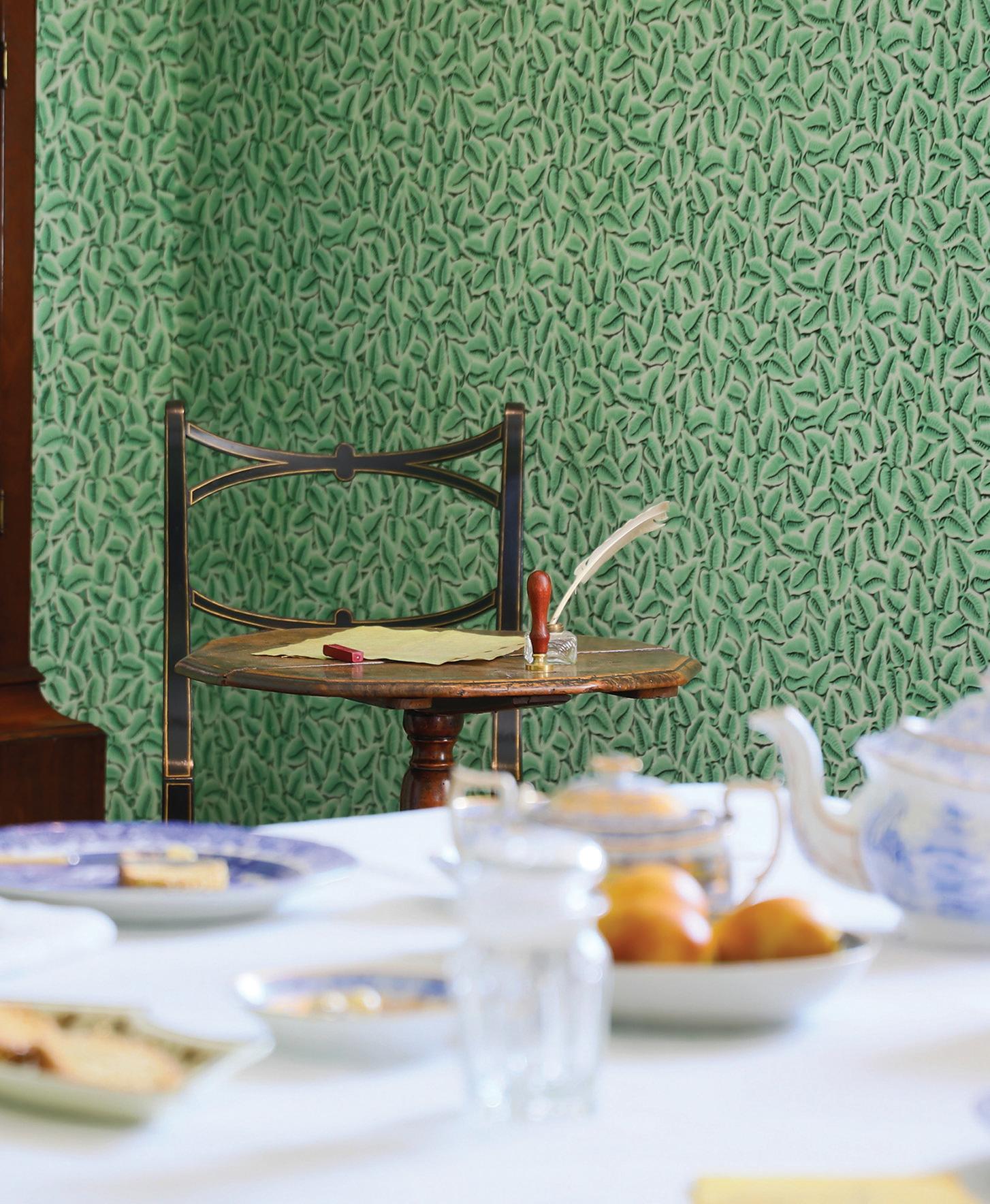
A highlight of our tour will be a day excursion to the charming village of Chawton in Hampshire, where Jane lived from 1809 until her final move to Winchester in 1817. The red-brick cottage, today a museum dedicated to the author, provided a productive setting in which Jane wrote many of her best-loved novels, including Pride and Prejudice and Emma. Her writing table – a small walnut tripod piece – is still at the house.
We also hope to make a visit to Chawton House, the ‘Great House’ referred to in Jane’s letters, and now a centre devoted to celebrating and preserving a unique collection of early women’s writing.
The tour also includes an opportunity to pay tribute to Jane Austen at her final resting place in Winchester Cathedral. Whilst in Winchester, we will visit The Arc, the city’s arts centre, which will be mounting a special celebratory exhibition focusing on the role of women in Jane’s work.
“Outstandingly
good lecturer”
– ACE customer on a previous tour led by Suzanne Fagence Cooper
Our tour will be based at the recently refurbished four-star Milford Hall Hotel, set in a Grade II listed Georgian mansion with a modern annexe, a short walk from the historical centre of Salisbury.
FITNESS / PRACTICALITIES: This tour requires a good level of fitness and mobility, as the itinerary features several walking tours as well as time spent standing at historical sites, where there are not always opportunities to sit down. Participants should be prepared for navigating uneven, cobbled ground, which can be slippery if wet, as well as steps, stairs and some inclines. In Bath, which is hilly, the pavements can be narrow and the streets busy with traffic, so care must be taken. There will be an opportunity to walk along The Cobb in Lyme Regis, where the ground is sloped and uneven – this is dependent upon sea and weather conditions, and participants are welcome to opt out of this part of the visit if wished. Our day excursions will involve some longer coach journeys, the longest taking approximately 2 hours to and from Lyme Regis.

This tour will be led by Suzanne Fagence Cooper, MA, PhD, a curator, historian and Arts Society accredited lecturer. Suzanne specialises in 19th century British art and history, and is the author of books including To See Clearly: Why Ruskin Matters (2019) and How We Might Live: At Home with Jane and William Morris (2022). She worked at the Victoria & Albert Museum for 12 years and has collaborated with many of Britain’s regional museum collections.
& JANE AUSTEN’S HOUSE / CC BY-SA 4.0 VIA WIKIMEDIA COMMONS
Please note the itinerary represents a guide to what we hope to offer, and some elements may be subject to change, reordering or confirmation nearer the time. Our itinerary may also be adjusted to accommodate special anniversary events or exhibitions once information on these is available. Should a particular visit transpire to not be possible, we will endeavour to replace it with another of equal historical interest.
D ay 1 Tour assembles 1400 at Milford Hall Hotel, Salisbury, for five nights. Afternoon visit to Mompesson House. Evening introductory lecture.
D ay 2 Excursion to Winchester for historical walking tour (including College Street, where Austen died) and visits to Winchester Cathedral and The Arc. Return via village of Steventon (Austen’s birthplace) for visit to St Nicholas’s Church.
D ay 3 Whole day excursion to Bath for exploration of Sydney Gardens, 4 Sydney Place (exterior) and visit to the Holburne Museum.
D ay 4 Whole day excursion to Lyme Regis for historical walking tour (including walk along The Cobb – weather permitting) and visit to Lyme Regis Museum. Free evening in Salisbury.
D ay 5 Whole day excursion to Chawton for visits to Jane Austen’s House and Chawton House.
D ay 6 Morning: concluding lecture. Tour disperses approx 1030 at the hotel.
Cost of £2195 includes: accommodation based on sharing a twin or double bedded room, five breakfasts, one light lunch, four dinners with water & coffee, excursions & admissions, gratuities & all taxes. Not included: travel insurance, double room for single use supplement £395. TOUR CODE: JAUS25
We are pleased to share an overview of our planned departures for 2025. To register your interest in a tour not yet on sale, we warmly invite you to visit our website or contact the ACE office on 01223 841055.
Please note that some tours and dates may be subject to change or confirmation, and we cannot guarantee that all the tours listed below will go ahead.
6–19 Secret Treasures of Egypt with a Nile Cruise
13–16 Winter at the Royal Shakespeare Company
19–3/2 A Journey through Vietnam: History, Art & Culture
24–30 Mozart Festival in Salzburg
27–31 Wildlife & Walking in Norfolk: Winter Tour
4–10 Venice: The Triumph of Light & Colour (first departure)
5–8 Wild & Ancient Somerset: Winter Tour
6–9 Cambridge College Chapels & Organs
10–17 Renaissance Florence: City of Wonders (first departure)
19–22 Bath Bachfest
24–3/3 Art Treasures of Naples: From the Romans to the Baroque
3–6 Art Treasures of Manchester (first departure)
3–7 Roman & Byzantine Ravenna (first departure)
3–10 Art on the Côte d’Azur (first departure)
10–15 Aquileia: City of Antiquity (first departure)
17–20 Art Treasures of Manchester (second departure)
17–21 Stained Glass in England: Style, Technique & Colour (first departure)
17–22 Art Treasures of Dresden: Porcelain & Paintings
19–26 Wildlife & Walking in Extremadura: Active Edition
20–24 Fenland Abbeys
21–27 Pompeii with Herculaneum (first departure)
25–1/4 Music & Opera in New York
1–6 Flemish Painting: From van Eyck to Rubens
1–8 Bavarian Baroque
1–13 Algeria: Encounters between Rome & North Africa
3–6 The Rights of Man: Rebellion & Dissent in East Anglia
3–10 Wildlife & Walking in the Alentejo & Algarve
7–12 Cornwall Calling: The Artists of Newlyn, Lamorna & St Ives
7–13 Art Treasures of Berlin: Historical Riches
8–13 Yorkshire: From Arts & Crafts to Modernism
11–17 Music & Art in Provence
11–18 Douro River Cruise on the Royal Barge (first departure)
12–22 Jordan: Kingdoms of the Desert
15–22 Wild & Ancient Crete: Relaxed Edition
17–22 Music & Opera in Berlin
22–29 Wild & Ancient Sardinia
26–10/5 Lycian Cruise (two week version)
28–2/5 Romney Marsh Churches
30–8/5 Great Art Collections of Philadelphia, Baltimore & Washington
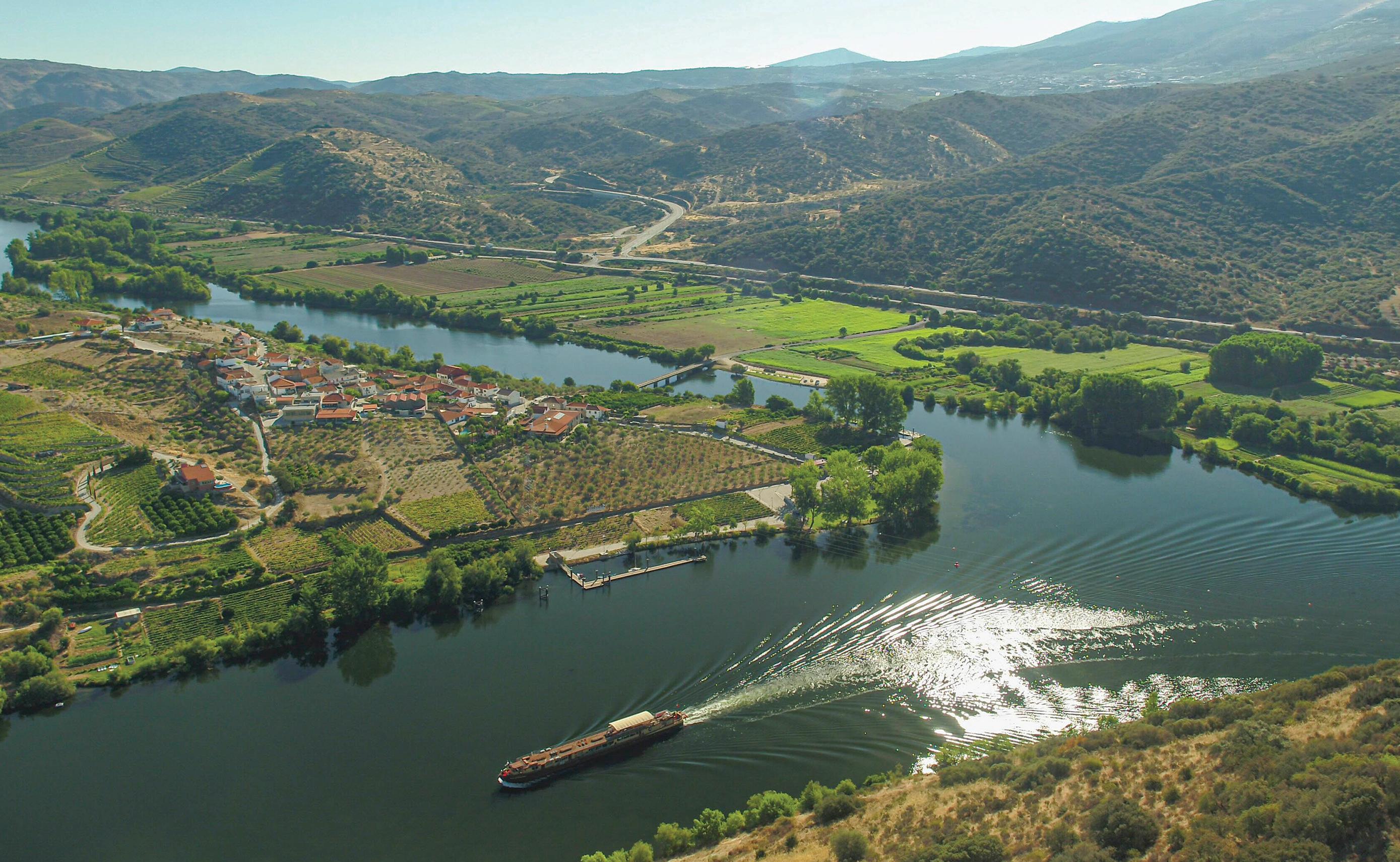
Japan in Springtime: History, Art & Landscape
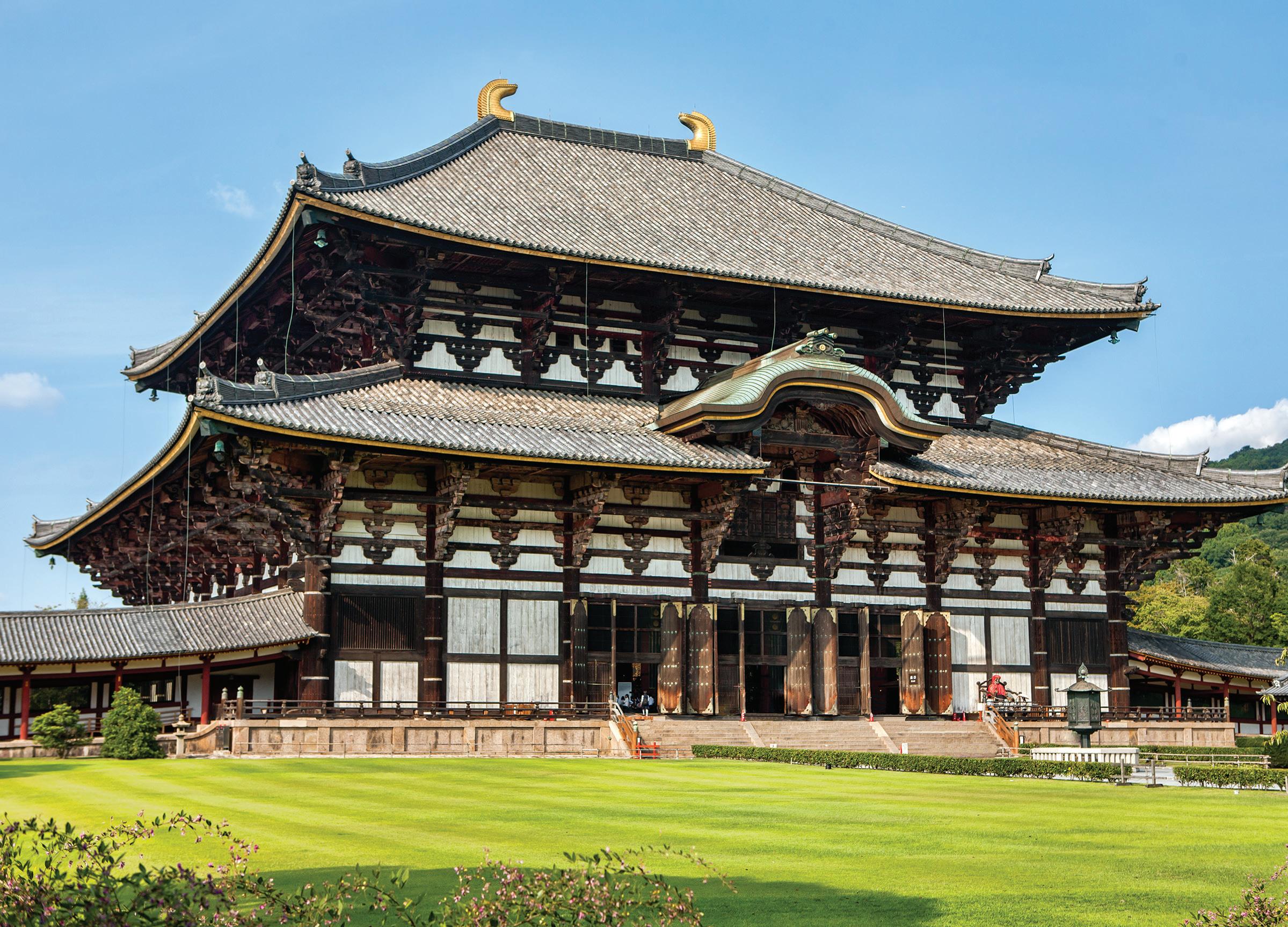
5–10 Vienna: City of the Arts
6–10 Great Bardfield & Beyond: MidCentury Art & Design in East Anglia
6–20 Wonders of Georgia: Archaeology, Culture & Landscape
8–14 Mahler Festival in Amsterdam (first departure)
13–19 Glasgow: Patrons, Art & Innovation
13–19 Mahler Festival in Amsterdam (second departure)
13–20 Wildlife & Walking on the Isles of Scilly
13–29 Japan in Springtime: History, Art & Landscape
15–21 Art Deco in Belgium
15–22 The Riviera di Levante
16–30 Kazakhstan: From the Silk Road to Sir Norman Foster
21–28 Wildlife & Walking in Extremadura: Relaxed Edition
21–31 Ancient Cyprus (first departure)
23–30 Shostakovich Festival in Leipzig: Anniversary Tour
TBC Houses & Gardens of Northern Ireland
TBC Prague Spring Festival
TBC Wagner’s Ring Cycle
2–6
Churches of Herefordshire & Shropshire (first departure)
2–9 Roussillon
3–8
Bauhaus: German Modern Art & Design
9–21 Northern Greece
12–18 Bach Festival in Leipzig
17–24 Wild & Ancient Islay & Jura
19–22 Wild & Ancient Somerset: Summer Tour
21–28 St Magnus Festival on Orkney
23–1/7 Hungary: Kingdom of the Magyars
24–30 East Neuk Festival
26–30 Peasmarsh Chamber Music Festival
26–2/7 Dingle & the Ring of Kerry
26–5/7 Danube River Cruise
30–4/7 Churches of Suffolk
30–4/7 Hadrian’s Wall
TBC Aldeburgh Festival (first departure)
TBC Aldeburgh Festival (second departure)
3–10 Roman & Medieval Burgundy: From Vercingetorix the Gaul to Charles the Bold
5–10 York Early Music Festival
7–11 Wildlife & Walking in Norfolk: Summer Tour
8–15 Wild & Ancient Orkney
8–18 Iceland: Forces of Nature
9–14 Verona Opera Festival
20–26 Ireland’s Ancient Heartland
21–24 Constable & Gainsborough in Suffolk
21–25 Houses & Gardens of Herefordshire & the Welsh Borders
21–26 Buxton International Festival (first departure)
24–30 The Hanseatic League: An Artistic Legacy
26–30 Hereford Three Choirs Festival (first departure)
30–3/8 Hereford Three Choirs Festival (second departure)
4–8 Art & Ceramics of the Industrial Revolution
4–8 Northumbria in the First Millennium (first departure)
6–9 Sussex Modernism: Artists & Writers on the Downs
7–11 International Gilbert & Sullivan Festival
11–15 Northumbria in the First Millennium (second departure)
11–16 Dorset Country Houses & Churches
11–16 William Morris in the Cotswolds: From the Pre-Raphaelites to Arts & Crafts
19–25 Art & Ceramics in Copenhagen & North Zealand
22–29 Schubert in Schwarzenberg
26–29 Churches of Norfolk: An Appointment with Angels
TBC Glyndebourne Summer Festival
TBC Sibelius Festival in Finland: 160th Anniversary Tour
1–6 Scottish Art & Craft in Edinburgh & Dundee
6–13 Lycian Cruise (one week version)
8–13 Aquileia: City of Antiquity (second departure)
8–13 Isle of Wight
12–21 The Dodecanese Islands
15–19 Churches of Herefordshire & Shropshire (second departure)
15–19 Roman & Byzantine Ravenna (second departure)
16–23 Wild & Ancient Crete: Active Edition
17–25 Prague & the Vltava Cruise: A Symphony of History & Music
22–27 Art & Landscape in Switzerland
22–27 Country Houses of North Norfolk
22–29 Art on the Côte d’Azur (second departure)
23–29 Turin: Art & Architecture of the Kingdom of Savoy
26–3/10 Douro River Cruise on the Royal Barge (second departure)
29–5/10 Art Treasures of Berlin: The Modern & Contemporary
30–9/10 Ancient Sicily
TBC Haydn in Eisenstadt: Herbstgold Festival
3–10 Wildlife & Walking in Albania
6–9 Music Festival at Hintlesham Hall
6–11 Jane Austen at 250
6–12 Pompeii with Herculaneum (second departure)
6–18 Bulgaria: Thracians, Ottomans & Painted Monasteries
7–15 Arts & Crafts of Poland: Zakopane & Kraków at the Turn of the 20th Century
10–21 Uzbekistan: Cities of the Silk Road
11–28 Chinese Civilisation
13–16 Connoisseur’s Cambridge
13–27 Havelis: Painted Mansions of Rajasthan
16–30 Mekong Cruise
17–27 Athens, Delphi & the Peloponnese
21–6/11 Japan in Autumn: History, Art & Landscape
27–31 Bruges
30–9/11 Ancient Cyprus (second departure)
TBC Ethiopia
TBC Glyndebourne (first departure)
TBC Glyndebourne (second departure)
TBC International Chopin Piano Competition
TBC Oxford International Song Festival
TBC Wexford Opera Festival
5–11 Everyday Life in Ancient Rome
6–12 Al-Andalus: Córdoba & Granada
7–12 Bath Mozartfest (first departure)
10–16 From Bologna to Parma: A Feast for the Soul & Senses
10–17 Renaissance Florence: City of Wonders (second departure)
11–17 Caravaggio in Italy
11–17 Venice: The Triumph of Light & Colour (second departure)
12–16 Bath Mozartfest (second departure)
17–21 Stained Glass in England: Style, Technique & Colour (second departure)
17–24 Art & Architecture of Puglia
17–24 Piero della Francesca
22–3/12 Morocco: Archaeology of the Western Kingdom
25–30 Vienna 1900
29–4/11 Hidden Athens
TBC Music & Opera in Vienna
TBC Oxford College Chapels & Organs
4–11 Ancient Treasures of Naples
TBC Ancient Egypt & the Nile: From Cairo to Aswan
TBC York Early Music Christmas Festival
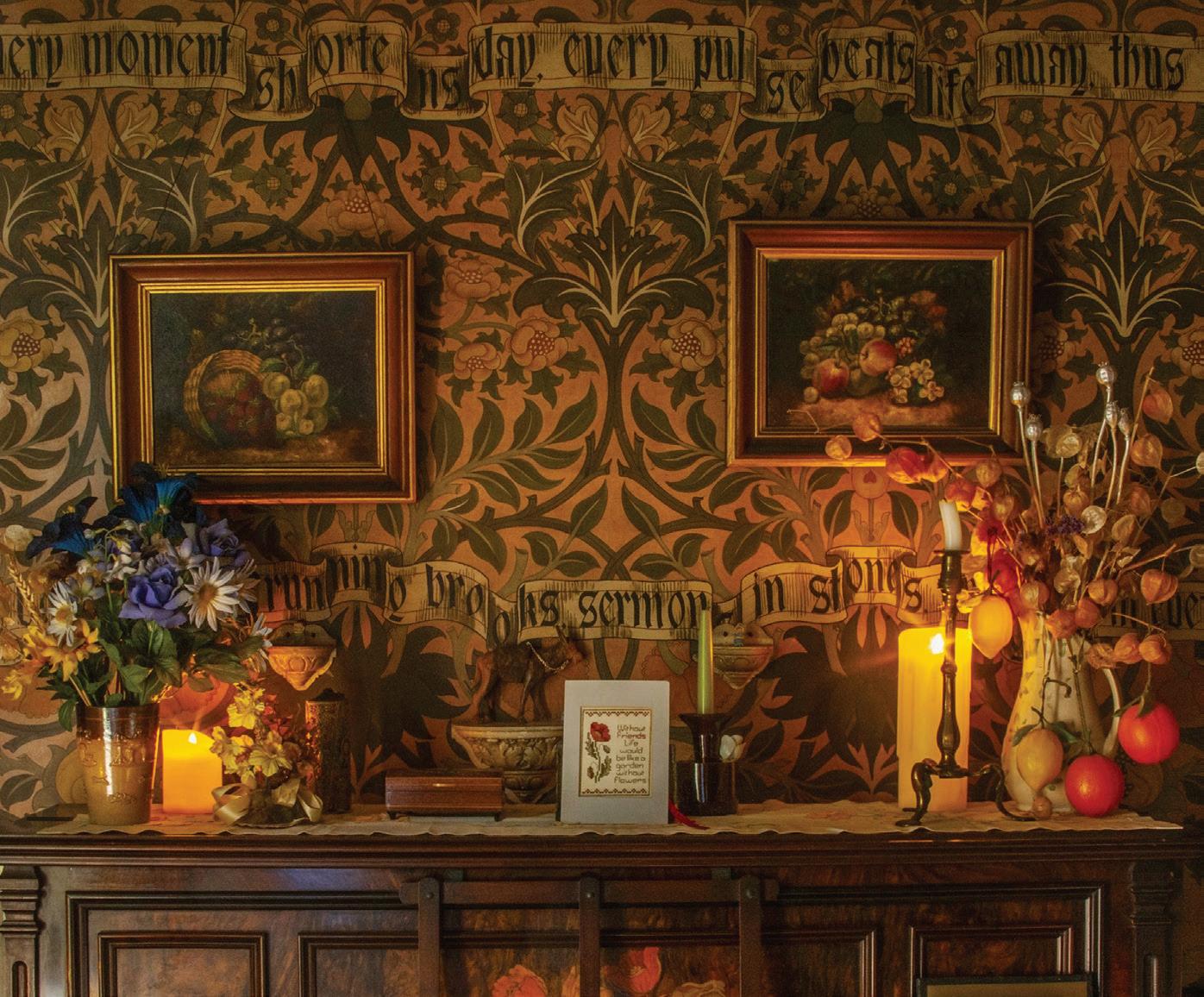
Wonders of Georgia: Archaeology, Culture & Landscape
Morocco: Archaeology of the Western Kingdom
Havelis: Painted Mansions of Rajasthan
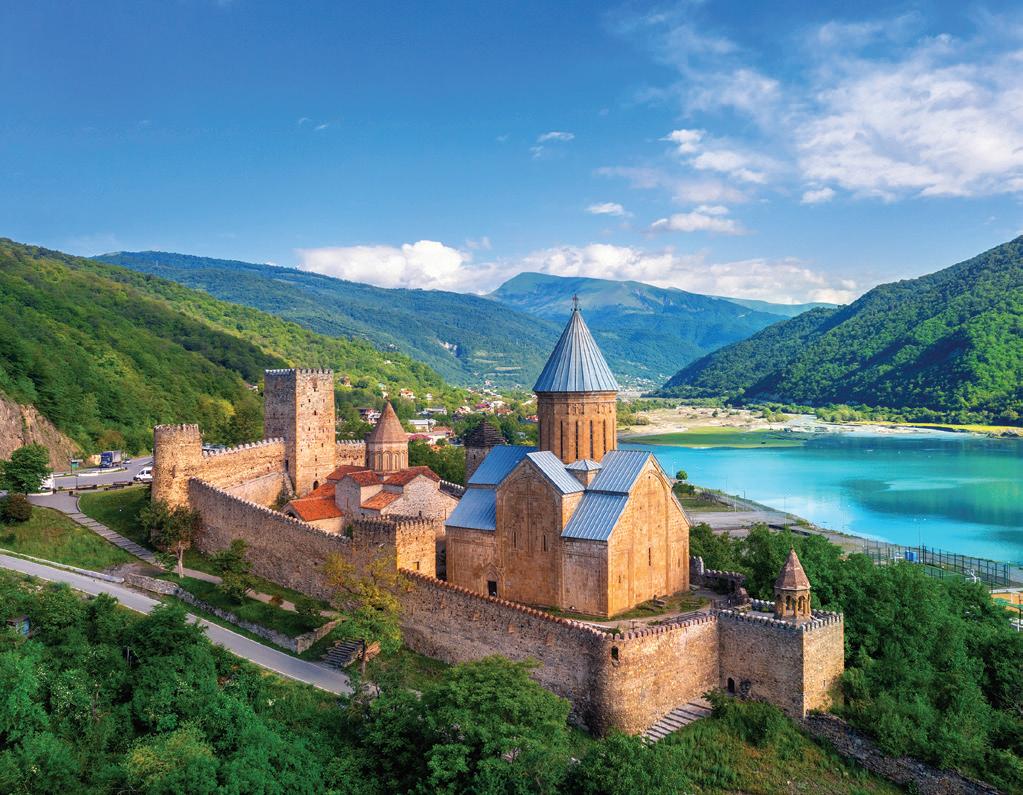
Arts & Crafts of Young Poland: Zakopane & Kraków at the Turn of the 20th Century
Al-Andalus: Córdoba & Granada
Caravaggio in Italy
Yorkshire: From Arts & Crafts to Modernism
Great Bardfield & Beyond: Mid-Century Art & Design in East Anglia
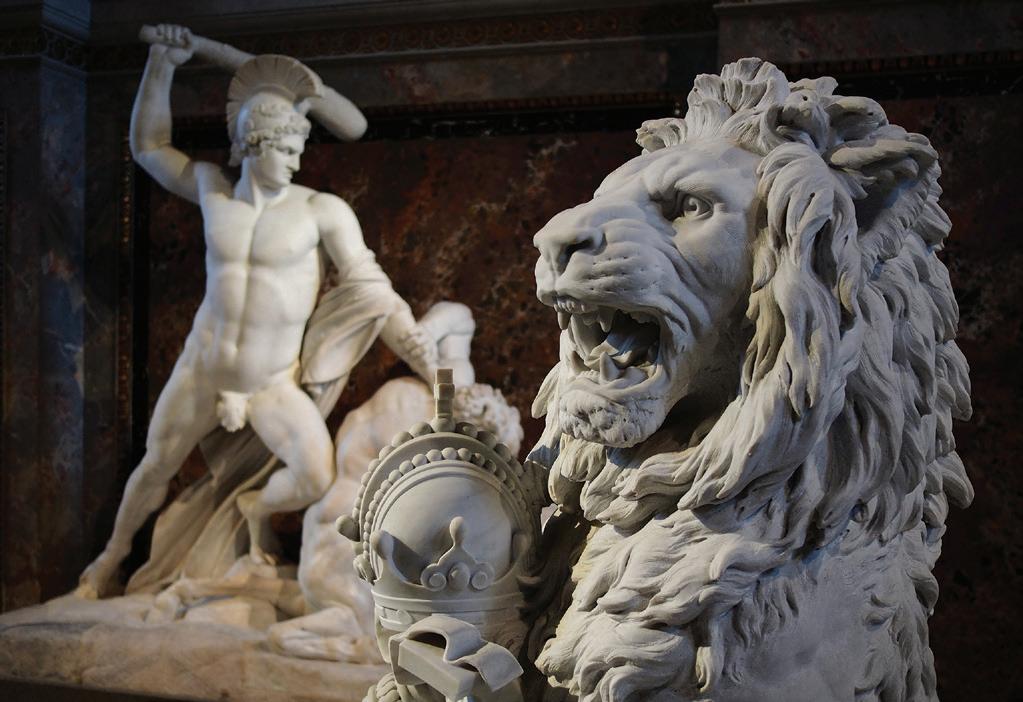
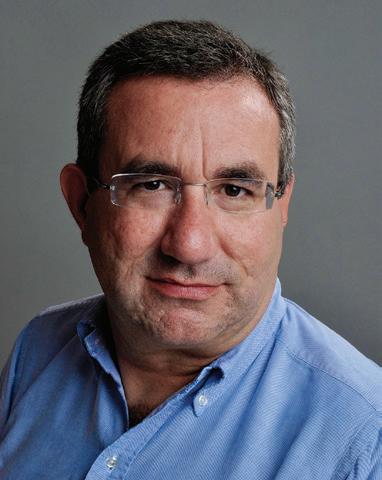
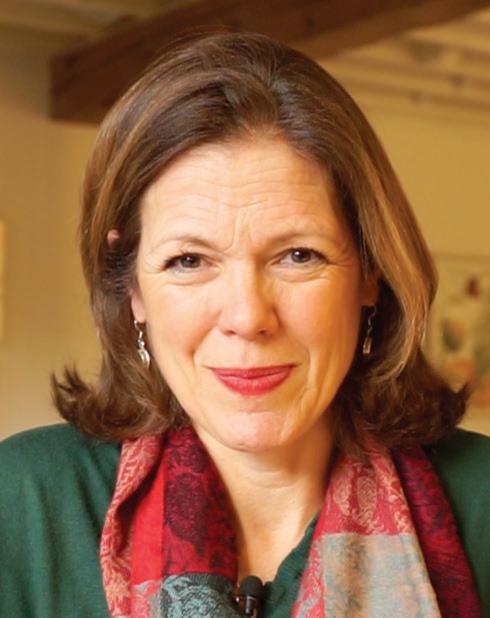

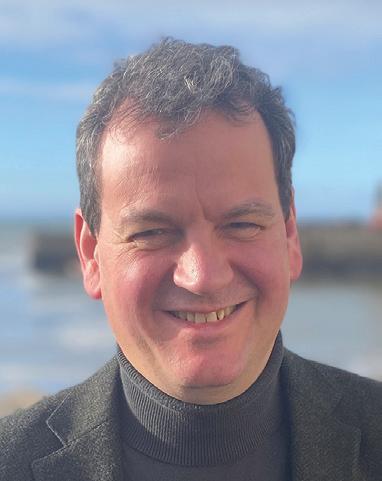
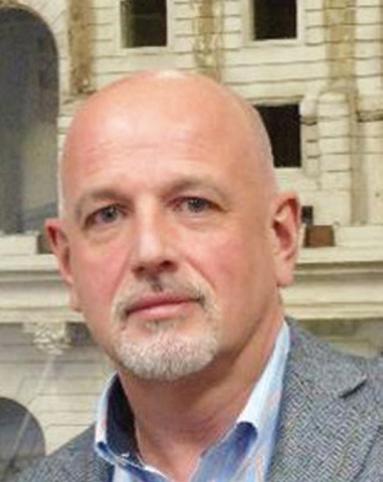


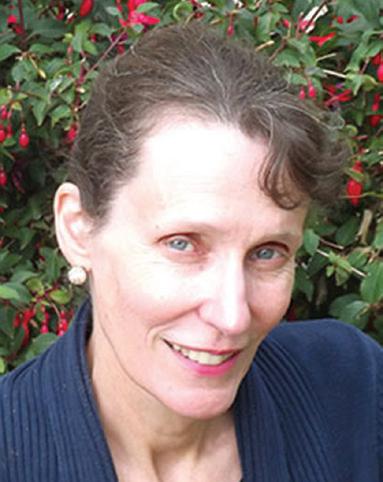
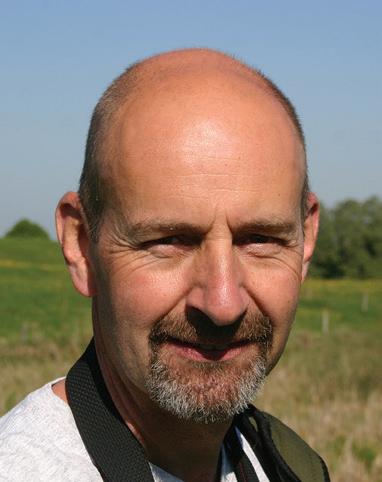

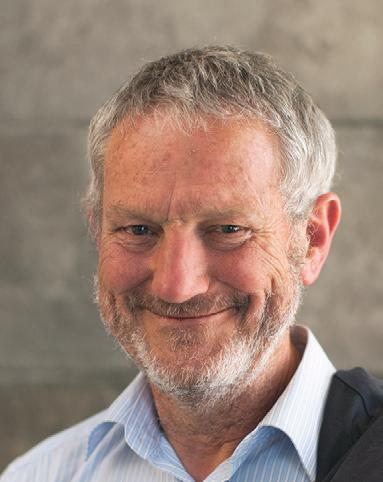
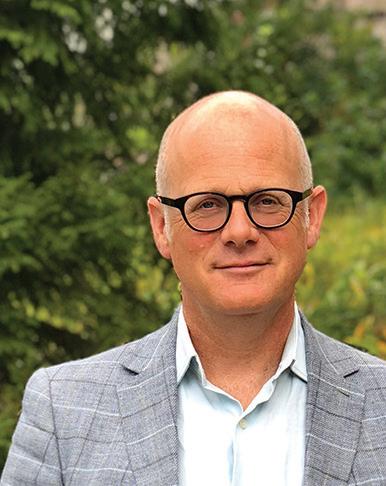



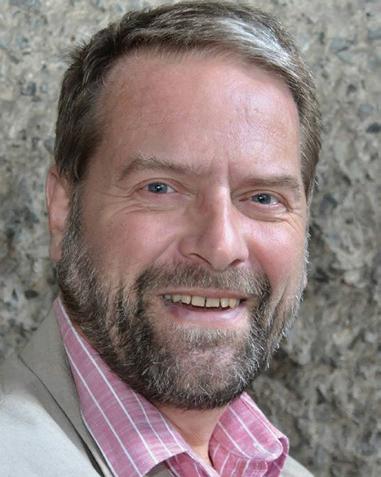
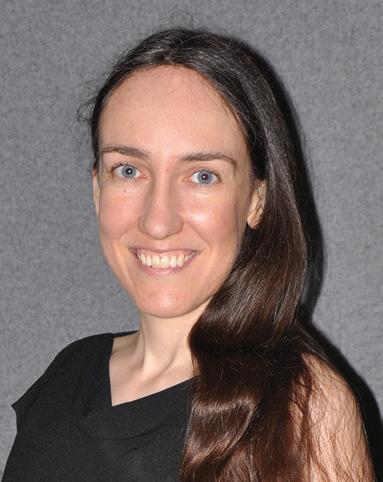
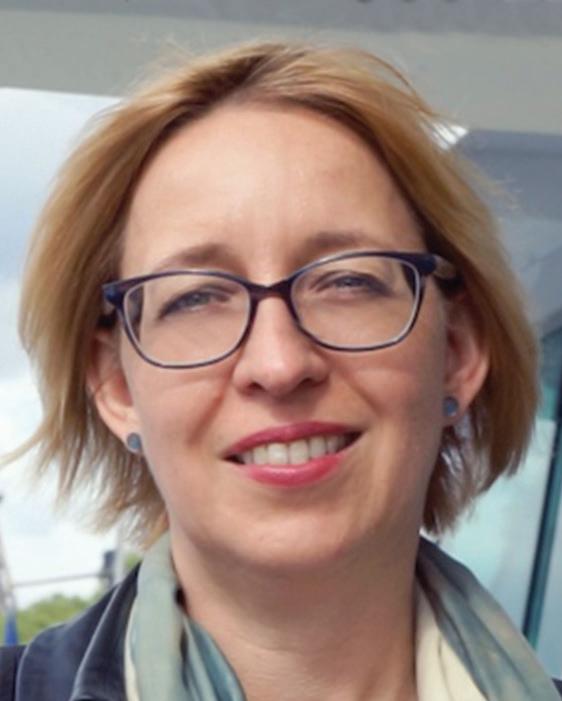
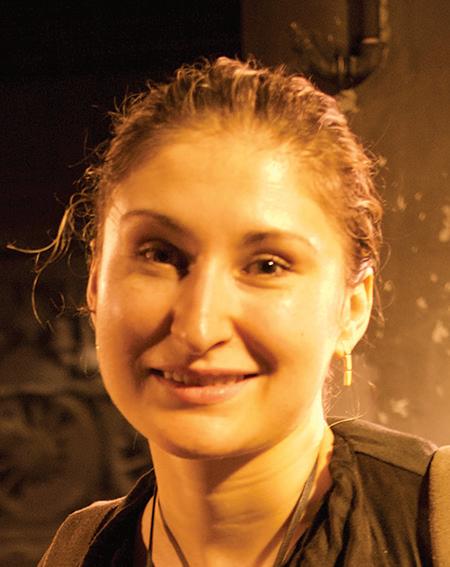
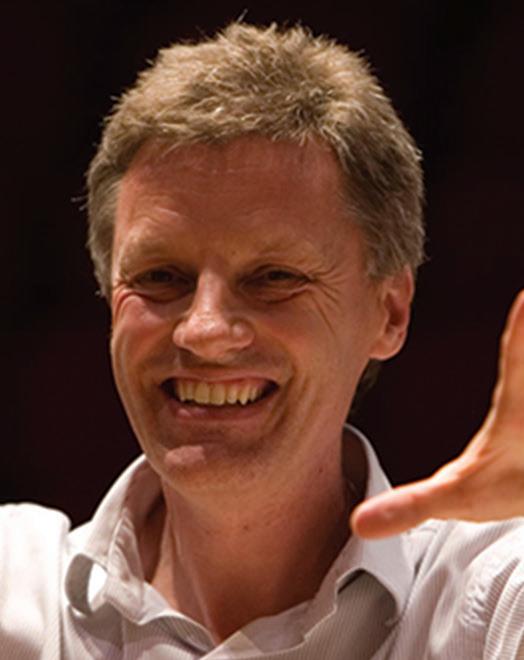
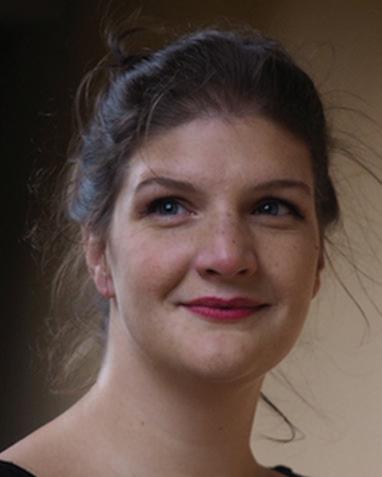


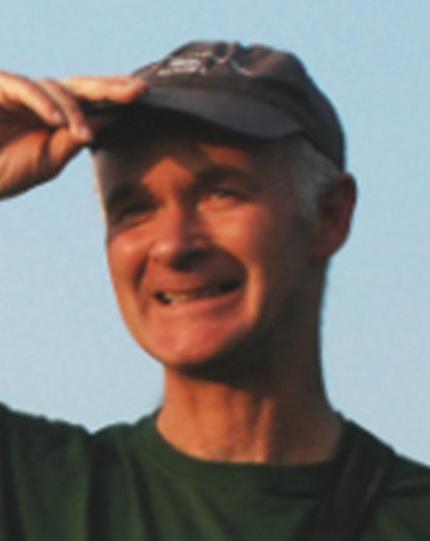
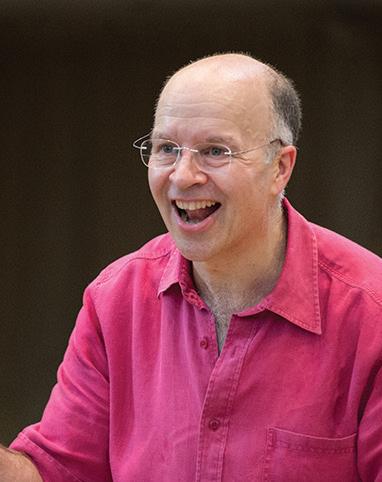
Chosen not only for their specialist knowledge, but equally for the clarity and enthusiasm with which they communicate and impart their passion to others, our expert Tour Directors are personally involved in the creation and planning of our tours. Below you will find Tour Directors leading departures in 2025. To view the full biographies of all our Tour Directors, please visit aceculturaltours.co.uk/tour-directors.
Tom Abbott
Tom Abbott, BA, MA, is an independent art and architectural historian associated with the Foundation of Prussian Palaces & Gardens. He is a proficient lecturer with extensive experience directing cultural tours across Europe.
Harriet Allen
Harriet Allen, PhD, is a geographer and Fellow, Tutor and Director of Studies at Girton College, Cambridge. She is Chair of the Biogeography Research Group of the Royal Geographical Society (with IGB) and a Coordinating Editor for Landscape Ecology.
John Binns
Rev John Binns, PhD, has held the posts of Visiting Professor at the Institute of Orthodox Christian Studies in Cambridge and Research Associate at SOAS, London. He has visited and written about Ethiopia many times.
Christopher Bourne
Christopher Bourne, BA, has been leading art and architectural history tours in the UK and Belgium for over 20 years. He has a particular interest in 19th and 20th century art and architecture, from Arts & Crafts to Art Deco.
Judy Brown
Judy Brown is a mezzo-soprano who trained at the Guildhall School of Music and Drama. A much soughtafter recitalist, opera and consort singer, she has worked with the Monteverdi Choir, Academy of Ancient Music and Scottish Opera.
David Burke
David Burke, PhD, is an historian of intelligence and international relations who has lectured at the University of Cambridge and Victoria University of Wellington, New Zealand. He has written several books.
Sarah Burles
Sarah Burles, MA, studied History of Art at Cambridge and gained a Masters at UCL before working at Cambridge museums including the Fitzwilliam. She is an accredited Arts Society lecturer and experienced tour leader.
Sandy Burnett
Sandy Burnett, MA, is a musician and former broadcaster on BBC Radio 3. He has conducted a complete cycle of Bach cantatas, is the author of the Idler Guide to Classical Music, and is a Hogwood Fellow of the Academy of Ancient Music.
Emilie Capulet
Emilie Capulet, MA, MMus, PhD, is an award-winning international concert pianist, lecturer and musicologist. She is BMus (Hons) Programme Leader at Trinity Laban Conservatoire, recipient of a Leverhulme Research Fellowship and Visiting Fellow at Keble College, Oxford.
Jessica Chiba
Jessica Chiba, PhD, is an Assistant Professor at the Shakespeare Institute, University of Birmingham and recipient of a Leverhulme Early Career Research Fellowship. Her research focuses on the intersection between Shakespeare and philosophy.
Ian Colvin
Ian Colvin trained as an historian at Oxford before becoming a researcher with the Cambridge School Classics Project. He established an archaeological excavation at Nokalakevi in Georgia and is an experienced tour leader.
Imogen Corrigan
Imogen Corrigan, BA, MPhil, FRHistS, FRSA, is an Arts Society-accredited lecturer specialising in medieval history, and a Fellow of the Royal Historical Society. She is the author of Stone on Stone: The Men Who Built the Cathedrals (2019).
Oliver Coulson
Oliver Coulson, MA, PhD, is an architectural historian who studied at the Courtauld Institute and Brown University. He has a special interest in medieval architecture and has lectured across Europe and the USA.
Suzanne Fagence Cooper
Suzanne Fagence Cooper, MA, PhD, is a curator and historian accredited with the Arts Society, who has worked with museums including the V&A and York Art Gallery. She is the author of books on John Ruskin and Jane and William Morris.
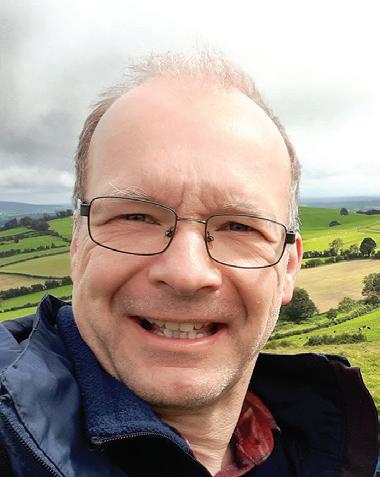
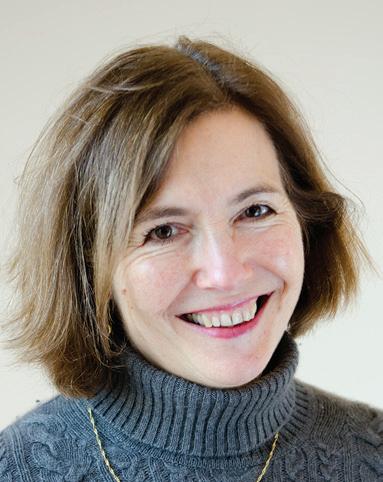

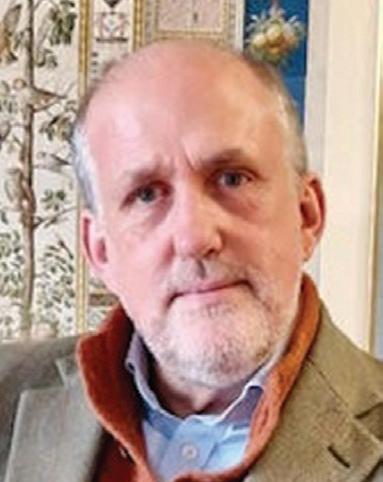
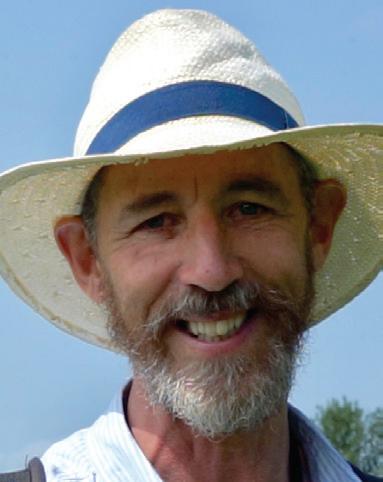

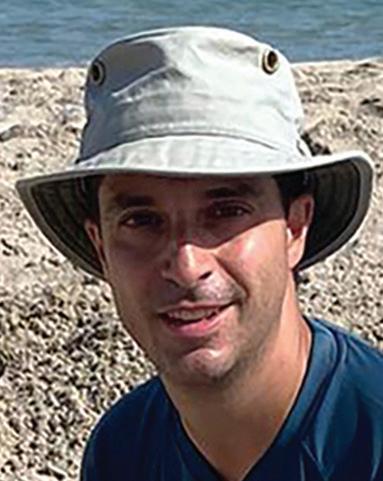
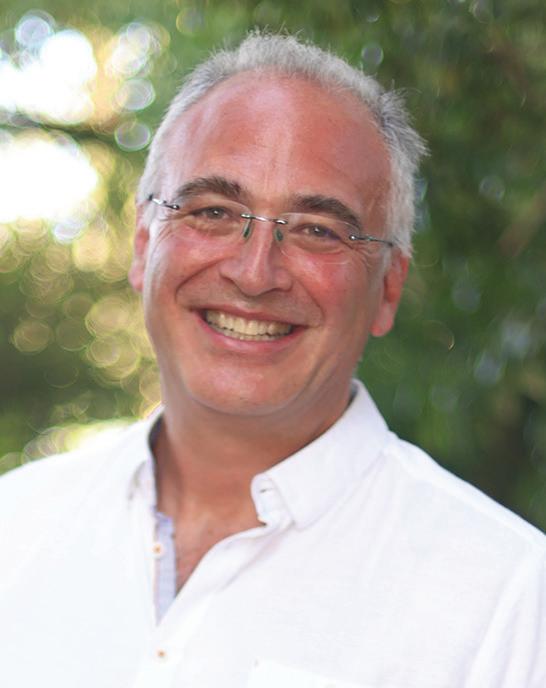
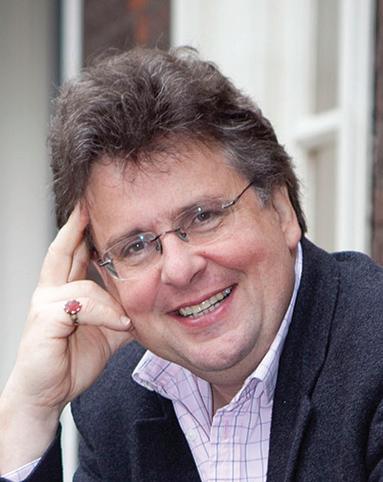



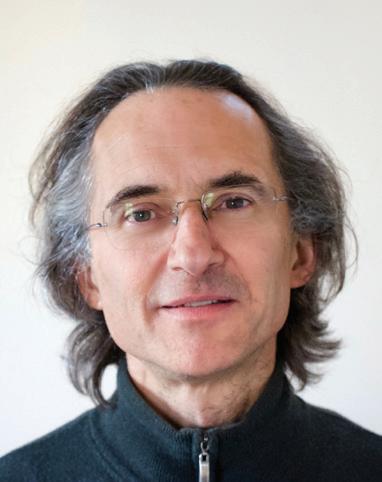
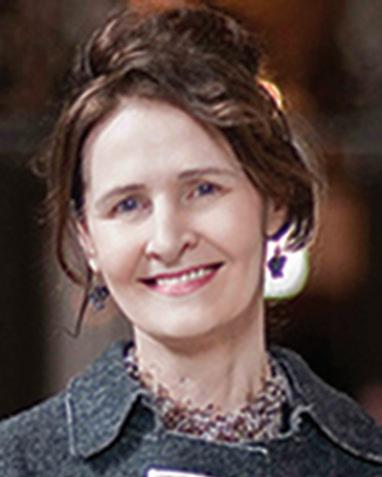

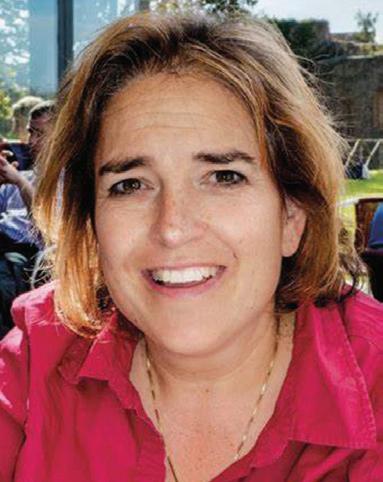

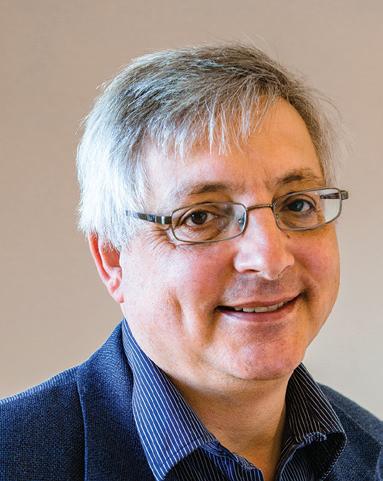
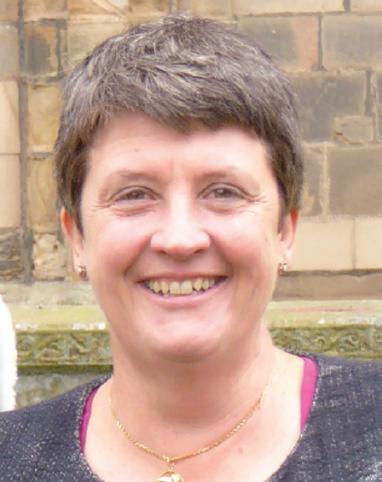
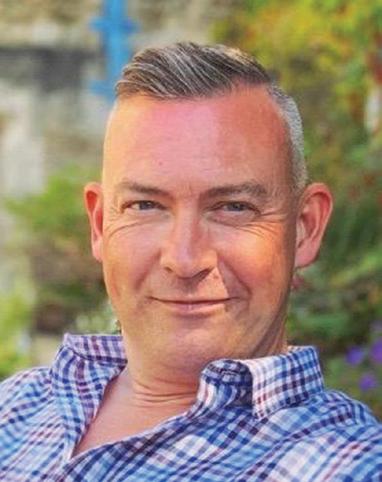

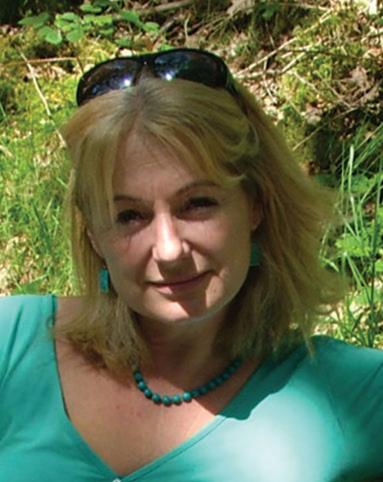
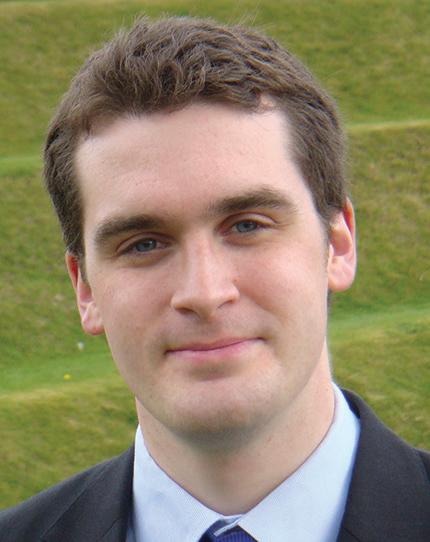
Hugh Doherty
Hugh Doherty, DPhil, is a Lecturer in Medieval History at the University of East Anglia in Norwich. He studied at King’s College London before gaining an MPhil at the University of Cambridge and a DPhil at the University of Oxford.
Michael Downes
Michael Downes, MA, MPhil, DPhil, is a conductor, writer and lecturer with a particular interest in opera. He is Director of Music at the University of St Andrews and was formerly Director of Music at Fitzwilliam College, Cambridge.
Peter Exley
Peter Exley, BSc, is an ecologist, ornithologist and conservationist who works for the RSPB. He has particular experience of interpreting landscapes from the perspective of ecology, history and community, and is an experienced tour leader.
Oliver Gerrish
Oliver Gerrish, MSt, is an architectural historian who studied at the University of Cambridge. He has written for Country Life , is a Trustee of Derbyshire Historic Buildings Trust and has led numerous tours to many of Britain’s finest historical buildings.
Julia Griffin
Julia Griffin, MA, PhD, is an art historian and curator specialising in 19th and 20th century British and Polish art, design and cultural history. She co-curated the award-winning 2021-22 exhibition on Young Poland at the William Morris Gallery, London.
Kevin Hand
Kevin Hand, MSc, MCIEEM, is a conservationist and environmental consultant with a special interest in birds, mammals and ecotourism. He chairs the Newmarket Chalk Streams Trust and is Reserve Biodiversity Surveyor for the RSPB.
Charles Hind
Charles Hind, MA, FSA, is an architectural historian and Chief Curator and H J Heinz Curator of Drawings at the Royal Institute of British Architects. He is a Trustee of the Georgian Group and Deputy Chairman of the Lutyens Trust.
Gillian Hovell
Gillian Hovell, BA (Hons), is a specialist in the ancient world and archaeology and an Arts Society accredited lecturer. She has excavated at internationally important sites and teaches courses as ‘The Muddy Archaeologist’.
Nick Jackson
Nick Jackson is an experienced tour leader who studied at the Institute of Archaeology, UCL before working as a field director excavating the ancient history of the Eastern Mediterranean in Turkey and the Near East.
Paul Jackson
Paul Jackson, MA, PhD, is the former Head of Music & Performing Arts and Director of Music & Performance at Anglia Ruskin University, Cambridge. He has had an extensive career as a conductor and solo and chamber music pianist.
Russell Keable
Russell Keable, BA, MMus, trained at the universities of Nottingham and London and studied conducting at the Royal College of Music. He currently teaches at the University of Surrey and is a composer, arranger, lecturer, broadcaster and performer.
Mike King
Mike King, BA, MA, is a museum professional with over 30 years’ experience, who works in Northern Ireland and Scotland. He is Heritage Manager for Newry, Mourne and Down District Council, and lectures, guides and publishes widely.
Alex Koller
Alex Koller, PhD, is an expert in art history and architecture, who has lived and studied in Vienna, Salzburg and Cambridge, gaining his PhD from Magdalene College, Cambridge. He is an accomplished linguist and experienced tour leader.
Marie-Anne Mancio
Marie-Anne Mancio, MPhil, DPhil, is an art historian and Arts Society accredited lecturer who originally trained as an artist before studying at the University of Sussex. She is an experienced tour leader and writer.
Eireann Marshall
Dr Eireann Marshall is a Research Associate and Associate Lecturer with the Open University, who has led many tours in Europe and North Africa. She was chosen as the Top History & Culture Guide for Wanderlust magazine’s 2019 World Guide Awards.
Steve Mastin
Steve Mastin, MA, PGCE, FHA, studied history and classics before working as a schoolteacher for 17 years. During this time he led many trips abroad and worked overseas training history teachers, including in Kazakhstan.
Elizabeth Morrell
Elizabeth Morrell, BA, is a sinologist and Chinese speaker who has been visiting China since 1976 when she studied modern Chinese literature at Fudan University in Shanghai. Elizabeth wrote one of the earliest guidebooks to China.
Niccolò Mugnai
Niccolò Mugnai, BA, MA, PhD, AFHEA, is a classical archaeologist specialising in the Greco-Roman world, with a particular focus on North Africa. He has published extensively and been involved in archaeological fieldwork at numerous sites.
Isaac Nugent
Isaac Nugent, MA, is an art historian who is currently pursuing an AHRCfunded PhD at the University of York. He has worked as a Curatorial Assistant and gallery educator at the National Gallery, and has written for the Burlington Magazine.
Alan Powers
Alan Powers, PhD, is one of the UK’s leading architectural historians and publishes widely on 20th century architecture and design. He was Professor at the University of Greenwich School and currently lectures at New York University in London.
Rita Roussos
Rita Roussos, PhD, studied ancient Greek and Latin at the University of California, Berkeley, and History of Art at the Courtauld Institute. She has worked on archaeological projects in the Peloponnese and taught at the American University of Athens.
Jamie Sewell
Jamie Sewell, PhD, has many years’ experience supervising excavations in Britain, Germany, Romania and Italy, and has written extensively on archaeology in Hellenistic Italy and the broader Mediterranean. He is an experienced tour leader.
Ashley Solomon
Ashley Solomon, FRAM, FRCM, is Chair and Head of Historical Performance at the Royal College of Music and Director of Baroque ensemble Florilegium. He was the first European to be awarded the coveted Hans Roth Prize, in 2008.
Andrew Spira
Andrew Spira, MA, is an expert in art history who has worked at Temple Gallery, the V&A and Christie’s Education. He has written several books and has been leading cultural tours across Europe for over 20 years.
Martin Symington
Martin Symington, BA, is a prolific travel journalist and an expert in Portugal, having been born and brought up in Oporto. He is the author of the Dorling Kindersley guidebook to Portugal and the AA Essential Guide to Portugal.
Moira Tait
Moira Tait, MA, FRAS, gained a Masters in the archaeology of Southeast Asia at SOAS and has excavated several sites in Thailand. She has been directing tours to France and Southeast Asia for over 25 years.
Andrew Taylor
Andrew Taylor, BD, MA, is a lecturer and experienced tour leader with expertise in the art and architecture of the English country house. He also works as a rare book dealer, researcher and cataloguer at Voewood House, Norfolk.
Lars Tharp
Lars Tharp, MA, FSA, Hon DLitt, is a Danish-born art historian, lecturer and ceramics specialist who appears on the BBC’s Antiques Roadshow. A former Director of the Foundling Museum, he has written books including Hogarth’s China
Lucrezia Walker
Lucrezia Walker, BA, MA, lectures at the National Gallery and teaches the London Art History Programme for the University of North Carolina. She previously lived, studied and worked in Italy, and has led many tours in Europe.
Diana Ward
Diana Ward, MSc, CBiol, MCIEEM, is an ecologist and wildlife specialist who has worked for many years on Sites of Special Scientific Interest and river restoration projects. She was Senior Editor of The Rivers & Wildlife Handbook.
Nicholas Wearne
Nicholas Wearne, BA (Hons), MPhil, is an organist, former ACE Bursary student and Senior Tutor at the Royal Birmingham Conservatoire. He has held positions as organist at New College, Oxford and St Martin-in-theFields, Trafalgar Square.
Mark Welch
Mark Welch, PhD, was a research scientist in the Department of Earth Sciences at the Natural History Museum, London for over 25 years. His PhD is in geosciences from Edinburgh University and he has taught Crystallography at Cambridge.
Richard Wigmore
Richard Wigmore, MA, AGSM, is a writer, broadcaster, lecturer and former professional singer specialising in Viennese classics, lieder and opera. He has lectured at Birkbeck, the Royal Academy of Music and Guildhall School of Music.
Andrew Wilson
Andrew Wilson, BA, BD, FSAScot, is a specialist in archaeology and ancient history with a particular interest in Roman frontier systems and Byzantine mosaics. He is a Fellow of the Society of Antiquaries of Scotland.
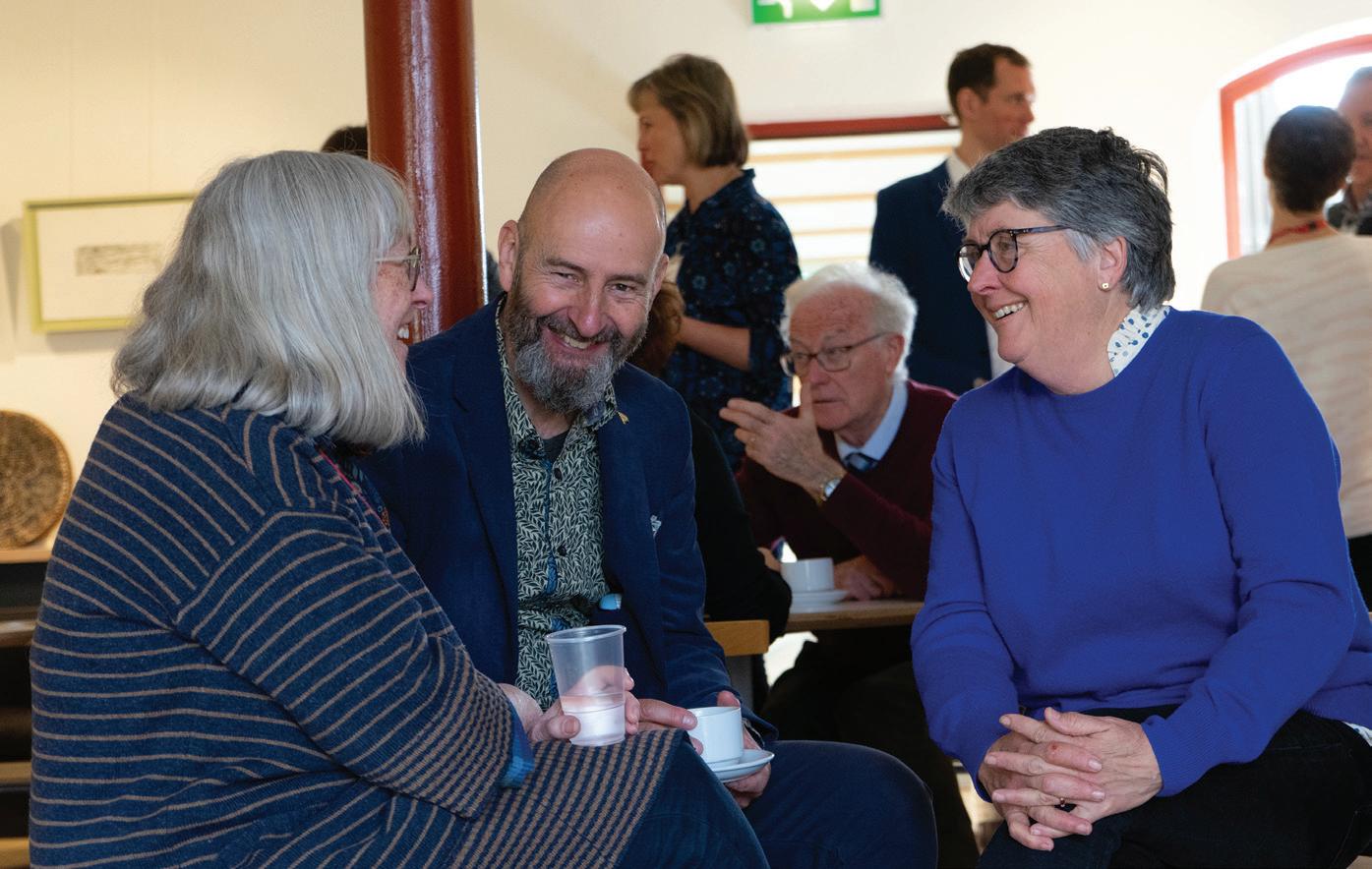
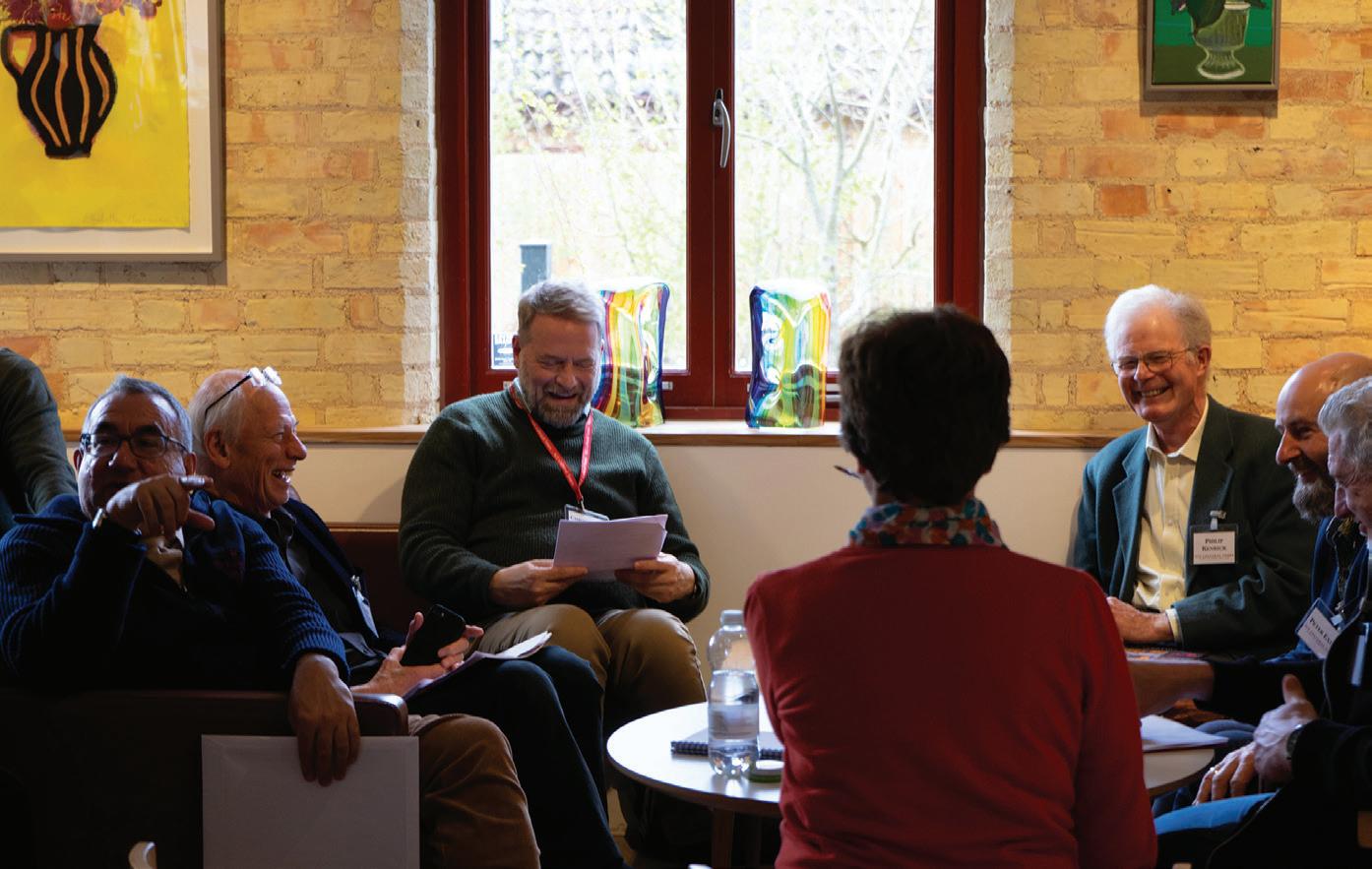
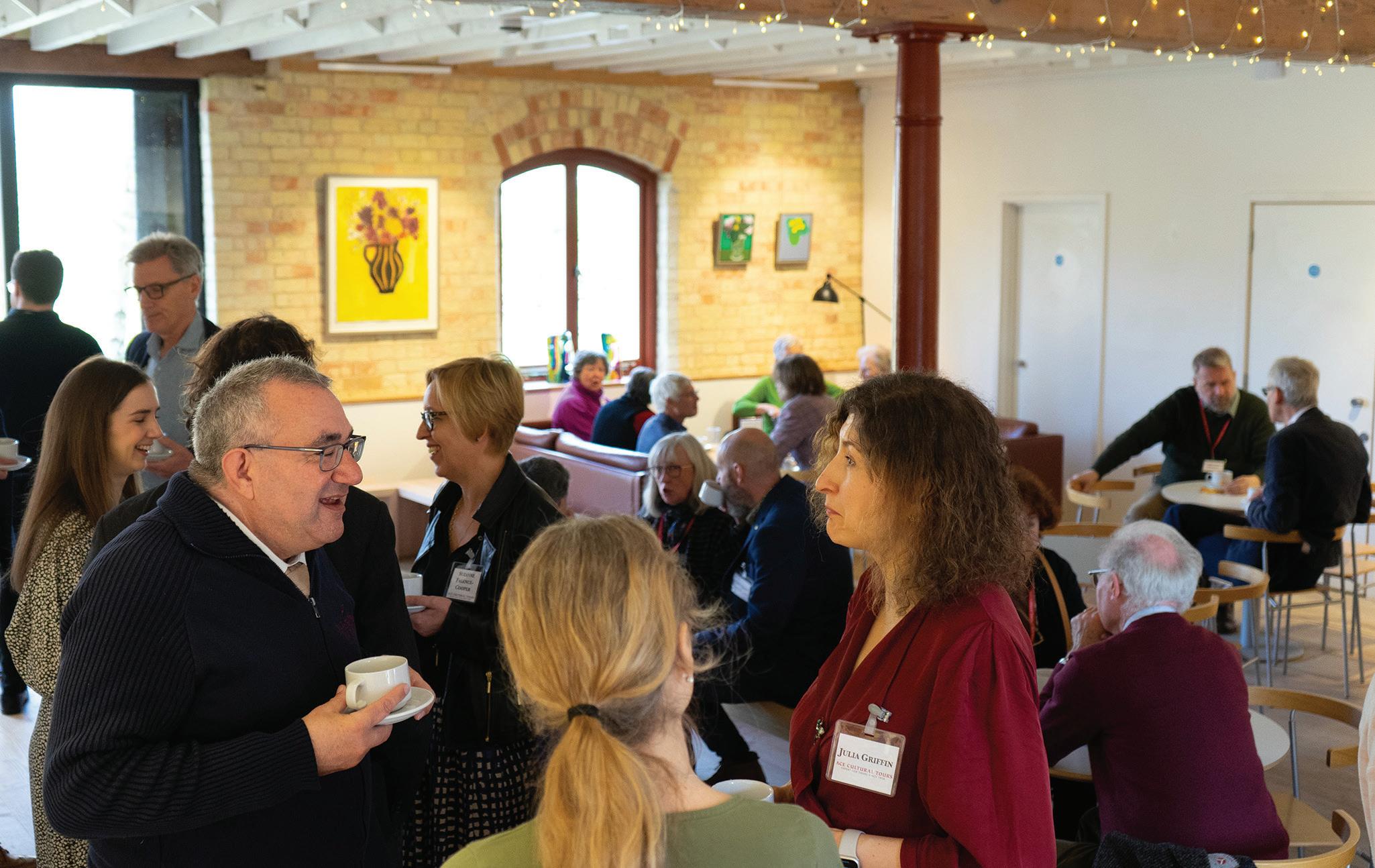
Please complete your booking online or by telephone.
Upon receipt of your deposit we will send you a confirmation/invoice with, in many cases, a reading list. An itinerary, practical information and travel documents (if applicable) will be sent to you approximately two weeks before the commencement of the tour.
ACE Cultural Tours meets or exceeds all the requirements of the Package Travel Regulations 2018, full details of which can be found online at: www.legislation.gov.uk/uksi/2018/634/contents/ made
In addition, flight-inclusive tours benefit from the financial protection afforded by our Air Travel Organiser’s License (ATOL 10204), whilst UK and other tours without flights are protected through the Association of Bonded Travel Organisers Trust Limited (ABTOT). We are also long-term members of the Association of Independent Tours Operators (AITO). For your own safety and financial security we do not recommend you book a holiday that does not benefit from the above protection.
The Package Travel Regulations 2018 together with the following booking information and our promotional material form the basis of your contract with ACE Cultural Tours. We have tried to keep this as concise and simple as possible, so please read all the following paragraphs to make sure you understand and are happy with the terms of your booking.
If you are booking 10 weeks or more before departure, the following deposits are payable at the time of booking:
£300 per person for UK tours. £400 per person for all European tours. £550 per person for Worldwide tours. £500 per person for all cruises.*
The balance must be received by us not less than 10 weeks prior to departure. This date will be shown on the confirmation invoice. We do send an email reminder but ask that you also make a note of the date in your diary.
If you are booking less than 10 weeks before departure, full payment for all tours must be made at the time of booking.
*In addition to the deposit at the time of booking all cruises require a further payment of £500 six months prior to sailing.
Tour prices are confirmed at the time of booking and thereafter will not be subject to any surcharge. We have forward purchase of currency and other precautions in order to guarantee your holiday is not affected by fluctuations in fuel or currency rates. In the event of extraordinary circumstances making the tour unviable we would offer you a full refund or credit note or an alternative tour.
You may cancel your booking at any time before departure. Notice of cancellation must be in writing and because we incur costs from the time we confirm your booking, the following charges will apply (for which we suggest you purchase appropriate insurance):
Period before departure within which written notification of cancellation is received by us Cancellation charge
70 days or more Deposit only
69-29 days 60% of total booking value
28-15 days 90% of total booking value
14 days or less 100% of total booking value
Please note that if you are personally prevented from travelling as a result of COVID-19 our normal cancellation charges will apply. For this reason we highly recommend that you take out travel insurance at the time of booking that specifically includes cover in the event that you are personally unable to travel. In addition you should have insurance to cover additional accommodation/transport/repatriation costs incurred due to local/national quarantine requirements.
We reserve the right to cancel your booking if there are insufficient bookings on your tour (this will depend on tour type and destination) or for other unforeseen operational reasons. In such an event, we will provide you with at least 70 days’ notice of cancellation and provide you with a full refund.
Very occasionally, due to extraordinary circumstances in the immediate vicinity of the destination, it may be necessary to cancel the tour with less than 70 days’ notice, in which case we will likewise provide you with a full refund.
Note that in either situation we cannot reimburse any incidental expenses you may have incurred (for example, train fares, additional accommodation or connecting flights). If you are buying your own flights, please liaise with the office before committing to significant expenditure.
We do our utmost to ensure that all the arrangements and visits are as described. However, it is in the nature of travel that changes are sometimes inevitable, although most of these will be minor in nature. In the event that a particular visit is not possible, we will aim to replace it with another of equal interest. If we have to make more significant changes to the itinerary in advance of departure, we will provide you with a choice of a refund, credit note or an alternative itinerary.
Accommodation in hotels is in twin/double bedded rooms, the majority of which have private bath/shower and toilet.
On cruise ships, accommodation is in cabins with shower and toilet only.
Single rooms: As a general rule, we aim to provide our solo travellers with double/twin rooms for sole use. However, this is not possible on all tour departures, and occasionally, despite a supplement being payable, only single rooms may be available, and such accommodation may not meet exactly the same standard as double/ twin accommodation or be located in the same area of the hotel. ACE Cultural Tours very much welcomes single travellers and we make no profit from single room supplements. The costs are simply down to the economics of running a hotel. Porterage is included on overseas tours where available.
Specific instructions relating to the departure and travel arrangements will be sent with your air and/or other travel tickets approximately two weeks before departure. It is essential that you check your tickets carefully immediately upon receipt to ensure you have the correct flight times. Occasionally carriers will make late changes to departure times but we will contact you as soon as possible if this occurs.
We will always aim to provide you with the name of your likely airline and flight times when you make a booking. However, flight schedules are set by the airlines and outside our control. We therefore reserve the right to change the actual carrier and flight times for your tour.
In accordance with the regulations, we are required to bring your attention to the Community List of air carriers subject to an operating ban within the UK & EU: https://transport.ec.europa.eu/transport-themes/ eu-air-safety-list_en
& SAFETY
We operate a safety audit system and work hard with our suppliers to ensure the safety and comfort of our travellers. However, please note that some of the destinations to which we travel have lower requirements and standards than those of the UK. It is therefore essential that you follow any instructions and guidance provided by your tour manager or director.
The majority of ACE Cultural Tours are active in nature and, to make the most of our time in a destination and provide excellent value for money, they are busy – there are often several visits included each day. As such, our tours require a certain minimum level of mobility, physical and mental fitness, mobility and stamina. Many visits will involve navigating several steps, uneven ground, steep ascents and descents, and could involve embarking and disembarking aircraft, coaches, trains and cruise vessels. Plenty of walking, punctuated by lengthy periods of standing, is the norm, and some tours may involve long coach journeys. It is essential that all customers are sufficiently fit and able enough to fully participate. Furthermore, every tour comprises a group of guests. We
cannot allow the entire group to be negatively impacted by one participant, either holding up the pace we reasonably need to maintain or disproportionately requiring the attention and support of the tour staff.
We carefully consider the intensity, fitness and other requirements of each itinerary and describe them on the tour pages of our brochures and website. Please study these descriptions closely. When you call to book, we will reiterate those requirements and ask you to confirm that all group members are indeed fit enough and otherwise able to meet the criteria. It is your responsibility to answer fully and honestly. If it transpires that you are not able to keep pace with the tour and/or it reasonably appears you are negatively impacting (or are reasonably likely to negatively impact) the enjoyment of the rest of the group (including their ability to complete all scheduled visits), we may ask you to sit out certain days/visits, take a taxi at your own expense (if available in the location), or even, if we consider there is no other reasonable alternative, ask you to leave the tour and make your own way home.
As a minimum, participants should be able to successfully complete the following selfassessment tests:
• Walk for one hour at a reasonable pace and without needing to take a break to rest
• Climb at least two flights of stairs at a reasonable pace
• Stand unaided for at least 30 minutes
• Stand up and sit down ten times in one minute
• Carry or otherwise move your own luggage
Whilst we will provide details of any compulsory health requirements applicable to British citizens for your tour, it is your responsibility to ensure you are aware of all recommended vaccinations and health precautions in good time before departure. Please check with a doctor or clinic not less than ten weeks prior to departure to ensure that you have met the necessary requirements and have the applicable information.The following website may also be helpful: travelhealthpro.org.uk
For tours in the EU/EEA you should obtain an GHIC (Global Health Insurance Card) prior to departure from https://services.nhsbsa.nhs. uk/cra/start. Please note that an GHIC is not a substitute for travel insurance.
You must be in possession of all necessary travel and health documents before departure (and pay for any related costs). We regret that we cannot accept any liability if you incur fees or are refused entry onto any transport or into any country due to failure on your part to carry all required documentation.
We aim to provide authentic cultural experiences and to provide excellent value for money. As a result, the majority of itineraries are quite intensive and can be tiring. They may involve a significant amount of walking, uneven surfaces at outdoor sites or in historic buildings, long journeys, and uncomfortable climatic conditions which might exacerbate existing medical or mobility issues. Destinations include many countries with lower standards of health and safety than the UK and limited adaptations for people with reduced mobility. Some destinations do not (and cannot reasonably be expected to) provide emergency and/or health
care to the standard that travellers with mobility and/or health conditions may require in the event of any form of incident or emergency.
For the above reasons, our holidays may not be suitable for people with certain disabilities, medical conditions or significantly reduced mobility.
If you suffer from any medical condition, disability or reduced mobility (including any which affect the booking process) or have any special requirements as a result, please tell us before making your booking so that we can assist you in considering the suitability of the arrangements and in order that we can assess the potential risks to your welfare and health and safety.
If we feel that we cannot reasonably accommodate your needs, we reserve the right to decline your booking or, if full details are not given at the time of booking or the condition of disability develops after booking, cancel when we become aware of these details.
When we refer to reduced mobility, this means any material reduction in mobility whether this is permanent or temporary and whether caused by age or by physical or mental disability or impairment or other cause of disability.
If you have a medical condition, disability or restriction (from whatever cause) which develops or becomes worse after booking your tour and before travelling, please let us know as early as possible so that we can discuss the situation including any new requirements. In certain such circumstances, we reserve the right to cancel your booking if we reasonably feel unable to accommodate your requirements or limitations.
Please advise us at the time of booking of any food allergies or special dietary requirements you may have for medical or religious reasons and we will do our very best to assist. Please note, it is important that you distinguish between food allergies and other dietary requirements which have or are likely to have medical consequences if they are not met and food or dietary preferences. It is your responsibility to ensure that requirements which have (or are likely to have) medical consequences if not met are clearly communicated in writing as such. We are entitled to assume that failure to meet a request will not have medical consequences if the risk / likelihood of medical consequences is not made specifically clear in writing at the time the request is made. We may ask for independent verification of the medical consequences where we consider it appropriate to do so.
We are happy to cater for vegetarians or pescatarians. It is not, however, possible to offer extensive choices at every meal to cater for food preferences or requirements as many of our menu selections are fixed. Inclusion of the dietary or special request on your booking confirmation or any other documentation is not a guarantee that the request will be met. Food / dietary related requirements which have a medical consequence if not met must be discussed and specifically agreed with us at the time of booking to ensure we fully understand and can meet these requirements.
It is a requirement of booking with Ace that all participants have comprehensive travel insurance for overseas tours, including cover for medical
expenses, infectious diseases including Covid, quarantine, repatriation and personal liability, as well as cancelled, delayed and missed departure and loss or damage to personal possessions. Whilst accidental damage is a rare occurrence, your insurance should also cover any damage or loss caused by you and cover any resultant claims made against you or us. For overseas tours, you must give us details in writing of your insurance, preferably on your booking form but in any case no later than before the departure date of your tour. If you fail to do so, we reserve the right to cancel your booking.
We strongly recommend insurance for our UK tours to cover cancellation for medical reasons.
We recommend that insurance premiums are paid as soon as you receive your booking confirmation as cover (in particular cancellation cover) will not be effective until you have done so. Please read your policy details carefully and take them with you on holiday. It is your responsibility to ensure that the insurance cover you purchase is suitable and adequate for your particular needs.
We cannot accept responsibility for any services which do not form part of this contract, for example, any additional services or facilities that you agree directly with a local hotel or other supplier. Please make sure you have adequate insurance to cover such services and the acts of other third parties.
One of the great pleasures of ACE tours is meeting other people with shared interests and making new friends. This has always depended on mutual consideration for your fellow travellers. We therefore reserve the right that in the unlikely event you cause danger, upset or distress to any third party, we are entitled, without prior notice, to terminate your tour without liability for any expenses or costs incurred as a result of the termination.
Whilst we will provide guidance for each individual tour and help where we can, your specific passport, visa and other immigration requirements are your responsibility and you should confirm these with the relevant embassy or consulate. In particular, if you are not a British Citizen or hold a non-British passport, you must check the requirements for all countries to or through which you are intending to travel. Requirements may change and you must check the up to date position in good time before departure.
For some tours and destinations we will require a copy of the picture page of your passport.
If you are unhappy with any element of your tour or the arrangements, please let us know as soon as possible so that we can attempt to resolve the issue. If you are on tour you should speak directly to your tour manager or tour director and not wait until you return home, when it may be impossible for us to help. In the unlikely event that we cannot agree on a satisfactory outcome between us, we will ask AITO’s Independent Dispute Settlement Service to find an amicable solution.
Our contract with you is subject to English law (and no other) and the jurisdiction of the Courts of England and Wales only.
All the flights and flight-inclusive holidays in this brochure are financially protected by the ATOL scheme. When you pay you will be supplied with an ATOL Certificate. Please ask for it and check to ensure that everything you booked (flights, hotels and other services) is listed on it. Please see our booking conditions for further information or for more information about financial protection and the ATOL Certificate go to: www.atol.org.uk/ATOLcertificate.
The Association of Bonded Travel Organisers Trust Limited (ABTOT) provides financial protection under ABTOT Combined and The Package Travel and Linked Travel Arrangements Regulations 2018 for ACE Cultural Tours, ATOL number 10204, and in the event of their insolvency, protection is provided for the following:
• non-flight packages;
• flight inclusive packages that commence outside of the EU, which are sold to customers outside of the EU;
• flight inclusive packages, flight only and linked travel arrangements (LTAs) sold as a principal under ABTOT Combined.
ABTOT cover provides for a refund in the event you have not yet travelled or repatriation if you are abroad. Please note that bookings made by customers outside the EEA are only protected by ABTOT when purchased directly with ACE Cultural Tours.
In the unlikely event that you require assistance whilst abroad due to our financial failure, please call ABTOT’s 24/7 helpline on 01702 811397 and advise you are a customer of an ABTOT protected travel company.
You can access The Package Travel and Linked Travel Arrangements Regulations 2018 here: https://www.legislation.gov.uk/uksi/2018/634/ contents/made
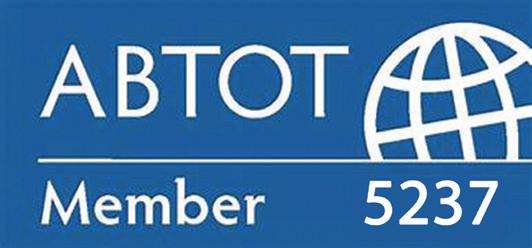
All the flights and flight inclusive holidays in this brochure are financially protected either by ABTOT or the ATOL scheme. When you pay for something protected by the ATOL scheme you will be supplied with an ATOL Certificate. Please ask for it and check to ensure that everything you booked (flights, hotels and other services) is listed on it. Please see our booking conditions for further information or for more information about financial protection and the ATOL Certificate go to: www.atol.org.uk/ATOLCertificate
ACE Cultural Tours is a member of the Association of Independent Tour Operators. To contact the Association, visit www.aito.co.uk or call 020 8744 9280. AITO is the Association for independent and specialist holiday companies. Our member companies, usually owner- managed, strive to create overseas holidays with high levels of professionalism and a shared concern for quality and personal service. The Association encourages the highest standards in all aspects of tour operating.
AITO sets criteria regarding ownership, finance and quality which must be satisfied before new companies are admitted to membership. All members are required to adhere to a Code of Business Practice which encourages high operational standards and conduct.
An AITO member is required to arrange financial protection for all holidays and other arrangements (including accommodation only) booked by customers with the member under the AITO logo. This financial protection applies to customers who are resident in the UK at the time of booking and to most overseas customers who have booked directly with the member. In doing so, the member must comply with UK Government regulations. Members are required to submit details of their financial protection arrangements to AITO on a regular basis.
All members do their utmost to ensure that all their brochures and other publications, print or electronic, clearly and accurately describe the holidays and services offered.
All members are committed to high standards of service and believe in regular and thorough training of employees. Members continually seek to review and improve their holidays. They listen to their customers and always welcome suggestions for improving standards.
AITO endeavours to monitor quality standards regularly. All customers should receive a postholiday questionnaire from their tour operator, the results of which are scrutinised by the Association. In addition, customers can leave detailed feedback, accessible from the homepage of this website, or via a direct link supplied by their AITO tour operator, about their holiday.
Our members acknowledge the importance of AITO’s Sustainable Tourism ethos, which recognises the social, economic and environmental responsibilities of tour operating.
All members endeavour to deal swiftly and fairly with any issues their customers may raise. In the unlikely event that a dispute between an AITO member and a customer cannot be settled amicably, either party can call on an arbitration service to bring the matter to a speedy and acceptable conclusion.



